

The Best Guide to Travel in Kazakhstan: 18 things you should know to visit Kazakhstan in 2024
This is the most complete and updated online guide to travel in Kazakhstan. If you find yourself fascinated by this vast, beautiful country and love unusual destinations , this travel guide will tell you everything you need to know to prepare you to visit Kazakhstan.
Kazakhstan , a former Soviet republic, is a Central Asian country that extends West from the Caspian Sea to the Altai Mountains in the East. It’s one of the few countries in the world that can still be considered an off-the-beaten-path destination.
Kazakhstan borders both Russia and China and is the 9th largest country in the world so there’s a lot for you to explore. The word Kazakhstan literally translates to ‘the Land of the Wanderers’.
From arid plains, endless steppes, and dusty desert villages where you’ll see more camels than people; to lush valleys, snow-capped mountains, and modern cities, travel in Kazakhstan will surprise you every step of the way.
This travel guide will provide you with useful and up-to-date travel information, tips, and recommendations to visit Kazakhstan.
Tip: See my Kazakhstan Travel Page for a complete overview of all my travel guides and blog posts about Kazakhstan!
Join the 10-day Best of Kyrgyzstan-Kazakhstan Adventure and visit Almaty, Charyn Canyon, Kolsai Lakes, Lake Kaindy, Karakol, Son Kul lake, and many more!
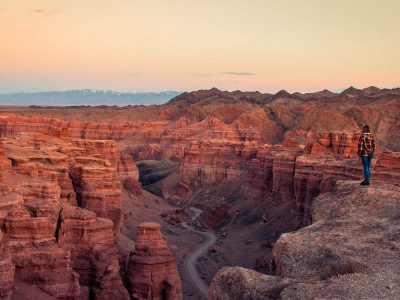
Disclaimer: This posts might contain affiliate links, meaning that if you make a purchase through these links, I may earn an affiliate commission. Thank you for helping to support this website!

Plan your trip to Kazakhstan
- 18 useful things you should know to visit Kazakhstan
- Itinerary Planning for Kazakhstan
- Tours & Experiences: City Tours, Adventure Tours
- Getting there: Search for flights to Almaty or Nur Sultan
- Where to stay : Find a hotel, hostel, guesthouse or homestay in Kazakhstan
- Travel Insurance: Choose the best travel insurance for Kazakhzstan
- Getting around : Rent a car in Kazakhstan or travel by train
TABLE OF CONTENTS
1. Visit Kazakhstan in 2024 – Kazakhstan Entry Requirements
As the world regains some kind of new ‘normal’ following the global pandemic, it’s really important that you do your research on the current regulations in place regarding Covid-19.
You may be wondering, ‘is Kazakhstan open for tourism?’ and the answer would be yes. The majority of Kazakhstan travel restrictions have been lifted and international flights into and out of the country have now resumed. All commercial flights to and from Kazakhstan are operating as normal too.
1.1 Kazakhstan entry Requirements COVID
Travelers arriving in Kazakhstan no longer need to present a negative PCR test result or proof of vaccination.
Almost all Covid restrictions have been lifted in Kazakhstan, except for medical facilities where face coverings must still be worn.
Upon taking your outgoing flight from Kazakhstan, you may be screened and have your temperature taken and assessed for any coronavirus symptoms. It’s still important that you check with your airline for the latest updated travel information.
1.2 Kazakhstan vaccination requirements
It is not compulsory to get any vaccinations in order to travel to Kazakhstan. You only need proof of a yellow fever vaccination if you’re arriving from a country where there’s a risk of yellow fever.

2. Do I need a visit to travel in Kazakhstan?
2.1 kazakhstan visa requirements.
There is a list of the countries eligible to visit Kazakhstan without a visa. If your country is on the list , you’ll get a free visa (in the form of a stamp and a registration card) on arrival at the airport or at any land border.
If your country is on this list , you’ll have to apply for a visa at the embassy where your residence is. The embassies are willing to make an exception if you don’t have an embassy in your home country. Find out what you need to apply for a visa for Kazakhstan here .
The Kazakhstan Tourist visa is valid for a single visit of up to 30 days, two visits of up to 30 days each within a 60-day period, or three visits of up to 30 days each within a 90-day period.
Your passport should be valid for a minimum period of six months beyond the expiry date of your visa. Your passport should also have at least 1 blank page for your visa.
When visiting Kazakhstan, no matter if arriving in the country at the airport or at a land border, all visitors must fill in a registration card . This card will then be stamped twice at passport control upon arrival, showing that you’re registered. If you only see one stamp, make sure you ask nicely for the second one.
You must then keep this registration card with you throughout your stay in Kazakhstan. If you don’t have this card with you when you leave the country, you will have to pay a fine or even face deportation.
Since 10 January 2020, it’s the responsibility of the host or hotel to register travelers. They have to do this within three working days from the date of the guest’s arrival in Kazakhstan and can be done on the Visa and Migration online portal or in writing to the Migration Service.
Travelers who need to obtain a Letter of Invitation (LOI) to visit Kazakhstan, must register with the Migration Police.
2.2 Can I extend my Kazakhstan visa?
It is no longer permitted to enter and re-enter visa-free as many times as you like, indefinitely.
Now all visa-free nationalities are only allowed a maximum of 90 days within 180 days of traveling in Kazakhstan . You can still leave and re-enter the same day. A tourist visa however can not be changed or extended once issued.
2.3 What happens if I overstay my Kazakhstan Visa?
If you happen to overstay your visa whilst in Kazakhstan, you’ll need to go to the nearest OVIR station and pay $4 for an extension and a B20 exit visa valid for up to 15 days.
Extensions are usually only granted for reasons such as flight cancellations or emergency medical care.

3. When is the best time to visit Kazakhstan?
Depending on what you want to do during your trip, you can visit Kazakhstan any time of the year. Kazakhstan has a continental climate with cold winters and hot summers and the temperature will vary depending on the region of the country.
The period between May – October is the best time to visit Kazakhstan, especially the northern region and the southeastern region. The temperatures are not too high to go hiking and camping in places like Charyn Canyon , the Kolsai Lakes and the Tian Shan mountains around Almaty as well as in the highlands of the Altai mountain range.

If you can cope with the heat, it’s also a good period to go on a road trip or a train trip through the steppes and visit other parts of the country .
Spring and Autumn each last for about a month every year: April and October in the south, and May and September in the north.
The temperature on average can be a pleasant 20°C which is ideal for sightseeing in the steppes and visiting the cities and areas in the south of the country.
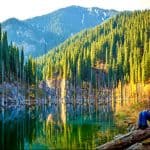
The 26 best and most beautiful places to visit in Kazakhstan

3.1 What is the hottest month in Kazakhstan?
The Summer in Kazakhstan is between late May and September and the hottest month is July. The summers in the south of the country and in the steppes can be scorching hot with temperatures known to reach 40°C (104°f).
4. Kazakhstan Travel Insurance
It’s not mandatory to have travel insurance if you are traveling to Kazakhstan. However, it’s always a good idea to have international travel insurance just in case the unforeseeable happens.
If you don’t have travel insurance yet, I highly recommend HeyMondo travel insurance as it covers both medical costs and theft or the budget-friendly travel medical insurance by SafetyWing .

The 3 best travel insurance companies compared!
5. What is the best way to get to Kazakhstan?
You can fly to Kazakhstan, enter by road via a border crossing, or by taking a cargo ship across the Caspian Sea .
5.1 Flying into Kazakhstan
There are many daily international flights to Kazakhstan.
There are the 3 main international airports in Kazakhstan: Almaty International Airport (ALA), Astana International Airport (TSE) and Shymkent International Airport (CIT).
5.2 How to travel to Kazakhstan by road
Kazakhstan shares borders with Russia, China, Kyrgyzstan , Uzbekistan , and Turkmenistan.
Are you planning to travel overland between the Central Asian countries? Then the following guides will come in handy:
- How to get from Almaty to Tashkent (Kazakhstan to Uzbekistan) by train or bus?
- How to get from Almaty to Bishkek (Kazakhstan to Kyrgyzstan) by bus?
- How to get from Bishkek to Almaty (Kyrgyzstan to Kazakhstan) by bus?
For information about the different border crossings, read this page on Caravanistan
5.3 How to travel to Kazakhstan By boat
I entered Kazakhstan by taking a cargo ship from Baku (Azerbaijan) to Aktau (port in West Kazakhstan) across the Caspian Sea.

8 things you need to know about how to cross the Caspian Sea from Baku to Aktau by ferry.

6. IS Kazakhstan a safe country to visit?
A lot of people are concerned about travel safety in Kazakhstan because of the ‘stan’ part. But I can assure you, it’s very safe to travel in this vast country!
Kazakhstan is not a country where you’ll see a lot of violence. The majority of the locals are very helpful and hospitable and the only way you might get hurt is from a bad hangover from drinking too much vodka.
Some people are concerned about travel safety in Kazakhstan, but it’s very safe to travel in this vast country. There are the normal risks of pickpockets and petty crime, and travelers are advised to be cautious of corrupt police. They are also advised to be cautious at night in and around clubs and bars. However, Kazakhstan is generally a very friendly country and foreigners are respected.
I have walked many times on the streets in Almaty and Shymkent alone at night as a woman and not once did I feel uncomfortable or unsafe. During our road trip through the steppes , I’ve never encountered a person who wanted to harm me and my friends in any way.

There’s not as much corruption in Kazakhstan as there used to be, but if you travel around the country with your own car, the traffic police might stop you and find a reason to fine you.
How do you deal with bribes and corruption? First of all, don’t panic, get angry or be impatient. Stay calm and friendly, keep smiling and act like you have all the time in the world.
Most officials only speak Russian so even if you understand the language a bit, pretend that you don’t. If the office happens to speak English, you suddenly can’t speak English anymore.
Talk to them in a foreign language, and pretend that you have no idea what’s going on. They’ll soon realize they aren’t going to get any money from you and that you’re wasting their time and will eventually give up and let you go.
Remember: never give in and pay a bribe. If you do, you’ll encourage the offices to continue doing this. This doesn’t only affect tourism and travelers in a bad way, it also affects the local people as they become victims of bribery as well.

Is Kazakhstan Safe? 15 useful tips to travel safely in Kazakhstan

7. Money and Currency in Kazakhstan
7.1 what kind of money do they use in kazakhstan.
The official currency of Kazakhstan is the Kazakhstani Tenge (KZT).
- Banknotes circulating in Kazakhstan: 500, 1000, 2000, 5000, 10,000 and 20,000 tenge.
- Coins circulating in Kazakhstan: 1, 2, 5, 10, 20, 50, 100 and 200 tenge.
I always use the Xe.com app to convert and stay up-to-date with the current exchange rates. At this time of writing, the current exchange rates are:
- $1 USD = 460 KZT
- €1 Euro = 494 KZT
- £1 British Pound = 585 KZT
7.2 Which credit cards are accepted in Kazakhstan?
Visa is probably the most widely accepted credit card. However, Kazakhstan has a cash economy which means paying with a credit card can be quite difficult in many places.
Many taxis, restaurants, local tour operators, and small shops will still only take cash, not cards. It’s only been over the last few years that credit card usage has been more widely accepted. So make sure you’re prepared to bring plenty of cash with you if you’re planning a trip.
7.3 ATMs in Kazakhstan
ATMs are very easy to find in the cities but make sure to bring cash money when you visit remote villages and regions. You can use Visa, Maestro, and Mastercard to withdraw cash from ATMs in Kazakhstan.
It’s also worth noting that withdrawing small amounts of cash from ATMs can be costly due to the charges by the credit card companies and the banks handling the transactions.
7.4 Exchanging money in Kazakhstan
There are plenty of exchange offices, especially in the big cities, if you want to exchange some of your currency.
Rates are competitive as soon as you leave the airport and an important tip once you have exchanged your cash into tenge is to hold onto your small change.
Your 10, 20, 50, and 100 tenge will be really handy and useful when paying for bus tickets and snacks, larger notes won’t be accepted in small shops.
7.5 How much money do you need in Kazakhstan?
You may be wondering about how to budget for your trip and asking ‘Is it cheap to travel in Kazakhstan?’. Like most of Central Asia, travel in Kazakhstan is relatively cheap.
A good meal will cost around $5 in a local restaurant, a dorm bed in a hostel for around $10, and a train ticket around $15 every 1000km or so.
Tourism is still pretty new In Kazakhstan but with more visitors coming each year, more services are being offered which means that tours and activities are still relatively cheap.
7.6 Should you tip in Kazakhstan?
Tipping is not compulsory in Kazakhstan because a service charge is usually included in restaurant and hotel bills.
However, it is becoming a more common practice based on the growing number of tourists. Taxis and train travel have a fixed charge already included in the price.
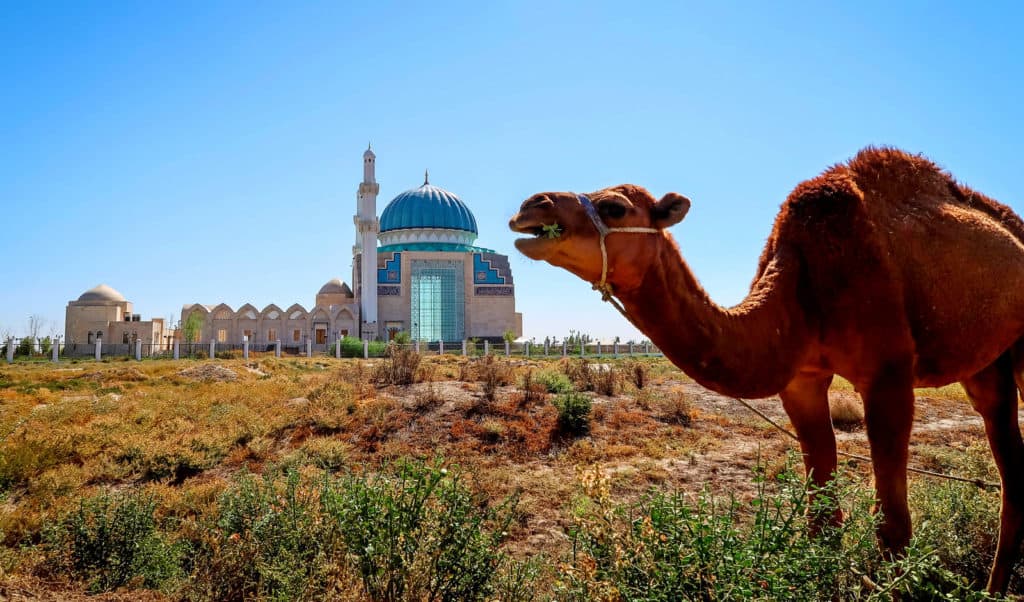
8. Kazakhstan transportation: How to Get around Kazakhstan
8.1 does kazakhstan have good transportation.
The public transport in Kazakhstan is quite well developed. You can get around Kazakhstan by train, bus, mashrutka (min-bus), (shared) taxi, and plane.
8.2 Are there trains in Kazakhstan?
Yes, Kazakhstan has a rather good railway system. As it’s a huge country and the easiest and most comfortable way of getting around Kazakhstan is by taking a train.
Not only is it a cheap way to travel long distances, but there are also regular connections between all of the main cities and towns and you’ll meet many locals along the way.
It’s better to buy your tickets in advance as they tend to sell out during the summer and on holidays. You can book your train tickets on tickets.kz where you can select your seat/bunk bed in advance.
If you’re going on an overnight journey you will get sheets, a pillow, and a blanket. Bring enough food and drinks with you as the food prices on the train are very expensive. It’s also forbidden to drink alcohol on the train.

Kazakhstan Railway Guide: How to travel by train in Kazakhstan
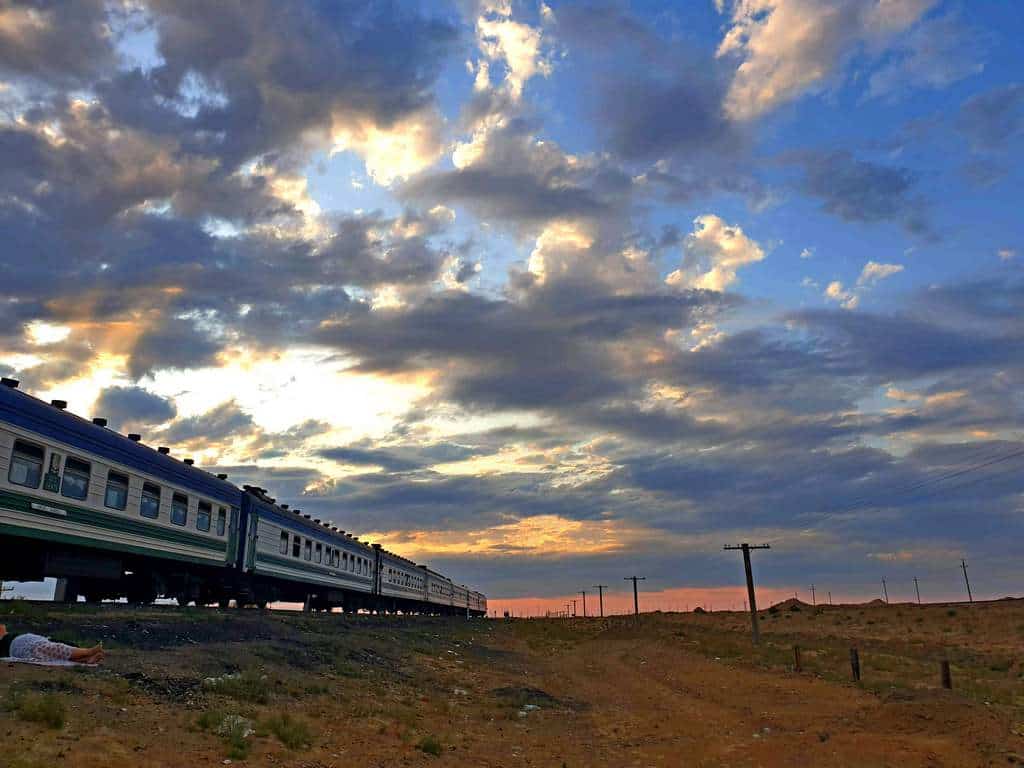
8.3 Getting around Kazakhstan by bus
Buses are great for travel within cities like Almaty , Shymkent and Nur Sultan for short and quick journeys.
The average price for a bus ticket in Almaty is around 200 tenge, which you pay to the driver when you get onto the bus. Don’t forget to ask for a receipt so you can show it to the ticket inspector when he/she comes around.
Every bus has a number and it can sometimes be confusing trying to find out which one to take. You can ask your hostel or hotel which number you need to get on or you check the bus routes within cities via maps.me and wikiroutes .
Just type in the name of your location and destination and the app will show you the number of the bus going there.
For longer journeys and travel in Kazakhstan, I would recommend taking the train for reasons regarding both cost and comfort.
8.4 Getting around Kazakhstan by minibus (marshrutka)
A marshrutka is a mini-bus that looks like a van and is a popular public transport for the locals. It’s not the fastest way to get around but it’s definitely a cultural experience.
They run on fixed routes around a city and you’ll also see many marshrutkas within smaller cities and towns. When taking a marshrutka in a city, each marshrutka has a number, and to avoid any confusement, you can either ask at your hostel or hotel which number to get on or you can download the app called Maps.me .
Just type in the name of your location and destination and the app will show you the marshrutka going there.

8.5 Getting around by (shared) taxi
Taking a shared taxi is more expensive than a bus or a marshrutka (about triple the price) but it is a much faster way to get around in a city. Sharing a taxi means that you share the car with other people and you split the costs so you pay per seat.
As it is a shared taxi, with many seats, it’s important that you tell the driver that you only wish to pay for one seat, not for the entire taxi before leaving. They leave when all of the seats have been filled. You’ll find these taxis everywhere in the cities and near bus and train stations.
You’ll often see locals waving down cars on the side of the road. The drivers that stop for them are often unofficial taxi drivers who earn a bit of extra money by giving locals a ride and charging them for the gas costs. If you want to catch a ride like this, it’s good to know in advance how much you should pay (some drivers like to charge foreigners more).
If you want to take a taxi in a city but you don’t feel confident waving down cars and/or bargaining for a good price, you can always use the Yandex Go app . This app works similar to Uber and these taxis work with a standard rate per kilometer which you can see on the app or on the meter inside the taxi.
8.6 Domestic flights in Kazakhstan
If you don’t have much time to make a long-distance journey by train, you could always take an airplane to fly between the main cities in Kazakhstan. You can book your tickets on this website .
8.7 Hitchhiking in Kazakhstan
Hitchhiking in Kazakhstan is similar to hitchhiking in Kyrgyzstan . Although you’ll see a lot of people standing on the side of the road waving down cars as a sign that they want to get a lift, it’s standard to pay the driver for the costs of the petrol.
If you’re after getting free rides, you’ll have to explain this to your driver before you get in the car.
If you’re hitchhiking long distances in Kazakhstan, you’ll often have to travel across the steppes and desert. Make sure you bring enough water and food in case you’re stuck without a ride in the middle of nowhere!

8.7 Driving in Kazakhstan
Going on a road trip in Kaz akhstan is definitely a worthwhile adventure. It’s a brilliant way to explore this vast country at your own rhythm.
As long as you’re an experienced and confident driver, renting a car gives you the opportunity to reach far and remote places. Since many of the country’s attractions are difficult to reach on public transport, hiring a car gives you the freedom to explore places off of the beaten path.

The state of the roads is generally good if you are driving along the main highways. If you want to drive across the steppes or on secondary roads, you can expect dusty tracks and countless potholes, so take care!

There are a few ‘must haves’ when hiring a car that is important to take note of before you set off on a road trip.
You’ll need an international driving license and proof that you have insurance. You will also need to have the vehicle’s ownership documents with you as most likely, you will meet traffic cops along the way.
If you are driving your own car with a foreign registration plate, you will probably be stopped a few times. As long as you haven’t broken any traffic law, you won’t be fined (see how to deal with bribes in section 6. Is Kazakhstan safe ).
You have to drive on the right side of the road in Kazakhstan and crossing a solid white line is a big no-no. Another traffic law that you should keep in mind is that your car lights must always be switched on when you’re outside of a city. Here’s a great guide with info about driving and traffic rules in Kazakhstan here.
There are several petrol stations along the way but make sure you have enough petrol in the car to drive a distance of a minimum of 300km before you come across the next petrol station. A good tip is to bring a spare jerry can for fuel if you’re planning on driving long distances.
And lastly, be aware that whilst on the road, some Kazakh drivers love to push the gas pedal and overtake other cars in the craziest ways!
Going on a road trip through Kazakhstan is definitely worthwhile as long as you’re an experienced and confident driver! You’ll be able to reach very remote places and camp under the stars!

Almaty City Guide: The 19 best things to do in Almaty
9. Kazakhstan Tours
With more tourists choosing to travel to Kazakhstan, tourism in Kazakhstan is developing slowly.
Because of this growth in tourists, there are more tour companies now than ever before meaning that there are more scheduled tours for you to choose from.
Going on a tour is particularly interesting to get to remote destinations like Charyn Canyon , Kolsai Lakes and Lake Kaindy , Altyn-Emel National Park , etc., as they are hard to reach by public transport.
You can search online for tours in Kazakhstan , organized by local tour companies or you can join my 10-day Best of Kazakhstan-Kyrgyzstan Adventure Tour!
10. Where to stay in Kazakhstan
There are now many great accommodation options in the big cities and towns of Kazakhstan.
10.1 Hostels, hotels, and guesthouses in Kazakhstan
Hostels are the cheapest option for accommodation, starting from $5 per night for a bed in a dorm.
Most of the country’s cities now have at least 1 modern backpacker haunt, Almaty has more than 20 now. These hostels are often located in refurbished apartments in the center of town and run by young people themselves. Hostels in Kazakhstan are a good place to meet other young, budget-conscious travelers.
You can find a nice private room in a guesthouse, starting from $15 per night .
Nur-Sultan and Almaty have many great hotel options ($40-$250) for luxury and business travelers, and there are also plenty of apartment rentals ($15-$50).
10.2 Staying in a yurt in Kazakhstan
Unlike in its neighboring country Kyrgyzstan , it is difficult nowadays to experience real nomadic life in Kazakhstan.
Most Kazakhs have never even slept in a yurt themselves as there are only a few people who still spend time living in a yurt during summer, either herding camels in the Kyzylkum desert, or whilst shepherding in the Altai mountains.
If you happen to have your heart set on staying in one, it is possible through a holiday rental company or you can pay a visit to a pop-up restaurant or shop/market in a yurt but they are no longer homes for nomadic people in Kazakhstan.

10.3 Camping in Kazakhstan
There aren’t many designated camping sites in the country but wild camping in Kazakhstan is permitted anywhere.
If you can, you should definitely experience camping for at least one night in the steppes ( watch this video to get inspired ). It’s an incredibly unforgettable experience! There are so many scenic spots to spend a night under the stars.
It’s important to note that there are some dangers to watch for when it comes to camping. Bears and wolves roam in the wild in Kazakhstan and ticks are very common, especially in the mountains.
There are also some snakes, spiders, and scorpions in the dryer landscapes, and although they shouldn’t stop you from camping in Kazakhstan, it’s wise to be mindful of these creatures when traveling in Kazakhstan.

11. Kazakhstan Food and drinks
The cuisine in Kazakhstan is quite similar to the food in both Kyrgyzst an and Uzbekistan .
The majority of meals consist of beef, mutton, and chicken, either served within dumplings or on top of noodles, rice, or potatoes. However, if you happen to be feeling adventurous, you could try the canned camel or horse meat.
When eating out, food is generally served with either a soft drink or water. Kazakhs love drinking tea and most meals are followed by tea with milk, salt, sugar, and/or butter.
If you happen to be a coffee lover, instant coffee is usually your main option but coffee culture is now rapidly establishing itself nationwide.
11.1 5 Kazakh Dishes you have to try
1) what is the national dish of kazakhstan.
Beshbarmak is Kazakhstan’s national dish which is eaten daily in homes throughout the country. It is a slow-cooked dish made with boiled mutton, beef, horse or camel, and it is served with either boiled or flat dumplings or thin noodles, and onions.
This dish is usually eaten with your hands which explains its name which translates to ‘five fingers.’ Traditionally, the meat is served in small portions to make sure that the male elders can chew it without difficulty.

Pilaf , also known as plov, is a rice dish that is considered to be a sign of wealth and prosperity in Kazakhstan. The dish contains meat that’s cooked together with onions and carrots and then rice is then added and once plated, the dish is then decorated with dried fruits.
Pilaf is very commonly a centerpiece when celebrating occasions that are meant to bring success and happiness, like weddings.

Kazy is a type of sausage made from horse meat along with a mix of spices. The ancestors of modern Kazakhs, who were hunters, consumed large quantities of horsemeat.
They created kazy as they thought it was a clever way in which to preserve meat. It is considered to be an obligatory dish at weddings.
Manti are dumplings that have been stuffed with meat and then boiled are served with dried mint. If you decide to try Kazakhstani manti, be ready to say goodbye to your voice of reason as these are delicious.

Baursak is a type of soft dough made using wheat flour that has been fried in either lamb or beef fat. Different regions in Kazakhstan are known for different-sized baursak. Kazakhstanis love them so much that they celebrate a day dedicated to them called ‘Baursak Day’ every Autumn.
They are normally rounded or diamond-shaped with some recipes incorporating cottage cheese into the dough. Often served with either tea, shurpa (a traditional soup) or as an appetizer or dessert.

11.2 Is vegetarian food available in Kazakhstan?
It might be challenging for vegetarians to find some typical Kazakh dishes without meat. However, it’s not impossible and you can definitely ask for meals to be made without meat.
In cities like Astana, Almaty, and Shymkent you’ll find many small restaurants that serve vegetarian meals.
If you happen to be traveling during summer, you’ll find your dose of vitamins in a wide variety of fruits and vegetables from the markets in the towns and cities.
However, when in the steppes, you won’t find many options when looking for fresh fruits and veggies so be sure to take some with you if you can.
11.3 What is the national drink of Kazakhstan?
Kazakhstan’s national drink is fermented horse (mare’s) milk known as Kumys or Koumiss. A drink that’s been around for thousands of years, this bitter and sour-tasting milk drink is made with yeast cultures and mare or camel milk (known as shubat) and is believed to be medicinal.
It is slightly alcoholic and said that drinking kumys will improve your overall health, make your soul younger and your feet stronger.
Traditionally made by the nomads of Central Asia, this drink still remains important to people in both Kazakhstan and Kyrgyzstan today.
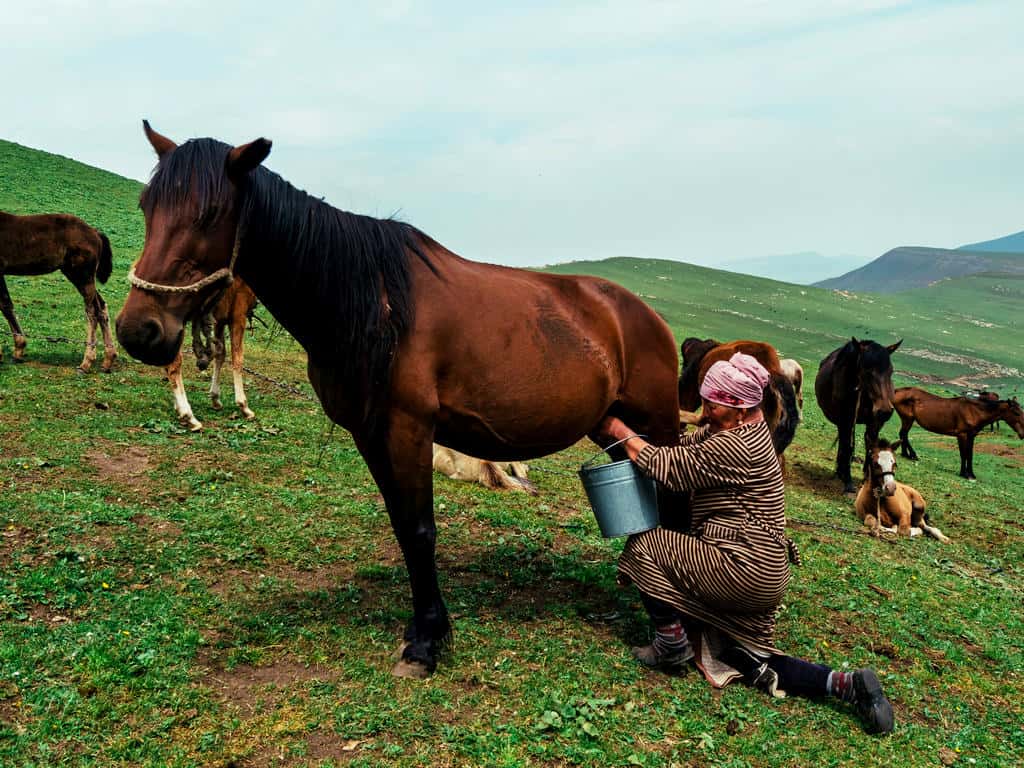
11.4 Alcohol in Kazakhstan
Although the majority of people in Kazakhstan are Muslim, vodka is still a popular drink. Kazakhstan is the world’s seventh-biggest consumer of vodka.
It is customary that young people do not drink alcohol in front of elderly people. The legal drinking and buying age for alcoholic beverages is 21 years old.
11.5 Is tap water safe to drink in Kazakhstan?
I wouldn’t advise you to drink the tap water in Kazakhstan, especially not in small towns and villages. Buy bottles of water in the local supermarkets or better, bring a LifeStraw Water Filter Bottle .
This is a reusable bottle that filters water using a microfiltration device. When you drink water using this bottle, any dirt, bacteria, or parasites will be trapped in the fibers of the filter, while the clean water passes through.
It’s not only good for your belly and wallet, but it’s also great for the environment because you don’t have to buy any plastic bottles of water!
They are very light to carry and super useful for when you go trekking in the mountains . You can use it to drink the water from the rivers and lakes without becoming sick! Another way to filter water is by using a steripen .
12. Packing list for Kazakhstan
12.1 what should i wear in kazakhstan.
The cities in Kazakhstan are very westernized so for the majority of the time, you can wear whatever you like.
However, if you’re planning on visiting rural areas, don’t wear miniskirts, short shorts and revealing tops as most people living there are quite conservative. Also, if you are visiting religious buildings and places, such as Turkestan, wear a long skirt or trousers as well as cover your shoulders.

You should also pack appropriate clothes for the period in which you’re going to travel in Kazakhstan and the type of activities you’re planning on doing.
In winter (November – March) you should always bring warm clothes, a down jacket , a hat, a scarf, thermal underwear , warm boots and maybe a few lighter clothes for the mild days in the southern regions.
The summer (June – September) can be very hot, especially in the southern part of the country so bring light clothes.
If you’re planning on hiking and camping in the mountains around Almaty during the summer, you should also bring warm clothes as the temperature at night can still drop to 0°C.

The Complete Packing List for Traveling and Trekking in Central Asia
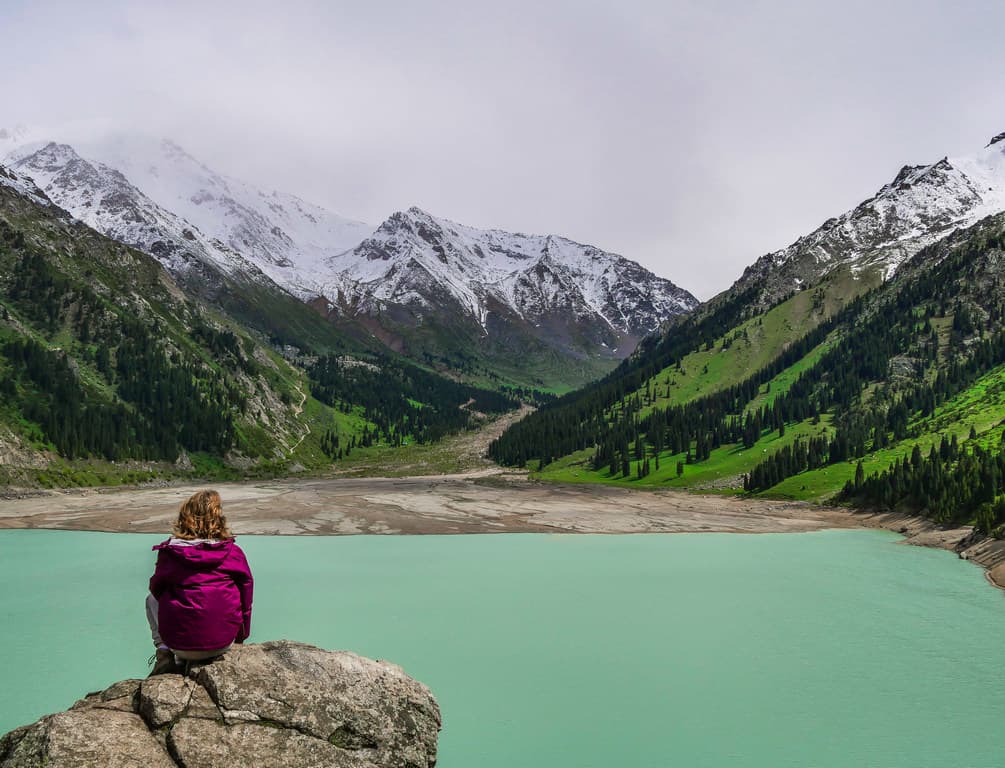
12.2 Travel essentials for Kazakhstan
There are a few items that I would class as essential when traveling in Kazakhstan:
- Water Filter Bottle : I highly recommend bringing a reusable bottle with a microfiltration device (see 11.5 Is it safe to drink the water in Kazakhstan?) . I use and highly recommend the Lifestraw Water Filter Bottle . Another way to filter water is by using a steripen .
- Portable power bank : you won’t always have electricity available to charge your electronic devices, especially not when you’re planning on spending time in the mountains or in the steppes. I use and recommend Anker Power Bank as it has a 20,000mAh cell capacity providing at least 5 full charges for my phone. I can even charge my camera batteries with it!
- International travel adaptor : the power sockets in Kazakhstan are of type C and F (the same as in Europe). The standard voltage is 220 V and the standard frequency is 50 Hz. In case you need an adaptor, I use and recommend this all-in-one Universal Travel Adaptor as you can use it worldwide.
- Biodegradable toilet paper : you’ll have to be comfortable using a squat toilet in Kazakhstan. With the exception of the guesthouses where you’ll have a western-style toilet, most toilets will be outside in the form of a separate small building with a hole in the ground. Sometimes there’s toilet paper but you should definitely bring biodegradable toilet paper with you. I mention biodegradable as the toilet paper disappears in the ground so we can keep it environment-friendly!
- The same goes for biodegradable wet wipes . Some homestays don’t have showers so wet wipes are very handy if you want to refresh.
- Immodium (or any other anti-diarrhea medicine) : a lot of the travelers eventually suffer from diarrhea at one point or another throughout their first trip to Kazakhstan. As prevention, I use activated charcoal (it helps your body get rid of toxins and unwanted substances, ask about it in your local pharmacy).
- a head torch
- a good pair of walking boots
- appropriate clothing depending on the time of year and planned activities
- a good day backpack for walking and hiking
- sun protection (a hat/headscarf/sunscreen)
- passport and a copy of your passport and any other relevant documents
- a copy of your travel insurance policy number written down somewhere

13. Are drones allowed in Kazakhstan?
According to KAA, drones are allowed in Kazakhstan, subject to AAK regulations .
You must register your drone and gain a license for using it whilst in Kazakhstan. If you do not get a license, you could face a fine, detention, or your drone could be confiscated .
You can get a license from the Aviation Committee in Nur-Sultan and there are certain rules you must follow when operating your drone whilst in the country.

What’s in my camera bag: photography essentials for travel photography
14. How is the internet in Kazakhstan?
Kazakhstan is not a place to head to if you depend on the internet for work. Access to a fast-speed WiFi connection is rare and many websites have been blocked by the government.
In January 2022, there were nationwide anti-government protests in Kazakhstan. Some of these protests turned violent and in order to regain control, the government intentionally shut down the internet across the entire country for five days.
This was permitted due to a law that came into place in 2012, regarding national security in Kazakhstan. This law states that the government can disrupt communication channels for the containment of riots.
14.1 Which is the best sim card in Kazakhstan and how to get one?
The Beeline KZ card is a great SIM card to buy whilst in Kazakhstan and you can pick it up in any local shop.
It will give you enough coverage to update your Instagram feed or call your mum on What’s App and tell her that you’re doing fine.
14.2 REcommended apps for traveling in Kazakhstan
- M aps.Me : This is one of the most practical apps you could use in Kazakhstan. You can download the map of the country so you can use it offline. It gives you very accurate directions and shows you where you can find the nearest restaurants, bus stations, ATM, hotels, places with wi-fi, points of interest, etc. It also tells you the number of the marshrutka you need to take when you travel within a particular city. This is also a great app to use while hiking as it shows most of the trails.
- 2GIS : This is very similar to Maps.Me but only works for big cities such as Almaty, Shymkent, and Astana. You can download the map of the city for offline use. This app only works in Russian but it’s the most popular and accurate navigation app in Central Asia.
- Booking.com : You’ll need internet to use this app but it’s a great tool to find (last-minute) accommodation in the country.
- Google Translate: Translates written and spoken Russian or Kyrgyz. Only Russian is available to download for offline usage.
- Xe currency: very handy to check exchange rates, also works offline.
- iOverlander: Great app for when you go on a road trip. This app serves as a database of places for overlanders. It includes information about (free) camping sites, restaurants, mechanics, petrol stations, water sources,…
- Yandex Go : Great app to use if you want to take a taxi in the major cities without getting ripped off. All the Yandex taxis have a meter so you’ll always know how much to pay. It works similarly to Uber. Just enter your location and a taxi will arrive within 5 to 10 minutes.

15. Culture and etiquette in Kazakhstan
The Kazakh people are descendants of ancient Turkic nomadic tribes and used to travel along the Kazakh steppes for centuries. Their culture was very similar to the nomadic culture that we can still see in Kyrgyzstan today.
The word “Kazakh” means “a free and independent nomad” in Turkic. However, their way of life has changed dramatically over the past century.
When Kazakhstan was still a republic of the former USSR, it rapidly developed its agricultural and industrial sectors because of its massive oil and gas reserve. The majority of the Kazakh people left their nomadic lifestyle and moved to the cities to work. Unlike in its neighboring country Kyrgyzstan, it’s nowadays very difficult to experience the nomadic culture in Kazakhstan.
Many people from other USSR republics were sent to Kazakhstan to work in the industrial sector. That’s why Kazakhstan became a multinational state inhabited by 17.8 million people belonging to more than 120 nationalities !
Kazakhstan is doing economically very well, better than any other country in Central Asia and when you visit a city like Nur Sultan and Almaty, you can tell that there’s money in the country!
It’s therefore important to tell you that the people of all ethnic groups living in Kazakhstan are called Kazakhstani . Only the people of the Kazakh ethnic group are called Kazakhs and they are becoming a minority in their own land!
The Kazakh are extremely hospitable people. In ancient times, there was an unofficial law that said ‘ Meet a guest as God’s messenger’ and hospitality is seen as a type of sacred duty.
If you are invited to someone’s home, it is customary to be served tea and bread even if you have not been invited for a meal. The serving of bread is seen as a sign of respect in Kazakhstan culture. Meals tend to take a long time as they are seen as social events.
It is common to greet people with a handshake using both hands. The majority of rules and social etiquette circle around the country’s Muslim faith and nomadic traditions.
If you want to learn about the Kazakh people and their traditions, you should go on a road trip and visit the small villages in the steppes. Most people there still live and work as shepherds. But you’ll see that their culture has become a mix of Kazakh and Russian traditions.

16. What is the Religion in Kazakhstan
The vast majority of the Kazakh people are Muslims, but the Islamic religion came late to the area.
The practice of the religion differs from region to region and is in general not so strict. You won’t see many women wearing a hijab and the majority of the men won’t say no to a good shot of vodka.

17. Do people in Kazakhstan speak English?
In the cities and more tourist areas, you will find more and more people who know and understand English.
However, it’s mostly the younger generation who seem to know more, with the percentage growing since the fall of the Soviet Union.
If you want to talk to the locals, it would serve you to learn some Russian. A Russian phrasebook would definitely come in handy.
17.1 Which languages are spoken in Kazakhstan?
The official languages of Kazakhstan are Kazakh and Russian. Only 64.4% of the population speaks Kazakh while Russian is spoken by almost everyone.
You’ll notice that the people living in the Almaty region and northern areas are predominantly Russian speakers. If you want to be able to communicate with the locals, I’d suggest you learn some Russian.
l study Russian by using the audio classes of Pimsleur . This is a great learning method to study a new language.
A phrasebook will definitely be useful. I recommend both the Lonely Planet Central Asia Phrasebook and the Lonely Planet Russian Phrasebook & Dictionary . I also recommend installing the Google Translate app and downloading the Russian language pack for offline use.
18. Recommended books about Kazakhstan
I recommend the following books and guides for traveling in Kazakhstan:
- Kazakhstan Bradt Travel Guide is one of the most comprehensive travel guide books about Kazakhstan.
- Kazakhstan – Culture Smart! offers an insider’s view of Kazakhstan’s fascinating history, national traditions, various cuisines, and cultural scene.
- Lonely Planet Central Asia is ideal if you’re also planning on visiting other destinations in Central Asia
- Apples Are from Kazakhstan: The Land that Disappeared is Christopher Robbins’ both hilarious and grim travelogue of his travels in Kazakhstan. He finds Eminem-worship by the shrinking Aral Sea, hears the Kazakh John Lennon play in a dusty desert town, joins nomads hunting eagles, eats boiled sheep’s head (a delicacy), and explores some of the most beautiful, unspoiled places on earth.
- Dark Shadows: Inside the Secret World of Kazakhstan is a compelling portrait of Kazakhstan by journalist Joanna Lillis. This book explores how a president, Nursultan Nazarbayev, transformed himself into a potentate and the economically-struggling state he inherited at the fall of the USSR into a swaggering 21st-century monocracy.

I wish you such wonderful and fantastic adventures in Kazakhstan! If you still have questions about your upcoming journey, let me know in the comments below, or don’t hesitate to send me an email . I would love to help you plan your visit to Kazakhstan.
Related Posts

Best Tips and complete Packing List for Traveling in Central Asia in 2024 – When to go and what to wear when visiting Central Asia

How to visit Turkistan Kazakhstan’s spiritual and historical center
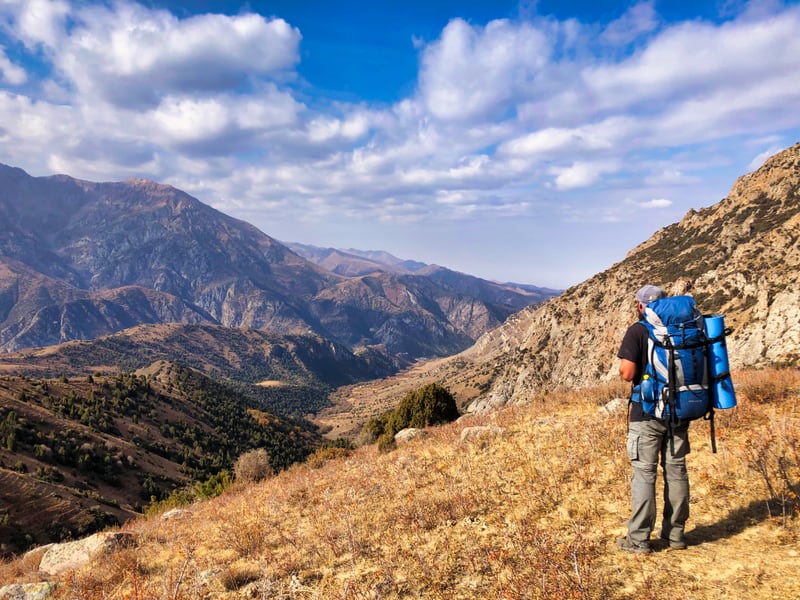
The Complete Hiking Guide to Sayram Ugam National Park, one of the most beautiful Kazakhstan National Parks
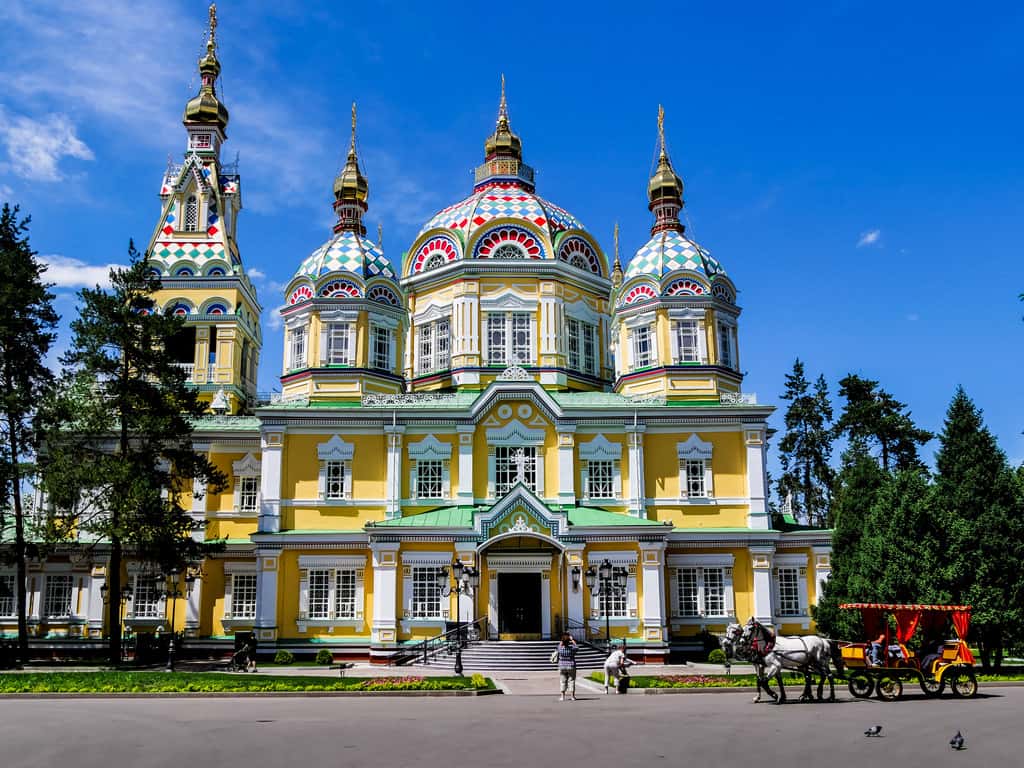
19 Best Things to do in Almaty Kazakhstan – The Complete Guide to visit Almaty City
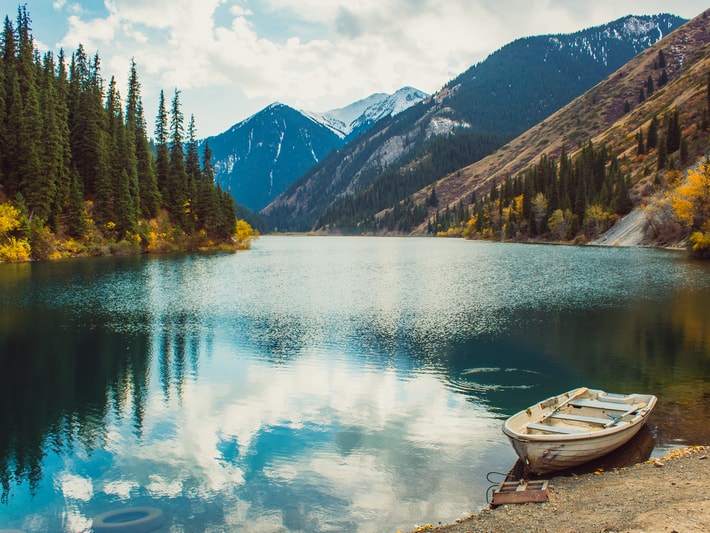
How to visit the Kolsai Lakes and Lake Kaindy, The most beautiful lakes in Kazakhstan
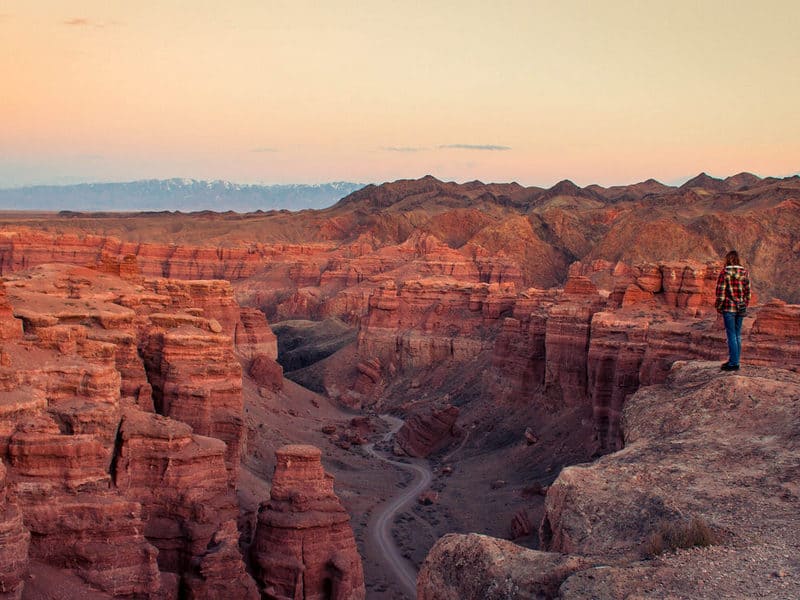
Blown away by the beauty of Charyn Canyon – The Complete Travel Guide
More kazakhstan travel resources:.
- The Travel Guide to Kazakhstan: 18 things you should know before you go
- The 26 most beautiful and interesting places to visit in Kazakhstan
- Is it safe to travel to Kazakhstan: 15 useful safety tips
- Almaty City Guide: The 19 best things to do in Almaty
- The 5 best and most beautiful hikes in the mountains near Almaty
- Charyn Canyon Travel Guide
- Kolsai Lakes and Lake Kaindy Travel Guide
- Sayram Ugam National Park Travel Guide
- Turkestan Travel Guide: discover the spiritual center of Kazakhstan
- Visiting the ship graveyard of the Aral Sea in Kazakhstan
- Trekking in Kazakhstan: 5-day hiking itinerary in the Northern Tian Shan Mountains
- A beginner’s guide to skiing in Shymbulak, Almaty
12 thoughts on “The Best Guide to Travel in Kazakhstan: 18 things you should know to visit Kazakhstan in 2024”
A very useful & comprehensive write up. I loved your style of narration. Thanks for this!
Very useful and comprehensive information
Excellent informative article…
Hi. I want to thank you for good article. I hope you liked Kazakhstan. I would like to add a few comments: You wrote, “Despite being a Muslim country …” Kazakhstan is not a Muslim country, it is a secular state. I know that many people confuse Turkic and Turkish. The word “Kazakh” means “free and independent nomad” in Turkic (non-Turkish). The Kazakh people are a descendant of the ancient Turkic nomadic tribes. Thank you!
Hello Kamshat, thank you! We really enjoy traveling in Kazakhstan 🙂 And thank you for your feedback, I’ve adjusted it in the text! Much appreciated!
Hi! Great article and very useful! Just few comments: Kazakhstan is not Muslim country, even though its true that majority of people are Muslims; Kazakhs are not becoming minority in Kazakhstan, we (Kazakhs) represent almost 70% of the Kazakhstan’s population; there are more than 3 international airports in Kazakhstan (minimum 10).
Hi Zhuldyz, thanks for your comments. I’ve re-read this article and can’t see where I wrote that Kazakhstan is a Muslim country. I mention that the majority of the people are Muslims. I’ve talked with people in Kazakhstan and read several reports on the population of Kazakhstan that tell that the Kazakh ethnic group is becoming a minority. With this I don’t mean the Kazakhstani people. And there are indeed more international airports in Kazakhstan, I’ve just mentioned that those are the 3 main ones 🙂
Cheers to that ability to share your inner-riches got a good tip. nice website I will bookmark this. I like these type of article which enhances my vocabulary keep it up ill be looking forward to your next articles.
Leave a Comment Cancel Reply
Your email address will not be published. Required fields are marked *
Save my name, email, and website in this browser for the next time I comment.
Kazakhstan Travel Guide
Updated March 2024, The Kazakhstan Travel Guide was originally written in February 2020
No matter what type of traveler you are Kazakhstan probably has something for you, from awesome city breaks (especially so with new direct flights to Almaty and Astana from Europe), treks ranging from an hour to several days deep into the Tien Shan, the world’s largest cosmodrome, wind-blown steppe, craggy canyons, beautiful glacier lakes, arid rainbow mountains, and even a few ski resorts. In this Kazakhstan travel guide, you’ll learn everything to plan your very own trip, from the best things to do in Kazakhstan, where to visit, tips, how to get around, and more.
Need Travel Insurance and Evacuation Services for Kazakhstan?
Start shopping for travel insurance plans over at IATI Insurance . Readers of the Adventures of Nicole get a 5% discount off your plan.
The Adventures of Nicole partners with Global Rescue to offer the world’s leading medical evacuation and security advisory services. To travel with peace of mind, shop evacuation coverage at Global Rescue .
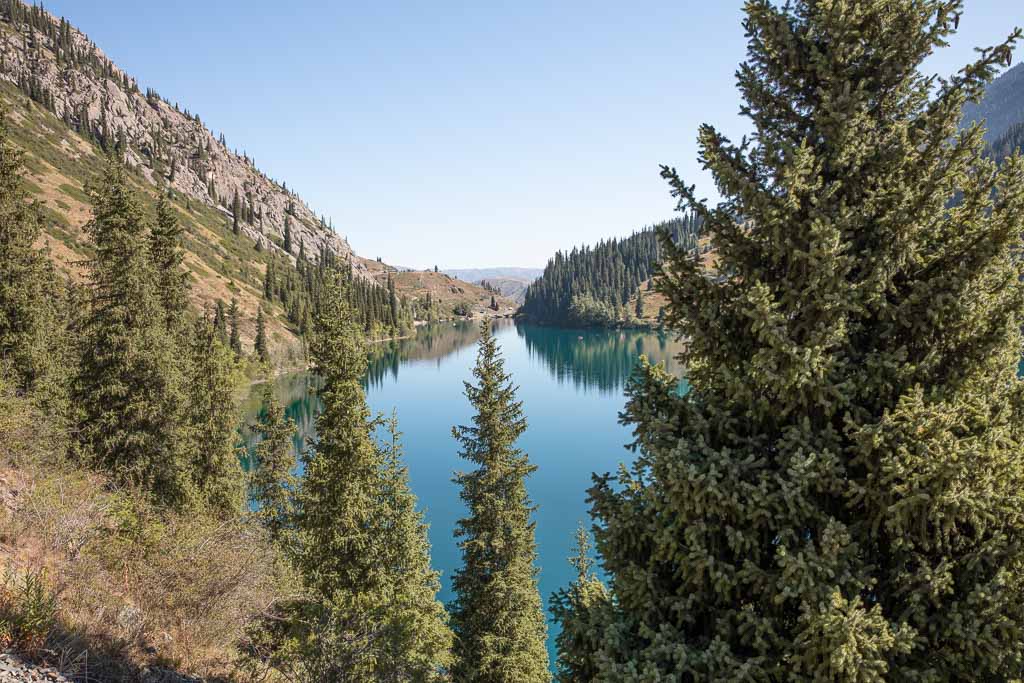
Quick Kazakhstan Info
The currency in Kazakhstan is the Kazakh Tenge. The exchange rate as of March 2024 is $1 USD = 450 KZT . You can find ATMs and money exchangers in most major towns and cities.
Kazakhstan is largely bilingual with Kazakh and Russian being the main languages spoken in the country. I’d advise learning some basic phrases in either before arriving, but know that English has been growing in popularity.
What To Wear
In cities in Kazakhstan, you’ll see people dressing similarly to many other major cities in the world. Some people would describe the outfits as Russian-style.
Outside cities in villages and small towns you’ll see that people, especially the women tend to dress more traditionally with longer dresses with trousers, long sleeves are quite common. It’s best to err more on the conservative side outside cities to avoid stares and glares. For women that mostly means just covering knees and shoulders at least. Men tend to wear T-shirts or button-downs with trousers.
Kazakhstan has a pretty brutal winter owing to the country being comprised largely of steppe. The best times to visit largely depend on what your interests are.
For hiking and trekking, the summer months of July and August are best, though still pretty good in September and even into early October. Spring and fall April-May and September-October are best for the more arid sites like Charyn Canyon and Altyn Emel National Park that are uncomfortably hot in the summer.
Most would tell you winter should be largely avoided owing to frigid temperatures, but Kazakhstan is home to a few ski resorts.

How Long To Visit
Kazakhstan is a huge country. In fact, Kazakhstan is the 9th largest country on earth, which makes planning for it a bit intimidating. With all that said, Kazakhstan is quite sparse.
In 3-4 weeks you can visit most of the major stops in the country, but you’ll need to keep up a decent pace. In about 10 days you can tick off most of the highlights surrounding Almaty in southeastern Kazakhstan.
Kazakhstan Visas
Many nationalities are eligible for visa-free entry to Kazakhstan for 30 days. A single entry e-visa is available for several nationalities.
Going to Kyrgyzstan too? Check out my two week Kazakhstan & Kyrgyzstan itinerary
Getting There & Around
The most common entry points are Almaty and Nur Sultan (formerly Astana) international airports that are well connected with a number of destinations in Asia and Europe.
Other common entry points are the Kordoi Border Crossing between Bishkek and Almaty (though it is closed at the moment due to renovation and traffic is being diverted to nearby Ak Tilek), the Navoi-Kaplanbek and Chernayevka-Jipek Joli crossings that connect Tashkent and Shymkent.
There are several border crossings with China and Russia.
Getting around in Kazakhstan is mostly done by shared taxi, marshrutka (minibus), and train. For large distances like Almaty to Astana many people may opt to fly to save time.

Kazakh Food & Cuisine
Kazakh cuisine has a lot in common with its neighboring Central Asian nations. Kazakh and Kyrgyz traditional food I find to be the most similar owing to both groups’ nomadic tendencies and meat-heavy diet.
Much like the other post-Soviet ‘stans Kazakh cuisine has quite a bit of Russian influence. Dishes to try in Kazakhstan are:
Beshbarmak: Beshbarmak is a staple traditional dish that dates back centuries among Kazakh nomads. It translates out to ‘five fingers’ because it is meant to be eaten with your hand. The dish consists of handmade noodles, boiled meat (usually mutton), and onions. This is the closest thing to a national dish in Kazakhstan. I’ll admit that it’s not my favorite dish as I’m not a connoisseur of boiled meats, but then again it’s not the worst thing I’ve eaten either.
Baursok: These fried little chunks of dough are common appetizers in Kazakhstan and Kyrgyzstan. Baursok are typically served with kaymak as a dip, a thick cream.
Non: Non literally means bread, and you’ll find beautiful wheels of non at bazaars around the country. Non is served with pretty much every meal.
Chai: Much like non, chai is impossible to avoid as it’s served with nearly every meal. You’ll almost always be asked chorny (black) or zelony (green)? before it’s prepared.
Qazi: Qazi is a sausage of horse meat, in which a slice may accompany your beshbarmak, plov, or other common main meals on special occasions. I quite like Qazi, but many foreigners I have found turn up their noses at the idea of eating horse. A great place to sample Qazi is at the Green Bazaar in Almaty- there’s a smoke horse sausage that is to die for in my opinion. Qazi is typically saved for special occasions because it is expensive.
Plov: Plov is the ubiquitous Central Asian dish of fried rice, garlic, carrots, meat and sometimes raisins and garbanzo beans.
Shorbo: Shorbo is a simple soup served throughout Central Asia of boiled meat (usually mutton or beef), carrot and potato.
Chakchak: Chakchak is a sweet that originated in Tatarstan and spread throughout the Soviet Union. Chakchak is common in Kazakhstan following a meal. It reminds me of rice crispy treats and other sticky cereal treats my Mom would make when I was a kid.
Places To Visit & Things To Do In Kazakhstan
Almaty & around.
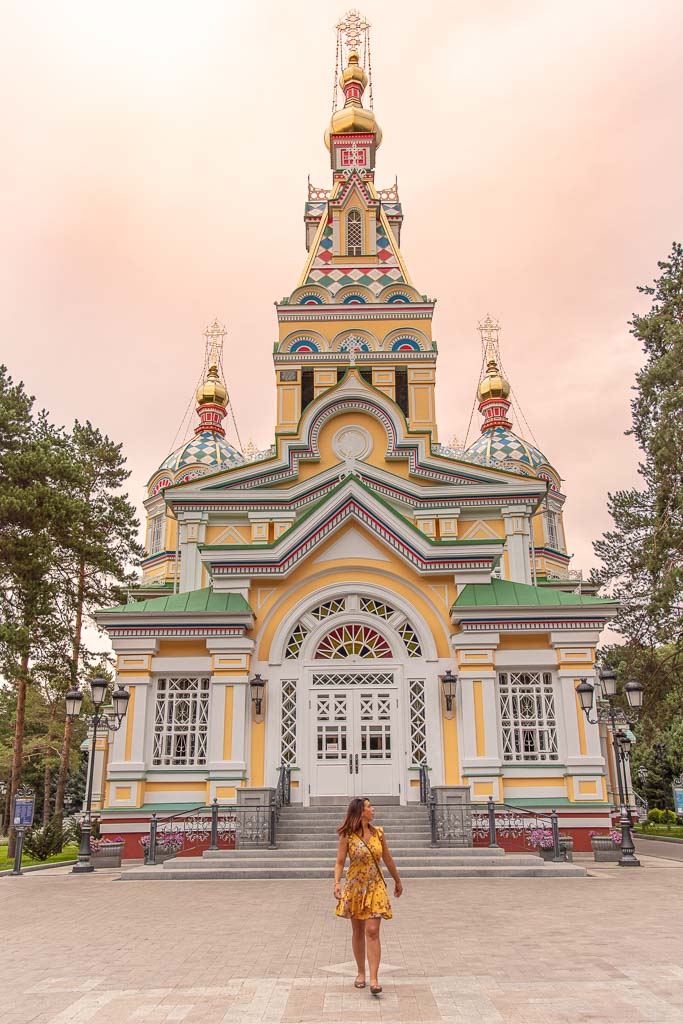
Almaty is Kazakhstan’s former capital and largest city. The leafy green city is unlike other Central Asian capitals (former or present) as it has a very European feel to it. Almaty very much reminded me of Odessa, Ukraine in several ways.
Check out my 14 best things to do in Almaty blog post for more info
Things to do in Almaty
- Zenkov Cathedral
- Panfilov Park
- Green Bazaar
- Tour the Almaty Metro Stations
- Jipek Joli Pedestrian Street
- Arasan Baths
- Academy of Sciences
Best Restaurants In Almaty
- Shavlego Georgian Restaurant
- Coffeedelia
Where To Stay In Almaty
Almaty Backpackers | Booking.com |
Hotel Mildom | Booking.com | Hotels.com |
Rixos Almaty Hotel | Booking.com | Hotels.com |
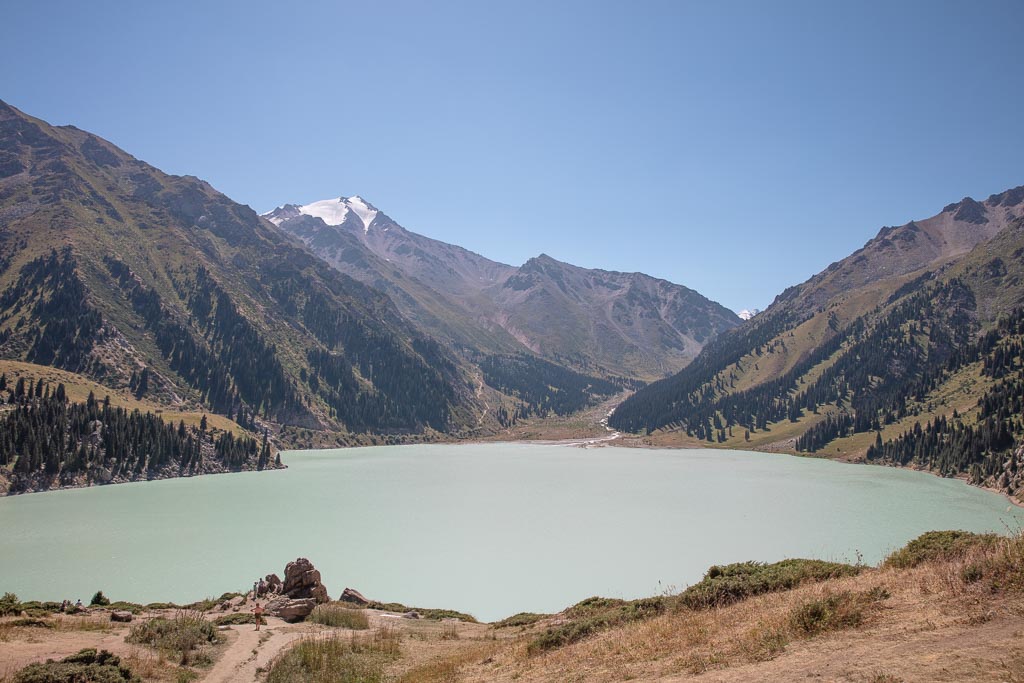
Big Almaty Lake
Big Almaty Lake is located just outside the city, perched in the Alatau Mountains, and can easily be reached by taxi, I recommend using Yandex.taxi (similar to Uber) to hire a car.
Depending on the time of year Big Almaty Lake can range from a beautiful turquoise to an opaque pastel seafoam green. Try to visit Big Almaty Lake early in the morning for reflections of the sky and surrounding mountains.
Plan your own visit with my Big Almaty Lake guide or book a group tour of Big Almaty Lake
Southeastern Kazakhstan
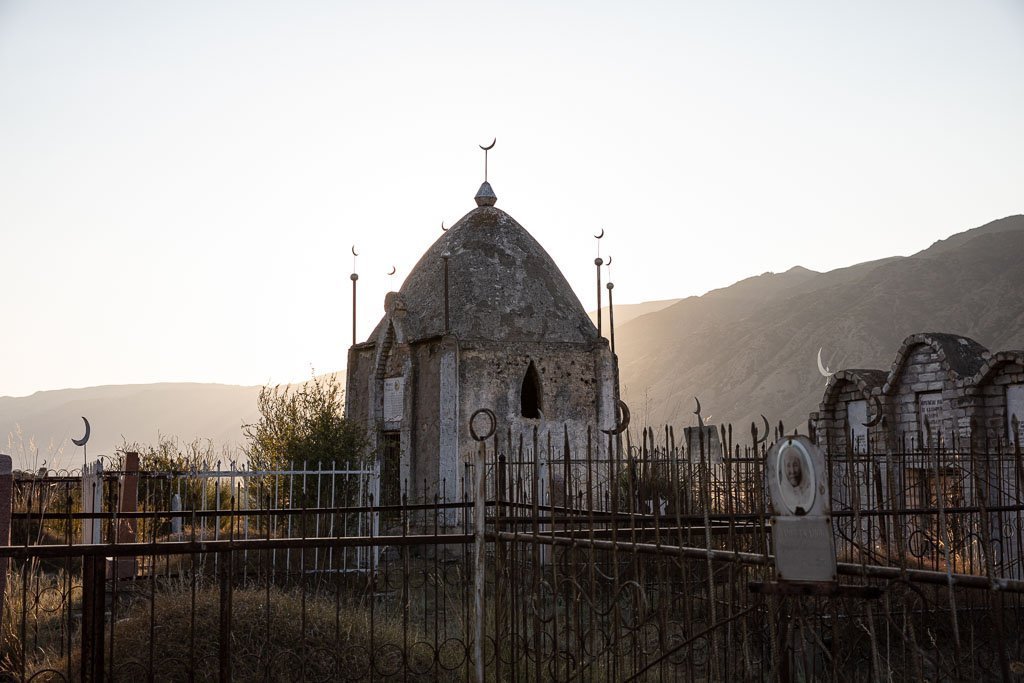
Saty is a small village that serves as a great jumping-off point for further explorations to the Sunken Forest of Lake Kaindy, trekking around Kolsai Lakes, and visiting Charyn Canyon. There are several guesthouses in Saty that rent rooms to tourists and can help arrange transport to Kaindy, Kolsai, and Charyn. Saty doesn’t boast many must-sees itself, but the mosque and the cemetery are worth a visit if you find yourself with some spare time.
Where To Stay In Saty
Guesthouse Arcabay-Karligash | Booking.com |
A-Frame Kolsai | Booking.com |
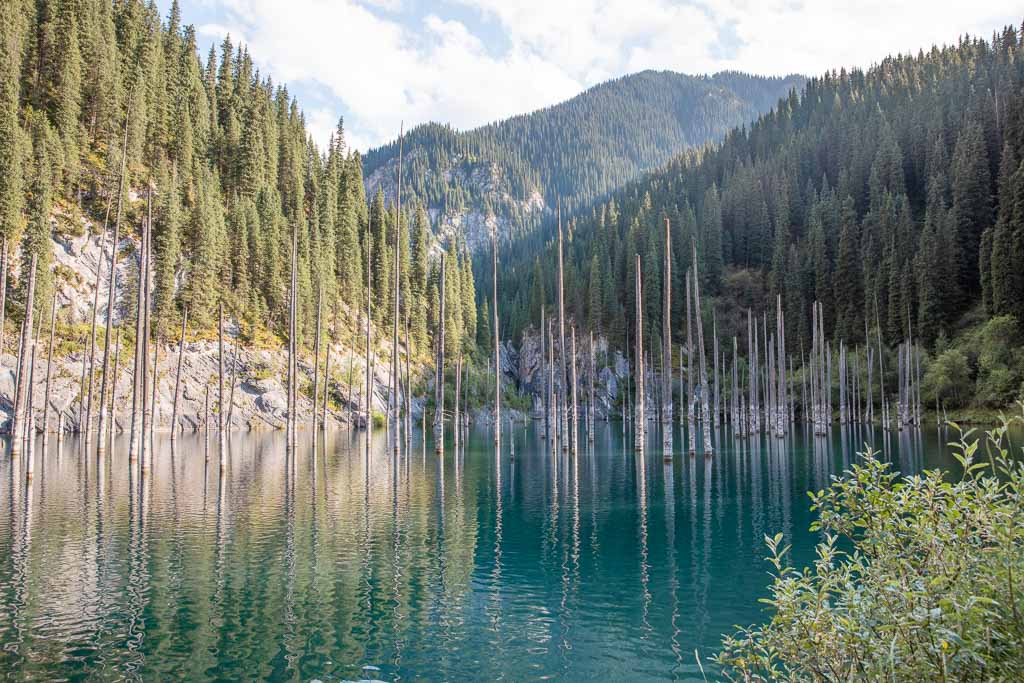
The Sunken Forest Of Lake Kaindy
Lake Kaindy is among the most unique lakes in the world. Not only is absolutely stunning it all boasts an unusual feature: a sunken forest.
After a large earthquake in 1911 unleased a large landslide damming off the Kaindy River, the valley began filling with beautiful turquoise glacial water. Eventually, much of the Shrenk spruce forest in the bottom of the valley was submerged. The branches and green needles eventually fell off the upper parts of the trees that rise out of the water, but the lower halves that remained submerged managed to retain theirs thanks to preservation properties of the ice-cold water, giving the sunken forest the appearance of being upside down.
For those wanting to make an overnight trip of Kaindy Lake, it’s possible to bring your own gear and camp. For those up for a real challenge, it’s possible to trek between Kaindy and Kolsai Lakes.
Plan your visit to Lake Kaindy with my How to get to Lake Kaindy guide
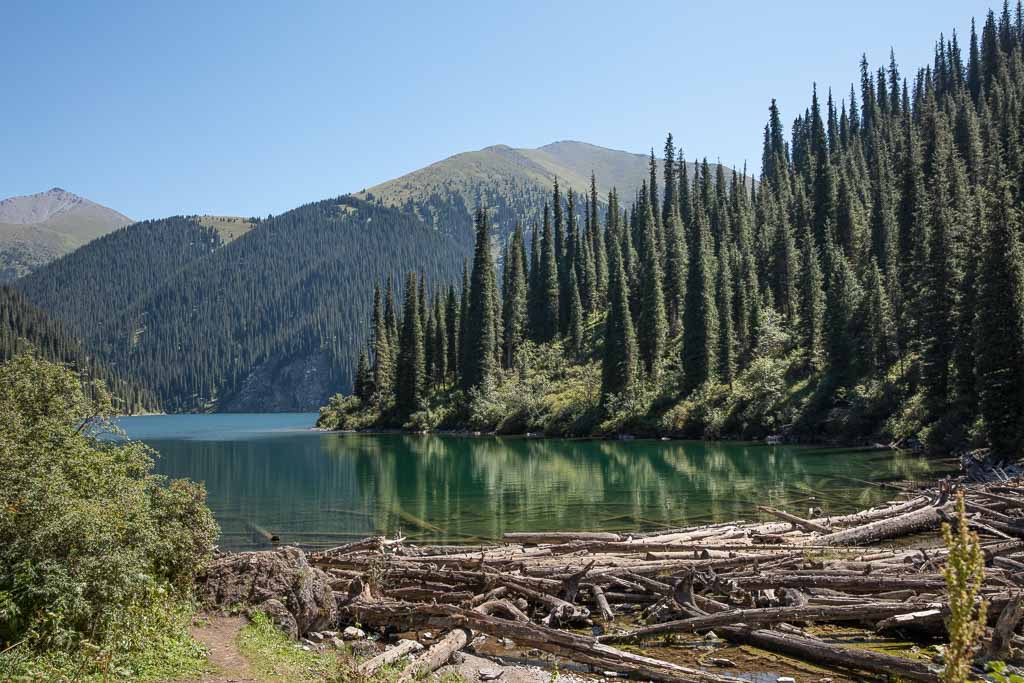
Kolsai Lakes 1, 2, & 3
Kolsai Lakes are a strand of blue-green lakes, commonly referred to as the pearls of the Tien Shan. Arrange a car from Saty and walk down the steep hill for views of the first Kolsai Lake. A short walk along the shore will bring you to a dock jutting out into the lake that makes for a great photo op.
For those that wanna take on a day hike, you can continue along a trail that connects to Kolsai Lake 2, and if you’re up for it, Kolsai Lake 3. You can bring your own gear if you’d like to spend a night at Kolsai Lakes, or there is a yurt camp at the first lake.
It’s possible to travel to Kolsai 2 by horseback.
Click here to read my blog post on Kolsai Lakes
Wanna join a group? Check out this Kaindy, Kolsai & Charyn Canyon 3 day tour

Charyn Canyon
Southeastern Kazakhstan is pretty diverse for its size. From city to alpine lakes to desert landscapes that rival the Grand Canyon in appearance.
Charyn Canyon is comprised of several canyons that all have their own persona, but probably the most popular is the Valley of Castles pictured above.
Planning your own Charyn Canyon visit? Read: How to get to Charyn Canyon
Join this Charyn Canyon day trip from Almaty
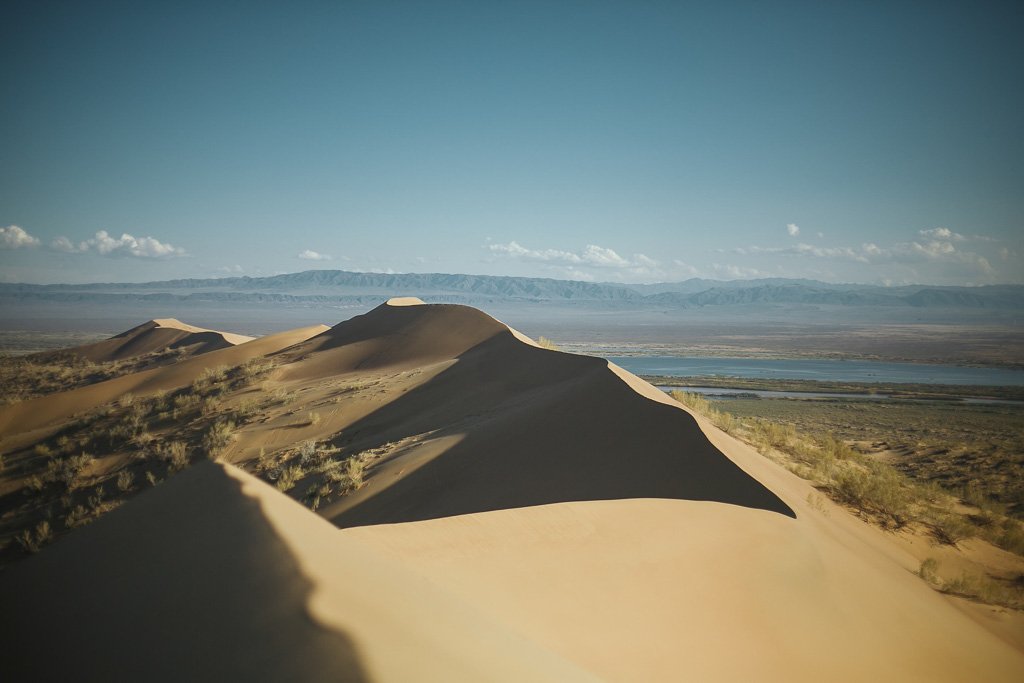
Altyn Emel National Park is probably most famous for its unique singing dunes, that create an organ-like sound when winds blow from the west. The Aktau Range is another not-to-miss stop in the national park for its striated, colorful appearance.
Book this 2 day Altyn Emel National Park Tour

Karkara Border
For those that plan to combine a visit to southeastern Kazakhstan with eastern Kyrgyzstan , the Karkara border is going to be the shortest option to get between the two countries without having to backtrack back to Almaty.
Check out my Karkara Border Crossing report for info on how to cross between Kazakhstan and Kyrgyzstan
Turkistan & Southern Kazakhstan
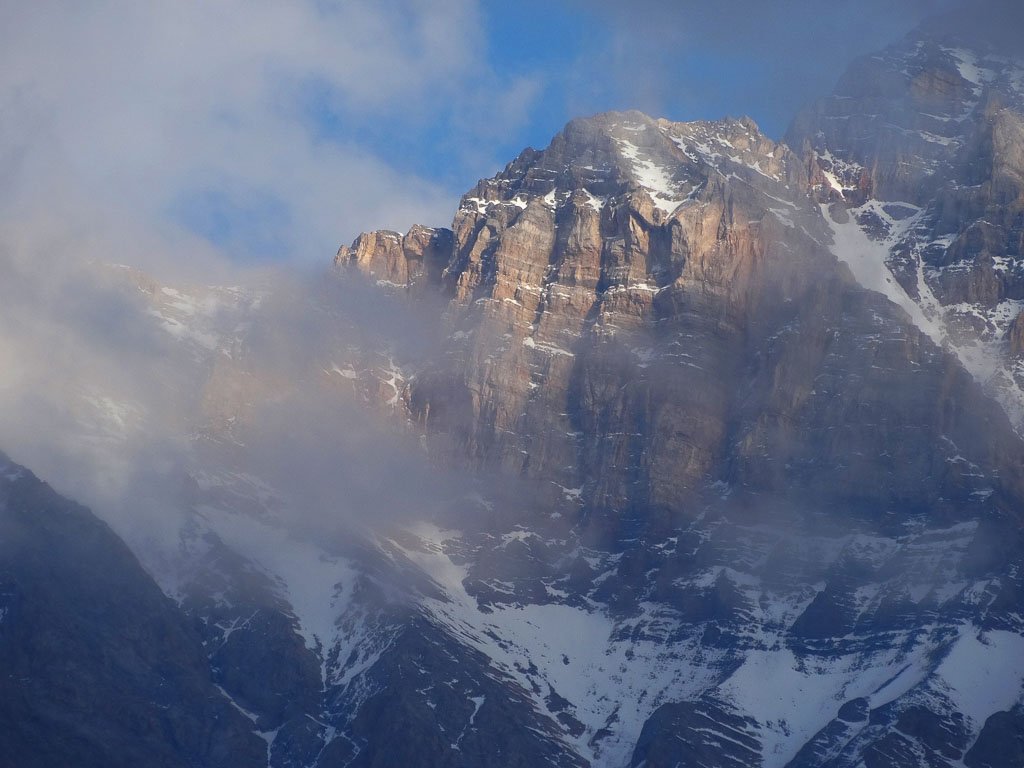
Shymkent & Around
Just a hop across the border from Tashkent, Shymkent has a long history along the Silk Road. From its early beginnings as a caravanserai to becoming a center of trade between Turkic nomads and Sogdians, later devastated by Genghis Khan and the Mongol Horde before being absorbed by the Khanate of Kokand and later sacked by the Russians. Back in Shymkent’s heyday, the city was well known for its fine kumis, however, these days, alcohol speaking, Shymkent is known for producing Kazakhstan’s two finest beers.
Don’t miss out on shopping at Shymkent’s famed bazaars. Shymkent is surrounded by plenty of natural wonders. Don’t miss out on Sayram Ugam National Park or Aksuu Zhabagyly Nature Reserve.
Things To Do In & Around Shymkent
- Central Bazaar
- Samal Bazaar
- Shymkent Regional Museum
- Sayram Ugam National Park
- Aksuu Zhabagyly Nature Reserve
Where To Stay In Shymkent
City Hostel Shymkent | Booking.com | Agoda.com |
Megapolis Hotel Shymkent | Booking.com | Agoda.com |
Rixos Khadisha Shymkent | Booking.com | Hotels.com |

I’ll admit, I haven’t yet had the chance to visit Turkistan, but it’s high on my to-visit list. Turkistan boasts Kazakhstan’s best wealth of architectural gems, the centerpiece being Mausoleum to Kozha Akhmed Yasaui, the first Turkic Muslim holy man.
Check out this 2 day Turkistan group tour from Almaty
Things To Do In Turkistan
- Yasaui Mausoleum & History Museum
- Mausoleum of Rabigha Sultan Begum
- Hilvet Underground Mosque
Where To Stay In Turkistan
Hostel Top | Booking.com |
Hotel Khanaka | Booking.com | Agoda.com |
Boutique Hotel Silk Way | Booking.com | Agoda.com |
Over the course of 40 years, the once large endorheic lake whose shores once spanned both into Kazakhstan and Uzbekistan has nearly dried up completely. The town of Aral (formerly Aralsk) serves as a good jumping-off point for further explorations into the Aral Sea area.
Aralsk once sat at the shores of the Aral Sea and served as an important fishing port, but now is somewhat defunct, albeit easier to visit than former Aral Sea ports on the Uzbek side of what was once the sea. Efforts are being made by Aral Tenizi, an NGO working to revitalize the Aral Sea fishing industry.
Things To Do Around Aral
- Zhalanash Ship Cemetery
- Fishermen’s Museum
- Arask History Museum
- Kok Aral Dam
- Swim in the Aral Sea
Where To Stay In Aral
Gostinitsa Karavanserai | Booking.com | Hotels.com |
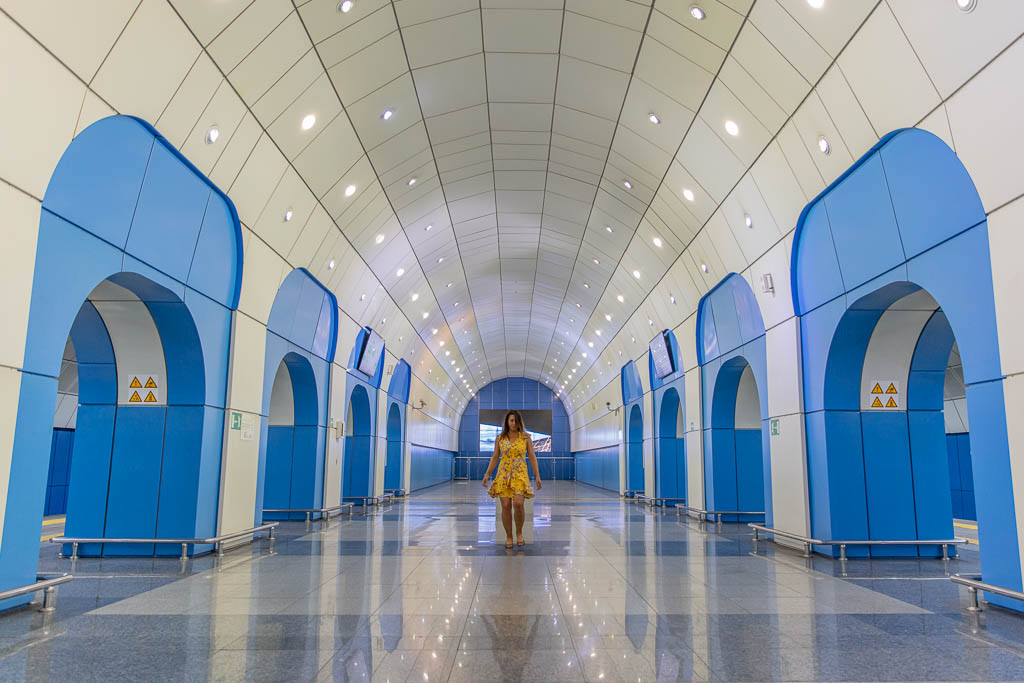
Space nerds rejoice, Baikonur is the world’s largest space launch facility. The cosmodrome is leased out to the Russians from the Kazakhs until at least 2050. Sputnik, Vostok, and Yuri Gagarin have all launched from pads within the Baikonur Cosmodrome.
For those of you that don’t wanna journey far but still want in on a little space action, you can always visit the Baikonur Metro Station in Almaty that’s interior looks like a spaceship and plays videos of space launches on a mounted TV.
Wanna tour Baikonur? Check out this 3 day space ship launch tour at Baikonur
Northern Kazakhstan
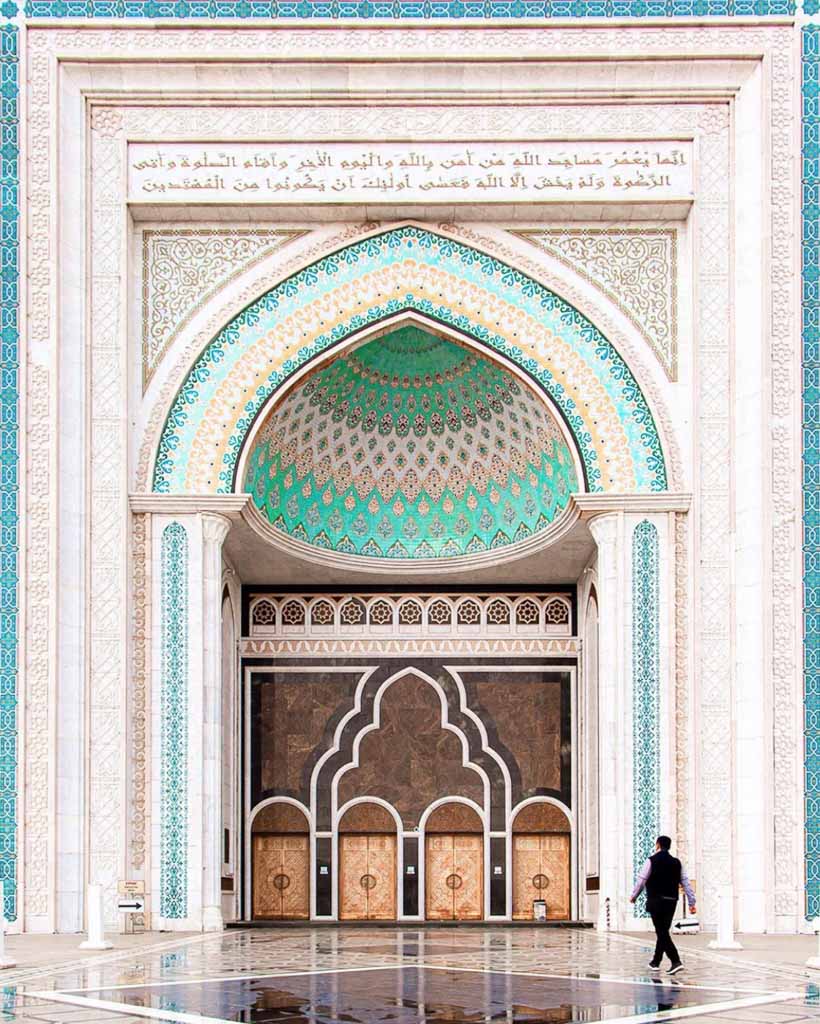
Nur Sultan (Formerly Astana)
Nur Sultan, still more commonly referred to as Astana is essentially a planned city with an identity crisis. First referred to as Akmola, it dethroned Almaty and became the capital of Kazakhstan in 1997 and changed names to Astana in 1998. In 2019 its name changed yet again after President Nursultan Nazarbayev resigned.
For transparency, I have not personally been to Astana… but my friend Dan from Dan Flying Solo recently paid a visit to the Kazakh capital on a two day stopover on his way home from a trek with me in Tajikistan in 2019.
His take: it’s like Vegas meet Dubai with a twist of Central Asia . So think big grandiose buildings, unique and strange architecture set smack in the windswept Kazakh steppe. Photos of Astana provided by Dan .
Join this day tour of Astana
Things To Do In Nur Sultan
- Hazrat Sultan Mosque
- Khan Shatyr
- Palace of Peace and Reconciliation
- National Museum of Kazakhstan
Where To Stay In Astana
Hello Inn Budget Hotel | Booking.com |
King Hotel Astana | Booking.com | Hotels.com |
Rixos President Hotel Astana | Booking.com | Hotels.com |
Western Kazakhstan
Set on white cliffs, Aktau looks out over the Caspian Sea. If you’re looking for a Kazakh beach break Aktau is the spot with surrounding fluffy white sand beaches. Outside of Aktau don’t miss the Mangistau necropolises and underground mosques along with the epic landscapes of the Ustyurt Plateau.
Visit the best of Mangistau and the Ustyurt Plateau on a 5 day tour from Aktau
Things To Do In Aktau
- Laze on Dostar Beach
- Visit the Aktau Regional Museum
Where To Stay In Aktau
ZhanaOtel | Booking.com | Agoda.com |
Caspian Riviera Grand Palace | Booking.com | Hotels.com |
View this post on Instagram A post shared by Kalpak Travel – Central Asia (@kalpak_travel) on Oct 2, 2019 at 11:11am PDT
Ustyurt Plateau
The Ustyurt Plateau is a moon-like landscape that straddles both Kazakhstan and Uzbekistan’s semi-autonomous region of Karakalpakstan . Luck would have it that I first saw images of the Kazakh side of the Ustyurt Plateau the morning I was flying home from my last Central Asia trip, so there I was at the airport immediately planning my next adventure back to the region (needless to say Ustyurt is on the list).
Wild canyons, colorful craggy formations, and underground mosques dot the region that was once a lesser-used route of the Silk Road. It’s possible to cross the Ustyurt Plateau by train between Uzbekistan and Kazakhstan, but looking at how vast an area this is, I would opt to go with my own transport or jump on an organized tour.
Read more about crossing Ustyurt Plateau here .
Check out this 5 day tour of Mangistau & Ustyurt Plateau
Given Uralsk’s position right off the border with Russia, Uralsk feels more like Russia than it does Kazakhstan. Most who visit Uralsk are either coming from or going to Russia, given its location. The main attraction here is the Russian-style architecture.
Things To Do In Uralsk
- Cathedral of Archangel Mikhail
- Cathedral of Christ the Savior
- Abay Square
- Uralsk Regional History Museum
Where To Stay In Uralsk
Apart-Hotel Vegus | Booking.com | Agoda.com |
Hotel Pushkin | Booking.com | Hotels.com |
Festivals in Kazakhstan
Kurban Ait (Eid al Adha): The feast of the sacrifice that is known as Eid al Adha in the Arab world. Tradition is to visit the mosque, sacrifice an animal (usually a sheep) and feed everyone in sight.
Nowruz: Nowruz is celebrated all across the Central Asian region and Iran, marking the start of spring, or the kick-off of the New Year according to the Persian calendar. You can expect to find feasts and festivals all around the country, as well as Kokpar matches (the dead goat polo called Kok Boru in neighboring Kyrgyzstan and Buzkashi in Tajikistan and Afghanistan).
National Unity Day: Kazakhstan is comprised of different cultures, traditions, and people. National Unity Day takes place on May 1st and usually includes parades and street festivals that show just how diverse a country Kazakhstan is.
Independence Day: December 16th marks Kazakhstan’s Independence Day. You can expect to find fireworks, parades, and concerts around the country.
Almaty Alma (Apple) Festival: Almaty is famed for its apples, so much so that in mid September the city holds a festival dedicated to the fruit.

Kazakhstan Travel Budget
Kazakhstan on a budget.
8,350 KZT/$22 USD per day
A midrange Kazakhstan budget
19,000 KZT/$50 USD per day
Live it up in luxury in Kazakhstan
30,000 KZT/$80 USD per day
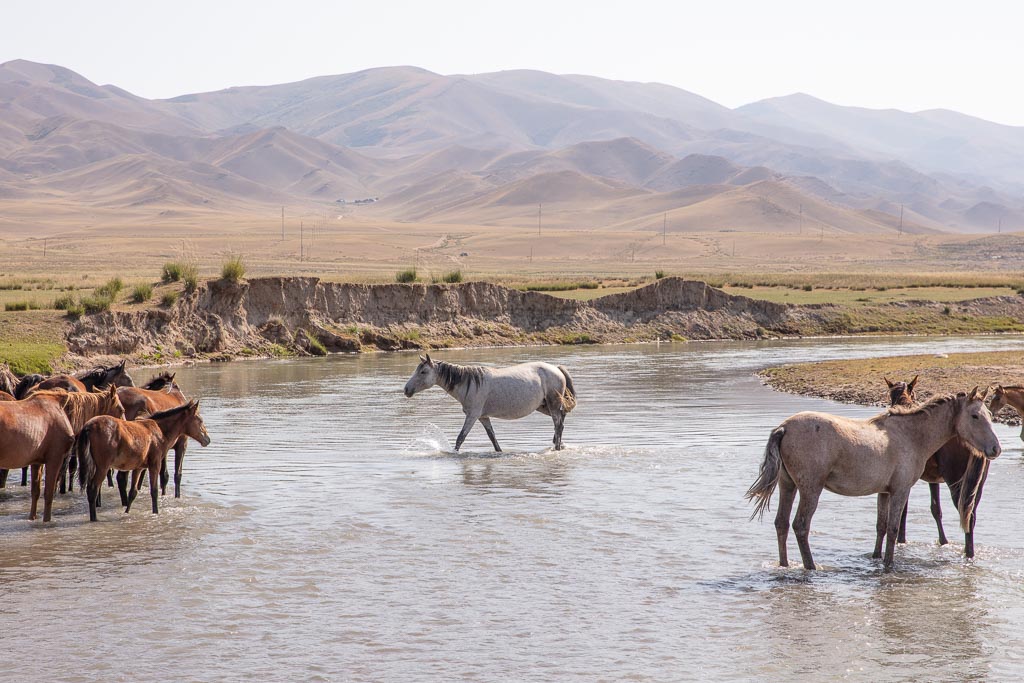
Kazakhstan Packing List
General packing list.
- Bradt’s Kazakhstan Guidebook
- Long sleeve
- Light fleece
- Trekking pants
- Warm Jacket
- Comfortable walking shoes
- Sunscreen
- Mosquito Repellant
- Prescription & Over the counter medications
For Trekkers
- Inreach Explorer+ GPS/SOS beacon
- Solar charger
- External battery pack
- Hydration pack or water bottle
- 3 Season tent
- Sleeping bag
- Hiking Boots
- Lightweight cooking camp set
- Water Purifier
- Trekking Poles
- Headlamp
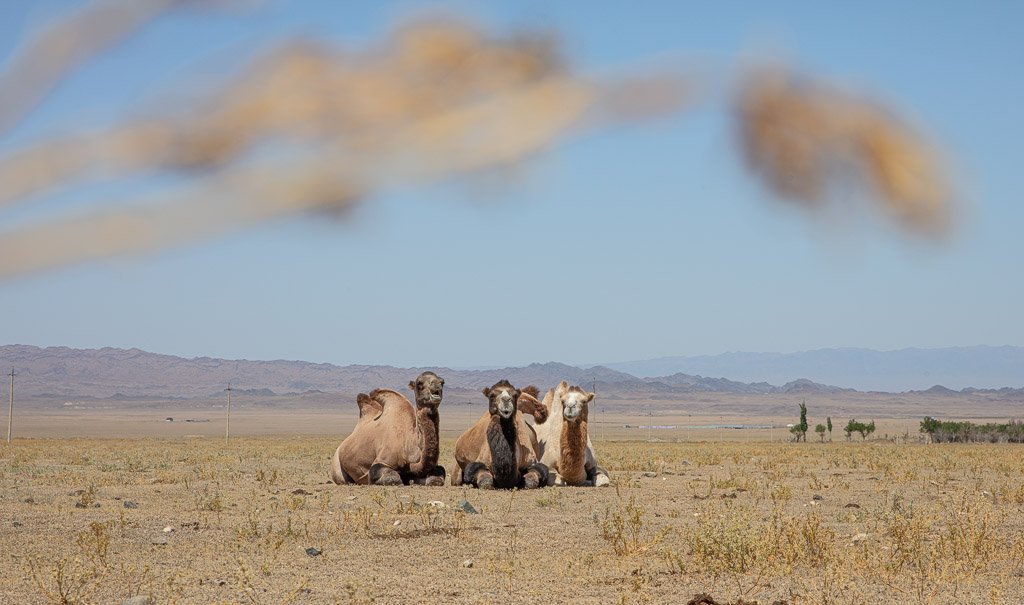
Safety In Kazakhstan
Overall, Kazakhstan is a pretty safe country to travel in. Petty theft and corruption do happen so it’s worth being aware while traveling in Kazakhstan, but generally, the usual standard travel precautions apply.
Solo Female Travel In Kazakhstan
My first visit to Kazakhstan was solo and I never faced any problems as a solo female traveler in Kazakhstan on that visit. I did end up meeting another solo female backpacker who I joined and traveled with a couple of days, but otherwise, I was on my own.
My most recent visit was on assignment with USAID, in which I was with a group.
It’s worth mentioning that Kazakhstan still has a rather patriarchal culture, similar to its neighbors, though personally, I’ve found the Kazakhs to be a bit more progressive than the Tajiks in comparison.
Have Any Questions About Traveling Kazakhstan ?
Ask your Kazakhstan travel questions in the comments section below.

More Posts from Kazakhstan:
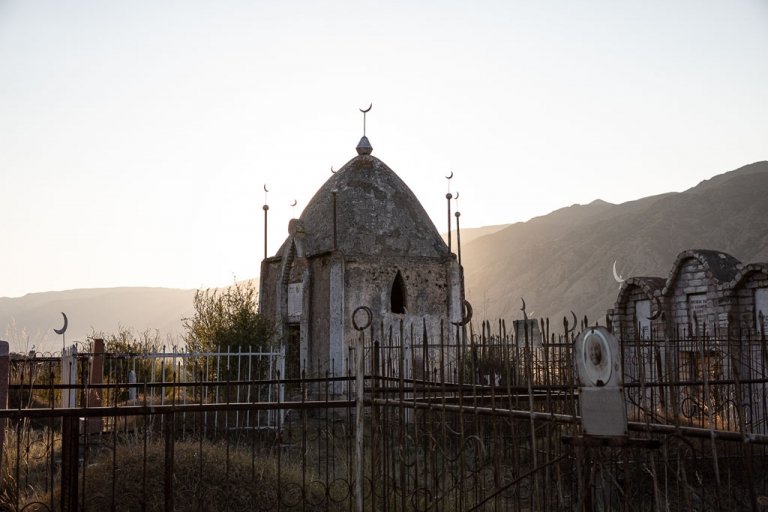
32 Photos That Will Put Kazakhstan On Your Bucketlist
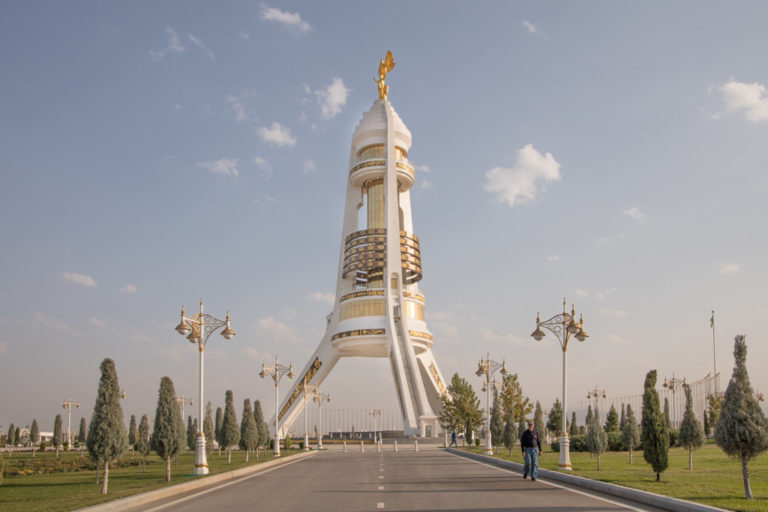
A Simple Guide To Central Asia Visas

7 Tips For Solo Female Travel In Central Asia
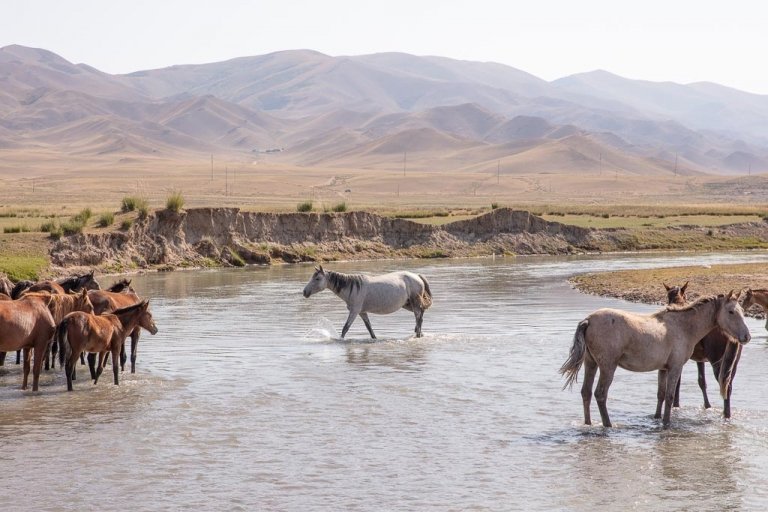
The Karkara Border Crossing Between Kazakhstan & Kyrgyzstan

How To Get To Big Almaty Lake

Lake Kaindy & Kolsai Lakes: Everything You Need To Know
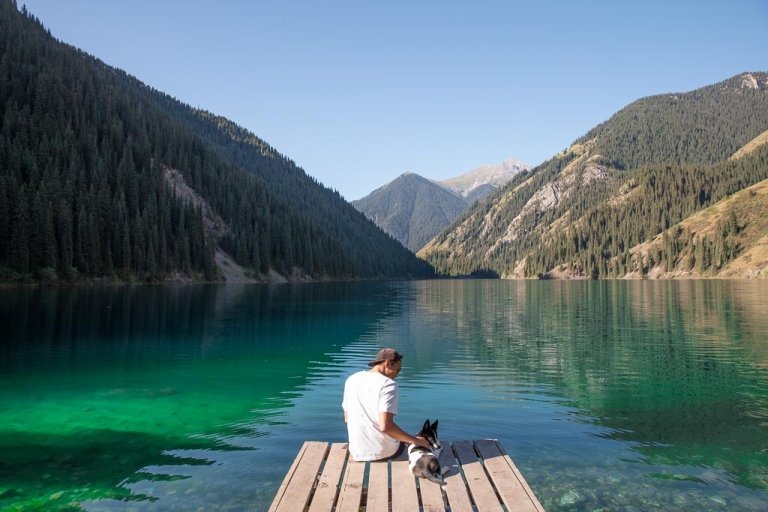
How To Get To Charyn Canyon, Kazakhstan
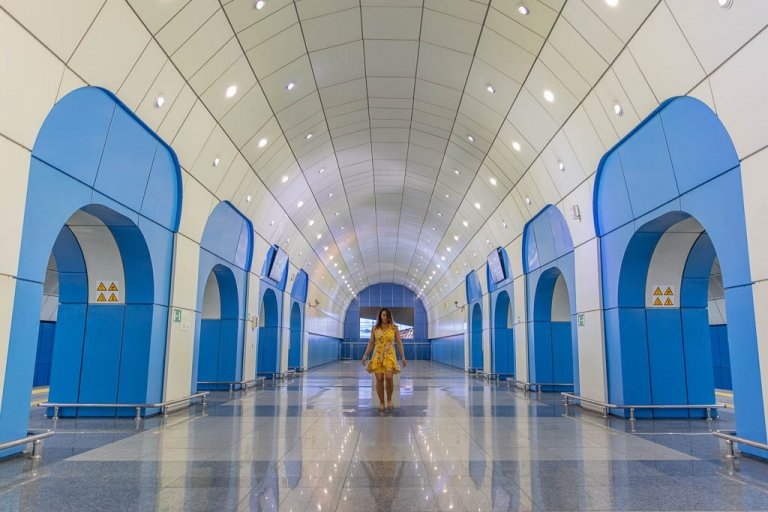
A Tour Though The Almaty Metro
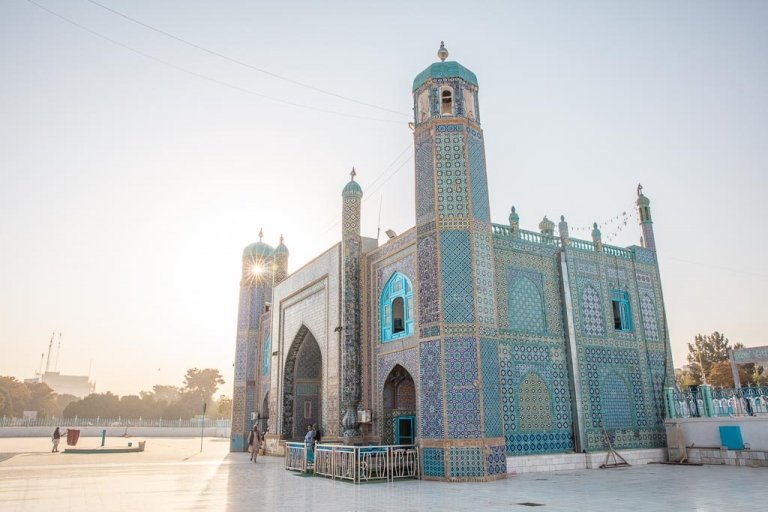
A Beginner’s Guide To Central Asia Travel: Discover The Silk Road

The 14 Best Things To Do In Almaty + Almaty Day Trips
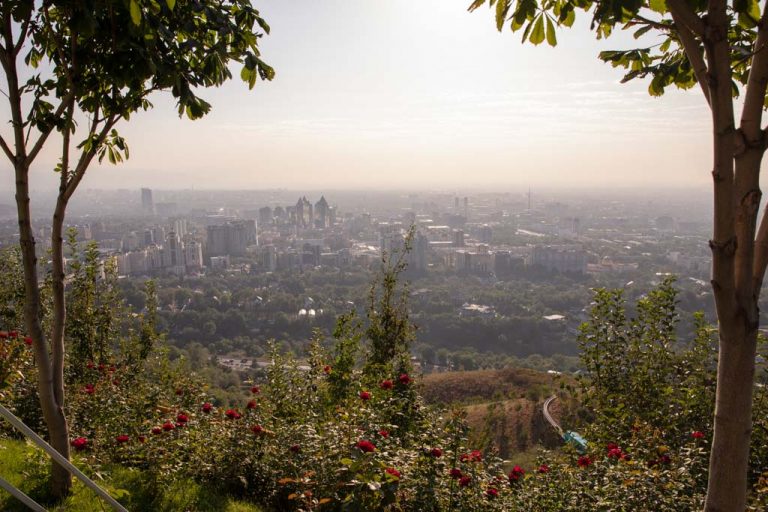
3 Days in Almaty, Kazakhstan

A Two Week Kazakhstan & Kyrgyzstan Itinerary
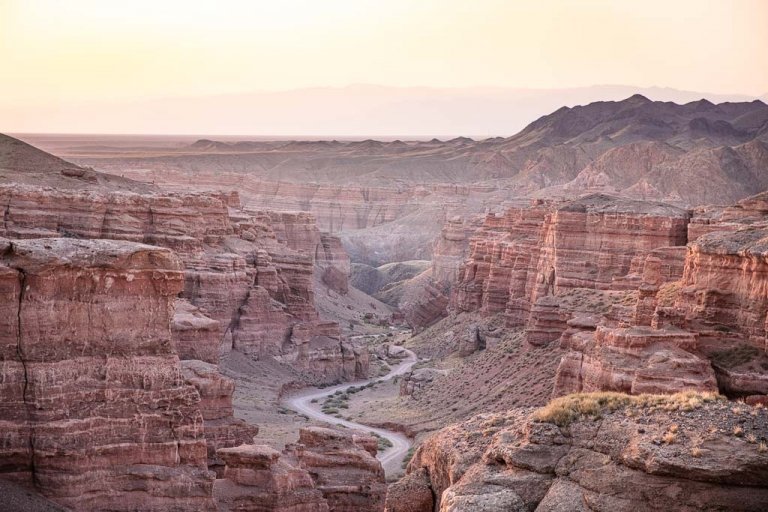
10 Off The Beaten Path Destinations For 2021
6 thoughts on “kazakhstan travel guide”.
Hey! I should try the Baursok on my next trip! Is it like a staple ? I am Abu doing oet preparation course with the UOWD. #oetpreparationcourse
Yes, baursok is a staple in Kazakh cuisine.
A very excellent blog post.Thank you so much for such a well-written article.
Nice article with useful details !!! For info about MBBS in North Kazakhstan, visit : https://www.pacificeducation.in/north-kazakhstan-state-university/
Nice article with useful details !!!
good article thank you
Leave a Comment Cancel Reply
Your email address will not be published. Required fields are marked *
Notify me of followup comments via e-mail. You can also subscribe without commenting.
This site uses Akismet to reduce spam. Learn how your comment data is processed .
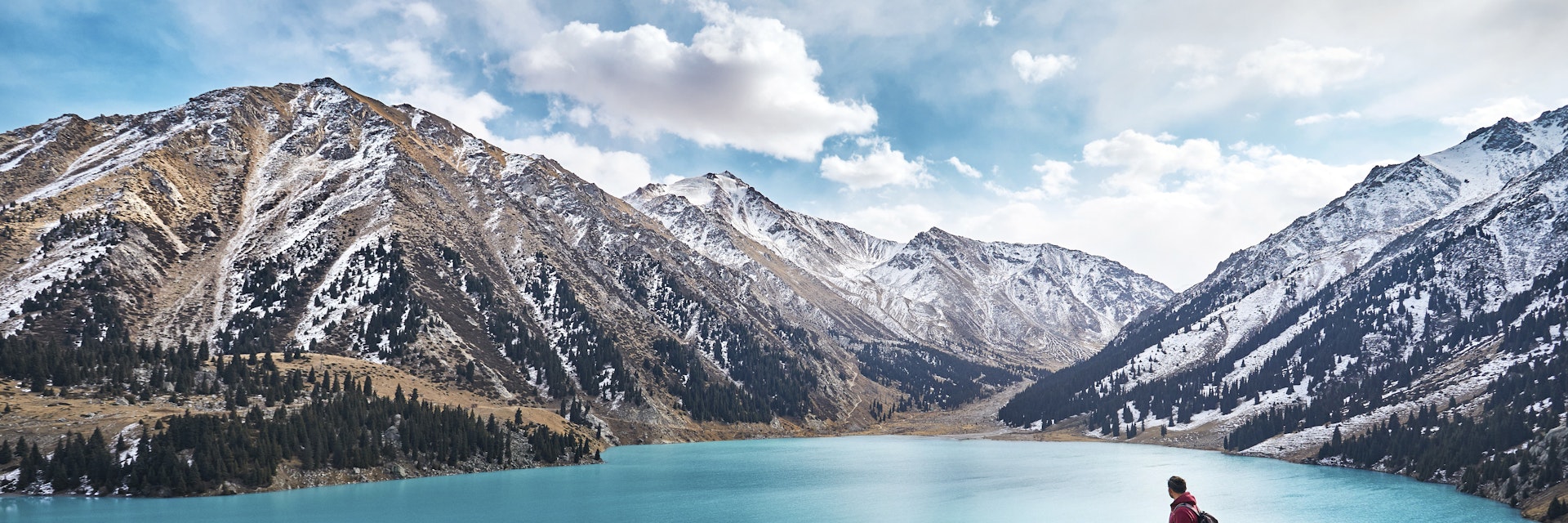
Getty Images/Cavan Images RF
The world’s ninth-biggest country is the most economically advanced of the ‘stans’, thanks to its abundant reserves of oil and most other valuable minerals. That money has transformed the capital Nur-Sultan, on the windswept northern steppe, into a 21st-century showpiece with a profusion of bold futuristic architecture. Travelers will find some fantastic restaurants and accommodation amongst the leafy avenues of Almaty too; its biggest city also boasts the chic ALZhiR Museum-Memorial Complex, glossy shopping centres and hedonistic nightlife. But it's beyond the cities that you'll find the greatest travel adventures, whether hiking in the high mountains and green valleys of the Tian Shan, searching for wildlife on the lake-dotted steppe, enjoying homespun hospitality in village guesthouses, or jolting across the western deserts to remote underground mosques.
Best Time to Visit
Best things to do, attractions, must-see attractions.

Some 285km east of Aktau, Beket-Ata is an important and extremely popular place of pilgrimage for those wishing to visit the underground mosque and final…

National Museum of the Republic of Kazakhstan
Nur-Sultan (Astana)
This huge blue-glass-and-white-marble museum covers the history and culture of Kazakhstan from ancient to modern times. Themed halls comprise interactive…

Charyn Canyon
Over millions of years, the swift Charyn (Sharyn) River has carved a truly spectacular 150m- to 300m-deep canyon into the otherwise flat steppe some 200km…

KarLag Museum
Housed in the old KarLag headquarters building, this poignant museum walks you through KarLag's role in the Soviet Gulag Archipelago. The repression of…

Khan Shatyr
Nur-Sultan's most extraordinary building (so far), the Khan Shatyr is a 150m-high, translucent, tentlike structure made of ethylene tetrafluoroethylene …

Kolsai Lakes National Park
Located around 12km by paved (from 2018) road from Saty village, these three spruce-and-mountain-hemmed lakes are Alpine-esque beauty at its best and a…

Palace of Peace & Reconciliation
This beautiful glass-and-steel pyramid was opened in 2006 as the home for the triennial Congress of World and Traditional Religions, hosted by Kazakhstan…

Shakpak-Ata
Perhaps the most intriguing of all Mangistau’s underground mosques, 10th-century Shakpak-Ata is a cross-shaped affair with three entrances and four…
Planning Tools
Expert guidance to help you plan your trip.
Transportation
Count on a mix of trains, cars, buses and even horses to take in Kazakhstan’s vast and varied landscapes.
Latest stories from Kazakhstan
Filter by interest:
- All Interests
- Adventure Travel
- Art & Culture
- Beaches, Coasts & Islands
- Food & Drink

Sustainable Travel
Jul 30, 2024 • 7 min read
One writer spent two weeks crossing this vast Central Asian country by rail. Here’s how you can do it, too.

Jul 23, 2024 • 6 min read

Jul 15, 2024 • 5 min read

Jul 4, 2024 • 4 min read

Jul 3, 2024 • 7 min read

Feb 25, 2020 • 6 min read

Jul 7, 2019 • 8 min read

Jun 5, 2018 • 6 min read

Jan 12, 2018 • 5 min read

Aug 3, 2015 • 5 min read
in partnership with getyourguide
Book popular activities in Kazakhstan
Kazakhstan and beyond.

- Skip to primary navigation
- Skip to main content
- Skip to footer
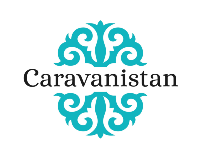
Caravanistan
The Silk Road Travel Guide
Kazakhstan traditionally sits in last place on Silk Road travelers’ must-visit list. That’s not because of a lack of attractions. But it does get trumped by its neighbours on several counts.

While Kazakhstan has beautiful steppe and mountain scenery, there are no yurts like in Kyrgyzstan or Mongolia. Kazakhstan has interesting medieval Islamic architecture, but Uzbekistan has more.
Add to that the sheer size of Kazakhstan, few tourism companies and restrictive government policies (it’s getting better): more limiting factors in attracting tourists.
So why still visit Kazakhstan?

Kazakhstan appeals to different people in different ways. Chinese travelers enjoy the fresh air (outside of the cities) and the lack of people, while Arabian visitors love how it is so green, and kind of Muslim, but not too much. Snow-white, ice-cold winters attract visitors from tropical countries.
For Westerners, the main selling point are Kazakhstan’s unique landscapes, dripping with freedom. On top of that, singular experiences include the Baikonur Cosmodrome, the Semipalatinsk Atomic Test Site , the landscapes of Mangystau, the balbal of the steppe, glitzy Astana and chaste Altai .
If history and politics are your main interests, Kazakhstan is fascinating as the country with the largest Soviet legacy, due to forced population transfers, massive industrialization and subsequent ghost towns, space launches and atomic bomb tests, gulags and banished Russian intellectuals like Dostoyevski, Solzhenitsyn, Eisenstein and Trotsky.

Table of Contents
Where to go?
We understand that many people want easy, bite-sized advice from a travel guide. Gimme 5 highlights and a 2-week itinerary and let me get on with my life. We get that. But Kazakhstan defies any attempt at pigeonholing; on top of that, most visits are part of an overland itinerary, so it all depends on where you’re coming from and heading towards.
Have a look at our list of 40 great things to do in Kazakhstan to get your creative trip-planning juices flowing.

For the majority of visitors, Almaty region and the southern area around Shymkent are the only things they will see of Kazakhstan. There is nothing wrong with that. Kazakhstan is a very big country: in area, these 2 regions put together are bigger than the whole of Italy or Japan.
Together, they provide a great sample of what Kazakhstan is all about, both culturally, historically and in terms of natural beauty. Since they border Uzbekistan , Kyrgyzstan and China, visiting the south and the Almaty region makes a lot of sense in many a overland itinerary.

If you only get to see 1 place: Almaty region has the most attractions and the best infrastructure. 5 national parks offer deserts, steppe, wildlife and high mountains, as well as history stretching back thousands of years, all surrounding Central Asia’s most buzzing city, Almaty .
Off the beaten track
Only those who like to go further off the beaten track (preferably with their own transport or a budget for tours) will want to venture into the other regions of Kazakhstan. If you have a specific interest like history, archaeology, botany or birding, you will also find much to enjoy here.
In the North , Kazakhstan’s brash new capital Astana stands in stark contrast to the modest Altai mountains . Semey surprises with its museums and history, and serves as the gateway to the Semipalatinsk Test Site . Other northern cities like Oskemen , Petropavl , Pavlodar , Ridder and Ekibastuz are trying to acquire a life of their own after being willed into existence by the Soviet state to build up its industrial base.

In the West , the oil towns of Atyrau and Aqtau border the Caspian Sea, but tourists come instead for its hinterland of stark desert landscapes like the Ustyurt plateau, which hides underground mosques like the sanctuary of Beket-Ata . Separated by an enormous expanse of steppeland dubbed by one traveler as “the most boring place on Earth”, in the northwest, visitors to historic Uralsk and boomtown Aqtobe are few and far between.
In the Center , the steppe gets even bigger and more desolate. Remote steppe oddities of niche interest are Kazakhstan’s spiritual heartland at Ulytau, Aralsk and the zombie Aral Sea and space port Baikonur. Main cities are progressive Karaganda and keeper of Kazakh traditions Kyzylorda .
Trains, planes & buses
Kazakhstan is developing its rail network , and several high-speed trains now connect the major cities. Other trains are still slow, their speed reflected by their low prices.
Flights are more expensive, although low-cost airlines now exist in Kazakhstan: FlyArystan, SCAT and Qazaq Air.
For travelers who have the time, the train is a comfortable and budget-friendly alternative to the airplane. For those who don’t, the airplane is the quickest way to get around Kazakhstan with airfields in all corners of the country.

Buses and shared taxis are usually the only way to get to smaller destinations. Less comfortable and more dangerous, we do not recommend taking them for long distances. Like train stations, city bus stations are a good place to store your luggage for the day if you are planning a stop-over.
Within cities, ride-hailing and taxi apps are available.
Self-driving & cycling
Driving Kazakhstan is perhaps the best way to experience this huge country, since many of its attractions are difficult to reach on public transport. It’s the perfect way to experience the freedom of Kazakhstan’s great outdoors. Car rentals have become more affordable in recent years, in case you did not bring your own wheels.
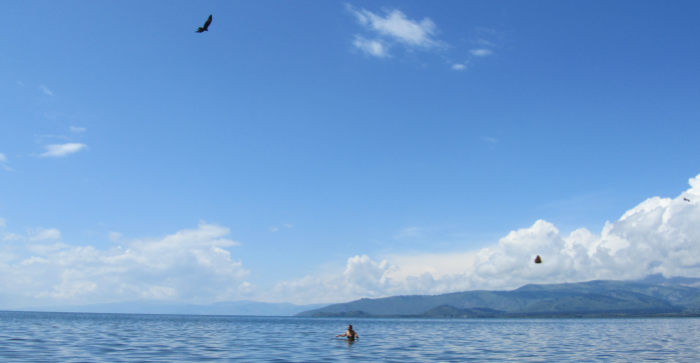
Cycling Kazakhstan – there are some nice routes available, especially in the eastern corners, in combination with Kyrgyzstan and Mongolia. Cycling in the rest of the country is a real challenge.
Winter travel
Although Kazakhstan is less mountainous than some of its neighbours, winters do disturb the transport system. Snow storms can block roads and airports, or delay trains. Between May and October all parts of the country are usually easily accessible.

Cross-border transport
Getting to Mongolia on public transport is a long and arduous journey overland, either via Russia or via China.
For transport links to Russia, Kyrgyzstan, Uzbekistan, Turkmenistan and China, see the border crossings section and the city guides.
- Self-drive in Kazakhstan
- Trains in Kazakhstan
- Cycling in Kazakhstan
- Caspian Sea ferry
Practical details
Kazakhstan’s landscapes are beautiful year-round. In winter, the steppe is covered in a light dusting of snow. Spring brings a brief flush of tulips and green grass, summer a scorching sun and the sound of crickets. In autumn, the golden foliage of mountain trees serves as a final reminder of the fading heat.

If you have the choice, the brief spring and autumn seasons are best in terms of temperature. Kazakhstan’s thermometers do get extreme, and some places cannot be visited in the dead of winter or at the height of summer.
For more details, see when to visit Kazakhstan , and our events calendar for Kazakhstan .
Have a look first to see if you need a visa for Kazakhstan . Kazakhstan is pretty safe, all things considered, with traffic as the main danger. We discuss possible concerns in detail on the safety in Central Asia page .
Health-wise , there are a few things you could worry about: diarrhea, smog, tick-borne encephalitis and rabies.
Generally speaking, food in the region is unhealthy and of little variety, based primarily on meat, fat, pasta and dairy products. Few tourists become fans of the tastes of Central Asia. Almaty and Astana are the exceptions, with a range of international cuisines offering escape from the tired local menu. We discuss your options as a picky eater .

Exchanging money, getting out money from an ATM or paying by card is easy in Kazakhstan. Paying by cash, however, has become a challenge. Kazakhstan these days runs completely on Kaspi, a “super-app” that has replaced most cash transactions. It’s not completely painless to get access as a foreigner, but if you are staying a bit longer, we do recommend making the effort .
Buying a sim card and getting mobile internet is also not an issue at the moment, although you will need a VPN to access all of the internet. More details in our articles on money and banking and communications .
For orientation , Maps.me and 2GIS are often better than Google maps. If you are a reader, have a look at our favourite books on Kazakhstan .
Budget and accommodation

The Kazakh tenge experienced a sharp devaluation in 2015 due to low oil prices and sanctions on Russia. Together with the rise in tourist services like hostels and tours and the subsequent drop in prices, it made Kazakhstan a very affordable place to travel.
Count on 3$ for a basic meal, 3-10$ for a hostel bed and a double room in a decent hotel starting at 20$. For a train ticket in an open carriage, it’s around 15$ per 1000 km. We go in depth on the budget question at the Kazakhstan travel budget page .
Hostels have popped up in every part of Kazakhstan in recent years, and now every mid-sized city has at least 1 good hotel. Almaty and Astana have a lot of options for luxury and business travelers, and there’s also plenty of apartment rentals.
We dive deeper into yurtstays, homestays, winter issues, camping, couchsurfing, … in the accommodation chapter .
Tours and tour operators

We work with a select few tour operators in Kazakhstan, people who can deliver tours to the standards of the discerning Caravanistan audience.
Asya and Alexey are well-traveled mountaineers with their own mountain base who handle our Tien Shan hiking requests. They also run jeep tours in the Almaty region.
Indira comes from the world of logistics: she is our “wrangler of the impossible.” She loves food experiences and original tour requests.
Marat does motorbike tours in Kazakhstan and beyond. Valeriya , finally, is another foodie who is trying to bring the service standards she knows from her tours to France to the villagers of her beloved Altai region.
Have a look at our Kazakhstan tour template suggestions , or simply send us your own ideas for a customised tour .
More country guides
- Turkmenistan
- Afghanistan
More on Kazakhstan
- Kazakhstan starter guide
- Things to do
- Accommodation
- Budget estimates , communication & banking
- Visas & border crossings
- When to visit & events calendar
- Self-driving
- Caspian Sea Ferry
- Northern Kazakhstan
- Central Kazakhstan
- Southern Kazakhstan
- Western Kazakhstan
- Almaty region
Travel Guide
Tours & rental.
- Custom tours
- Search all tours
- Pamir Highway tours
- Uzbekistan tours
- Kyrgyzstan tours
- Car & motorbike rental
Visa invitations
- Russia (tourist)
- Russia (business)
Get to know us
- What people say
- Letter from the Silk Road
- Terms & Conditions
- Follow us on Instagram
Do you have a request for this tour operator? Send a message
Not exactly what you were looking for? Check out our custom tour offer: competitive prices, tailored to your needs and wants. Customize your tour

One Week in Kazakhstan – A Step-by-Step Kazakhstan Itinerary
Plan your visit with this in-depth Kazakhstan itinerary.
Many people believe that Kazakhstan is a country full of indefinite flatness. And, in some ways, that’s true, there is a lot of flatness to be seen here.
However, Kazakhstan also boasts bustling cities, amazing mountains, sparkling alpine lakes, and stunning canyons. In just one week in this vast country, I saw all of the above (and more!).
Some Americans claim that Kazakhstan is an inaccessible destination because of where it’s located. However, it’s not that much farther from the USA than Thailand or South Africa, both of which see thousands of American tourists each year.
In fact, in just one week, you can experience a lot of the best things this country has to offer! Read on to hear my tried-and-tested 7-day itinerary if you only have one week in Kazakhstan.
A few guidelines about this itinerary:
- Outdoor lovers
- Hikers of all levels
- Adventure travelers
- Extreme foodies
- People who don’t like hiking
- City people (I’ve only given you one day in Almaty here)
One Week in Kazakhstan: A Sample Itinerary
Day 0: arrive in almaty.
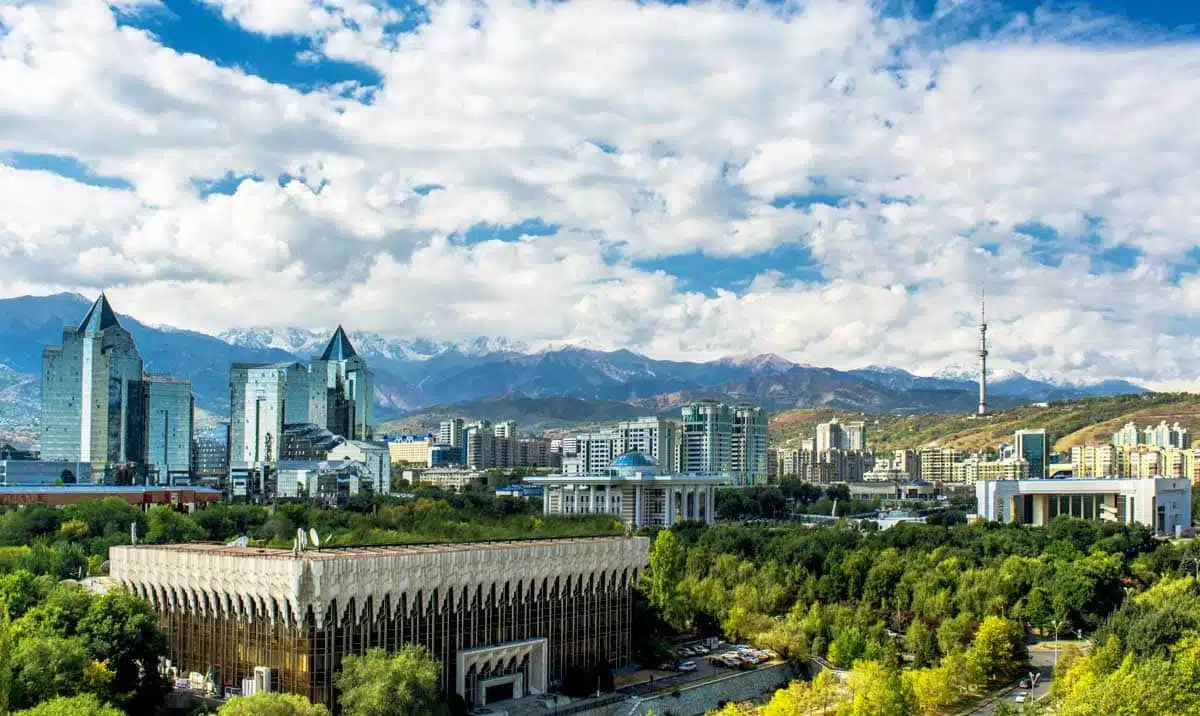
If you’re flying into Almaty, you’ll arrive into Almaty International Airport (ALA). From there, a taxi to the city center costs up to ~3,000 KZT and takes about 30-45 minutes. In Almaty, I’ve heard great things about FM Hostel Almaty (budget) or Renion Park Hotel (mid-range), which are both centrally located and reasonably priced.
Day 1: Almaty City Tour
As one of the largest cities in Central Asia , Almaty feels like the “New York” of Kazakhstan.
With crowded streets, upscale shopping malls, and a widespread public transit system, Almaty is easy to get around and explore. While you’re recovering from jet lag, you can get to know some of the areas that make Almaty such a beloved city in Central Asia.
You can roam the city independently, or register for this well-renowned walking tour in the city.
One of the city’s most notable sights, the Ascension Cathedral is a colorful Russian-style church located in one of the city’s most picturesque parks (* Note: as of my visit, the Ascension Cathedral is closed and covered in scaffolding for renovations ).
Even if you don’t enter the cathedral, the surrounding Panfilov Park is the perfect place for a morning stroll or some light people-watching. There are many museums in the area, like the Kazakhstan Museum of Musical Instruments or the Central State Museum.
In the late afternoon or early evening, head to Kok-Tobe by cable car for sweeping views of the city and some prime people-watching activities.
Or, alternatively, stroll along the Zhibek Zholy walking street and grab your dinner there.
Day 2: Hiking in Medeu and Shymbulak (Chimbulak)
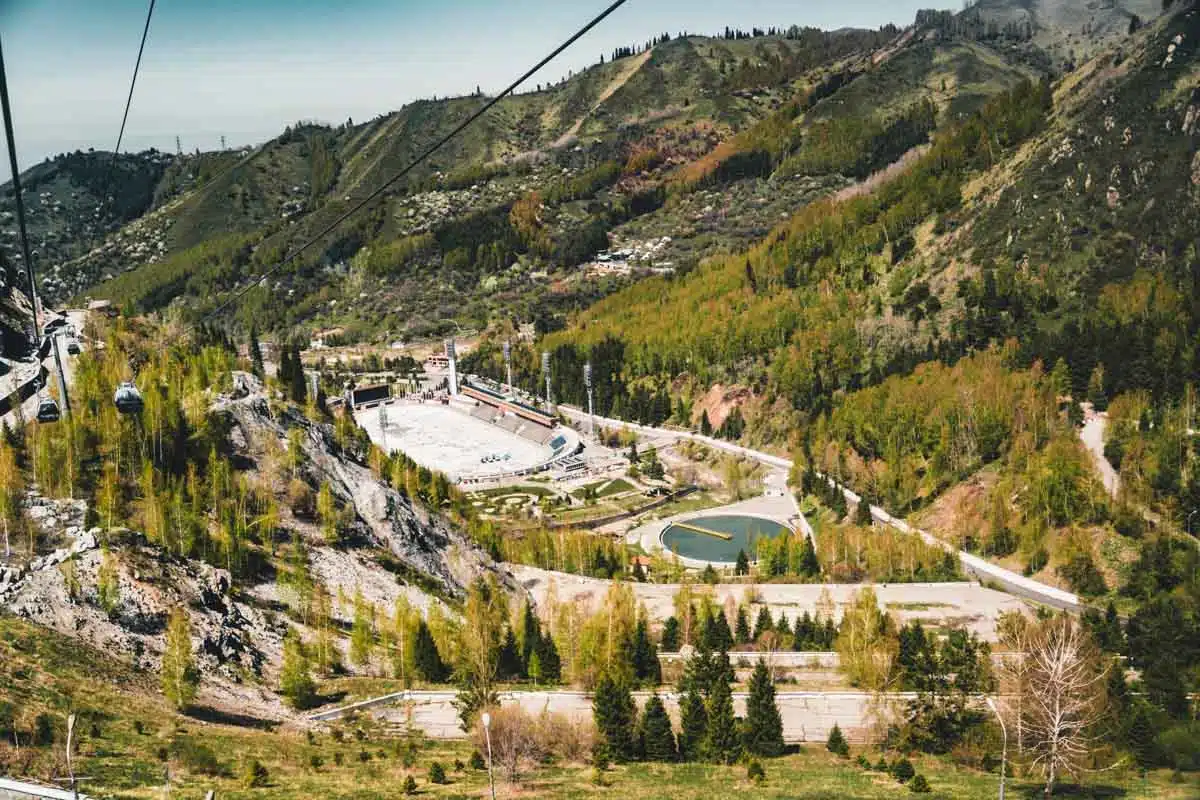
I didn’t actually make it up to Medeu and Shymbulak when I was in Almaty, but I heard from many fellow travelers that this was one of the best things to do while visiting Almaty.
Medeu is the city’s outdoor ice skating rink, and Shymbulak is the nearby ski resort. In the winter, they serve these exact purposes, but in summertime, the grounds open up for a variety of walks and day hikes.
Many people told me it was akin to hiking in the Alps (which is a pretty raving review coming from Swiss people themselves).
So, if you feel like getting outdoors, I’d recommend taking a day of your week-long itinerary to go up to Medeu to do some hiking.
To get to Medeu, you can take the Medeu cable car or travel by public bus/taxi.
Day 3: Day Trip to Big Almaty Lake
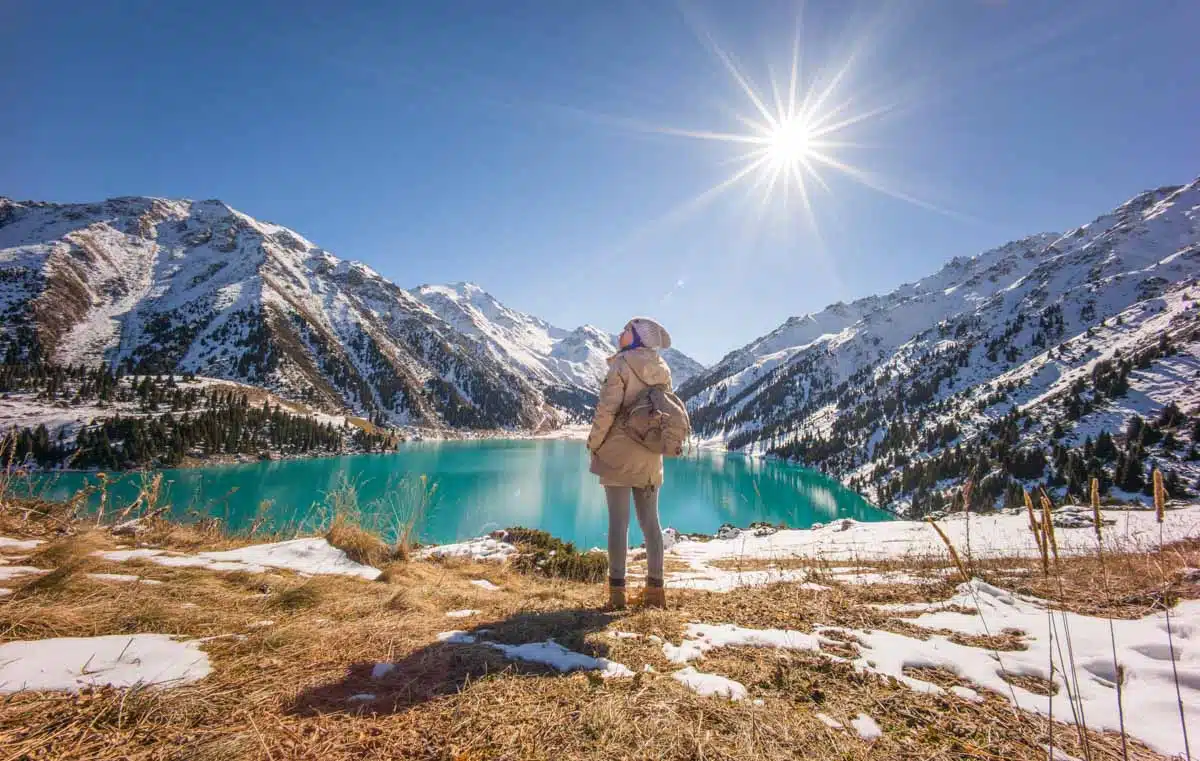
One of the most beloved local hangouts in the Almaty region is Big Almaty Lake. Known to locals simply as ‘Bao,’ this water reservoir is located high in a mountainous area.
Depending on the time of year and the lighting, the water ranges from a pale blue to a deep turquoise. It’s the perfect place to enjoy a picnic by the lakeside and people watch. However, don’t go near this precious drinking water – it’s guarded by soldiers and is illegal to enter.
To get to Big Almaty Lake, you can hire a taxi from the city each way for ~3,000-4,000 KZT each way. Yandex Taxi is an app that works really well for ordering taxis over a WiFi or cellular connection.
I STRONGLY recommend organizing your transport to and from the lake in advance, as taxis can be somewhat hard to come by up at the lake. If you have trouble communicating with your driver, you can also ask your hotel/hostel to organize it for you (usually at a slightly more expensive price).
Alternatively book a day-long tour to Big Almaty Lake
Day 4: Charyn Canyon
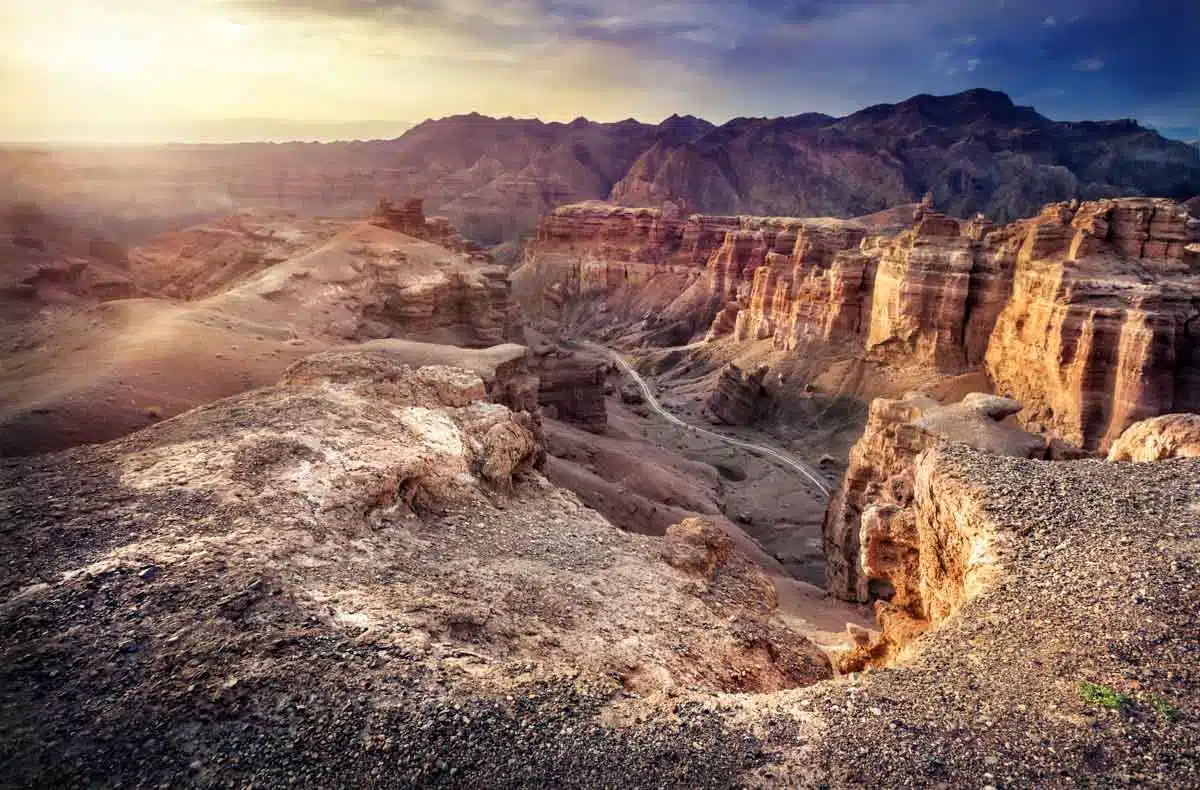
Charyn Canyon is a huge surprise in the middle of otherwise steppe-like terrain.
It’s a large, jutting canyon that’s a beautiful shade of red-orange. Inside the canyon, there are amazing and somewhat extraterrestrial-looking rock formations. It’s really spectacular, especially if you can manage to go when the sun is low in the sky.
Inside of the canyon, there’s a hiking trail that takes you to a small river and campground, but you can also hike the rim, which gives you amazing bird’s eye views of the canyon below.
To get to Charyn Canyon, you have a couple of options:
Take a day tour from Almaty – According to other travelers, you can find a day trip to Charyn Canyon from Almaty for a very reasonable price. However, you’ll be really time-constrained and the tours don’t actually run regularly so you need to book in advance.
Join a multi-day tour which includes Charyn Canyon – This is the option I did, and the one I recommend for people who are both budget-conscious and time-constrained. I paid ~$300 USD for a 4-day trip, including all meals and accommodation. Tours generally cost less per person with more passengers.
Hire a private driver – This is the most expensive option, but is also the safest, most flexible, and most convenient.
Rent a car and self-drive – Iron Horse Nomads and European Backpackers Hostel.
As a side note, I took a 4-day tour to Charyn Canyon, Kolsai Lakes, Kaindy Lake, and Altyn Emel Sand Dune. I highly recommend doing the tour if you’re short on time, so you can see everything in one fell swoop.
However, during my tour, our group had some run ins with terrible disorganization and our driver once come to pick us up while drunk. Therefore, I can’t recommend – and actively dissuade you from attending – the tour I went on (with Almaty Backpackers). This tour looks like a good alternative , even though it’s shorter – or ask at your hotel or hostel.
Day 5: Kaindy Lake
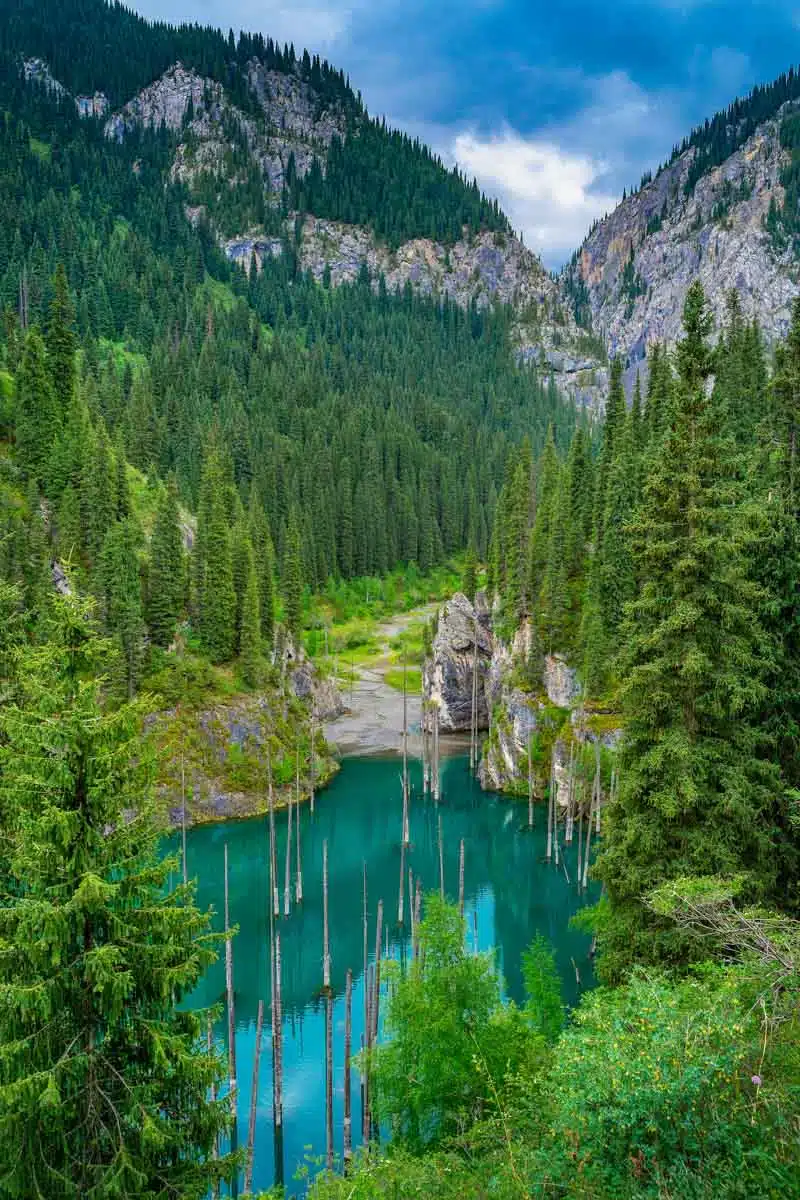
Kaindy Lake was my favorite place in all of Kazakhstan, and it should be pretty easy to see why.
It’s one of the most brightly-colored and strange lakes I’ve ever seen, with an outcropping of white tree trunks sticking out of its otherwise glass-like waters.
These trees used to stand in the valley before it was a lake, and remained there after the waters and glacial melt started to enter the region.
To do this, you’ll need to take a bus, taxi, or private car to Saty village. There’s a rumor about a bus at 9 am from Almaty to Saty, but I was never able to confirm this. I came to Saty as part of my tour.
From Saty, you need to take another marskrutka (4WD) to Kaindy Lake. From the parking lot, you can walk around the lake, to the front viewpoint (pictured above) or the back side, where swimming is permitted.
After your adventure at Kaindy, you’ll need to spend the night in the area. You have two options for accommodation here: camping at Kaindy Lake (a prime spot by the lakeside) or staying in a yurt/guesthouse in Saty village.
Day 6: Kolsai Lakes National Park
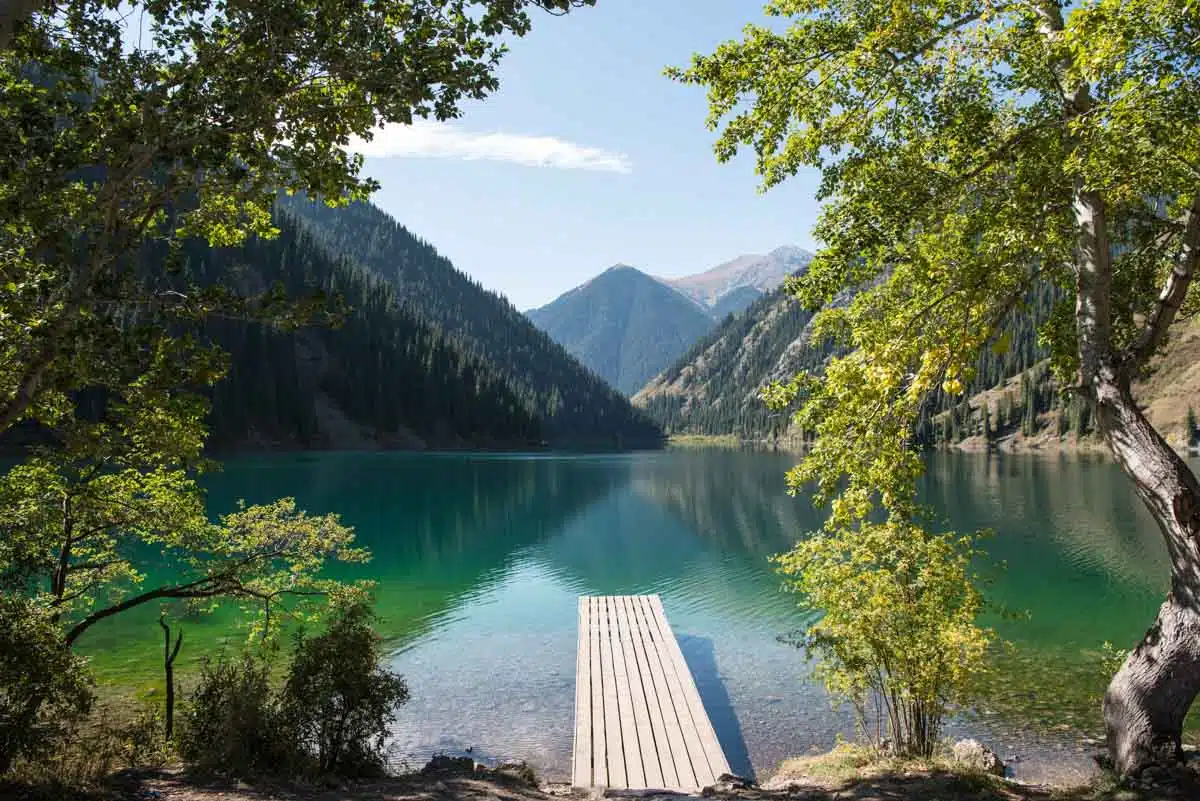
Avid hikers – you shouldn’t miss Kolsai Lakes on your Kazakhstan itinerary.
Filled with 3 magnificent glacial lakes surrounded by mountains and endless miles of emerald evergreen forests, Kolsai is the perfect place to spend a day (or two) hiking. You can also go for a swim in the second lake, but keep in mind that it’s VERY cold.
Here, there are dozens of miles of trails you can take to 3 different glacial lakes within this national park. I did a day hike to the second lake, which was ~17 km round trip.
To get here, you can drive (4WD) or take a marshrutka from Saty village. Upon arrival, there’s a small fee to enter the park. You’ll spend another night in Saty.
Day 7: Altyn-Emel & Singing Sand Dunes
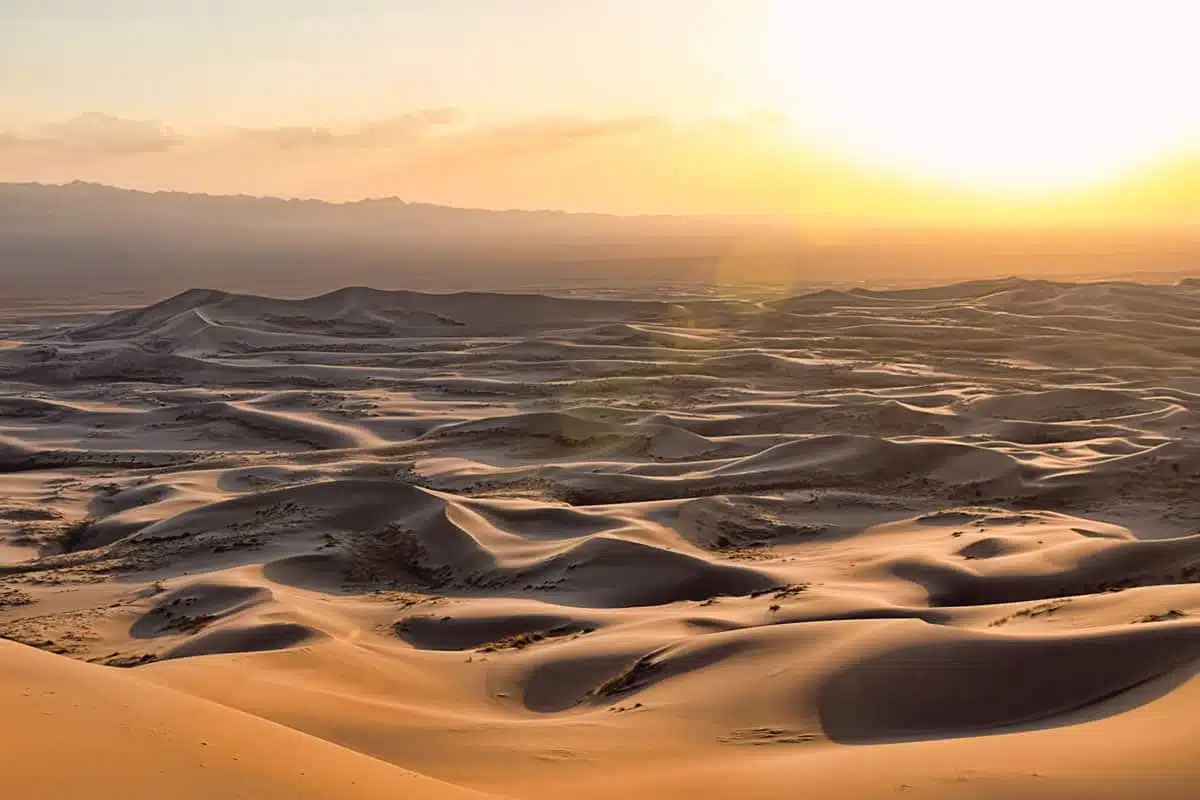
The next day is a driving day – you’ll be headed to the giant sand dunes of the Almaty area in Altyn-Emel National Park.
Start early because the drive is really long – likely 4-5 hours or more. However, once you get to Altyn-Emel, you won’t be disappointed. It’s not a huge complex of sand dunes, but the unique thing about it is that it’s surrounded by flat steppe.
You drive for miles on the flattest, most open road ever, and BOOM, you suddenly see a giant golden sand dune pop up out of nowhere. It’s called the “singing sand dune” because the winds cause a low, rumbling hum if the conditions are perfect.
After you’ve hiked up and around the sand dunes, you can head back to Almaty and spend the night there at FM Hostel Almaty (budget) or Renion Park Hotel (mid-range).
Day 8: Departure
On your last day, you’ll head to the airport for departure. One week in Kazakhstan flies by, doesn’t it?
If You Have More Time in Your Kazakhstan Itinerary
One week in Kazakhstan is definitely enough to get a feel for the culture and nature of the country, but if you can take an extra week here, I’d highly recommend it. If you have an additional week in Kazakhstan, here are a couple more places you can explore.
Shymkent & Turkestan
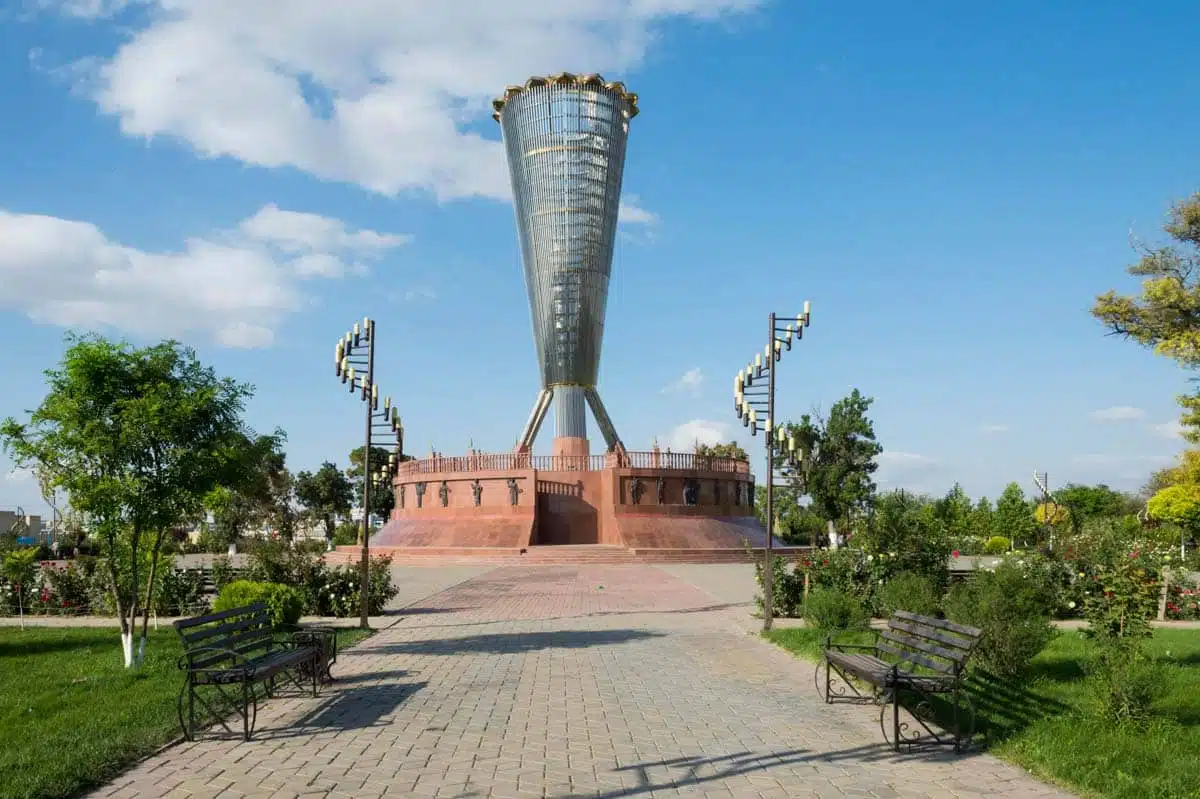
If you’ve got a few more days, Shymkent and Turkestan are the easiest places to visit from Almaty.
In Shymkent, you can experience the most hospitable people in all of Kazakhstan (true story), and use it as a jumping off point to experience the Aksu Canyon, Aksu-Zhabagly Nature Reserve, and the Tian Shan Mountains.
Turkestan is famous for its Silk Road-style mausoleum, adorned with gorgeous tiles and magnificent architecture.
To get to Shymkent/Turkestan, you can hop on an overnight train, a marshrutka, or a flight to get to Shymkent from Almaty. Then, Turkestan is just a few hours on a minibus from the main bus station.
Where to Stay in Shymkent
For budget travelers, I recommend Hostel Sweet Home in Shymkent. Albina, the owner, is one of the kindest and most hospitable people I met in Kazakhstan, and she makes a delicious breakfast, too. The hostel is affordable and clean, and there’s air conditioning in all of the bedrooms. Book Hostel Sweet Home now
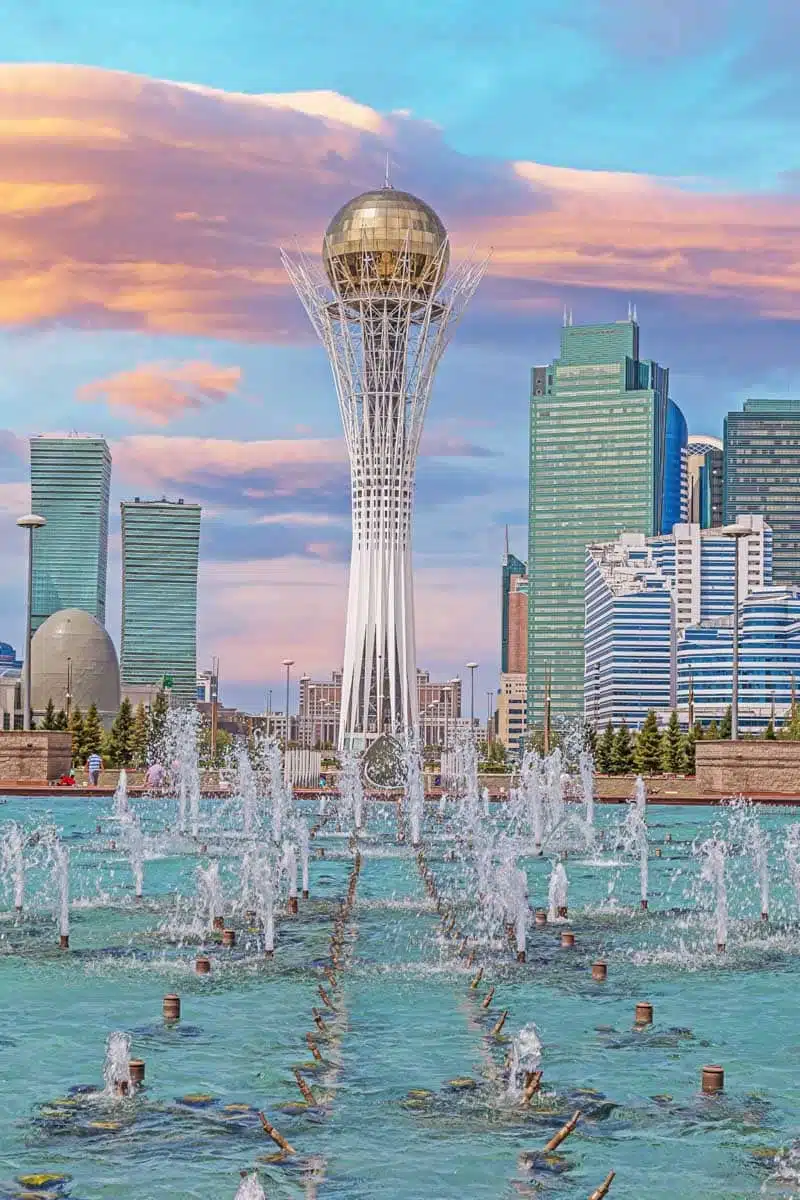
Astana is Kazakhstan’s capital, and it’s unlike any other city I’ve ever seen.
With shiny, modern, almost outer-space-like architecture and some of the most amazing mosques and museums in the country, it’s definitely worth a visit if you’re craving a city vibe.
There are a surprising number of things to do in Astana considering it’s pretty far off the typical tourist track.
From Astana, you can also take an overnight trip out to Burabay National Park, a beautiful, lake-filled park at the very northern part of Kazakhstan.
Where to Stay in Astana
For budget travelers, I recommend Hostel Forum . It is clean, cozy, and private, the staff speaks English fairly well, and it’s very affordable. It’s also easily accessible by taxi or public transportation from many of the main sites. Book Hostel Forum now
One Week in Kazakhstan: Practical Tips
How to get to kazakhstan.
While there’s no direct flight from the USA to Kazakhstan (yet), Kazakhstan is fairly easily accessible with just one layover from most major airports. It’s also easy to find direct flights from large European cities. The major international airports of Kazakhstan are in Almaty (ALA) and Astana (TSE).
Getting Around Kazakhstan
This is by far the easiest and quickest way to get around Kazakhstan, but it’s also the most expensive. Compared to domestic flights in the United States or Canada, however, inter-city flights in Kazakhstan are reasonably affordable. Local airlines Bek Air and Air Astana offer domestic flights within Kazakhstan.
Between Astana, Almaty, and Shymkent there are slow trains that run regularly. However, they are really slow. Like 20+ hours slow. It’s much, much more time efficient to take a plane or even a bus.
If you really want to experience trains in Kazakhstan, I recommend taking one between Shymkent and Almaty (or vice versa), as that ride only takes 11-12 hours. You can choose from first class (2-berth), second class (4-berth), and the platzkart (open berth car).
Obviously the platzkart is the cheapest, but you can choose your service class depending on your desired level of comfort. You can look at schedules and book train tickets on tickets.kz . You can also purchase tickets in person at any train station.
By Bus/Marshrutka
Marshrutkas, or mini buses, leave from the main bus station of every city and go to a variety of towns and cities around Kazakhstan and Central Asia. You can expect to pay anywhere from <$1 (local marshrutkas) to $7-10 (long distance marshrutkas) per ride)
Kazakhstan Itinerary: Read Next
- The Best Things to do in Astana
Love This? Save and Share on Pinterest
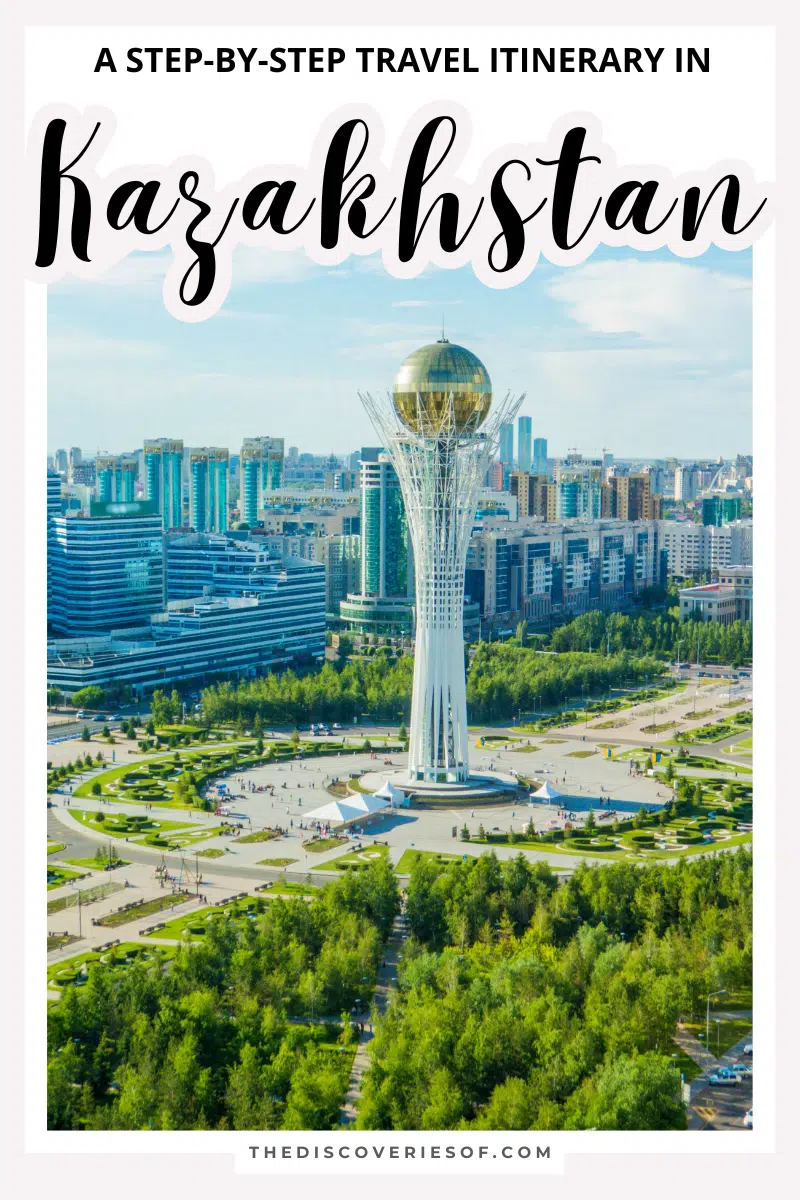
I’m Kay. I’m originally from small town Virginia, but have moved all around the East Coast and the United States for basically my entire life. I spent my childhood days blissfully wandering through the Blue Ridge Mountains, rolling in leaves, playing in creeks…you know, the usual overly adventurous 5-year-old stuff.
But those early years spent outside gave me a real problem: I’m now an adventure addict. Basically, if I’m not at my computer banging out articles or photos, I’m probably out hiking, biking, or camping somewhere beautiful.
Related Posts
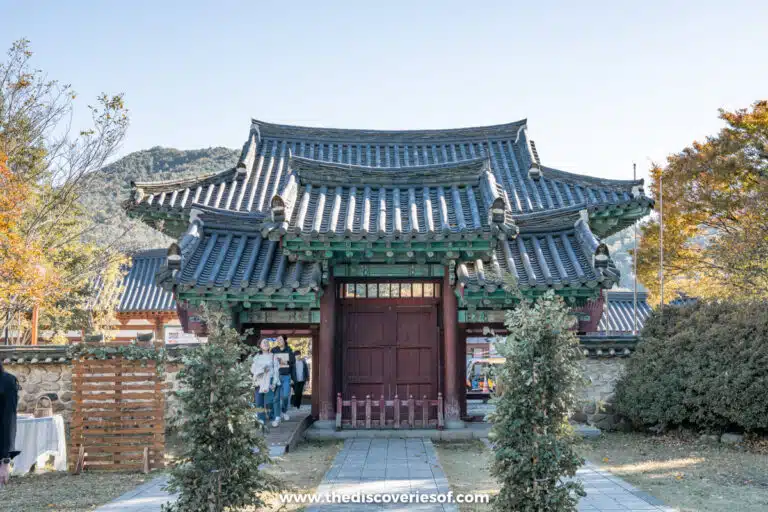
A Complete Guide to Visiting Jeonju’s Hanok Village
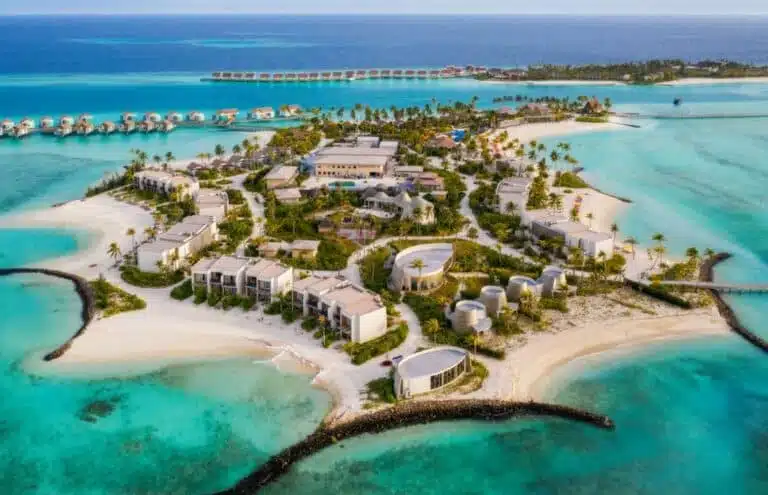
The Best Things to Do in the Maldives: Unmissable Attractions to Add to Your Bucket List
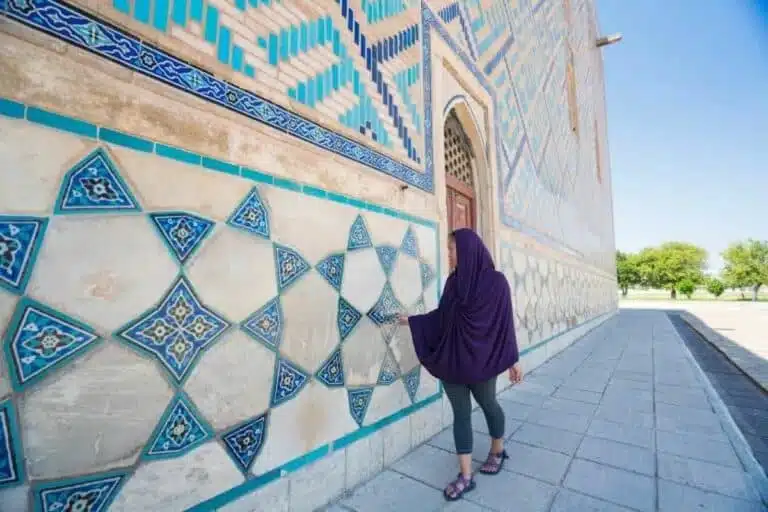
Central Asia Travel Tips: 35 Helpful Things I Wish I Knew Before Traveling in Central Asia
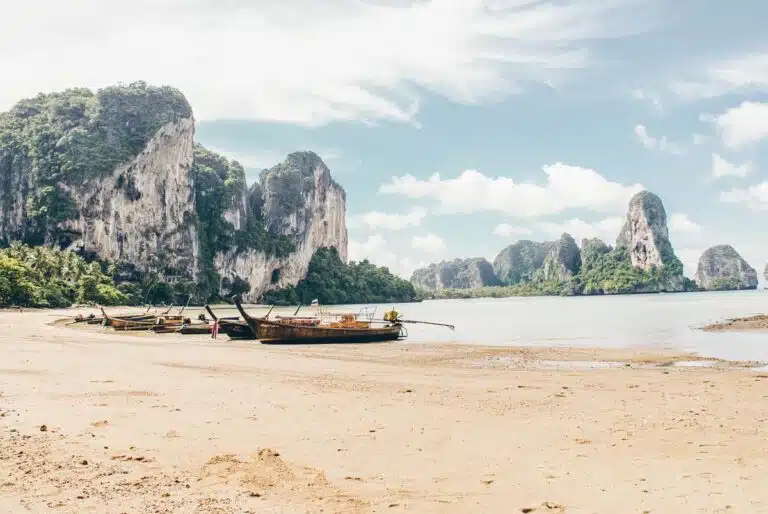
Railay Travel Guide: Discover This Gorgeous Corner of Thailand
Thanks for sharing the info. I’m gonna use it to plan a trip to KZ soon!
Hey. Awesome guide! Very helpful blueprint for any visit. Just sharing an update. The scaffolding around the cathedral is gone, the interior is accessible and beautiful, but the center of the sanctuary is closed off.
Leave a Reply Cancel reply
Your email address will not be published. Required fields are marked *

Follow me on Instagram for travel inspiration, tips, and guides.

Kazakhstan Travel Guide
Your ultimate kazakhstan travel guide, with tips, and things to see and things to do in kazakhstan. great for first-time and returning travelers..
When most people think of Kazakhstan they probably picture Borat and big open spaces. It is true, it is full of wide open spaces. When traveling through the country you will see farmland for as far as the eye can see.
You’ll see deserts and oil fields and a vast landscape with wide-open skies. It’s beautiful, like a desert. You’ll feel as if you are the only person in the world. While we camped our way through the country, we would sit alone at night in silence.
Every so often a farmer or family would stop at our campsite to say hello or watch us work. They couldn’t understand why we were sitting in the middle of a field. We loved the solitude of the countryside.
This Kazakhstan travel guide will help you plan your next vacation.
Popular City Guides
- Beautiful Isolated Places
- Bucket List Travels
- Tips for Driving The Mongol Rally
Our Highlight
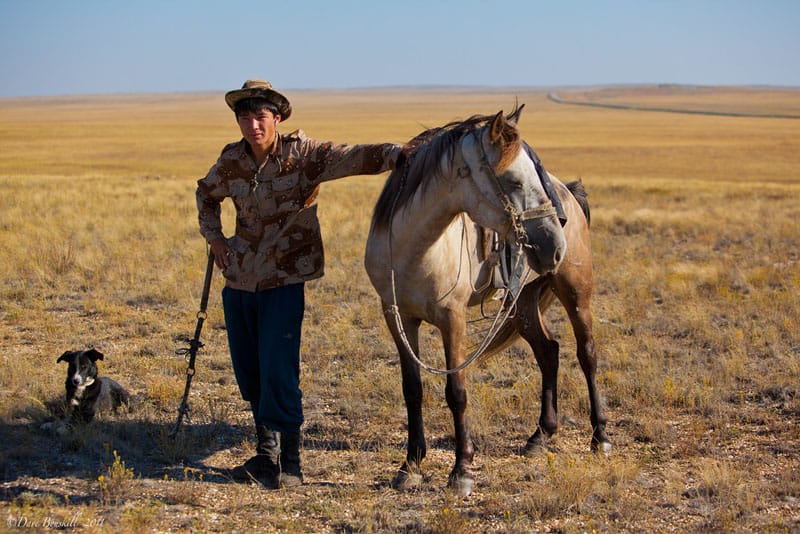
Table of contents
Table of Contents
Fast Facts about Kazakhstan
- Russian power voltage is 220V 50Hz; Plug C & F
- The Kazakhstan currency is the Kazakhstani tenge is around 240 KZT to 1 USD
- Try Shubat or Kumiss. Camel milk or horse milk.
- Make sure to pack some extra wet wipes and stomach/diarrhea tablets!
- Upon arrival in Kazakhstan, citizens of foreign countries are required to obtain an immigration card that is date stamped. Hotel registration is also recorded on the card. Foreigners are given a grace period of 5 days to register, however there are specific cases for different countries so make sure to check out this information before you land in Kazakhstan.
- Travelers from specific countries are exempt from visas while others (like Canada, Belgium, Australia) must be obtain a visa in advance and not upon arrival. Check with the local Kazakhstan embassy for up to date information and requirements.
- Clothes are line-dried. Many areas of the country lack washing machines as well, so prepare for the possibility of hand washing!
- Some areas that are popular with travelers, including Big Almaty Lake, Kolsai lakes, Medeo, Charyn canyon, Alakol lake, Monakhov Gorge and other are now “closed” areas. Travelers need to obtain permissions to enter from the Immigration police Office in Almaty.
- Water is cities is chlorinated, so it is safe to drink but not recommended. Bottled water is also widely available.
Things to See and Do in Kazakhstan
- Kaindy Lake – This lake in the mountains was formed after a natural disaster (earthquake) that occurred in 1911. It is famous as a turquoise mountain lake.
- Baikonur Cosmodrome – It was initially formed as a secret missile testing site and a base for Soviet Space Programs. It is a peek spot for travelers to look into history.
- The Aral Sea – This is a rusting ship that is present in a desert where there used to be a sea. There was an environmental disaster caused by man-made activities that left it dry.
- Astana, Kazakhstan: The City at Night – Before going there, we had never heard of its capital city Astana, we didn’t know anything about architecture or its people and we didn’t really know what countries bordered it.
- Kazakhstan a Country of Contrasts – When most people think of Kazakhstan they probably picture Borat and big open spaces. It is true, it is full of wide-open spaces.
Accommodation
Budget – You can stay in budget hotels for around $21 a night in Kazakhstan. These often include free breakfast, internet access, and a TV.
Mid-Range – Mid-range hotels will cost you around $79 a night in Kazakhstan and may include a restaurant, airport transfers, and free parking, WI-FI, and a gym.
High End – High-end hotels start at around $118 per night and may include a private balcony, pool, business center, airport transfer, laundry facilities, and free toiletries.
Check out our favorite booking platforms Booking.com , Tripadvisor and VRBO for the best deals on accommodation in Kazakhstan.
- Beshbarmak – This is the national dish of Kazakhstan and among nomadic Turkic peoples in Central Asia. The name means five fingers, as the nomads used to eat it with their hands. It is a dish with boiled meat mixed with noodles and spiced with onion sauce.
- Shashlik -This dish consists of meat cubes with some vegetables cooked over an open fire or a bed of coals.
- Kazy – This common food is a traditional sausage-like food of Kazakhs, Kazy is a common element on a dastarkhan, a table set for a festive meal.
- Manti Dumplings – The dumplings are made when the manti filling (usually ground lamb) is spiced with black pepper. Manti is served topped with butter, sour cream, or an onion sauce or garlic sauce.
- Pelmeni – This is a thin dough dumpling with a filling of meat (beef, lamb, pork) mixed with spices such as black pepper, diced onions, and garlic.
- Baursak – This common appetizer is a puffy bread that is fried and is decorated in a criss-cross pattern.
- Kumis -This dairy product is a fermented product made from mare’s milk. It contains more sugar than cow or goat’s milk.
The Best Ways to Get Around Kazakhstan
Getting to kazakhstan.
Flights: Almaty International Airport is the largest in Kazakhstan, located 15 km northeast of the Almaty that is the country’s largest and commercial capital. Direct flights to Kazakhstan are available from Manchester, Spain, and UAE.
You can check for the best flights to Kazakhstan on Skyscanner .
Transportation:
Buses : Buses in Kazakhstan cost up to 0.21 USD for a one-way ticket and do not depend on the distance.
Taxis / Uber : Initial fare per km in Kazakhstan starts from $1.70.
Car Rental: Local car services in Kazakhstan have their prices varying from $5 – $6 for 3 hours, whereas International car rentals cost up to $40 per day. You can also compare prices here .
When to go To Kazakhstan
- The best time to travel to Kazakhstan is during summers, between July – August. The weather is perfect throughout the country in these months. It is the peak season and the best occasion for hikers too. The views are also ideal in these months.
Where to Stay in Kazakhstan
- Holiday Inn ALMATY – This is a 4-star hotel in Almaty with a restaurant and a fitness center. It also provides other amenities such as a conference room, 24-hour room service. It offers minibars and safes in 277 accommodations. Refrigerators, as well as coffee makers, are provided, and bathrooms include hairdryers and complimentary toiletries.
- Rixos Almaty Hotel – Rixos Almaty Hotel offers complimentary bottled water and rooms with open balconies. Smart televisions with wireless internet access and a fitness center for the guests. A full-service spa and a sauna are also available.
- The Ritz-Carlton, Astana – It is the most booked hotel in Almaty. It provides free breakfast, restaurants, internet access, air conditioning, laundry services, free parking, and bars.
Check out our favorite booking platforms Booking.com , Tripadvisor and VRBO for the best deals on accommodation.
What to Pack for Kazakhstan
Kazakhstan has a continental climate, which means that it can have some extreme temperatures. In summer (June to August) it can climb above 36 degrees °C (96°F) and in winter (December to February) you can expect temperatures to be as low as -26 degrees °C (-10°F).
Snow stays on the ground for almost half the year. The best time to travel is during spring (May to June) and autumn (September to November) when temperatures are mild. While it can rain at any time of year- the desert gets very little rainfall while in the mountains it is best not to leave home without your rain gear.
- Layers – You could possibly be sweating all afternoon and then be freezing by nightfall! Make sure to stock up on the layers. If you plan on heading to Kazakhstan during the winter make sure to pack the winter essentials: Warm, waterproof, fleece-lined boots big enough to wear with heavy wool socks, hat, waterproof gloves and thermal long underwear!
- Classic Basic items – You do not need to be a fashionista to blend in. The key is in embracing neutral toned items that can be mixed and matched easily. Avoid logos, baseball caps, shorts, hoodies, flip-flops and running shoes as these items scream tourist!
- Rain Essentials – the weather can be a little unpredictable so make sure to pack a lightweight easily compacted waterproof/windproof jacket and a pair of waterproof boots.
- Personal Safety products – Certain areas in Albay are known as pickpocket hotspots. Before leaving for your trip, make sure to pack some personal safety products , like money belts and locks, so that you can keep your valuables safe on your trip.
- See our packing tips: packing tips
Kazakhstan Travel Guide: Best Booking Resources
Whenever we travel to we make sure to start with these companies. We have tried a lot of different ones over the years and all of these have consistently proven to be the best when it comes to offering great prices.
We have used every one of these personally and continue to do so.
- Booking.com : This is our go site to when comparing prices for accommodation. It usually has the cheapest prices, especially in Europe and we love their interface. Not to mention you get free cancellation and you are guaranteed the best price.
- Trip Advisor : What we like about Trip Advisor is that we can look at all the reviews and then book our accommodation. TripAdvisor is where we go when we want to compare prices with multiple accommodation providers.
- VRBO : is the main search engine we use when we are looking for a home or apartment rental. It can sometimes be cheaper than hotels and it is the best way to stay in areas that offer a more local feel.
- Hostelworld : With one of the largest databases of hostels in the world, Hostelworld is the go-to site when you are looking for budget accommodation.
- Skyscanner : This is the first place we check for flights. It consistently comes back with the cheapest and best options. It allows us to compare a lot of airlines to get the best price.
- Rome 2 Rio : If you want to see how to get somewhere by plane, train, bus, ferry or car Rome2Rio lays it all out for you as well as related costs.I love how they show it all to you on a Google Map and it works offline.
- Get Your Guide: For all your day trip and city guide needs, we use Get Your Guide. It has the world’s largest collection of things to do with more than 30,000 activities in 7500 destinations.
- World Nomads Insurance: When traveling to Italy you should always have travel insurance. We have found the best bang for your buck is by far World Nomads.
Kazakhstan Travel Guide: Related Articles
To browse all our articles and guides about Kazakhstan click here.
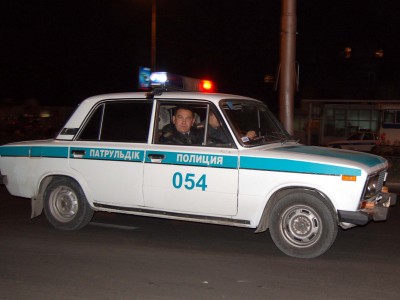
How to Survive Being Stopped by Kazakhstani Police

- ALL TRAVEL GUIDES
- DESTINATION FILTER
TOP OF PAGE
Quick Facts
Best Time To Go
Cost & Spending
Travel Tips
Regions & Highlights
What To See & Do
Itineraries
What To Eat
Where To Stay
Trip Planning

Welcome traveler!
We're Andre & Lisa, adventurers and experienced budget travelers.
We have over two decades of travel experience and since 2018 have led a full-time nomadic lifestyle.
L earn more about us !
Thank you for visiting and we hope you find value in our destination pages! We thoroughly research and curate all content ourselves and everything you find on this site is put together by only the two of us.

KAZAKHSTAN TRAVEL GUIDE
Kazakhstan is the world's ninth biggest country by size, and it is more than twice the size of the other Central Asian states combined. It will be many travellers' first port of call on their Central Asian adventure, and there is much for the intrepid traveller to enjoy. Kazakhstan is the richest country in Central Asia, due to its large oil and natural gas reserves. The country inherited the culture of the ancient Silk Road, Nomadic lifestyle and the Soviet Union which had a great influence on its formation. This mixture makes Kazakhstan so different from any other country in the region and in the world. Its largest metropolis, Almaty, is a long-standing trading hub whose landmarks include Ascension Cathedral, a tsarist-era Russian Orthodox church, and the Central State Museum of Kazakhstan, displaying thousands of Kazakh artefacts.
DO YOU NEED A VISA FOR KAZAKHSTAN?
<<VISA RESULT>>
<< Visa Details >>
For the latest requirements or for application click
Let iVisa take the pain out of travel planning and assist you with Electronic visas, Travel Authorizations, Visas on Arrival, and even Paper Visas. They can also help with Health Declarations and Embassy Registrations. If you're from the US, they provide a One-Stop Shop to renew your Passport securely and error-free.
⬇️ REGIONAL GUIDES ⬇️
Travel guide.

⬇️ COUNTRY GUIDE ⬇️

Capital : Nursultan
Currency : tenge (KZT)
Area : 2,724,902 km²
Population : 18,28 million (2018)
Language : Kazakh (official, state language) 64.4%, Russian (official) 95% (2001 estimate)
Religion :Muslim 67%, Russian Orthodox 24%, Protestant 2%, other 7%
Electricity : 220V, 50Hz, European plug
- 7 January, Orthodox Christmas
- 8 March, International Women’s Day
- 21–23 March, Nauryz Meyramy (Persian New Year)
- 1 May, Unity Day
- 7 May, Homeland Defenders’ Day
- 9 May, Victory Day
- 6 July, Day of the Capital
- 30 August, Constitution Day
- 25 October, Republic Day (1990)
- 1 December, Day of the First President
- 16 December, Independence Day (1991)
Also, Eid al-Adha.
QUICK BOOKING RESOURCES

SEASONS AT A GLANCE
Most destinations have different times of the year when they’re more or less popular with tourists.
Peak Season
Shoulder Season
Off Peak Season

BEST TIME TO VISIT KAZAKHSTAN
Kazakhstan has four distinct seasons: winter, spring, summer, and fall.
- Winter (December-February) is the coldest season, with temperatures often dropping below freezing, especially in the northern regions. The northern and central regions of the country will experience heavy snowfall.
- Spring (March-May) is a transitional season with increasing temperatures and less snowfall. The weather becomes milder and plants begin to bloom.
- Summer (June-August) is the warmest season, with temperatures ranging from 20-30C (68-86F) in the northern regions and 30-40C (86-104F) in the southern regions. This is a great time for outdoor activities such as hiking, camping, and swimming.
- Fall (September-November) is a transitional season with decreasing temperatures and the leaves on trees changing colors. This is a great time for cultural activities and for seeing the beautiful fall foliage.
Overall, the climate in Kazakhstan is continental, with long, cold winters and hot summers.
The best time to visit Kazakhstan depends on what you're interested in seeing and doing. If you're interested in outdoor activities such as hiking and skiing, the best time to visit is during the summer months from June to August. The weather is warm and there is plenty of sunshine, making it perfect for exploring the mountains and other natural attractions. If you're more interested in cultural activities, the best time to visit is during the spring (April-May) or fall (September-October) when the weather is mild and the crowds are smaller.
BEST TIME FOR:
The snow season in Kazakhstan runs from December to April, and is wonderfully cheap and peaceful when compared to ski resorts in Western Europe.
Kazakhstan is a large country with varied climate. The southern regions are suitable for trekking from as early as late March, while in the northerly regions the trekking season doesn’t begin until May. The best time to reach some of Kazakhstan’s highest peaks is from June to August.
Although there’s some debate as to whether the Caspian Sea should be regarded as a sea or simply the world’s biggest lake, Kazakhstan does have a few beaches such as Aktau Beach and Borovoe Beach. You could also visit one of the beautiful lakes such as Jasybay Lake and Balkhash Beach. Or why not the indoors Sky Beach Club on the top floor of the Khan Shatyr Entertainment Center!
Kitesurfing: Spot Maps, Wind Season
FIND ALTERNATIVES TO KAZAKHSTAN?
Find your perfect destination.
Advanced, real-time destination filter by visa required, region, health risk, travel budget, country value, tourist seasons, best weather and activity or sport.
MORE POSTS ON KAZAKHSTAN


WEWILLNOMAD

KAZAKHSTAN TRAVEL COSTS
The cost of traveling to Kazakhstan can vary depending on factors such as the time of year, your chosen mode of transportation, and your accommodation and dining preferences.
- For a budget trip, you can expect to spend around $30-50 per day on accommodation, $10-15 per day on food and transportation, and $50-100 for activities. This would include staying in budget accommodation options such as hostels or guesthouses, eating at local cafes and street food vendors, and taking public transportation.
- For a mid-range trip, you can expect to spend around $50-100 per day on accommodation, $15-30 per day on food and transportation, and $100-200 for activities. This would include staying in mid-range hotels or vacation rentals, eating at mid-range restaurants, and taking private transportation.
- For a luxury trip, you can expect to spend around $100-300 per day on accommodation, $30-50 per day on food and transportation, and $200-500 for activities. This would include staying in luxury hotels or resorts, eating at high-end restaurants, and taking private transportation.
It's also worth noting that if you are planning to visit the country during peak season, prices for accommodation and activities may be higher. Also, prices for international flights may vary depending on the location you're flying from.
You can save money by traveling during the shoulder seasons, and by doing your research ahead of time to find the best deals on accommodation and activities.
Here are some more sample costs for a trip to Kazakhstan:
- Accommodation: A budget-friendly option would be a hostel or guesthouse, which can cost around $10-25 per night. A mid-range option would be a 3-star hotel, which can cost around $50-100 per night. A luxury option would be a 5-star hotel, which can cost around $150-300 per night.
- Food and drink: A meal at a local cafe or street food vendor can cost around $5-10. A meal at a mid-range restaurant can cost around $15-25. A high-end restaurant can cost around $30-50. A beer or a glass of wine can cost around $2-5.
- Transportation: Public transportation such as buses and trains are relatively inexpensive and can cost around $1-5 per ride. Taxis are also inexpensive, with a short ride costing around $5-10. If you plan to rent a car, you should expect to pay around $50-70 per day.
- Activities: Entrance fees to museums and historical sites can cost around $5-15. Outdoor activities such as hiking and skiing can cost around $15-50. If you plan to take a guided tour, you should expect to pay around $50-100 per day.
- Visa: you need a visa to visit Kazakhstan, the cost of visa will depend on the type of visa, the country you are from and how you apply for it, it can range from $20 to $200
It's worth noting that these are just rough estimates and prices can vary depending on the location and time of year. It's always a good idea to check prices for specific activities and accommodations in advance to get a better idea of what you can expect to pay.
VALUE RANK:
Find discount flights to kazakhstan, travel tips for kazakhstan.
Here are some travel tips for Kazakhstan:
- Get a visa: Visitors to Kazakhstan are required to have a visa. Make sure to research the visa requirements for your country and apply for a visa well in advance of your trip.
- Learn some basic Russian or Kazakh: While many people in the cities speak English, it's always helpful to know a few basic phrases in the local language.
- Bring warm clothes: Kazakhstan has a continental climate, with long, cold winters and hot summers. Even in the summer, it can get chilly at night, so make sure to bring warm clothes.
- Be aware of the time change: Kazakhstan is in a different time zone than many other countries, so make sure to adjust your watch and plan your schedule accordingly.
- Respect the culture: Kazakhstan has a rich and diverse culture. Be respectful of local customs and traditions and dress modestly when visiting religious sites.
- Pack for the outdoors: If you plan to do outdoor activities such as hiking or skiing, make sure to pack accordingly. Bring appropriate footwear, clothing, and gear.
- Be aware of the Altitude: Some places in Kazakhstan are at high altitude, such as Almaty, be aware of the altitude sickness symptoms and take the necessary precautions.
- Be prepared for the cost of internet: Internet is not as widely available in Kazakhstan as it is in some other countries, and it can be expensive when you can find it. Consider bringing a pocket wifi or downloading offline maps to help navigate.
- Have your passport and documents ready: It's always a good idea to carry your passport, visa and other important documents with you at all times, as you may be asked to show them at any time.
- Enjoy your trip: Kazakhstan is a beautiful country with a rich culture and history. Take the time to explore, meet new people, and try new things.
REGIONS & HIGHLIGHTS OF KAZAKHSTAN
Kazakhstan is a large country with several regions that offer different types of attractions and experiences. Here are a few of the main regions and some of their highlights:
- Almaty : This is the largest city and the former capital of Kazakhstan. It is located in the southeast of the country and is known for its natural beauty, including the Tian Shan mountain range, which offers great opportunities for hiking, skiing and climbing. The city also offers a mix of Soviet-era architecture and modern buildings, as well as plenty of shopping and dining options.
- Astana : This is the current capital of Kazakhstan and it is located in the north-central region of the country. Astana is known for its modern architecture, including the iconic "Bayterek" tower and the "Khan Shatyr" entertainment center, which is shaped like a giant tent. Visitors can also explore the National Museum of Kazakhstan, which provides an overview of the country's history and culture.
- The Caspian Sea : This region is located in the northwest of the country and is known for its beautiful beaches, as well as its oil production. Visitors can take boat trips to see the sea and its wildlife, and also visit the city of Aktau and the nearby Mangistau region, which is known for its unique rock formations and natural beauty.
- The Kazakh steppe : This region is located in the central part of the country and is known for its wide-open spaces, traditional nomadic culture, and wildlife. Visitors can take horseback rides, see traditional Kazakh yurts, and also visit the city of Kostanay, which is known for its historical sites and museums.
- The Altai Mountains : This region is located in the southeast of the country and is known for its natural beauty and outdoor activities. Visitors can go hiking, skiing, and climbing in the Altai Mountains, and also see the colorful rock formations of the Charyn Canyon and the ancient petroglyphs of Tamgaly.
- Baikonur Cosmodrome : This is the world's first and largest operational space launch facility, located in the Kyzylorda Region. Visitors can take tours of the cosmodrome, see the launch pads and spacecraft, and learn about the history of space exploration.
These are just a few examples of the many regions and attractions that Kazakhstan has to offer. Each region has its own unique culture and history, and visitors can explore a variety of different landscapes and activities.
WHAT TO SEE AND DO IN KAZAKHSTAN
I'm a paragraph. I'm connected to your collection through a dataset.
Kazakhstan is a country with a diverse range of things to see and do. Here are some of the best things to experience when visiting the country:
Explore Almaty : This is the largest city and the former capital of Kazakhstan, and it offers a mix of natural beauty, Soviet-era architecture, and modern amenities. Visitors can take a cable car to the top of the Medeo Gorge for a panoramic view of the city and the Tian Shan mountain range, and also explore the Central State Museum of Kazakhstan, which tells the story of the country's history and culture.
Visit Astana : This is the current capital of Kazakhstan and it is known for its striking modern architecture. Visitors can take a stroll along the Left Bank of the Ishim River and see the iconic "Bayterek" tower and the "Khan Shatyr" entertainment center, and also explore the National Museum of Kazakhstan, which provides an overview of the country's history and culture.
Enjoy the natural beauty : Kazakhstan is home to a wide range of natural landscapes, from the Tian Shan mountain range to the Kazakh steppe. Visitors can go hiking, skiing, and climbing in the mountains, and also take horseback rides to see the steppe and its wildlife.
Visit the Caspian Sea : The Caspian Sea region is located in the northwest of the country and offers beautiful beaches, as well as opportunities to see the sea and its wildlife. Visitors can take boat trips, visit the city of Aktau, and also explore the nearby Mangistau region, which is known for its unique rock formations and natural beauty.
Experience the nomadic culture : Kazakhstan has a rich nomadic culture, which visitors can experience by visiting a traditional Kazakh yurt and taking part in activities such as horseback riding or archery. Visitors can also visit the cities of Kostanay, Turkestan and Turkestan to see the historical sites and museums that tell the story of this culture.
Discover the Altai Mountains : The Altai Mountains region is located in the southeast of the country and is known for its natural beauty and outdoor activities. Visitors can go hiking, skiing, and climbing in the Altai Mountains, and also see the colorful rock formations of the Charyn Canyon and the ancient petroglyphs of Tamgaly.
Visit the Baikonur Cosmodrome : This is the world's first and largest operational space launch facility, located in the Kyzylorda Region. Visitors can take tours of the cosmodrome, see the launch pads and spacecraft, and learn about the history of space exploration.
Try Local Food : Kazakhstan has a unique and delicious cuisine that is influenced by the nomadic past and neighboring countries. Some must-try dishes include beshbarmak, which is a traditional noodle dish, and kazy, which is horse meat sausage.
These are just a few examples of the many things to see and do in Kazakhstan. Visitors can also enjoy shopping for souvenirs and experiencing the local culture.

WHAT TO EAT IN KAZAKHSTAN
Kazakhstan has a unique and delicious cuisine that is influenced by its nomadic past, neighboring countries, and the local ingredients available. Here are some traditional dishes you should try when visiting the country:
- Beshbarmak : This is a traditional Kazakh dish made of boiled noodles, meat (usually mutton or horse meat) and onions. It is typically served with a flavorful broth and is often considered the national dish of Kazakhstan.
- Kazy : This is a traditional sausage made from horse meat and it's a popular dish across the country. Kazy is served cold and sliced thin, and it's usually accompanied by a side dish such as bread, onions, and sometimes a sour cream.
- Kürtöskalács : This is a sweet pastry that is similar to a chimney cake, it's made by wrapping a dough around a cylinder-shaped baking spit, and then rolling it in sugar or chocolate.
- Kazy lagman : This is a traditional dish that is similar to the Chinese dish of lamian, it's made from hand-pulled noodles, meat and vegetables.
- Plov : This is a traditional Central Asian dish that is made with rice, meat and vegetables. It's similar to the dishes of pilaf or pilau, but it's a bit more hearty.
- Lagman : This is a hearty soup made with meat (usually beef, lamb or horse meat) and vegetables. It's a dish that is very popular in Central Asia, and it's made with a thick, hand-pulled noodle.
- Shashlik : This is a popular dish across the region, it's made with skewered and grilled meat, usually lamb or beef, it's often served with a side of bread and a salad.
- Kazakh tea : Kazakhs are known for their love of tea, and it's a staple in the country. The traditional way of drinking tea is with milk and salt, and it's usually served in a bowl.
- Kazakh dairy products : Kazakhs are known for their dairy products, such as kurt, which is a hard cheese, and ayran, which is a yogurt drink.
These are just a few examples of the many delicious dishes that Kazakhstan has to offer. Visitors should also be sure to try some of the local fruits and vegetables, which are often used in traditional dishes.
LGBTQ IN KAZAKHSTAN

WHERE TO STAY IN KAZAKHSTAN
For a first-time visit to Kazakhstan, it's recommended to base yourself in Almaty, the largest city and cultural capital, offering a mix of modernity, history, and natural beauty. Here's why:
Where to stay in Almaty:
Almaty is known for its stunning mountain scenery, vibrant cultural scene, and diverse culinary offerings, making it an ideal starting point for visiting Kazakhstan as you can explore attractions like Kok-Tobe Hill, Medeu Skating Rink, and Almaty Central Park.
Budget : Renion Residence : Renion Residence offers budget-friendly accommodations with comfortable rooms and basic amenities. It's conveniently located in the city center, close to attractions like Panfilov Park and Zenkov Cathedral.
Mid-range : Rahat Palace Hotel : Rahat Palace Hotel offers mid-range accommodations with elegant rooms and modern amenities. Situated in a prime location, guests can enjoy easy access to Almaty's business and entertainment districts.
Luxury : The Ritz-Carlton, Almaty : The Ritz-Carlton, Almaty provides luxurious accommodations in a sophisticated setting. It boasts opulent rooms and suites, exquisite dining options, and exclusive facilities like a spa, fitness center, and indoor swimming pool.
Tip : Consider visiting Almaty during the summer months (June to August) for milder weather and outdoor activities in the nearby mountains, and book accommodations in advance for the best rates and availability.
Additionally, for those interested in exploring the natural wonders of Kazakhstan, consider staying in the city of Nur-Sultan (formerly Astana):
Where to stay in Nur-Sultan:
Nur-Sultan is the capital city of Kazakhstan and known for its futuristic architecture, cultural institutions, and proximity to natural attractions like Borovoe National Park. Also explore attractions like Bayterek Tower, Nur-Astana Mosque, and Khan Shatyr Entertainment Center.
Budget : Belon-Lux Hotel offers affordable accommodations with basic amenities and a central location near Astana Arena.
Mid-range : Kazzhol Hotel provides comfortable rooms and modern facilities with a convenient location in the city center.
Luxury : The St. Regis Astana offers luxurious accommodations with upscale amenities, including a spa and multiple dining options.
Tip : Consider visiting Nur-Sultan during the shoulder seasons (spring and autumn) for milder weather and fewer crowds and take advantage of hotel deals and packages offered during major events and festivals.
CHOOSE ANOTHER DESTINATION
Recent blog posts, plan your trip, visa services, let ivisa take the pain out of travel planning and assist you with electronic visas, travel authorizations, visas on arrival, and even paper visas. they can also help with health declarations and embassy registrations. if you're from the us, they also provide a one-stop shop to renew your passport securely and error-free..
FLIGHTS Find a cheap flight by using Sky scanner or Momondo . These are our favourite flight search engines. They index other travel websites and airlines across the globe to easily find you the best deal.
ACCOMMODATION
Booking.com is our number one resource for researching and booking accommodation. In addition to Booking.com , we have found Agoda.com to consistently returns the cheapest rates in Southeast Asia.
TRANSPORT
DiscoverCars.com is a leader in online car rental bookings; we compare car rental deals from many companies so that you can choose which is best for your trip. 12Go connects the world door-to-door, from transfers to flights, under the same user-friendly ticket.
INSURANCE Travel insurance can protect you against unexpecte d illness, injury, theft, and cancellations.
Heymondo (International Travel Insurance)
World Nomads (Travel / medical insurance for long-term travellers and nomads)
SafetyWing Nomad Insurance (Travel / medical insurance for long-term travellers and nomads)
Need more help to book your trip? Check our complete resource page for all the best companies to use when you travel. You will only find the companies we use ourselves.
Please note that some of the links above may be affiliate links, and at no additional cost to you,
we may earn a commission if you end up making a purchase.
© 2024 Andre & Lisa

Kazakhstan Itinerary: how to spend 2 weeks in Kazakhstan
Kazakhstan is the ninth biggest country in the world and it is no surprise that when you are preparing a Kazakhstan itinerary for your upcoming trip there are a lot of options and though choices to be made.
While Kazakhstan is most famous for its empty steppes where nomads on their horses roam, there is also a huge variety of landscapes in the country. Kazakhstan’s nature is really outstanding. Did you know for example that there are alpine meadows, glittering mountain lakes, impressive desert formations, rocky canyons and quirky cities combining modern architecture with their Soviet heritage.
Kazakhstan is an excellent destination if you love culture, adventure and the outdoors. The Altay and Tien Shan mountains offer plenty of hiking opportunities and the area of Almaty is perfect to make a roadtrip around some of Kazakhstan’s best national parks .
With so much things to do in Kazakhstan it’s hard to choose. This post will help you in planning your Kazakhstan itinerary and will give you some sample itineraries for inspiration.

My Kazakhstan itinerary
In my first Kazakhstan itinerary I travelled for 3 weeks throughout the country making a circle from Nursultan (Astana) to Shymkent to Almaty and back. This trip I only used public transport and therefore only visited towns and cities that I could reach by train or bus.
My second trip in 2019 was part of a larger 3 month trip in Central Asia starting in Nursultan (Astana) and Karaganda with a stop to celebrate Nauruz in Shymkent and ending with a roadtrip around Almaty. This time I also rented a car to see Almaty’s spectacular natural parks.
When planning your own Kazakhstan itinerary your mode of transport is one thing that has a big impact of what is possible. If you are a budget traveller and prefer to travel by public transport your limited to the bigger cities and some natural attractions nearby that are reachable by bus. This way there are still a lot of things to see and do in Kazakhstan.
If you rent a car or have your own transport you will have a lot of freedom and flexibility, but remember that the distances are huge.

Kazakhstan itinerary 1: the highlights of Kazakhstan (10 days)
This first Kazakhstan itinerary includes the three most interesting cities for foreign travellers. This trip is perfect for backpackers that prefer public transport. Travel in between the cities would be by train and the daytrips I mention from the cities can be done by bus.

Day 1 & 2 : Astana
I started my Kazakhstan itinerary in Astana. Former president Nazarbayev relocated the capital in 1997 to a small town in the north where he built a completely new city to show off Kazakhstan’s oil wealth.
Whether you like the futuristic capital or not, it is an interesting start of any Kazakhstan itinerary. The capital will give you a better understanding of the country and it’s politics.
Nur-sultan is a surreal experience and the city has some interesting museums. On my second visit I saw how it is slowly developing its own unique atmosphere and I liked it much more than my first time.
Things to do : The biggest attractions in Astana are the futuristic buildings along the 2 kilometer Nurzhol boulevard. Two days should be enough to get a good sense of the city including a visit to the older part of town and one or two museums.
I can also recommend a visit to Alzhir in Malinovka. A former gulag from the Soviet times for the wives of political enemies of the state. It makes for an easy half day trip from Astana.
Add an extra day to your Kazakhstan itinerary if you would like to visit the Borovoe National Park or Korghalzyn Nature Reserve. An important site for birdwatchers where you can spot pink flamengoes if you are lucky.
Read more about Astana in my post on the best things to do in Astana
Accomodation: Hello Inn Budget Hotel Astana
How to get there : Budget airline Wizz Air is now flying from Budapest to Astana with incredibly cheap tickets. Other airlines also have pretty good offers. For onwards travel there are frequent trains to Karaganda and daily nighttrains to Shymkent and Almaty.

Day 3 & 4 : Karaganda
Karaganda is only 4 hours from Nursultan (Astana) and is an interesting stop if you travel from the capital to either Shymkent or Almaty.
The city in the heart of the steppes was not only the centre of the coal mining industry during the Soviet Union, but also the administrative centrer of the so called gulag system in Kazakhstan. Stalin deported most Volga Germans to Karaganda and built a labour camp just outside the city for other political prisoners that came from all over the Soviet Union.
Things to do : The main reason to visit Karaganda is the excellent Karlag museum in the former administration building of the gulag camp in Dolinka. It’s an easy daytrip from Karaganda with frequent buses from Karaganda’s bus station to Dolinka.
Karaganda itself does not have many things to do, but it is nice to walk around for an afternoon. I personally liked the city because of its Soviet murals on the buildings, quirky museums and monuments such as the Gagarin monument.
Accomodation: Hotel Chaika (where the Soviet cosmonauts used to stay)
Read more in my post on the best things to do in Karaganda
How to get there : From Astana there are frequent trains and marshrutka’s to Karaganda. For onward travel the high speed nighttrains from Astana to Shymkent and Almaty also stop in Karaganda making it easy to to continue your journey to either city.

Day 5 & 6: Shymkent & Turkestan
Shymkent in the south was at the heart of Kazakhstan’s silk road and is an interesting city to learn more about its history. The Southern region is also where the steppes end and the mountains begin. The perfect place for those that love nature and birdwatching.
Things to do : Shymkent itself is a pleasant city for an easygoing day with a lively bazaar and plenty of parks to relax. The real beauty of the area lies outside of Shymkent though. On your second day I can recommend a daytrip to nearby Turkestan to see the beautiful mausoleum of Khoja Ahmed Yasaui.
Shymkent is also a good place to explore Kazakhstan’s spectacular nature in the South. Add 2-3 extra days in your Kazakhstan itinerary for the Aksu Zhabagly National Park or the Sairam Ugam Nature Reserve where in spring you can see the wild tulips in bloom. Both are relatively easy to visit for backpackers with public transport connections and several homestay options.
Read more in my post on the best things to do in Shymkent and my Turkestan travel guide .
Accomodation: Shymcity Hostel (great location, friendly people) or Hostel Sweet home
How to get there : There are daily night trains from and to Nursultan (Astana) and Almaty. From Shymkent it is also easy to cross the border to Uzbekistan . There are direct buses between Shymkent and Tashkent (4 – 5 hours).

Day 7 – 10 : Almaty
Almaty is my favourite city in Kazakhstan. First of all, its fascinating. Almaty is a city with a young population, but also one that still breathes it Soviet past. Even though it is no longer the capital of the country it remains the cultural heart of Kazakhstan.
The second reason I love Almaty is that it is surrounded by the snow capped peaks of the Tien Shan mountains. From Almaty it is incredibly easy to explore some of Kazakhstan’s most spectacular nature. With the mountains at your doorstep Almaty is an outdoors paradise.
Things to do : There are plenty of things to do in Almaty from the Panfilov park, the Zenkov cathedral, to the Arasan baths. While the city itself deserves 2 days to explore you can add several days to your Kazakhstan itinerary to get out into the mountains.
You can make day trips to Big Almaty Lake, Medeu ice skating ring, Chimbulak ski resort, the Charyn Canyon and the Kolsai Lakes .
Read more in my post about the best things to do in Almaty .
Accomodation: Almaty Backpackers hostel (great place to meet other people)
How to get there : There are daily night trains to and from Shymkent and Nursultan (Astana)
After Almaty you can also continue your journey to Kyrgyzstan. Bishkek is only 5 hours by bus from Almaty. Or you can make a roadtrip around Almaty to visit the most beautiful national parks in Kazakhstan.

Kazakhstan itinerary 2: a roadtrip around Almaty (one week)
This Kazakhstan itinerary can be added to the first itinerary as an extension in Almaty. This beautiful roadtrip requires your own transport but brings you to a diversity of spectacular landscapes including alpine meadows with deep blue lakes and singing sand dunes.
Almaty lies in the southwestern corner of Kazakhstan that borders China and Kyrgyzstan and is at the edge of the Tien Shan mountains. It is home to some of Kazakhstans most spectacular national parks such as the Charyn Canyon, the Kolsai Lakes and Altyn Emel.
Unfortunately public transport to these places is very limited. Although the Charyn Canyon and the Kolsai Lakes would be possible if you have a lot of time and patience on your hand, Altyn Emel is not. You can read my post about the Charyn Canyon and the Kolsai lakes on how to get there by public transport, but it is far from straigfhtforward and includes a combination of shared taxi’s and hitchhiking.
The cheapest option to visit the national parks around Almaty is to join one of the weekend tours of local travel agencies, but they tend to be rushed and in Russian only. Other tours that combine all three national parks are expensive and in my case it was actually much cheaper to rent a car.
Renting a car
After lots of investigation and from my own experience I can say that renting a car is the best way to visit the national parks around Almaty and totally worth the money. You can easily rent a car in Almaty, but be careful that your agency allows you to drive outside of the city. I rented my car through Hertz and had a good experience with them.
Road conditions : The road from Almaty to lake Issyk, Charyn Canyon, Saty and the Kolsai lakes is paved and in a good condition. In Altyn Emel National Park the roads are not paved, but not too bad either. A good car with high clearance is recommended here. The only part where you really need a 4 by 4 is the road from Saty to Lake Kaindy.
Insider tips : Try to avoid the Kolsai lakes and the Charyn Canyon during the weekends. On Saturday and Sunday there are a lot of organized weekend tours and it can get very crowded. This is much less so for Altyn Emel that is still more hard to get to without your own transport.

Day 1: Lake Issyk & Charyn Canyon
On your first day of this Kazakhstan itinerary you will visit Lake Issyk and the Charyn Canyon. You will start with the 2 hour drive from Almaty to Lake Issyk. Not to be confused with famous Issyk kul in Kyrgyzstan.
The lake has a rather tragic history. It was formed 10,000 of years ago when a mountain collapsed and created a natural dam. During Soviet times it became a favourite weekend spot for those from Almaty. Then in July 1963 one of the largest mudflows during Soviet times destroyed the lake and killed more than 100 people.
The lake was restored, but is still only half the size of what it once was. It no longer is the most popular holiday destination around Almaty. Tourists now prefer the Kolsai lakes, but in my opinion Lake Issyk is more beautiful.
Spent a few hours hiking around the lake and then have lunch in Esik town that has some good restaurants. At Anushka they have excellent shaslycks and salads. After lunch continue to the Charyn Canyon (3 hours).

Charyn Canyon
Once you arrive at the Charyn Canyon, park your car at the viewpoint car park and then walk the 2 kilometers through the valley of castles. A beautiful hike with impressive rocky formations. At the end of the hike you will find the eco lodge right next to the Charyn river. A great place where you can spend the night.
Although most people visit the Charyn canyon on a daytrip there are a lot of reasons to stay longer. First of all, because the canyon is at its most beautiful during sunset and sunrise. Most likely you will have the place all for yourself at that time. Second of all, because there is more to the Charyn canyon then the valley of castles alone. In fact, there are 3 more canyons nearby. Check my Charyn Canyon travel guide for more information.

Day 2: Charyn Canyon & Lake Kaindy
On the second day of your Kazakhstan itinerary enjoy the peacefulness and silence in the Charyn Canyon while the sun rises. Have breakfast at the eco lodge and then continue your journey to Saty (3 hours).
Saty is a little rural village with a number of homestays for those that want to see the Kolsai lakes and lake Kaindy. If you have a 4 wheel drive you can drive up to lake Kaindy by yourself. It’s a beautiful lake with a sunken forest. Like lake Issyk, this one was also formed after a natural disaster that created a natural dam.
The turn off to Lake Kaindy is right after the checkpoint when you enter Saty. If you don’t have a good car consider getting a taxi in Saty. Saty has plenty of homestays that can arrange taxi’s to lake Kaindy.

Day 3: Hike to the Kolsai Lakes
On the third day of your Kazakhstan itinerary you will explore the beautiful Kolsai Lakes. A series of lakes near the border with Kyrgyzstan. Only the first lake is reachable by car, but the second lake is an 8 kilometer hike. Walking up and down the second lake takes about 6 – 7 hours. Read more about this hike in my Kolsai lakes travel guide .

Day 4: Altyn Emel Sand Dunes
On the fourth day of your Kazakhstan itinerary you will be back in your car again. It’s 5 hours from Saty to the village of Basshi, the gateway to Altyn Emel National Park . At the National Park headquarters you need to buy the permits to enter the park and you can arrange accomodation and food.
From Basshi you can follow two routes by your own car that are both recommended. If you haven’t arrived too late it is still possible to do the short route to the singing sand dunes in the afternoon.

Day 5: Altyn Emel Aktau and Katutau
On your fifth day of your Kazakhstan itinerary you will continue exploring Altyn Emel National Park. Today you can follow the second route to the Aktau and Katutau mountains.
This route can easily take you all day. The landscapes are really out of this world and I can really recommend to spend some time at both Aktau and Katutau mountains walking around and taking in the scenery.
Bring enough snacks and water with you for the day and have some picnic in some of the most spectacular nature of Kazakhstan. If you are lucky you might spot some wild horses or other wildlife.

Day 6: Altyn Emel Beshatyr burial mounds
On your sixth day of your Kazakhstan itinerary you will do the third route in Altyn Emel National Park for which you first need to drive to Shengeldy (2 hours). This route har some ancient petroglyphs and Scythian burial mounds.
I was so impressed by Altyn Emel that I did the third route instead of the Tamgaly Tas petroglyphs. It isn’t the most spectacular part of the park, but you will have beautiful views over lake Kapchagai and I did see wild horses. The Terekty petroglyphs and Beshatyr burial mounds require a lot of imagination, but they are still quite impressive considering the age.
After this you can either return straight to Almaty or if you still have time make a quick stop at the Tamgaly tas petroglyphs.

Kazakhstan itinerary: off the beaten path
If you have more than three weeks you are lucky. There are endless possibilities to extend your Kazakhstan itinerary.
Consider the northeastern part of the country with the beautiful Altay mountains and the town of Semey Palatinsk that is known for the nuclear tests during the Soviet Union. Or visit the southwestern part of the country with the stone desert of Mangistau full of underground mosques and ancient necropolises.
In central Kazakhstan you can visit the Karkaraly mountains or take the train from Aktobe to Kyzylorda. There are some interesting stops such as Baikonur cosmodrome and Aral to see what is left of the Aral sea.
Do keep in mind that most of these destinations are really off the beaten path and are difficult to get to if you dont have your own transport.
Sustainable Travel in Kazakhstan
Kazakhstan is seeing more tourists every year. While Tourism is a welcome source of income it can also have negative consequences. Traveling sustainably in the country, involves conscious choices that minimize your environmental impact and support the local community.
Support the local community : You can support the community by purchasing goods and services from local vendors, artisans, and restaurants. It is better to try Kazakh cuisine that uses local ingredients rather than imported foreign foods. Kazakh food is not very vegetarian friendly, but there are a few vegetarian restaurants in the capital of Astana and Almaty.
Stay in small scale sustainable hotels : It is also better to stay in locally-owned guesthouses or homestays to support the local economy directly. These accommodations often have a more positive impact on the environment compared to large hotels. Where possible, I can recommend staying in a homestay for an authentic cultural experience. You might want to bring a small book with pictures of your family to break the ice.
You can try to look for guesthouses or homestays that prioritizes sustainable practices. That said, environmental awareness is still low. It’s up to you to use water sparsely, turn off lights, air conditioning, and heating when leaving your accommodation.
Use public transportation : Kazakhstan has a well-developed public transportation system with buses. Opt for public transport, whenever possible, instead of taxis or private cars to reduce carbon emissions. Avoid internal flights. The journeys on road might be long, but the views are spectacular.
Leave no Trace principle : Kazakhstan has lots of natural beauty and mountains. When hiking, stick to designated trails when they are there, avoid disturbing wildlife or picking plants, and leave no trace of your presence. Ensure you take all your trash back with you and dispose of it responsibly.
To avoid single-use plastics, invest in reusable items. For example, you can bring your own water bottle with a filter that you can refill at your accomodation. At last, use biodegradable and eco-friendly personal care products to minimize pollution of water sources.
Respect the culture : Besides environmental concerns it is also important to respect the culture. Kazakhstan is an Islamic country with a nomadic past that is just opening up to tourism. Therefore, learn about the local customs and traditions beforehand and be mindful of your behavior.
People will appreciate it, if you dress modestly, especially at religious sites. Learning a few basic phrases in Kazakh or Russian, can go a long way in building meaningful connections and to learn more about the local culture. Not everybody is happy to have their picture taken. When in doubt, ask permission.
Disclaimer : This post about planning your Kazakhstan itinerary contains affiliate links. If you buy any service through any of my links, I will get a small commission at no extra cost to you. These earnings help me to keep Backpack Adventures alive! Thanks for your support!

9 thoughts on “Kazakhstan Itinerary: how to spend 2 weeks in Kazakhstan”
Voor het gemak even in het Nederlands. Als alles goed gaat, vliegen mijn vriend en ik komende herfst naar Almaty voor een vakantie. Wat fijn dat er dan sites zijn zoals deze en mensen die hem fantastisch vullen als jij 😉 Ik heb er al veel aan gehad en je blogs met veel plezier gelezen. We wilden graag met de trein op en neer naar Turkestan. We zouden een tussenstop via Tyulkubas kunnen maken en Aksu Zhabagly bezoeken. Ik vroeg me af of die tussenstop naar jouw mening de extra reisdag(en) en (reis/entree/gids)kosten waard is als je met eigen huurauto en tent al de “ronde van Almaty” doet, of dat geld en tijd dan beter besteed zijn aan de huur van een stevige 4×4 om verder “off grid” te gaan in de nationale parken daar en bijv. nog de Turgen George en het Assi plateau op de route mee te pikken?
Hoi. Fijn dat jullie wat aan mijn site gehad hebben. Jullie gaan met de herfst en de herfstkleuren een mooie tijd tegemoet. Als je toch al naar Turkestan gaat is de tussenstop in Tulkibas voor Aksu Zhabagly zeker de moeite waard, maar de ronde van Almaty is ook erg mooi. Moeilijke keus en ik snap jullie dilemma. Ik moet zeggen dat ik de omgeving rondom Almaty wel echt het mooist vond en erg gevarieerd, dus als ik persoonlijk zou moeten kiezen misschien toch het rondje Almaty.
Hoi. Bedankt voor je snelle antwoord. Ik was geloof ik niet helemaal duidelijk, sorry. Het rondje rond Almaty gaan we sowieso doen. Daarvan had je ons al overtuigd 😉 We hebben in principe genoeg tijd om allebei te doen. Als we Aksu Zhabagly niet doen, hebben we echter rond Almaty wat meer tijd om (zonder gids) off the beaten track te gaan, tweedaagse hikes te doen en op toplocaties onze tent op te zetten om er uitgebreid, buiten de piekuren van te kunnen genieten. Van het geld dat we uitsparen zouden we hiervoor een moderne (niet té vervuilende) 4×4 kunnen huren ipv een eenvoudige SUV/Crossover. Ik vroeg me daarom af of Aksu Zhabagly buiten het wilde tulpenseizoen echt iets heeft dat al die nationale parken rondom Almaty samen niet hebben? Een uniek landschap of betere kans op het spotten van bijzondere wildlife bijv.?
Hoi. Ook dan zou ik persoonlijk misschien toch gaan voor iets meer tijd rondom Almaty. Wat ik zei, daar vond ik de natuur net wat gevarieerder, zeker als jullie ook bv Altyn Emel erbij doen. En ik denk dat de herfstkleuren prachtig zijn bij de Kolsai lakes en de Turgen Gorge. Ik ben ook buiten het tulpenseizoen geweest en Aksu Zhabagly is dan nog steeds wel de moeite waard hoor. Maar omdat je niet zonder gids het park in mag, lopen de kosten wel snel op in Aksu Zhabagly. Wij hebben een dag lang met een gids in het park gewandeld en wilde berggeiten gezien en wolven horen huilen. Die hebben we niet elders in Kazakhstan gezien en gehoord. Wij waren toen zo’n beetje de enige toeristen en dat had ook zo zijn charme. Daarentegen hebben we in Altyn Emel weer wilde paarden en Perzische gazelles gezien. Wij hebben de roadtrip rondom Almaty met een SUV gedaan, wat prima was voor de Charyn Canyon, Kolsai Lakes en Altyn Emel. Maar het lijkt me echt gaaf wat jullie van plan zijn om daar echt off the beaten path te gaan. Zonder gids heb je natuurlijk veel meer vrijheid en hoewel het rondom Almaty best toeristisch kan zijn is het makkelijk om dat op de manier die jullie voor ogen hebben te ontlopen. Lastige keuze hoor, maar qua landschap is Aksu zhabagly wat dat betreft niet uniek, dus als ik zou moeten kiezen zou ik dan toch gaan voor de investering in Almaty.
Jij hebt echt fantastische dingen meegemaakt zeg. Hoe geweldig het me ook lijkt om wolven te horen huilen, de vrijheid en rust in Almaty is ons ook zeker wat waard . Het is aan één kant natuurlijk goed dat gidsen in Aksu Z. al vanaf dit vroege “toeristenstadium” verplicht worden gesteld. Het biedt de locals een inkomen en reden om de natuur te beschermen in plaats van te plunderen. Ook heb ik helaas maar al te vaak het verwoestende effect van “vrije” toeristen in natuurgebieden gezien… Echt offroaden doen wij daarom ook niet, maar met een 4×4 kunnen we wel de nomadenwegen pakken en de canyons verkennen. Altyn Emel gaan we zeker doen en onze tijd voor nemen nu. En na al het natuurschoon een paar uurtjes extra cultuurtijd in één van de steden (ipv reistijd) is ook niet weg. We gaan er van genieten! Super bedankt en mooie, verdere reizen gewenst zodra het weer kan (ik hoop van harte dat jij niet één van die mensen bent die al maanden ergens vast zitten… Zoja: sterkte. Het einde is in zicht)
Hi, great ideas and tips. Question: due to an opportunity I will go the first week of December to Almaty and Astana. From the things to do that you mentioned, which ones would be no possible. I appreciate your suggestions during this time of the year.
Hallo Ellis,
wij gaan over 2 weken naar Almaty en Astana en deze manier van rondreizen, hiken, is exact zoals wij een vakantie voor ons zien. Tentje mee. We hebben 3,5 jaar in Zimbabwe gewoon en ook in Afrika met onze destijds 4×4 veel rondgereisd. Waar kun je een goede 4×4 in Almaty huren? We hoeven niet off road maar dat je voor slechte onverharde wegen wat voorbereid bent is gewoon veel confortabeler in een 4×4.
Groeten Vincent en Janneke
Er zijn verschillende auto verhuur bedrijven in Almaty. Het is dus niet moeilijk om een 4×4 te huren in Almaty. Ik moet zeggen dat de wegen in Kazakhstan mij heel erg meevielen. Tijdens mijn eerste reis was de weg naar Kolsai lakes bijvoorbeeld nog onverhard. Tijdens mijn tweede reis liep er een nieuwe verharde asfaltweg tot aan het eerste meer. Een 4×4 is wel handig als je de nationale parken wilt bezoeken zoals Altyn Emel. Wij hadden een Toyota Duster gehuurd en die was daar wel echt nodig.
🙏 Thank you for sharing this wonderful information! Can’t wait to embark on this journey armed with your tips! 🌟
Kazakhstan through the lens of video cameras
Discover the Amazing and Fascinating Kazakhstan
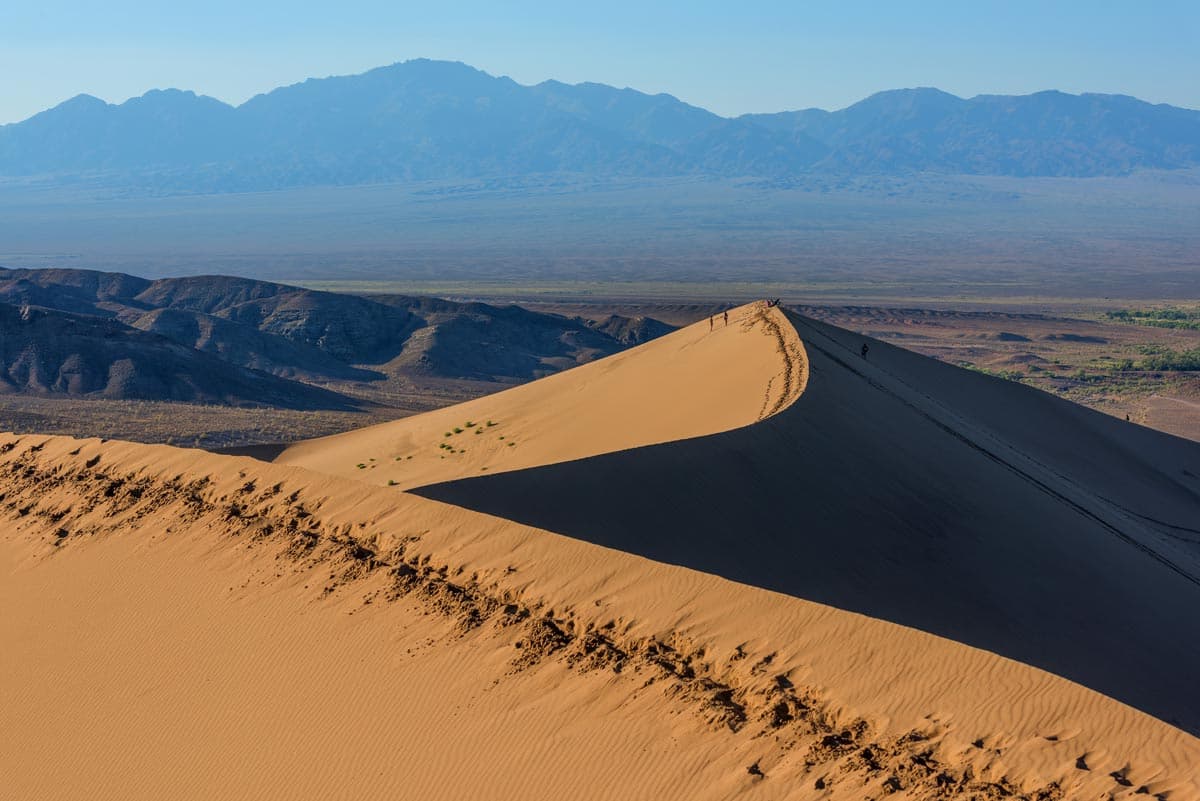
Zhetysu Region
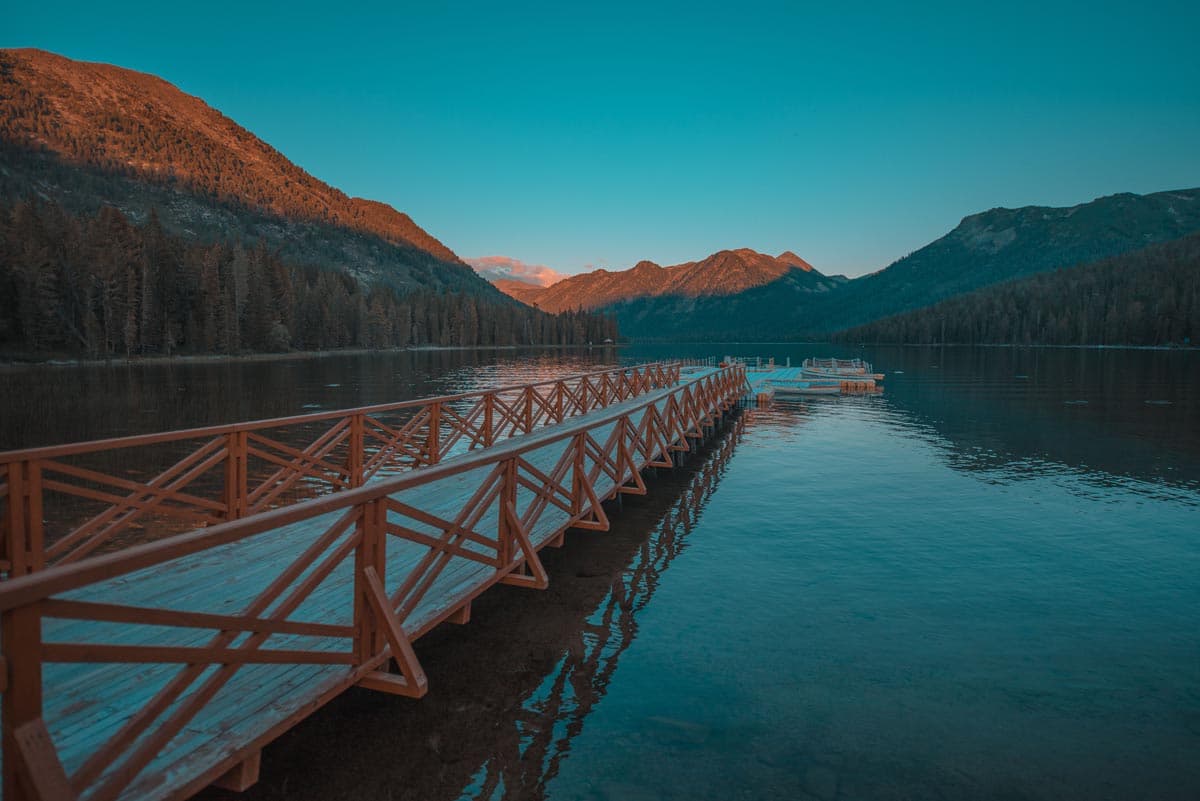
East Kazakhstan Region
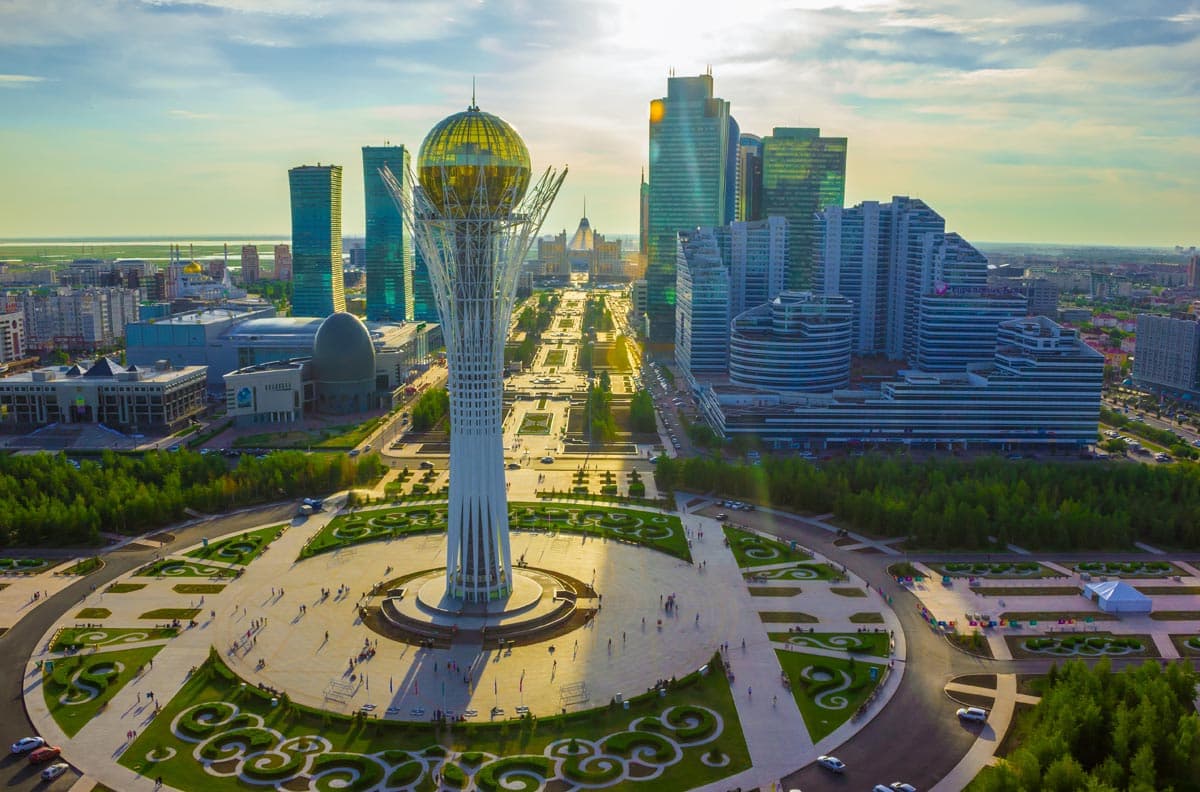
Almaty Region
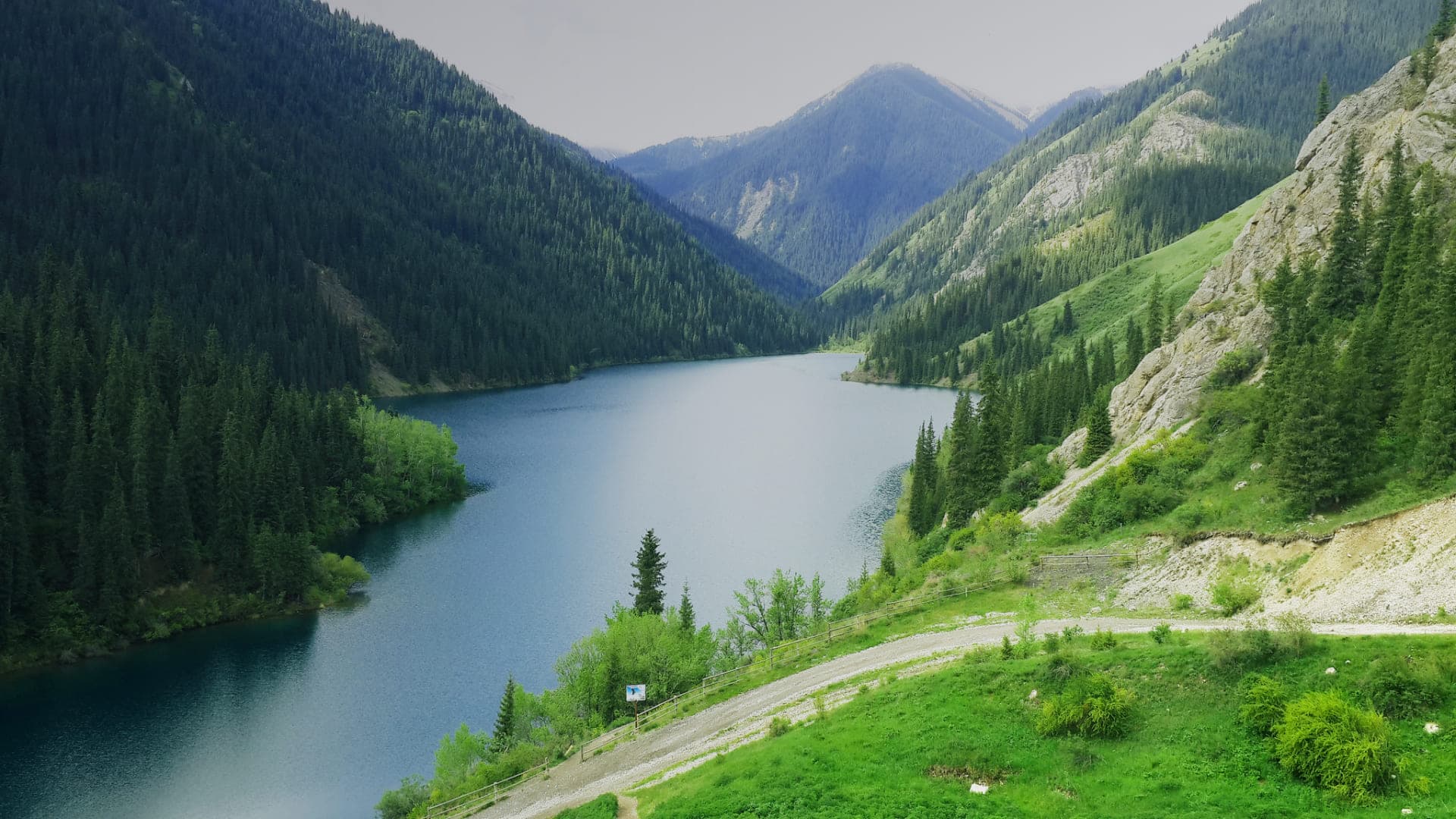
Four Seasons
By the beginning of summer, kazakhstan is changing - the nature finally blossoms and pleases the inhabitants with long sunny days. summer is probably the favorite season of the people of kazakhstan, who honor folk traditions and holidays. it is in summer that the season of kazakh weddings (toy) reaches its climax. since the beginning of june, a huge number of weddings have been taking place in kazakhstan, turning summer into an ongoing holiday..

Autumn is a time of picturesque photo shoots in orange-red tones. Even without leaving the city, going to the nearest park, you will be delighted with the bright colors of birches, rowans, oaks and other deciduous trees. And in mountainous areas, for example, Almaty, East Kazakhstan regions, sunset colors will always be diluted with shades of green of different species of coniferous plantations. No less picturesque are the autumn landscapes of the resort areas "Burabai", Imantau-Shalkarskaya, Karkaralinsk, even if the mountains are lower here.

Winter is a time for lovers of downhill skiing, snowboarding, and ice skating. Almaty and East Kazakhstan regions are famous for ski resorts, steep wild slopes for freeriders. "Shymkent", "Akbulak", "Tabagan", Oi-Qaragai, "Altai Alps" are famous places for family holidays far beyond the borders of the country. But what to do where there are no mountains? Skate! There are dozens of indoor and outdoor ice rinks in almost every city of Northern and Central Kazakhstan.

Fields of tulips in Turkestan and Zhambyl regions, poppies in Almaty and Zhetysu, lilac candyks in the east of the country – do not allow travelers to stay in one place for a long time! In spring, at the end of March, the whole country celebrates the bright holiday of Nauryz. Spring renewal holiday, when people visit each other, snow-white yurts are installed on the streets of cities and villages and treats are prepared for everyone!
Blog see all.

HAVE TIME TO MAKE IT WITHIN 24 HOURS
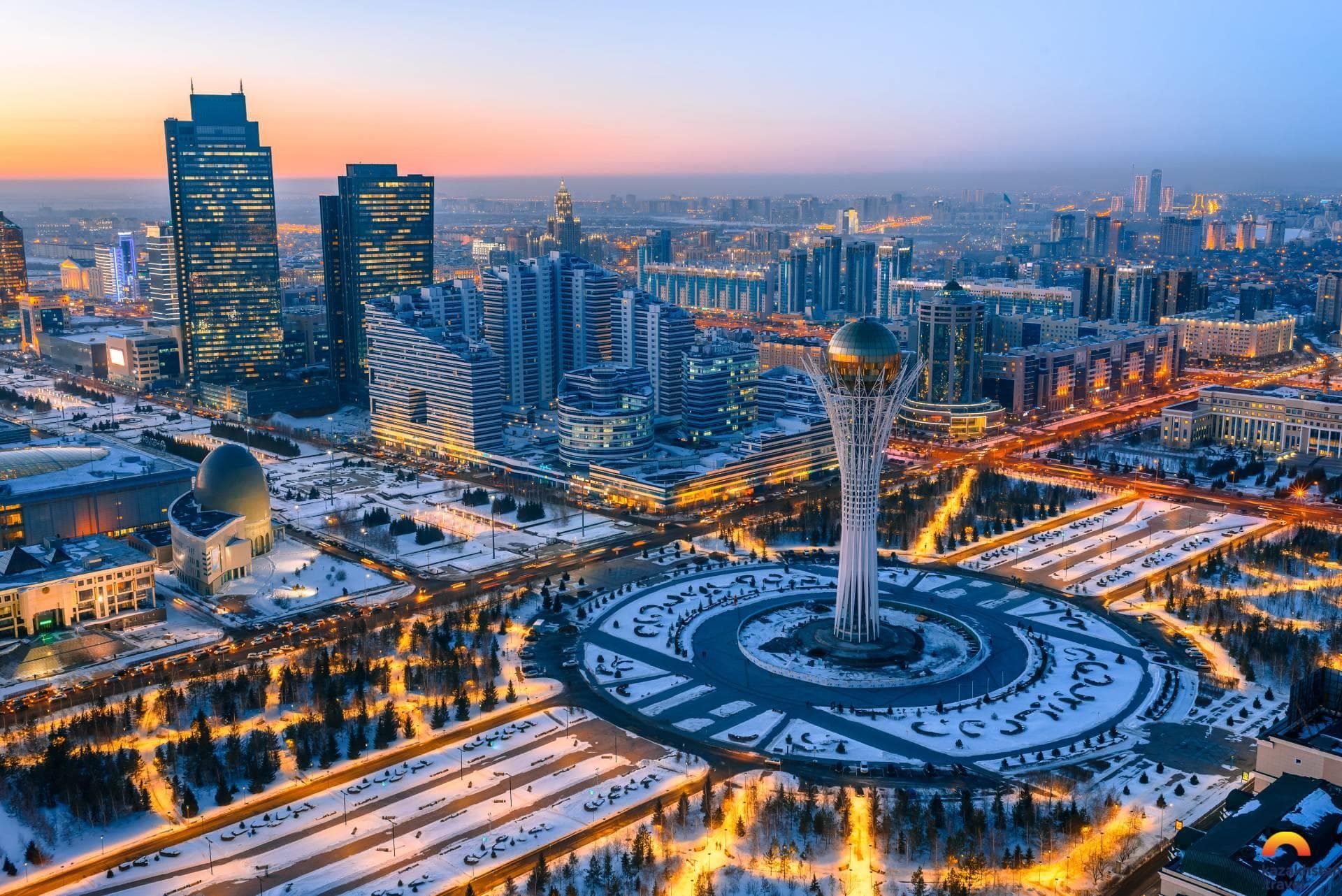
24 hours in the capital

Survey on the quality of tourism services
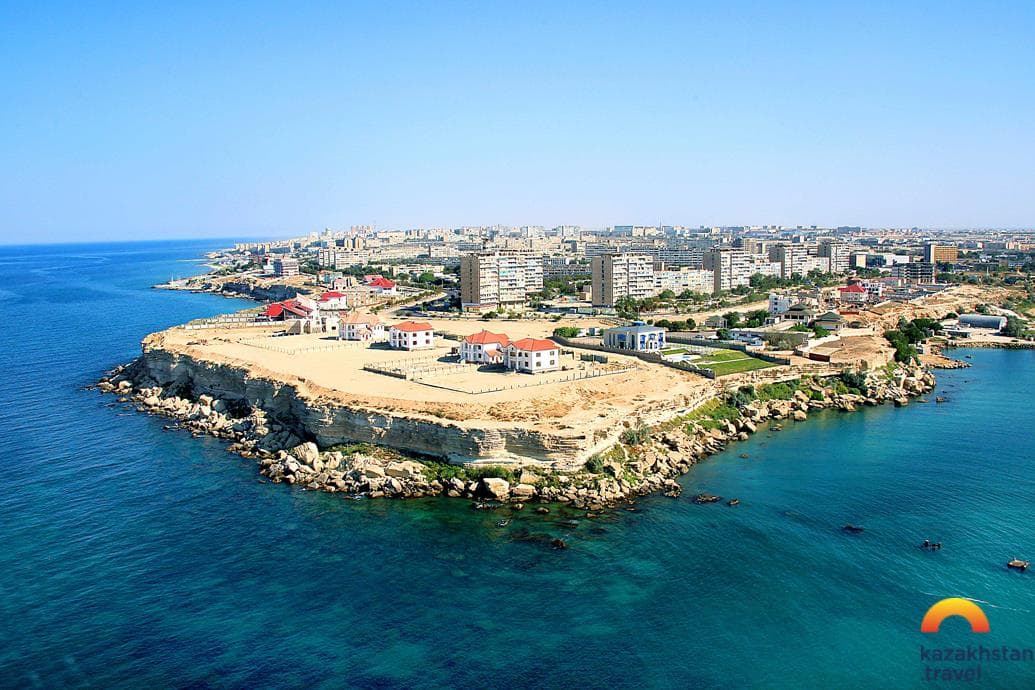
How to spend holidays with children in Aktau
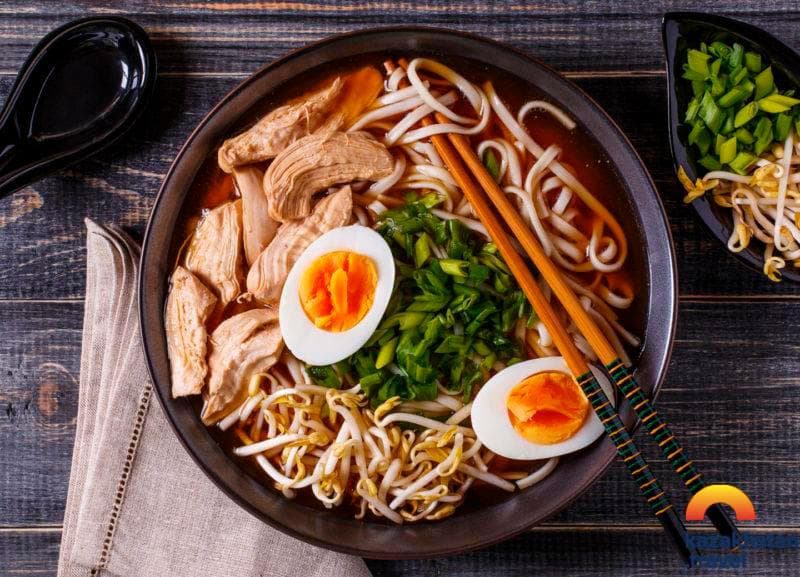
International cuisines you can try in Kazakhstan
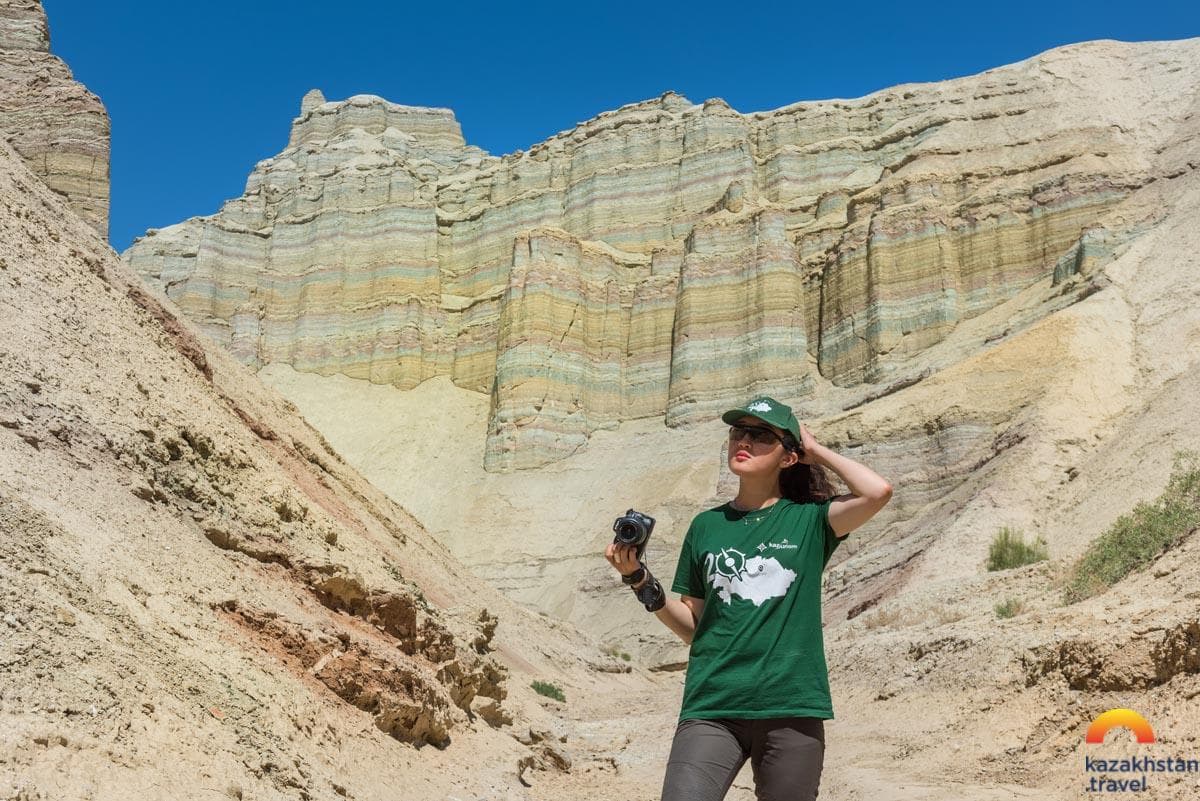
How to get a visa to Kazakhstan?
Useful Tourist Information
Know it all.
Currency Exchange
Transport Infrastructure

More convenience with the eQonaq app
Sending notifications to foreign guests

Download the App

A multi-ethnic country that straddles two continents, Kazakhstan is an expression of a Eurasian ideal. But ethnic Kazakhs are also proud of their nomadic heritage. Paul Brummell , author of Kazakhstan: the Bradt Guide
Why visit Kazakhstan
Stretching from the Tian Shan Mountains in the east across vast steppes to the Caspian Sea in the west, Kazakhstan is a country brimming with travel opportunities. The world’s ninth-largest country is home to some of the most magnificent landscapes on the planet, a dreamland for hikers, skiers and nature lovers alike. And with visa restrictions and red tape being lessened, there has never been a better time to visit.
Kazakhstan is indeed a travel destination if mountains are what you are after. The Kazakh stretch of the Tian Shan Mountains bordering China, Kyrgyzstan and Uzbekistan are heavenly (as the meaning of the name suggests) and tucked away amid the slopes are numerous mountain lakes, including the breath-taking Kolsai Lakes. In the north, bordering Russia, Mongolia and China, the Altai Mountains are ideal for hiking and camping amid the green lush forests and pristine mountain rivers.
But there is more to Kazakhstan than just nature. Almaty, the largest and most charming city in the country, is the national cultural hub and the starting point of a ski holiday. There’s also the Baikonur Cosmodrome, a Soviet-built spacecraft launch facility that is still the largest in the world, as well as plenty of stunning Silk Road monuments, including the 14th-century Khoja Ahmed Yassaui Mausoleum in Turkestan, the most beautiful building in the country.
Food and drink in Kazakhstan
Kazakh cuisine is heavily based on the nomadic past of the Kazakh people. It is dominated by meat (especially mutton and horse) and various milk products, many of which have no direct English translation. The techniques of preparation emerged out of the importance of ensuring food preservation: thus, there are many dishes based around smoked meat and soured milk. Meat is an important part of the Kazakh diet, and there are numerous jokes about the legendary capacity of Kazakhs for consuming huge quantities of the stuff (the punch lines tend to be of a ‘right, where’s the main course?’ nature). An invitation to a Kazakh feast provides a great opportunity to try many of the classic dishes of Kazakh cuisine together with the rituals that accompany their apportionment, though most dishes are also available in Kazakh or generic central Asian restaurants.
A Kazakh feast tends to be referred to as a dastarkhan , actually the name of the low table around which Kazakhs traditionally sat, on the floor or propped up against cushions, to eat their meals. In rural areas, this form of dining is still common; in larger towns, chairs and tables have taken over, at least among wealthier Kazakh families. On arrival, you will find the table already laden with things to eat, typically fruits, nuts and a range of salad dishes. Tea is served into handle-less cups called pialas , and will be constantly refilled throughout the meal, even as vodka toasts are called for, and other drinks, such as kumiss , a drink of fermented mare’s milk, are also passed round. Appetisers are brought out, focused heavily on sliced meats. Pride of place here goes to various sliced sausages made from horsemeat of varying degrees of fattiness: among the most important varieties are kazy , karta and shuzhuk . Th ere may also be a range of pastries on offer, such as a meat-filled variety, samsa , found throughout the region. Kurt , little balls of dried curd, is a salty snack which has the effect of draining all moisture from your mouth. At some point during the meal a dish of kuirdak will be served. This is made from the internal organs of a sheep or other freshly slaughtered animal: these are cut into small pieces, together with lumps of fat from the animal, cooked in oil, and served with onion and pepper.
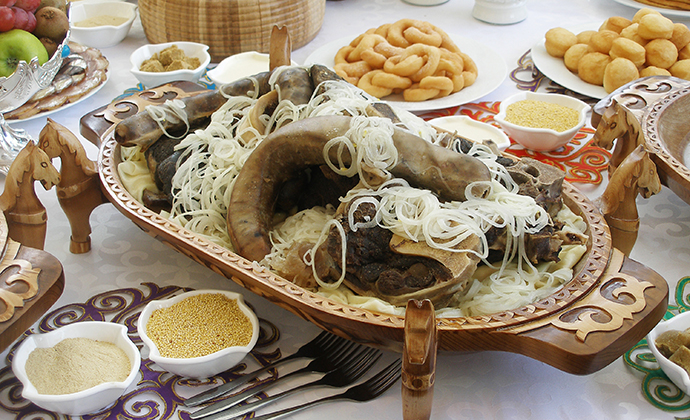
The focus of the meal, and the signature dish of Kazakh cuisine, is beshbarmak. The name means, literally, ‘five fingers’, a reference to the traditional way of eating the stuff and not, fortunately, to its ingredients. It is generally served in a large dish, placed in the centre of the table. It involves large lumps of horsemeat or mutton, boiled on the bone, which are scattered across a bed of flat layers of pasta that have been boiled up in broth. Onion cut into rings, garlic and a scattering of parsley and fennel, completes the dish. The broth, sorpa , is served up separately, in pialas.
Before the beshbarmak is doled out, one tradition that is often incorporated into such a feast, particularly if there is a distinguished guest to be honoured, is the presentation to that guest of a boiled sheep’s head, or koy bas . Since a foreign visitor may well count as the ‘distinguished guest’, be aware that this could be coming your way. The ritual here is that the guest is given a knife, and cuts off pieces from the head, apportioning them to the others around the table. This is traditionally done by identifying pieces appropriate to individual recipients: thus young people often receive a piece of ear, so they may listen well to their elders. You needn’t worry too much about getting this symbolism right; if you can cut small pieces of meat from the head and apportion them, starting with the eldest person around the table and continuing in approximate age order, you will be considered to have discharged your distinguished guest function well. The lumps of meat on the beshbarmak itself are also distributed on the basis of various traditional customs. Thus, elderly or honoured guests tend to be given meat from around the hip, while it is never done to offer brains to children, for fear that they may become weak-willed, or a knee bone to an unmarried woman, lest she be left on the shelf (given the elbow?). Ak nan , a type of bread flavoured with onion, is often eaten with beshbarmak.
Sweet dishes served after the beshbarmak (though they may have been sitting on the table throughout the meal) include irimshik , which is not actually itself particularly sweet: it’s a dry yellowish/orange dish, made of soured cow’s or sheep’s milk that has been boiled and dried. It is, however, an ingredient of the classic Kazakh sweet, zhent , which also contains millet, sugar, raisins and butter and has a rather powdery consistency. Baursaki , small, spherical, fried doughnuts, have an important place in Kazakhstani culture, and feature in many forms of commemorative and celebratory meals. Fruit will also be served at this time. Do expect the unexpected in a Kazakh feast: the kuirdak is, for example, occasionally served right at the end of the meal, after the sweets.
The multi-ethnic character of Kazakhstan and the centuries of trading and interactions along the Silk Routes mean that the cuisine of modern Kazakhstan incorporates a large number of influences alongside those drawn from the nomadic Kazakhs. You will find here some of the dishes popular throughout the region, such as plov , a rice-based dish served with lumps of meat, and pieces of carrot and onion. In Kazakhstan, it is sometimes made in a sweet form, with the addition of dried raisins and apricots. Manty are also popular. These are dumplings, filled with spiced lamb or beef, sometimes with chopped carrot added, and cooked on a steamer. A range of noodle dishes, in particular lagman, are brought from Uyghur cuisine, while shashlik, skewered lumps of various barbecued meats, cooked over hot coals and served with raw onion, is a south Caucasus speciality popular across the region. Korean-style spicy vegetable salads are also found on many menus. Kazakhstan’s large ethnic Russian community has ensured the presence of numerous classic Russian dishes, including salads such as the chopped vegetable in mayonnaise confection described on menus here as olivye but known in western Europe as Russian salad, the ravioli-like pelmeni , sweet and savoury pancakes, or blini , and soups, such as okroshka , a Russian cold soup based on kvass , a fermented beverage made of rye bread, or the traditional Ukrainian and Russian-favourite borscht . In the regions bordering China, traditional Chinese dishes such as noodles and stir fries are also common.
Fuelled by the increasing wealth and aspirations of many Kazakhstanis, a whole range of newer arrivals from around the globe has supplemented these longer-established dishes. Thus, as the Where to eat and drink sections under individual towns make clear, it is possible in the larger cities to find Italian, Mexican, French or Japanese restaurants. Note that in Kazakhstani restaurants side dishes such as vegetables do not usually come automatically with your main dish, and have to be ordered separately. A 10% service charge is typically added. In some top-range restaurants and bars this may be set at 15%. Tipping beyond this is not expected. Many restaurants in Kazakhstan offer a business lunch: this will usually be a set meal or a buffet. These tend to be good value, and are usually served promptly, though they are often fairly unexciting. Restaurants are usually open every day, typically from noon until the last diner has finished up in the evening, though some close for an hour or two mid afternoon. Stolovayas, or canteens, often stay open 24 hours and offer a buffet with a good choice of local dishes for a budget traveller.
The drink most closely associated with the traditional Kazakh diet is kumiss, prepared from fermented mare’s milk, and believed by Kazakhs to have numerous health-giving properties, from the stabilisation of the nervous system to the treatment of tuberculosis. In parts of the south and west of the country, including Kyzylorda and Mangistau regions, it is supplanted by shubat , prepared from fermented camel’s milk, whose advocates ascribe it an equally impressive range of curative properties, recommending it for the treatment of tuberculosis, diabetes and stomach ulcers. Both kumiss and shubat have a slight fizzy quality and a sour flavour, and are definitely acquired tastes. A foreign delegation greeted on arrival into Kazakhstan by their Kazakh hosts may well be confronted with a girl in traditional dress holding out bowls of kumiss and shubat, accompanied by baursaki. Less frequently encountered, but rather more palatable for most western visitors, is kazhe , which is essentially shubat mixed with grains, which soften the flavour and texture of the drink.
Another important drink for Kazakhs is tea. Green tea is popular, especially in the south of the country, but ‘black’ tea, in other words the standard tea of the English-speaking world, is more prevalent. Ethnic Russians drink this black, sometimes with lemon, but, unusually for the region, Kazakhs traditionally drink their tea with milk. Do not be surprised if your host fills your tea cup only half full: it is an invitation for you to continue speaking. Once your cup is filled, you know it is time to leave. Coffee tends to be hit-and-miss, though there is an increasing range of coffee places offering the cappuccinos and lattes you get back home.
Although some Kazakhstanis refrain from alcohol on religious grounds, the legacy of Tsarist and then Soviet rule has brought with it a tradition of vodka drinking. There are numerous local brands, from expensive varieties such as Snow Queen, which boasts that it has been distilled five times, to cheap and rather unpleasant products. You should avoid the cheapest offerings, particularly from outlets such as kiosks. Kazakhstan also produces a broad range of drinkable if rather sweet brandy, known locally as konyak . There are plenty of Kazakhstani beers: brands to look out for include Beliy Medved, Shymkent and Karaganda. However, in swankier bars and restaurants in Astana and Almaty, local beers and spirits do not always feature on the menu, as they have been elbowed out by imported products. Viticulture has also been gaining momentum. Arba Wine have been producing quality wines since 2010 that have regularly won prizes at international fairs. Menus in swankier restaurants in Almaty and Astana feature Arba Wine.
Health and safety in Kazakhstan
It is recommended that you are up to date with all your primary courses and boosters including diphtheria, tetanus and polio – now given as the all-in-one vaccine (Revaxis) which lasts for ten years. Hepatitis A vaccine will be recommended for longer stay travellers, those living and visiting local people and those undertaking more adventurous travel. The vaccine can be given even close to the time of departure. One dose will protect for at least one year and a booster dose given at least six months later will extend coverage for 25 years. This vaccine may be available on the NHS. Vaccination against typhoid may also be advised for those travelling to more rural areas, particularly where there may be difficulty in ensuring safe food and water supplies.
Additional immunisations to be considered, depending on how long you will be staying in Kazakhstan and your intended activities and lifestyle, include hepatitis B, rabies and tick-borne encephalitis. Hepatitis B is recommended for those working in a medical setting or with children. The vaccine schedule comprises three doses that ideally should be given over a six-month period. If time is short then it can be given at zero, one and two months or for those aged 16 or over; using Engerix B, it can be given over a minimum of 21 days. Both of these more rapid courses need to be boosted after a year.
Rabies is present throughout the country, but is usually easy to avoid unless you are working with animals. A pre-exposure rabies vaccine is advised for those staying longer than a month and for those who are running and cycling as these activities put them at higher risk. It would also be recommended if you plan to be 24 hours or more from reliable sources of treatment. Like hepatitis B, the rabies vaccine comprises three doses and can be given over a minimum of 21 days. Having the pre-exposure vaccine changes what treatment you need and makes it easier to obtain.
Tick-borne encephalitis is a viral infection spread by infected ticks and is more common between April and September. If you intend to go trekking in forested areas during these months, then it would be wise to get immunised. The vaccine is readily available in private travel clinics and consists of two doses of vaccine at least two weeks apart with a third dose given five to 12 months later if at continued risk. Whether or not you have the vaccine, you should take all precautions to protect against tick bites and check and remove any ticks after walking in high-risk areas.
While pharmacies in Kazakhstan, especially in the main cities, are numerous and well equipped, it would be worth packing one or two basic medicines, such as oral rehydration salts. You should ensure too that your travel insurance covers you for medical expenses, including for possible medical evacuation.
Travel clinics and health information
A full list of current travel clinic websites worldwide is available on ISTM . For other journey preparation information, consult NaTHNac (UK) or CDC (US). Information about various medications may be found on NetDoctor. All advice found online should be used in conjunction with expert advice received prior to or during travel.
Kazakhstan is generally a safe country to travel around. Locals usually travel in groups and with families; single travellers should not be unnecessarily alarmed when asked if they are not afraid to travel in Kazakhstan on their own – this is not a reflection of the country’s safety situation. That said, exercising caution is always the best practice to adopt.
Pickpocketing, especially in crowded places such as markets and on busy public transport, can occur. Ensure that you keep your money and documents somewhere secure. If you are driving, don’t leave valuables visible in your parked vehicle: there have been reports of ‘smash and grab’ thefts.
While the informal taxi system in operation throughout the region provides a quick and cost-effective means of getting around town, it does carry with it certain risks, and you should be alert to these if you decide to hail a car, particularly at night. If a car stops for you that you do not particularly like the look of (because it appears to be in poor condition, or the driver seems drunk, or there are two or more men in it), simply wave it away again. The locals do this all the time. There have been serious incidents of violent robbery involving foreigners leaving bars and clubs late in the evening, sometimes somewhat incapacitated by drink, who have taken informal ‘taxis’ waiting outside the premises. If you are leaving a club or bar late, it is much safer to get the establishment to call an official taxi for you.
The taxi drivers waiting for arriving passengers at Almaty airport are a particularly frequent source of complaints. Often this is simply a matter of overcharging, but there have been more sinister incidents, including drivers taking arriving visitors into the middle of nowhere, and demanding money to return them to the centre of the city. If you need to take a taxi from the airport into the city, book an official one at the desk just before you leave the arrivals hall. There have also been reports of people posing at the airport as ‘meet and greet’ representatives, sent by the passenger’s inviting organisation to collect them. In some cases, they seem to have been able to get hold of passengers’ names, adding to the credibility of the story. They then drive you off somewhere remote and extort money to take you to your destination (similar to the taxi driver scam mentioned above). If you are being met at the airport, clearly establish the arrangements in advance with your inviting organisation, including how the person meeting you will be identified.
Although levels of violent crime in Kazakhstan are relatively low, muggings, especially at night, are a concern. The oil boom towns in the west of the country, especially Atyrau, are particularly problematic in this respect. You should avoid walking alone at night, and keep to well-illuminated areas.
The spiking of drinks has been reported in clubs and bars in Almaty, where the motive is generally robbery rather than sex, and the targets more often men than women. Keep a close eye on your drink. The effects of alcohol are at the root of many reported violent incidents in Kazakhstan. If a fight breaks out in the bar you are in, pay up quickly and leave.
Cases of extortion of money by police and other law enforcement officers are less common in Kazakhstan than they used to be (though petty corruption on the part of the traffic police remains a considerable problem). Police in Kazakhstan are allowed, perfectly legitimately, to request to see identification documents, and you should co-operate with this. There have, however, been concerns about extortion by people impersonating law enforcement officers: if you have any doubts about the bona fides of the person who has stopped you, you are entitled to ask to see their credentials before producing your passport. If you doubt the legitimacy of the ‘officer’, or are being asked for a bribe, try to take down their name and badge number, as well as the registration number of any vehicle. Do not get into the back of a police car or go anywhere else that you cannot be seen by passers-by. If in doubt, ask to accompany the officer to the closest police station to resolve any matters (invented or otherwise) there.
Female travellers
The usual personal safety precautions should be exercised for women travellers. You should dress modestly, especially in conservative southern and western Kazakhstan and in rural areas (although this is not a practice always followed by the locals). Particular caution should be taken when hailing taxis; phoning for a cab, or getting the establishment you are in to do this for you, is a safer option. Unaccompanied women may receive unwanted attention in bars and clubs but this is usually deflected with a few terse words. If the harassment continues, alert the management or leave the premises and find a more pleasant alternative. Try to avoid physical confrontation as alcohol-fuelled violence is not uncommon.
LGBTQ+ travellers
Homosexuality has been legal in Kazakhstan since 1997, but while a small gay scene has developed in Almaty, same-sex relationships are still often seen to be symptomatic of illness. Visitors are advised against showing open signs of affection in public, especially away from the larger cities.
Travellers with disabilities
Disabled visitors may experience difficulty travelling in Kazakhstan. Public transport is rarely able to carry wheelchairs, few buildings have disabled access, and streets are littered with trip hazards such as broken paving, uncovered manholes and utility pipes. Hotel rooms are often spread over multiple floors without lifts, and assistance from staff is not guaranteed. If you have a disability and are travelling to Kazakhstan, you would be advised to travel with a companion who can help you when the country’s infrastructure and customer service fall short.
Travelling with children
Travel with children is relatively easy given Kazakhstanis’ focus on family life. Children are welcomed in restaurants and shops but you may have difficulty manoeuvring pushchairs in and out of buildings and along broken pavements. Nappies, baby food and other similar items are widely available in supermarkets, but you are unlikely to find European brands outside of major cities. Journeys by car and public transport are often long and uncomfortable, which may deter families with younger children from travelling into the interior of the country.
Travel and visas in Kazakhstan
Since July 2012 visitors from the European Union (except Bulgaria and Romania), North America and Australasia no longer need a visa to visit Kyrgyzstan for a period of up to 60 days. The same waiver also applies to citizens of Bosnia and Herzegovina, Monaco, Iceland, Liechtenstein, Norway, Switzerland, Turkey, Cuba, Japan, South Korea, Singapore, Malaysia, Mongolia, Brunei, most Gulf Arab states – Bahrain, Kuwait, Qatar, UAE, Saudi Arabia – Russia and former countries of the Soviet Union. If planning to stay longer than 60 days a visa will be required, which should be obtained either in advance at a Kyrgyz embassy or on arrival at Manas airport.
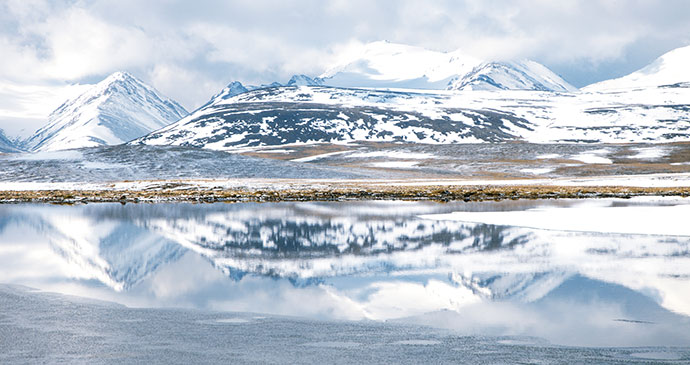
Since 2012, most visitors from the EU no longer need a visa to visit Kyrgyzstan © Elena Moiseeva, Shutterstoc
For those passport-holders of countries that do require a visa – mostly African, Middle Eastern, South Asian countries, China and some South American countries – these can be obtained in advance at a Kyrgyzstan embassy. Most will be required to obtain a visa support letter from the Consular Department of the Ministry of Foreign Affairs if travelling for business purposes or, if travelling privately or for the purposes of tourism, an invitation letter (usually referred to as LOI – ‘letter of invitation’) issued by the Ministry of Internal Affairs. This additional paperwork can be issued, at a price and with some advance notice, by contacting one of the Bishkek travel agents listed. Visas are normally issued for 30 days.
Citizens of a small number of countries that require visas are able to obtain them without providing visa support or a LOI, and can obtain visas on arrival by air for between US$50–100 depending on length of stay and whether single or double entry. The countries not requiring visa support are: Albania, Andorra, Argentina, Brazil, Bulgaria, Chile, Cyprus, Indonesia, Israel, Macedonia, Mexico, Montenegro, Oman, Philippines, Romania, San Marino, Serbia, South Africa, Thailand, Venezuela and Vietnam.
Getting there and away
Kyrgyzstan’s main international airport is Manas Airport in Bishkek (airport code: FRU; Tel: 693 109; Email: [email protected] ) although a few flights from Russia also go direct to Osh. Manas Airport lies about 25km north of the capital, a 40-minute drive away.
From the UK
There are no longer any direct flights between the UK and Bishkek. British Airways used to fly three or four times a week to Almaty, a four-hour drive from Bishkek in neighbouring Kazakhstan, but this service was suspended in 2015.
The best way to reach Kyrgyzstan by air from the UK or elsewhere in Europe is to fly to Moscow or Istanbul and then transfer to a direct Bishkek flight. Flying via Moscow, there are flights with Aeroflot that change planes at Sheremetyevo airport. These start at about £400 return and fly daily but there is sometimes a long wait at the transit airport. A little more expensive, but more comfortable and reliable, are the daily flights with Turkish Airlines via Istanbul’s Ataturk airport, which start around £420 return. Another, usually less expensive Turkish alternative is with the budget carrier Pegasus Airlines that flies daily to Bishkek from London Stansted via Istanbul’s Sabiha Gökçen Airport. These flights can cost as little as £330 return and represent a real bargain, even if you do have to buy all your own drinks and meals on board. Because of seasonal demand flights tend to be more expensive during the peak months of July and August and so it is wise to book as far ahead as possible. Flying Air Astana , with a transfer in Astana, Kazakhstan, is another option from London.
From Europe
Other than BMI flights from London, the only other direct flights from Europe are with Turkish Airlines, which fly daily from Istanbul, and regular flights from Moscow with Aeroflot and other carriers. Flights to Bishkek from western European countries tend to connect with either Aeroflot in Moscow or Turkish Airlines in Istanbul. In Germany, Lufthansa do not fly to Bishkek but do regularly fly to Almaty in Kazakhstan.
From Russia and CIS countries
Kyrgyzstan has regular direct flights from Moscow with Aeroflot, Ural Airlines , Air Manas and Avia , as well as three times a week from St Petersburg, twice a week from Krasnoyarsk, three times a week from Yekaterinburg, and weekly from Novosibirsk and Omsk in Siberia. There are flights four times a week from Dushanbe in Tajikistan, with both Avia and Tajik Air , as well as regular flights to Tashkent in Uzbekistan and Almaty in Kazakhstan. Air Manas has regular flights to Tashkent, while Air Astana also flies to Bishkek from Almaty and Astana.
From elsewhere, China Southern Airlines flies to Bishkek several times a week from Ürümqi in Xinjiang. There are also flights from Ulaanbaatar in Mongolia with Turkish Airlines and Dubai with the budget carrier Fly Dubai . Air Manas also has regular flights from New Delhi and Kashgar.
From the USA and Canada
There are no direct flights. Flights from North America can either link with the direct BMI service from London to Bishkek or alternatively go via Moscow (Aeroflot) or Istanbul (Turkish Airlines).
From Australia and New Zealand
Probably the easiest way to reach Kyrgyzstan from Australasia or Southeast Asia is to fly to Tashkent via Bangkok and then either take a connecting flight or, politics permitting, travel overland to Kyrgyzstan.
The great adventure of arriving in Bishkek by rail may not quite be as romantic as its sounds. It is a very long journey and there is an awful lot of dull Kazakh steppe to stare at before Kyrgyzstan is reached. In addition, some of the passengers travelling in platskart (third class) are smugglers, and some consider that it is not a safe journey for foreigners to take, at least in the lowest class.
In theory, at least, it is possible to reach Bishkek by train from anywhere in Europe by way of Moscow and the service from there. Naturally, having to travel through both Russia and Kazakhstan en route, there are going to be visa issues to consider. Train number 18, the Kyrgizia , leaves Moscow’s Kazan station twice a week on Thursday and Saturday at 22.40, to arrive just over 72 hours later in the late evening of the fourth day. This currently costs about 14,000 roubles (£170) in platskart (third class open carriage) and about 20,000 roubles (£240) in kupe (four-berth sleeper) if tickets are bought at the station. Booked through an agency they will cost considerably more. Trains number 17 and 27 to Moscow from Bishkek leave on Monday and Wednesday at 09.17 and take just over 73 hours to reach Moscow.
Rather than going all the way to Bishkek it is possible to leave any of the trains at Taraz (Dzhambul) in Kazakhstan and then enter Kyrgyzstan’s northwest Talas Province by minibus, saving five hours on the overall train journey.
Another alternative is to travel by train from Moscow to Almaty, although the direct service was discontinued in 2017 and the journey now requires a change in Saratov. In the summer season trains run once a week on Thurs evenings between Tashkent and Bishkek continuing to Balkychy but they are very slow (19+ hours to Bishkek, 24+ hours to Balykchy) and take a meandering route through Kazakhstan.
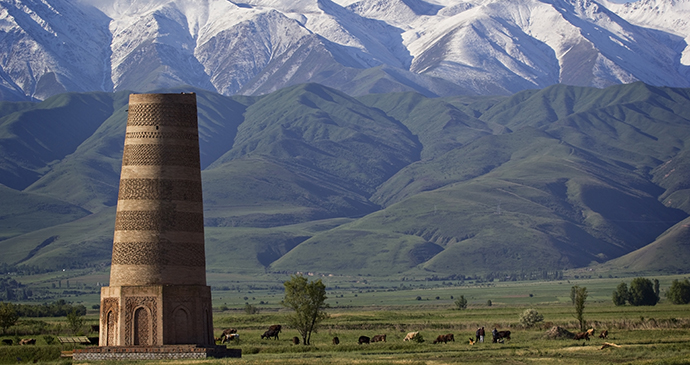
From Kazakhstan
There are frequent services between Almaty and Bishkek by share taxi (2,500 Kazakh tenge) and marshrutka (1,500 Kazakh tenge) taking about five hours. The border is open 24 hours a day. From Taraz (Dzhambul) there are regular minibuses that connect with Talas in Kyrgyzstan’s northwest. Having been closed for three years between 2010 and 2013, the Karkara Valley route between Kegen (Kazakhstan) and Ken-Suu/Tyup (Kyrgyzstan) is now open again between mid-May and mid-October, although the exact dates tend to vary. Public transport on the Kazakh side goes as far as Kegen (around $10 per person in a share taxi from Almaty) from where taxis to the border can be caught (around $10). On the Kyrgyzstan side, it is usually possible to find a ride 20km to the village of Sary-Tologoy for around 1,500som. A daily minibus runs between Sary-Tologoy and Karakol (80som).
From Uzbekistan
The northern route between Tashkent and Bishkek passes through Taraz in Kazakhstan, where there is usually a change of transport. A Kazakh transit visa is needed for some nationalities on this route. To reach Bishkek from Tashkent it may well be quicker and cheaper, if the border is open, to go first to Osh via the Fergana Valley and then fly to Bishkek from there.
From Dostlyk, near Andijan in Uzbekistan’s Fergana Valley, there are normally plenty of share taxis running to the Kyrgyz border close to Osh, from where a minibus (10som) may be taken into the city. Dostlyk may be reached either from Andijan or Tashkent by share taxi. This border is open 24 hours a day. There is another border crossing at Uch-Kurgan on the road between Karakol (not the Lake Issyk-Kul town) and Namangan but this tends to close periodically. No public transport passes through here anyway, so it is necessary to take a taxi both sides. There is also another Fergana Valley crossing from Uzbekistan at Khanabad, just to the south of Jalal-Abad, but this also closes periodically. Although there are further crossing points between the two countries in the Fergana Valley, most of these will not allow foreign travellers through as they may be designated for locals only.
From Tajikistan
There is no regular transport along the Pamir Highway between Murgab and Osh, although private 4×4 vehicles may be hired for this route in either direction. Travelling this route requires a Gorno-Badakhshan Autonomous Oblast (GBAO) permit in addition to a Tajik visa. There are share taxis between Isfara in the Tajik section of the Fergana Valley and Batken in southwest Kyrgyzstan; also between Khojand and Isfana in far south-western Kyrgyzstan. The Kyrgyz-Tajik border between Garm and Daroot-Korgon has been closed for foreign nationals for several years but it may become open at some stage in the future.
There are two overland routes to and from China. The Torugart Pass in the southern Naryn province is technically closed to foreigners but permission to cross is granted if travellers have pre-arranged transport meeting them on the other side of the border and have documentation to prove this. The public bus that plies this route between Kashgar and Naryn cannot be used by foreign nationals. Further south, the Irkeshtam border , to the east of Sary-Tash in Osh province, permits crossing in either direction without any special conditions or documentation. A public bus normally runs between Kashgar in China’s Xinjiang province and Osh twice a week in both directions and takes at least 18 hours overnight. It is available for all to use.
Getting around
Getting around Kyrgyzstan is reasonably straightforward between the major centres – Bishkek, Karakol, Naryn, Jalal-Abad and Osh. Public transport tends to be a little erratic at times and some of the roads are in poor condition although they have noticeably improved in recent years. Hiring a taxi for a couple or small group for long distances is a relatively cheap and fast way of getting about. Self-drive car hire is also slowly becoming more popular. Given Kyrgyzstan’s pot-holed roads, its eccentric driving habits and a police force keen to extort fines from their motorised victims, car hire is not for everyone but it undoubtedly affords a great deal more flexibility and spontaneity than is ever possible by public transport. Flying may be a viable option for some north–south travel as it is markedly quicker and may be only a little more expensive than travelling by road.
By bus and minibus
Other than for local city services, very few buses operate in Kyrgyzstan these days. Most long-distance bus services have now been superseded by minibuses ( marshrutki ) running the same routes, which are by and large quicker. Minibuses tend to congregate outside bus stations and leave when full, usually with about 12–18 passengers plus the driver. Some marshrutki that travel relatively short distances along fixed routes, such as those along the shores of Lake Issyk-Kul, operate rather like a local bus service and do not wait to fill up before leaving, as they constantly pick up and drop off all along their route.
Kyrgyzstan’s taxis will go almost anywhere if you pay them: a road surface of little more than loose rocks and sheep holds little fear for the average Kyrgyz Lada or Zhiguli driver. Fares are loosely negotiable, but are usually about twice the bus fare multiplied by four, the number of passenger seats. In many instances there is no bus or minibus service and so a taxi is sometimes the only option. If there is a CBT network in the town or village they usually have drivers who are familiar with the funny ways of the tourist and knowledgeable about the sort of places that they wish to go. Taxis may be hired for less than the CBT rate in the bazaar, although this is very dependent on the language and negotiation skills of the client, as well as how desperate the driver is to find a fare.
More popular routes often have shared taxis running the same routes as the minibuses and buses. They are effectively the same as ordinary taxis except they run the same route regularly and aim to fill the car with four passengers who all with less than a full complement of passengers if those present agree to pay for the empty seat(s) between them. Other than flying, shared taxis are the best way to travel between Osh and Jalal-Abad and Bishkek. They tend to cost less heading south than they do returning to Bishkek. Typical shared taxi fares are Bishkek–Osh, 800–1,000som; Osh–Bishkek, 1,200som.
When to visit Kazakhstan
Kazakhstan’s extreme continental climate makes for large seasonal variations, with hot summers and cold winters. Its large size makes for big regional variations too. In general, the northern regions are at least a few degrees colder than the south.
Thus winter in northern Kazakhstan means snow cover between November and April, and temperatures regularly below –20°C. In Kyzylorda and Mangistau regions, there is relatively little snow, and winter temperatures that, while still often below zero, are nothing like as extreme. Winter brings with it opportunities for snow-related sports across Kazakhstan, including downhill skiing at Shymbulak and Ak Bulak outside Almaty. Cities in the north build elaborate ‘villages’ of ice sculptures. On crisp, cold but sunny winter days, Kazakhstan is perhaps at its most beautiful. However, for everyone except winter sports enthusiasts winter is nonetheless deservedly the low season for tourism. The cold weather inevitably restricts movement, and travel schedules are also subject to disruption: for example, flight delays caused by freezing fog or snowstorms. If you do come to Kazakhstan in winter, you will need to prepare your wardrobe carefully for the cold.
The Nauryz festival on 22 March announces the arrival of spring, with festive yurts placed in the squares of the main cities. It can, however, still be cold in the north at this time. Late April and May bring a wonderful carpeting of wild flowers to the steppes, and to the slopes of the mountains. The tulips on the slopes of the Tian Shan in May are a particularly fine sight. The trekking season in Kazakhstan starts to develop around mid-May, running to late September, though some high-altitude routes remain closed until June or July. The summer months are in general an excellent time to come to Kazakhstan, and represent the peak of the tourist season. With temperatures in the southern regions frequently reaching well above 30°C in July and August, budget travellers planning to visit at this time should consider trading up to accommodation with air conditioning. It is also worth bearing in mind that the best-known spots can get pretty packed with domestic tourists in August. If you are heading to a resort area at the height of summer where the attractions include water to swim in, it is a particularly good idea to pre-book your accommodation.
Autumn too can be a good time to visit, especially the south, where in the low-lying areas the weather often remains pleasantly warm, albeit with increasingly chilly evenings, into November. Note that Almaty hosts the Kazakhstan International Oil and Gas Exhibition in the first week of October: at this time many mid- and top-range hotels raise their prices, and getting a room at any price can prove difficult.
Specialist wildlife and fishing holidays all have their own seasons. For example, as regards fishing, the season for catfishing in the Ile Delta is May–June and September–October. Trout fishing in the Tian Shan is at its best between September and mid-November.
In the east and southeast of the country are high mountain ranges: the Tian Shan along the borders of Kyrgyzstan and China, and the Dzhungarsky Alatau and Altai ranges further north along the Chinese border. Kazakhstan’s highest peak, Khan Tengri in the country’s southeastern corner, shades 7,000m. In contrast, in the west, close to the Caspian, lie some of the lowest points on the territory of the former Soviet Union. Kazakhstan’s lowest land altitude is the Karagiye Depression in Mangistau Region, at –132m. Many of Kazakhstan’s rivers flow northwards and westwards from its high ranges, and their continuations in China and central Asia: the Irtysh, with its tributaries including the Ishim and Tobol, flows north into Russia, to join the Ob and thence to the Arctic Ocean. The Syr Darya feeds the Aral Sea; the Ile runs into Lake Balkhash. Many rivers simply expire in the arid expanses that straddle much of the country. In the west of the country the Ural and Emba rivers flow south, rising in the Ural Mountains in Russia, and disgorging into the Caspian. Kazakhstan also boasts some 48,000 lakes.
Belts of pine and birch forest in the north give way to the world’s largest dry steppe region, a vast expanse of open grassland covering more than 800,000km 2 . With gradually declining rainfall and increasing temperatures from north to south, the steppe belt gives way to semi-desert and then to desert.
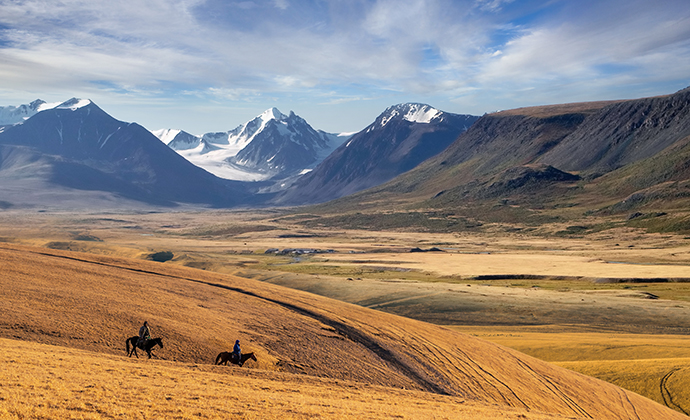
The steppe is characterised by a semi-arid climate © Aureliy, Shutterstock
Far from the moderating influences of the oceans, Kazakhstan has an extreme continental climate. Average January temperatures range between –19°C and –4°C; average July temperatures between 19°C and 26°C. Extremes can reach –40°C and 40°C, respectively. There is a considerable variation between north and south, with summers warmer and winters milder in southwestern parts of Kazakhstan. Rainfall is low across most of the country, from around 400mm in the north to 150mm in the south, meaning that irrigation is usually required to support crop growth. Rainfall levels are higher in the Tian Shan and Altai mountains, reaching 1,500mm in some parts of the latter. High winds are a notable feature of Kazakhstan’s wide expanses of steppe and semi-desert.
What to see and do in Kazakhstan
Aksu zhabagly nature reserve.
Established in 1926, the Aksu Zhabagly Nature Reserve is the oldest in central Asia. It protects part of the Talasky Alatau range of the western Tian Shan Mountains. The territory of the reserve ranges in height from 1,100m to Peak Sayram at more than 4,200m, the latter resting at the boundary between the Aksu Zhabagly Nature Reserve and Sayram-Ugam National Park. Peak Sayram is a popular place for mountain climbers; Russian singer-songwriter Vladimir Vysotsky is among those who have made it to the summit. The reserve offers a range of environments from steppe to upland meadows, juniper forest and snow-capped mountaintops fringed by large glaciers.
The reserve gets its name from the two main rivers flowing through its territory. The Aksu River means ‘white water’, the colour derived from its passage through the limestone mountains. The Zhabagly River is named from the Kazakh word meaning ‘one-year-old horse’. A legend surrounding this name tells of how the first settler of this picturesque valley, arriving here with his family, was forced to leave to join his tribesfolk in a war. In his absence, the family members he had left in the valley were kidnapped by bandits, his livestock slaughtered and his yurt razed to the ground. When our hero returned from the war he found only scorched ground where his yurt had stood. In total despair, the horse he had left as a foal suddenly ran towards him, having miraculously survived both the bandits and the subsequent winter. Our hero saw the horse’s appearance as a sign that he should not give up, and persevered with the establishment of a settlement on the banks of the river he named in his horse’s honour. And the horse tasted good, too. (OK, I revised the ending slightly.)
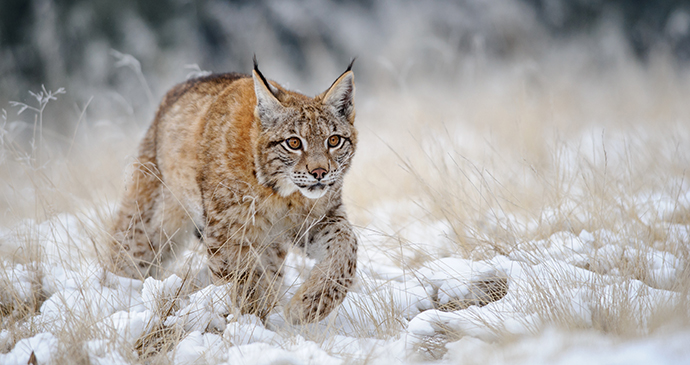
The reserve is home to many rare species of plants and animals. In late April and early May, the focus of all those who come to the reserve is the bright-red Greig’s tulip: one sight, known as Red Hill because of the colour the tulips turn it in spring, boasts densities in places of more than 60 wild tulips per square metre. Kaufmann’s tulip is another important species of the western Tian Shan, often found at rather higher elevations. The local tourism authorities bill these mountains as the possible birthplace of the wild tulip. Among the mammal species found in the reserve, the snow leopard is one that visiting tourists are unlikely to encounter. Numbers in the reserve are low; it is confined to remote spots and hunts mainly at night. The reserve also provides a home to the white-clawed Tian Shan bear, a relative of the brown bear, the Siberian ibex and Eurasian lynx. The Menzbier’s marmot, smallest of all the marmots, is endemic to the western Tian Shan. It has dark, almost black, fur on the upper parts of its body; pale yellow underneath. One further mammal rumoured by some locals to live in the remote mountains of the reserve is a yeti, a wild snowman. An expedition in the Soviet period even tried to find him.
The largest of the birds found in the reserve is the lammergeyer. You may also see the golden eagle, often found circling above the Aksu Canyon, the Himalayan griffon vulture and the Eurasian eagle owl. Another rare species found here is the blue whistling thrush: hearing its whistle is considered good luck.
Almaty may have lost its status as the capital city of Kazakhstan in 1997, but it remains the largest and most cosmopolitan city in the country, and Kazakhstan’s financial, cultural and educational hub. Most international flights arrive in Almaty; it has the widest range of hotels, restaurants and bars you will find in Kazakhstan. You will hear more Russian spoken here than Kazakh, although ethnic Kazakhs make up 51% of the population: Almaty is one of the places in which the broad ethnic diversity of Kazakhstan is most apparent, with expatriates working for the many foreign firms headquartered here adding to the mix.
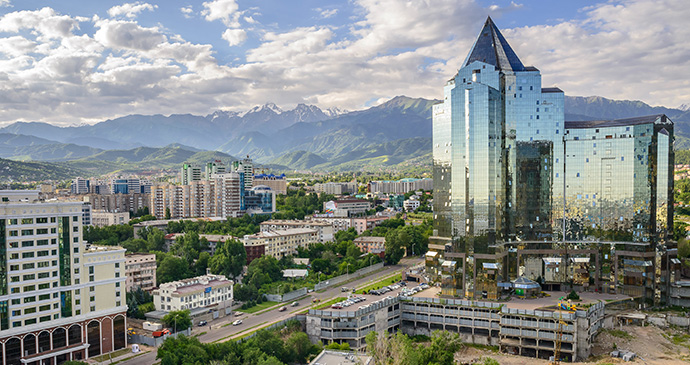
There is no attractive ‘old city’: an earthquake in 1887 left just one brick building standing. But there are some interesting museums, attractive parks and intriguing buildings chronicling Almaty’s Tsarist, Soviet and post-independence history. A stunning location adds much to Almaty’s allure. The city sits at the northern foot of the Zailysky Alatau range, the northernmost line of the mighty Tian Shan Mountains. The peaks, rising above 4,000m and snow-capped for much of the year, offer a beautiful southern backdrop to the city, though the smog that sometimes hangs over the urban area all too frequently has the effect of spiriting the mountains away. The Zailysky Alatau are easily accessible: the starting points for some excellent trekking routes amid Tian Shan firs and up to mountain passes and glaciers are just a few minutes’ drive from the centre of town.
The city itself is built on a slope, with the highest ground to the south, at the foot of the mountains. Across this slope meander several streams – the Bolshaya Almatinka, Malaya Almatinka and Esentai – each fed by snow melt from the mountains. The water from these streams fuels an irrigation system dating from the 19th century, with channels known as aryks running alongside the grid-patterned city streets. These provided the water to support lines of poplar trees, which give Almaty, fondly referred to as the Garden City, a verdant appearance. According to a local legend, in the late 19th century, young men were allowed to get married only after having planted 15 trees. The streams also feed the city’s 125 fountains and since 2007, Almaty has been celebrating 25 May as the Day of Fountains. This is altogether a city that can beguile, whose easy-going charms lure visitors to stay longer than planned.
Altai Mountains
The Altai Mountains straddle four countries: Russia, Kazakhstan, Mongolia and China. The segment falling within Kazakhstan, in the far northeast of the country, gives the country some of its most delightful landscapes. Deciduous forests at low altitude, with birch and aspen, rise to mountain taiga, with cedar, pine, silver fir, larch and birch all prominent. Above around 1,800m the forest gives way to mountain meadows, and then to tundra. The highest point, the twin-headed peak of Mount Belukha on the border between Russia and Kazakhstan, reaches 4,506m. Images taken from the space show the mountain as flower-shaped amid the surrounding peaks. The forests, which experience high rainfall, are rich in mushrooms and berries. Mammals found here include bear, maral deer, red wolf, elk and sable. There are many charming villages in the area, of log-walled cottages with corrugated metal roofs. Logs for winter heating are piled high outside.
There is a strong spiritual dimension to the Altai Mountains. Old Believers, who separated from the hierarchy of the Russian Orthodox Church in the mid 17th century in protest at the reforms of Patriarch Nikon, found refuge in the remote valleys of the Altai. The graves in local Muslim cemeteries are distinctive: with fiveor six-sided wooden pyramidal frames, a little picket fence around the base of the pyramid and a crescent moon at the apex. The size and striking form of Mount Belukha, whose peaks are often shrouded in cloud, have attracted many faiths. Shamans consider the mountain to hold particular significance: its double-headed peak suggests a certain femininity of form that made the mountain for them the female counterpart to Khan Tengri, the home of the male god of the heavens. The spiritual teacher Nicholas Roerich, who spent time in the area with his family during his four-year Asian Expedition in the 1920s, was gripped by the place. Perhaps here might be found the legendary Buddhist kingdom of Shambala, always believed to have been hidden somewhere in central Asia, beyond the peaks of the Himalayas. Followers of Roerich’s Agni Yoga make pilgrimages to Mount Belukha.
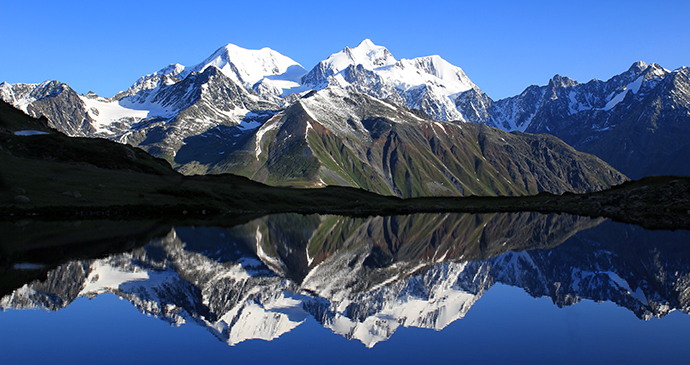
The pop group Three Dog Night once sang about the virtues of the rain of Shambala in washing away troubles and pain, and certainly the Altai Mountains in Kazakhstan receive plenty of rain. One positive result of this is the abundance of mushrooms and berries to be found in the forests. After rains the locals take to the woods with plastic buckets. Another object of local harvest is the antlers of young maral deer. The antlers are a source of pantocrine, believed by adherents to enhance strength and sexual potency, and by some even to ward off the ageing process. The industry, which originated in the area in the 18th century with the Old Believers, involves organised stag farms. The antlers are removed from the young deer and boiled, forming a pantocrine-enriched broth. Several stag farms and sanatoria in the area offer visitors the opportunity of a rejuvenating bath in pantocrinerich waters. If bathing in antler-infused water is your bag, some Oskemen travel agencies can help set this up. The season for pantocrine treatments is a short one running roughly from the beginning of June to mid-July.
Altyn Emel National Park
Established in its present form in 1996, and covering an area of some 460,000ha, the Altyn Emel National Park is one of the largest in Kazakhstan. Its southern boundary is formed by the Ile River and by Lake Kapchagai. The northern boundary of the park is marked by a line of hills, a western spur of the Dzhungar Alatau range, whose name changes from west to east: Degeres, then Altyn Emel, then Koyandytau. It is said that the name ‘Altyn Emel’, which means ‘golden saddle’, was given to the hills by Genghis Khan when he passed this way in 1219 and saw them covered with sun-yellowed grass. In the east of the park are two further ranges, Katutau and Aktau. The rest of the park comprises dry plain.
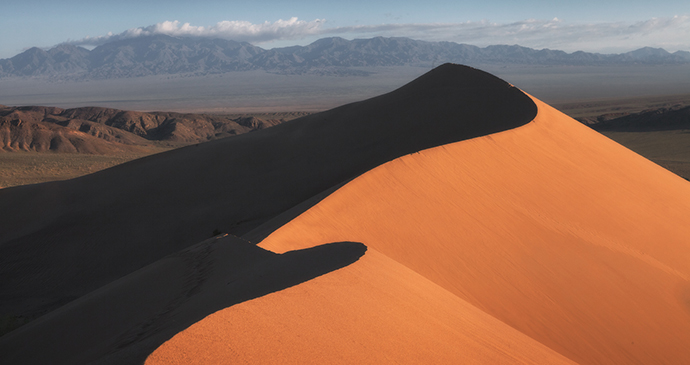
This is one of the best places in Kazakhstan to see herds of wild hoofed mammals. The park boasts a population of some 6,000 goitered gazelle, known as jieran. In the 1970s, a small population of central Asian wild ass, or kulan, was brought here from the Barsakelmes Nature Reserve, in response to the ecological problems associated with the desiccation of the Aral Sea, which turned Barsakelmes from an island into a peninsula and greatly raised the salinity of the Aral. The wild ass have thrived in Altyn Emel, and now have a population of some 2,000. Much harder to spot are the park’s arkhar , some 400 in number, which prefer remote upland environments. The park authorities’ latest projects are the introduction to Altyn Emel of the Przhevalsky horse, using horses brought from Munich Zoo, and the Bukhara deer. The mammals are at their most active, and easiest to spot, early in the morning and late in the afternoon.
The Altyn Emel National Park also boasts some striking archaeological and natural sights, of which the two most important are the Iron Age burial mounds of Besshatyr, and the large barchan , or more accurately barchans, known as the Singing Sand Dune.
While some national parks in Kazakhstan have taken a cautious approach to tourism, seeing their role as to protect the natural environments from people rather than to attract visitors in, Altyn Emel sees tourism development as one of its central activities. In terms of tourist routes, the park is effectively divided into two separate parts (approximately 260km2) by a specially protected reserve, or zapovednik , in the central section, through which tourists are not usually allowed to pass. The small rural village Basshi, housing the park headquarters and accommodation, is the gateway to the sights of the eastern section of the park, including the Singing Sand Dune, and Aktau and Katutau hills. It is also here that all visitors overnight. The western section of the park, containing the Besshatyr burial mounds and Terekty petroglyphs, is best approached direct from Almaty, and you will need to make your payment in advance through the park’s Almaty office or a travel agent.
Astana is an urban expression of Kazakhstan’s post-independence achievements, a statement of an increasingly wealthy and confident country. The city is rich with the symbols of the post-independence regime: a tower based around the imagery of the Kazakh ‘tree of life’, a pyramid to celebrate peace and inter-religious harmony and, in a nod to the nomadic history of the Kazakhs combined with a modern consumerism, a giant transparent tent which shelters a shopping and entertainment complex from the extremes of this steppe climate. The politicians and officials working in the city, which has been Kazakhstan’s capital only since 1997, are housed in apartment complexes of increasing architectural audacity: shimmering to represent the northern lights, or aping one of the Stalinist-era ‘Seven Sisters’ skyscrapers in Moscow. To get a clear sense of Kazakhstan’s aspirations, you should come here.
Astana is not short of eye-catching architecture © EXPO-2017 National Company
The capital of Kazakhstan since 1997, Astanahas grown at a staggering rate. With a population of little more than 300,000 when it inherited the mantle of national capital from Almaty, it grew to beyond half a million in just a few years. Plans that Astana would top one million people by 2030 have been revised forwards. President Nazarbayev wants Astana not just to grow, but also to be special, a sparkling symbol of independent Kazakhstan. World-renowned architects have been enlisted to help build the city: its general plan designed by Japanese architect Kisho Kurokawa; some of its most eye-catching buildings by Norman Foster. The rise in the cost of borrowing precipitated by the US sub-prime mortgage crisis in 2007 slowed the building boom, but the skyline of Astana remains dominated by cranes as the new capital continues to take shape on the steppe. Its birthday is officially celebrated on 6 July, which also happens to be the birthday of President Nazarbayev. If you are travelling to Kazakhstan around this time, keep your eyes open for events in the city around this date.
Baikonur Cosmodrome
The cosmodrome is located north of Baikonur town, on the other side of the Orenburg–Tashkent railway line and the main east–west road. The checkpoint marking the entrance into the cosmodrome is about 8km north of the town. The facilities are widely scattered across the open steppe; your guided tour will include only a few of the more historically interesting sites. The overall distribution of facilities across the territory of the cosmodrome tended to reflect the work of the competing design bureaux involved in moving the Soviet missile and space programmes forward.
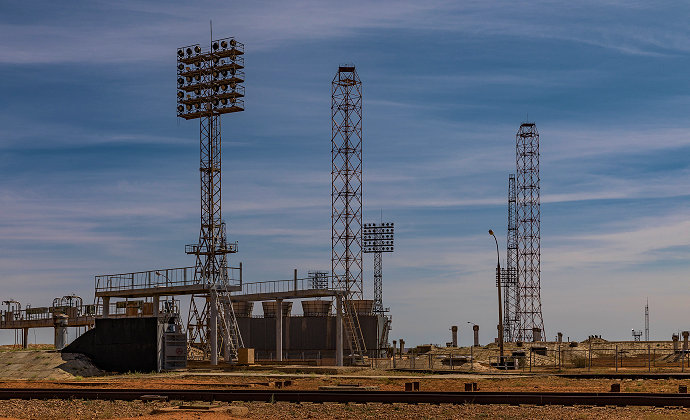
The central area of the cosmodrome was based around the processing and launch facilities of the designer Sergei Korolev. The western side, or left flank, served the ballistic missiles and space launchers developed by the design bureau of Vladimir Chelomei, including the facilities for the Proton rocket. The eastern side, or right flank, was devoted to facilities supporting Mikhail Yangel’s bureau.
This landscape of lakes, hills, weathered granite outcrops, and pine and birch forests offers some of the most picturesque scenery in northern Kazakhstan, and attracts gushing tourist agency labels such as ‘Kazakhstan’s Switzerland’ and ‘the pearl of Kazakhstan’. Named, since 2000, the Burabay National Nature Park, the western boundary of this landscape is formed by the boomerang-shaped Kokshetau Mountains, which run roughly north to south. The ‘Blue Mountains’ do indeed take on that hue when viewed from afar across the surrounding steppe. Around the foothills of the range lie several lakes, and most of the area’s tourist infrastructure is found along the shores of Lake Schuche and Lake Borovoye. The Kokshetau Mountains are covered with forests, and the thick carpet continues across the lower hills lying to their east.
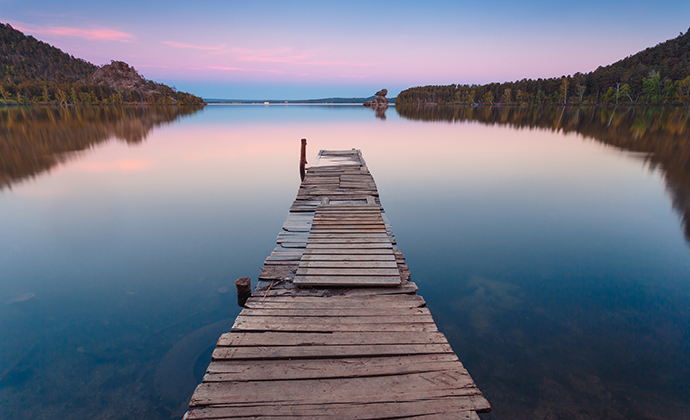
Several beautiful lakes are found in the Borovoye region © Stone36, Shutterstock
The area already attracts large numbers of domestic tourists and visitors from those parts of Russia abutting the Kazakhstani border, but there are ambitious plans to develop tourism further given Borovoye’s location as the natural weekend playground for Astana residents. (There are few other obvious tourism options within reasonable distance of the capital.) Since April 2007, the district in which Borovoye is located has been one of only two (the other is Lake Kapchagai) in Kazakhstan in which gambling establishments have been permitted, as the authorities seek to move Kazakhstan’s casinos out of the cities and into new purpose-built resorts. Given that the distinctive landscape of this region covers a relatively small territory, it must be hoped that any future development plans take account of Borovoye’s fragile environment. Some new buildings already give rise to concerns on this score. In addition, the planned Burabay Golf Resort will effectively block public access to large sections of Lake Schuche; a ski jump, under construction at the time of research, risks further commercialising the area.
Charyn Canyon
The fast-flowing Charyn River, a tributary of the Ile, forms an attractive canyon some 80km in length during its northward journey from its headwaters in the Tian Shan Mountains across the arid semi-desert east of Almaty. The depth of the canyon reaches as much as 300m where it cuts through the Toraigyr Mountains on its journey. Tour operators bill Charyn as a miniature version of the Grand Canyon. To get here, take the main road east from Almaty, through the small town of Chilik. Around 190km east of Almaty, turn left on to a signposted track. You reach the canyon after a further 9km, and having passed a checkpoint at which a small fee is taken for your entry into the Charyn National Nature Park. From the parking area here, a path heads down into the canyon. Another path, 1km to the north, is steeper but more picturesque. Almaty-based tour operators offer lengthy day trips to the canyon, sometimes combining it with the Kolsai Lakes. The Charyn River offers some challenging white-water rafting and canoeing. It is also home to a fish endemic to the region, sporting the rather picturesque name of the naked osman.
The place the tour groups head for in this part of the canyon is a dry side ravine known as the Red Canyon or Valley of the Castles. Some 3km long, and up to 100m deep, with a path running along its base, the red sandstone walls of this gorge offer natural sculptures of dramatic form. You will bake here at the height of summer: spring and autumn are ideal times to visit the canyon.
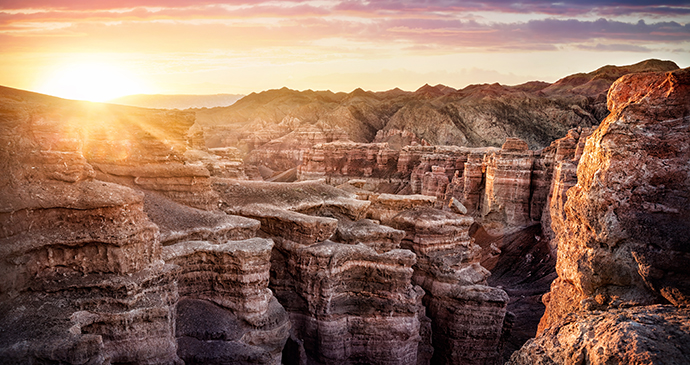
Downstream from this part of the canyon is a remnant of a great forest of Sogdian ash that stretched across this area after the last Ice Age. The ribbon of relict forest that has survived is a 25km stretch, sheltered by the canyon. A nature reserve was established here in 1964 to help protect the grove, one of the few large populations of Sogdian ash found anywhere in the world, and this now forms a specially protected area within the Charyn National Park. It is reached via a different road from that for the Valley of the Castles: coming from Almaty turn left on the road towards Shonzhy and Zharkent a few kilometres southeast of the village of Kokpek. Other trees found in the dense patches of forest along the banks of the river include willow, poplar and barberry.
Some scholars believe that the name of the river comes from the Uyghur word ‘Sharyn’, meaning ‘ash tree’. Others suggest that it derives from the Turkic root ‘Char’, which suggests a precipice. The two options are rather fitting, since precipices and ash trees are two of the key components that make Charyn such a fascinating place.
Mangistau region
The desert scenery of the Mangistau hinterland is stunning, with white limestone escarpments and isolated mountains rising up from the plains. Aktau becomes a cheerful beach resort in summer, with plans under way to turn Kendirli in the south of the region into a major resort destination.
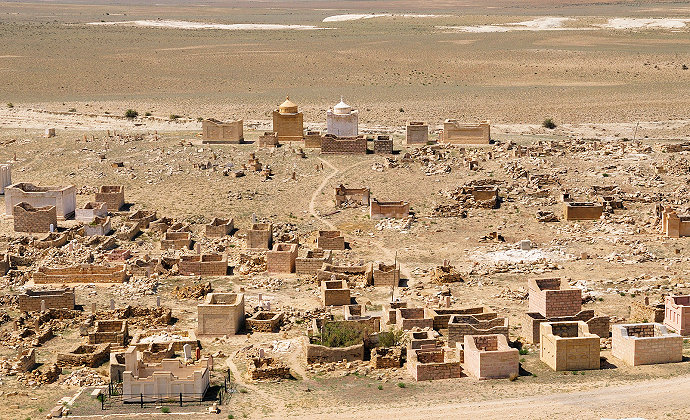
Fort Shevchenko, Mangistau’s oldest town, was the place of exile of Ukrainian poet Taras Shevchenko. And the necropolises and underground mosques that dot Mangistau Region are among the most arresting of all Kazakhstan’s historical monuments.
Shakpak Ata
Shakpak Ata is the most architecturally impressive of the underground mosques of Mangistau Region: it is a fascinating site that deserves to be much better known. Continuing eastwards on the road running between Fort Shevchenko and Taushik, beyond the turning to Sultan Epe, you reach after a further 7km a crossroads, where a rougher track crosses the road. The track to the left is signposted to Shakpak Ata. Take this. After 3km, the striking dry-floored Kapamsai canyon comes into view to the right of the road. This is a limestone canyon with dramatic overhanging walls. The track takes you down a steep descent towards the coast to the side of this canyon. At the base of this descent, another 3km on, turn right where the track forks. After a further 5km is a modern domed building. This place, built in honour of a local figure named Erzhan Haziret, celebrated for his spirituality, provides basic overnight accommodation (sleeping on the floor) for pilgrims visiting the Shakpak Ata site. There is a one-roomed museum within the building, containing items of clothing worn by Erzhan Haziret as well as, usefully, floor plans of Shakpak Ata and other underground mosques in the region.
Turn right immediately beyond this building, on to a track that runs into the broad canyon in which lies the necropolis of Shakpak Ata, a few hundred metres away. On the side of the canyon, to your left, is the underground Mosque of Shakpak Ata, dated according to the plaque here to sometime between the 10th and 13th centuries. The rock forming the side of the canyon has taken a honeycomb form here, a result of wind erosion. Into the rock are cut several rectangular niches, places of burial. Firestones, shiraktases, stand in front of these. There is a niched arched portal, covered with etchings of horses, handprints and inscriptions in Arabic. You enter the mosque through a wooden door close to the portal, then climb a few rough steps.
The plan of the mosque, strikingly, takes the form of a cross. The square central space rises to a domed ceiling with a hole in the top for light and ventilation. At each corner of the space is a column, with graceful, flat arches running between them. At the centre of this space was another shiraktas when I visited, though this resulted in comments from other visitors that no pilgrim would make such a fire in a mosque – its rightful place was at a graveside – and the suggestion that the shiraktas may have been placed there by a film company, for effect. The chamber to the south has a niched mihrab, with further niches around it. The chamber to the east of the central space is much longer than the others, with further niches along its walls, possibly for books. The walls of the mosque are further enlivened by small holes into which lamps would have been placed, by numerous Arabic inscriptions, and by etched drawings of horses, goats and handprints.
At the end of the longer eastern chamber is a second entrance to the mosque, a flight of steps that brings you up on to the plateau on the side of the canyon. A modern, square-based building with a metal roof has been placed above the roof over the central chamber: while a conservation measure, the structure detracts from the natural beauty of the site. Near this building, cut into the limestone plateau, are two lines of nine egg-shaped indentations: this was a board for the game togyzkumalak.
Beyond the necropolis, the white walls of the canyon, and tamarisk bushes in the valley floor, make for some enticing scenery. You may see flints here: shakpak , in Kazakh, means ‘flint’.
Mausoleum of Aisha Bibi
The beautiful Karakhanid Mausoleum of Aisha Bibi is one place you should definitely see as part of any visit to Zhambyl Region. It sits in the village of the same name, west of Taraz. To get here, take the main road out of Taraz towards Shymkent (or hire a taxi for approximately T2,000 one-way). Aisha Bibi village lies 8km beyond the western gateway to the city. Within the village, take the signposted left turn to the mausoleum, turning left again (also signposted) where the road forks. The mausoleum is about 500m from the main road. It sits in a fenced compound amid grounds filled with red rose bushes, making this a delightful spot in season.
The Mausoleum of Aisha Bibi, the larger of the two Karakhanid buildings in the compound, is a heavily, but finely, restored square-based building, originally dating from the 11th or 12th century, with a conical roof. The external decoration is stunning: every spare piece of wall is covered with carved terracotta in a wide range of geometric designs. It is the only monument in central Asia fully covered with carved terracotta tilework. The main entrance is on the eastern side of the building, set in a niche. Niches on the other three walls enclose latticed wooden windows. There is a cloth-covered tomb inside.
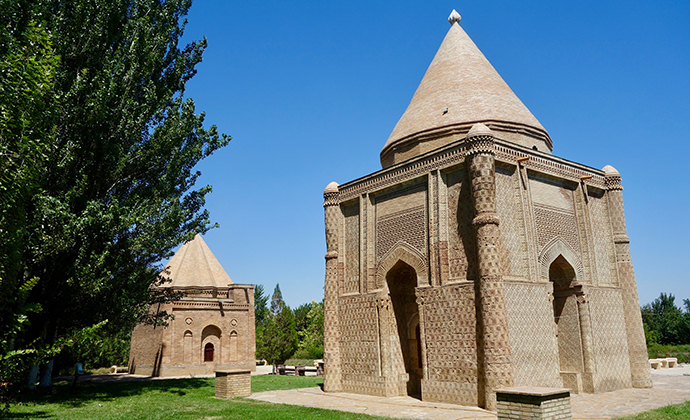
The exquisitely decorated mausoleum dates back to the 11th or 12th century © Maria Oleynik
Aisha Bibi is the subject of a popular legend in Kazakhstan. While there are numerous variations of the story, it runs broadly as follows. Aisha, of a well-todo 11th-century family and a descendant of the Prophet, was brought up by her stepfather, Zangi-Ata. The Governor of Taraz, Shakhmakhmud, fell in love with her, and asked for her hand in marriage. This was rejected by Zangi-Ata, since Shakhmakhmud did not have Aisha’s distinguished lineage. Aisha defied her stepfather and rode for Taraz to be united with the man she loved, but just short of the city she was bitten by a snake and died. The distraught Shakhmakhmud, who is also known as Karakhan Bab, built this beautiful mausoleum at her place of death. Shakhmakhmud never married, and became a wise and benevolent ruler, receiving the informal title of ‘holy father’, Aulie Ata. Since the monument is associated with the eternal qualities of love, and because it is a beautiful place surrounded by red roses, it is a popular spot for wedding couples to come and be photographed.
To the right stands another attractive building, the Mausoleum of Babazhi Khatun. This is a 12th-century structure that has also been heavily restored. It has a distinctive ‘corrugated’ conical dome, with 16 sharp-edged ridges radiating out from the top, looking rather like a hat made in a school origami class. The external walls are plainer than those of the Aisha Bibi Mausoleum, though an Arabic inscription runs across the top of the eastern facade, above the arched entrance. There is no tomb inside the building. Babazhi Khatun is popularly believed to be the friend or nanny of Aisha Bibi, who faithfully tended the latter’s mausoleum after her death, and was buried nearby.
The capital of West Kazakhstan Region, the city of Oral (known in Russian as Uralsk) is one of the most historically interesting in Kazakhstan, though you do have to search hard among the Soviet concrete to find the remnants of this heritage. It was a centre of the Pugachev Rebellion in the 1770s, and takes pride in its status as the only city of Kazakhstan to have been visited by the Russian poet Pushkin. With some fine Tsarist architecture, it makes a good place for a short stopover.
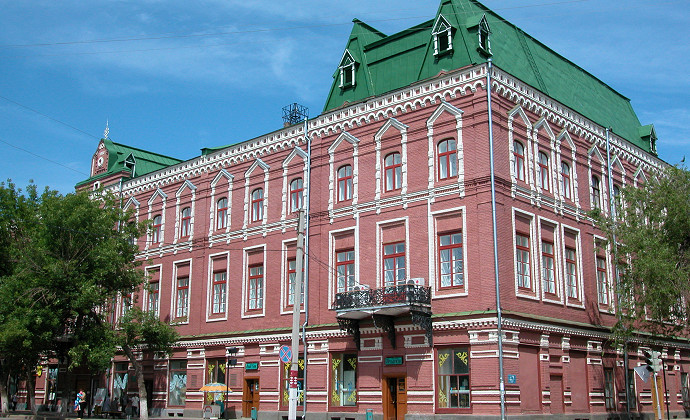
Established by Cossacks in 1584 at the confluence of two rivers, the Ural, then called the Yaik, and the Chagan, the town of Oral, originally named Yaitskiy Gorodok, claims its formal year of foundation as 1613. Because of the prominent role played by the town in the Pugachev Rebellion, Empress Catherine the Great determined on the defeat of the rebellion that she would obliterate the name of Yaitskiy Gorodok from the map, and with it the memory of Pugachev. By a decree of 15 January 1775, she determined that the Yaik River would be renamed Ural, that the Yaitsk Cossack Host would henceforth be known as the Uralsk Cossack Host, and that the town would now be called Uralsk.
Under its new name, the town flourished. As it expanded northwards from its original core, smart new brick buildings appeared. It was the scene of considerable fighting during the Russian Civil War. The celebrated Red Army commander Vasily Chapaev was killed south of here, near the settlement now renamed Chapaev in his honour, while attempting to swim across the Ural River to escape White Army forces. A number of industrial enterprises, such as the Zenit weapons factory from Leningrad, were relocated here during World War II from more vulnerable cities further to the west, further promoting the growth of the town. The discovery of a major oil and gas condensate deposit at Karachaganak near Aksai in the eastern part of the region in the late 1970s provided a further significant boost for the economic development of Uralsk and its surrounding region. Uralsk had become the administrative capital of the West Kazakhstan Region when the latter was formed in 1932. This was renamed as Uralsk Region in 1962, but reverted to its original name in 1992. While the city is officially now known by its Kazakhised name, Oral, Uralsk is still widely used.
Lying between Kyzylorda and Shymkent, the Silk Road town of Turkestan (Turkistan in Kazakh) contains Kazakhstan’s most impressive monument and most important pilgrimage site, the Timurid Mausoleum of Khoja Ahmed Yassaui. The town celebrated somewhat arbitrarily in 2001 its 1,500th anniversary. Its origins lie in the settlement of Shavgar, which flourished in the 9th and 10th centuries as a centre for trade and handicraft production. Shavgar appears to have declined in the 12th century, in favour of Yassi, which was probably initially a suburb or satellite town. Yassi’s fortunes in turn were linked to the presence here of a revered Sufi mystic, Khoja Ahmed Yassaui, and became a place of pilgrimage on his death.
The town grew further in importance following a visit to Yassaui’s decaying grave by Timur, known in the West as Tamerlane, in 1397. Timur ordered the construction of a magnificent new monument befitting a saint of Yassaui’s stature: a multi-functional building that would incorporate a vast and ornate mausoleum. His motivation was probably in part philanthropic, but in part also to help promote his rule in the area. Detailed designs were drawn up, and arrangements were also put in place for the funding, through voluntary donations, of a staff comprising a preacher, two Koran readers, a property manager, water carrier, gardener and, mysteriously, a scavenger. Construction began in 1399, but the building was left unfinished on Timur’s death in 1405. The main portal and some of the interiors remain today in an incomplete state, but the building still attains a great beauty through its size, turquoise domes and stunning decorated tilework.
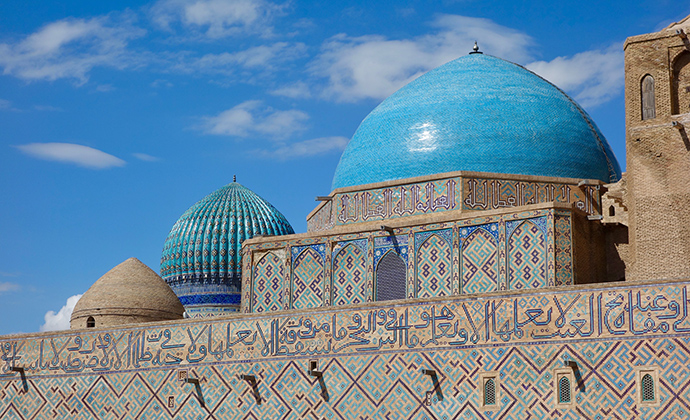
Details of the life of the man on whom Turkestan’s importance is based are relatively sketchy. Khoja Ahmed Yassaui was born in Sayram, at that time known as Ispijab, probably around 1103. His father, Sheikh Ibragim, was a well-known local figure, but Ahmed was orphaned at the age of seven, and he moved to Yassi with his elder sister, his only remaining close relative. His teacher was the venerable Arystan Bab, also known as Arslan Bab (both names meaning ‘lion’), according to legend a former companion of the Prophet Muhammad. On the death of Arystan Bab, Ahmed moved to Bukhara, where he became a disciple of Sheikh Yusup Hamadani, an important figure in the development of Sufism in central Asia. Ahmed elected to return to Yassi, taking the name Ahmed Yassaui, becoming a highly successful propagator of Islam, based around a mystic Sufi tradition. He used the local Turkic language in his religious poetry, which made it accessible to ordinary people, and it proved hugely popular. The poetry was much later collected in a book, Divan-i Hikmet , the authenticity of which is doubtful. When Yassaui attained the age of 63, that reached by the Prophet Muhammad, he retired to an underground cell, where he lived in prayer and contemplation, explaining that he had no wish to live a worldly life longer than that of the Prophet.
Between the 16th and 18th centuries Yassi, which became known as Turkestan, became a capital of the Kazakh Khanate. The Kazakh leaders chose Turkestan in large measure because of the spiritual significance of the town; allowing them to claim the Islamic heritage of Khoja Ahmed Yassaui, as well as at least part of the legacy of Timur. Many Kazakh khans and other senior figures were buried here, reflecting the traditional belief that burial close to the grave of a saint would provide protection in the next world. Among the first burials here linked with the khanate was that in 1519 of Amanbike, daughter of Janybek, co-founder of the Kazakh Khanate. The city was also the scene of ceremonies of the elevation of Kazakh khans to their throne, among them that of Ablai Khan in 1771. By tradition the act of coronation involved lifting up the new khan on a white felt mat.
In the late 19th century, during the Russian conquest of central Asia, one of Russia’s most celebrated painters, Vasily Vereshchagin, served at the court of Konstantin Petrovich von Kaufmann, the first Governor-General of Russian Turkestan. Vereshchagin spent several years in the region producing a fine collection of paintings entitled the ‘Turkestan Series’. On display in Moscow in the State Tretyakov Gallery, these offer an insight into the everyday life of the region and its people amid Russia’s military campaigns.
Turkestan today is a major Sufi pilgrimage centre. By local tradition, three pilgrimages here are considered to equate to one to Mecca, and pilgrims far outnumber tourists. The town also houses the Kazakh–Turkish University named, of course, in honour of Yassaui.
Ulytau Mountains
Ulytau, the ‘Great Mountains’, rise up from the surrounding steppe some 130km to the northwest of Zhezkazgan. This ancient granite massif is not particularly high: its highest peak, bearing the name White Mosque, reaches a height of 1,131m. But this range, located at the geographical centre of Kazakhstan, has a place at the heart of the development of the Kazakh people. The mountains of Ulytau and the steppes that surround them are full of historical monuments: petroglyphs, barrows adorned with curious stone ‘moustaches’, and numerous mausolea. It is difficult to separate out the facts from the legends surrounding the area. On the peaks of the mountains here, they say, are buried Tokhtamysh, the great rival of Timur, and Edigey, the Emir of the White Horde who, as an ally of Timur, killed Tokhtamysh in 1406. Mausolea are ascribed to Alasha Khan, the legendary founder of the Kazakh people, and Jochi, son of Genghis Khan. The Kazakh tribes came together close to the Ulytau Mountains to inflict, in 1727, a crucial defeat on the invading Dzhungars at Bulanty to the southwest. It is said that many Kazakh khans were crowned here, a ceremony that involved being raised aloft on a white felt rug. Well-to-do Kazakhs come to these mountains to spend time in an environment considered to be particularly favoured for its cosmic energy, and to eat mutton from local sheep, its taste highly regarded because the local ovine diet is so strong in highly aromatic wormwood. It is no surprise that a Kazakh band aiming to create a sound fusing rock music with the strains of traditional Kazakh instruments should choose Ulytau as its name.
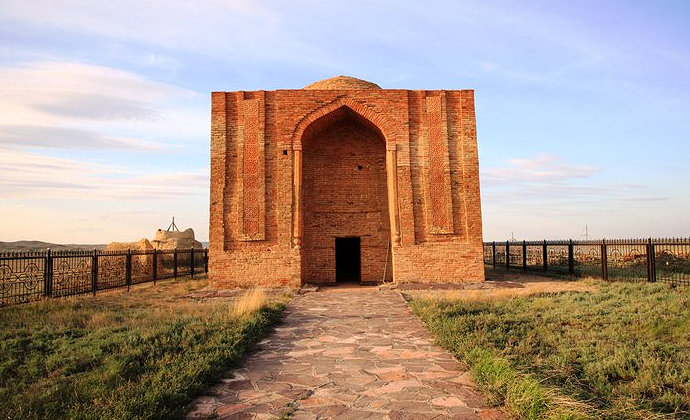
While there are plans to encourage tourism development in the area, there is as yet very little in the way of tourist infrastructure. A couple of buses a day make the journey from Zhezkazgan to the village of Ulytau, but to get to most of the historical sights you’ll either need your own transport, or to come to a deal with a taxi driver in Zhezkazgan.
Related books
For more information see our guide to Kazakhstan :
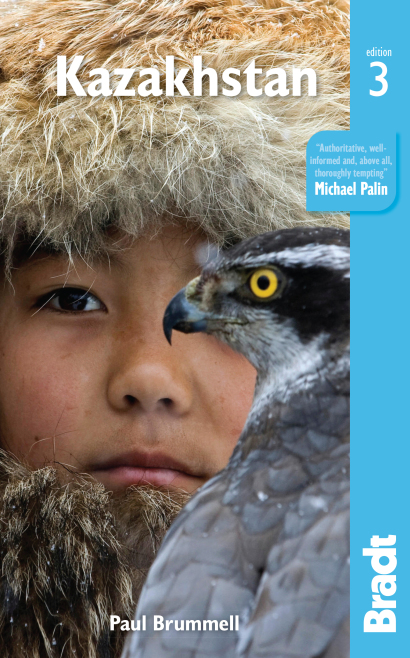
Related articles
Read more about Kazakhstan through our articles below and also by checking out this guide on what to eat in Kazakhstan and this collection of interesting facts about Kazakhstan.
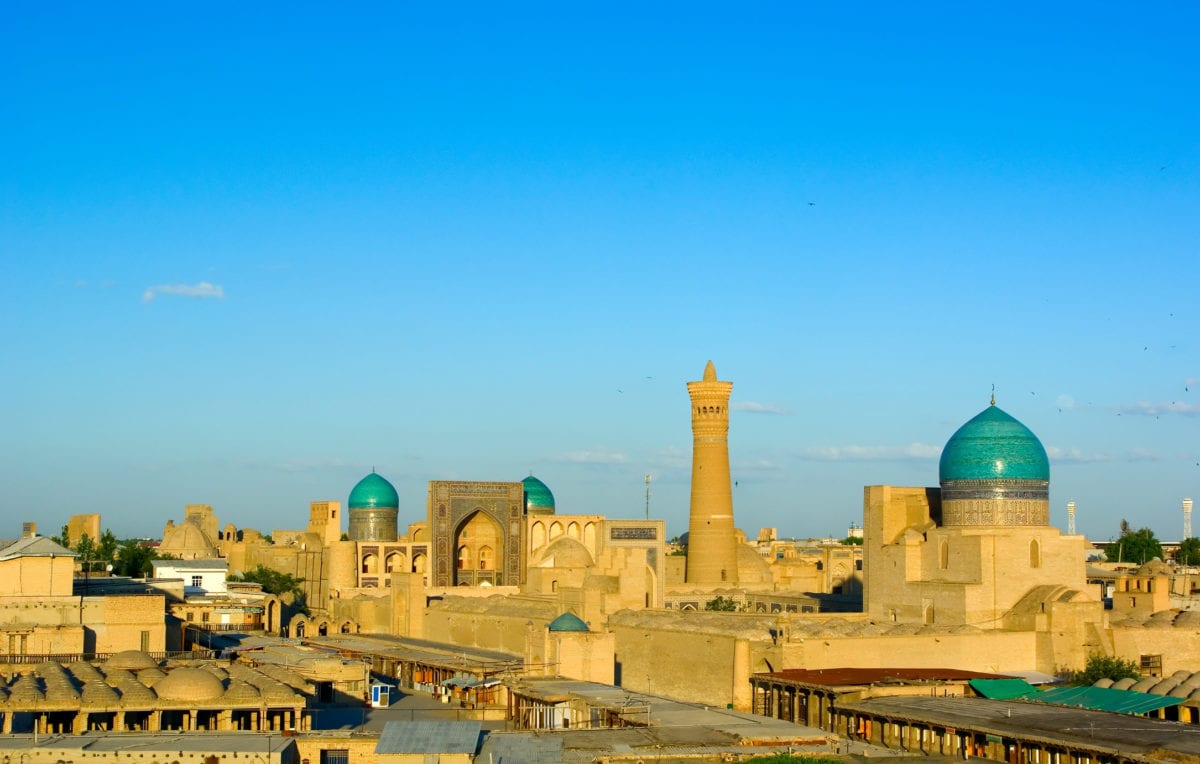
Mosques, mausoleums and madrasas: our favourite Silk Road sights
Discover our favourite sights along one of the most important trading routes in history.
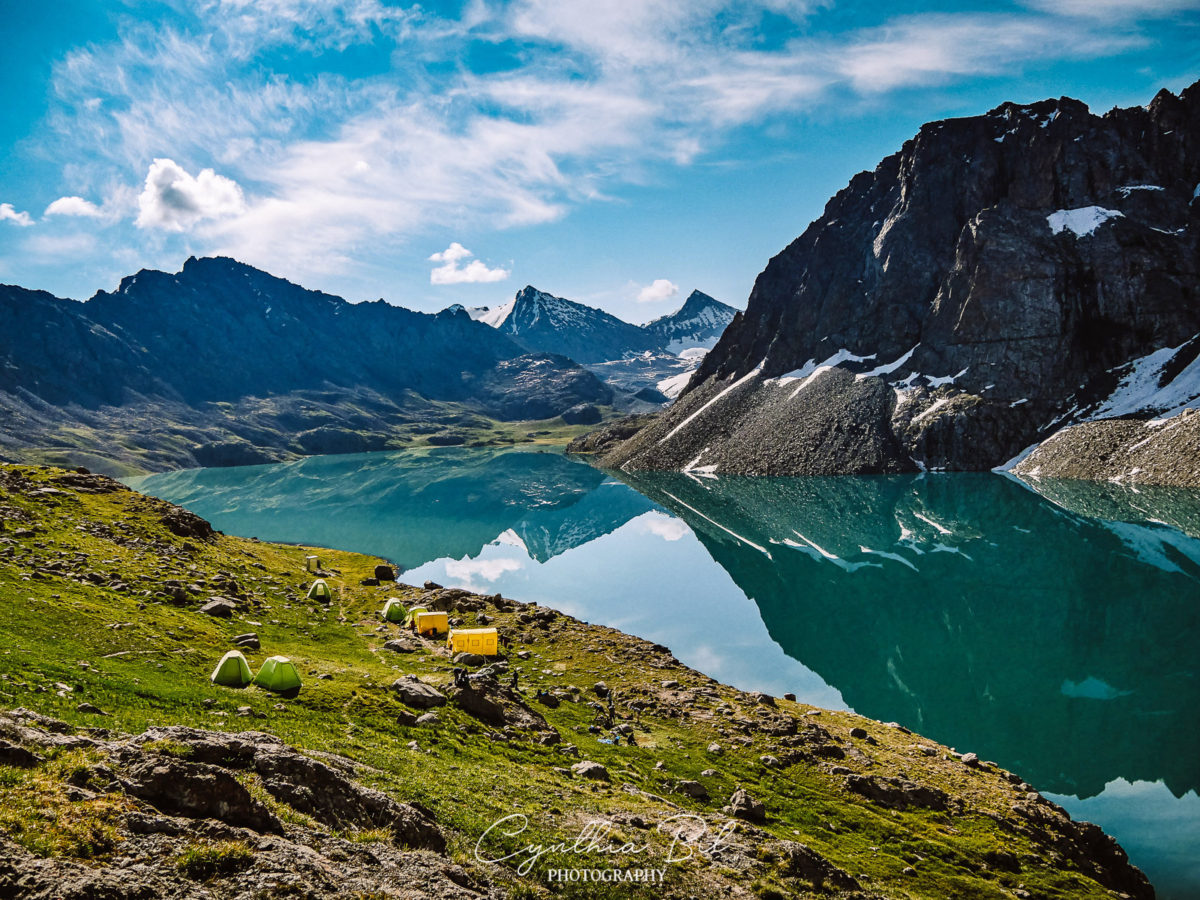
In photos: the best of Central Asia
Exploring one of our favourite regions with our Photographer of the Month, Cynthia Bil.
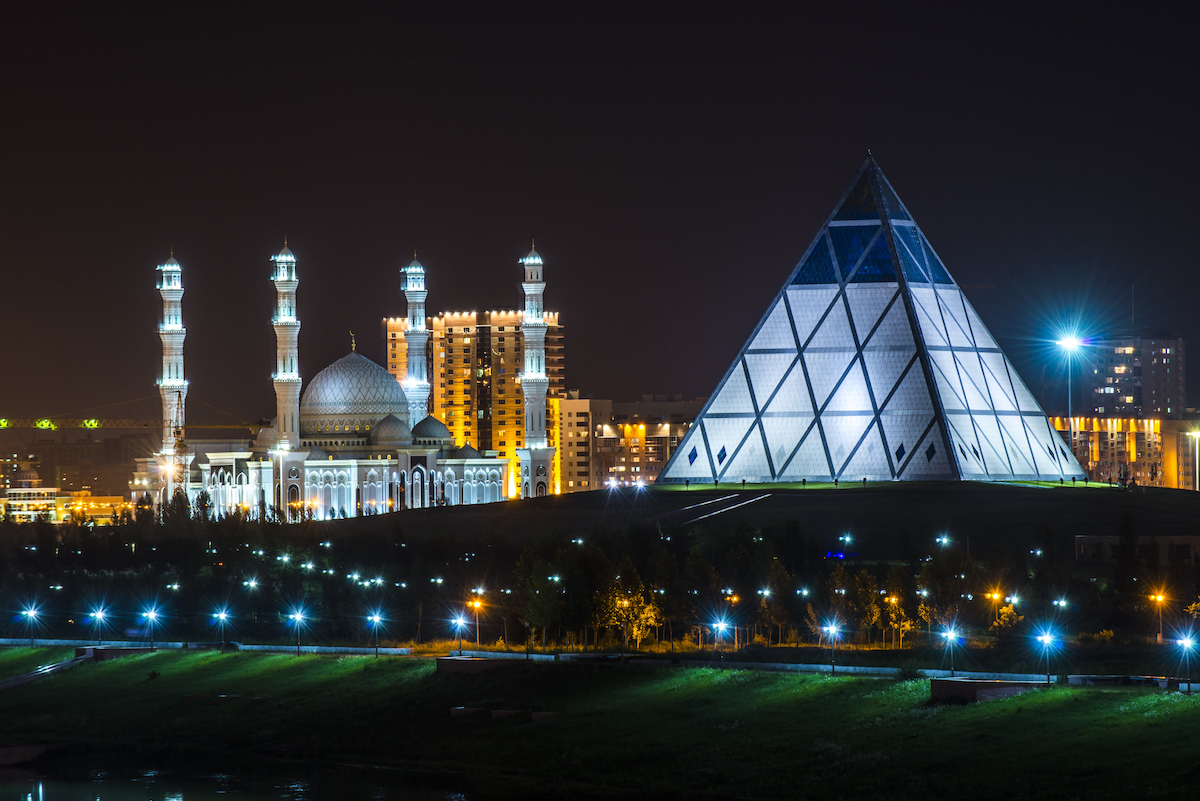
Bizarre buildings: the otherworldly architecture of Astana
The Kazakh capital is packed with architectural delights.
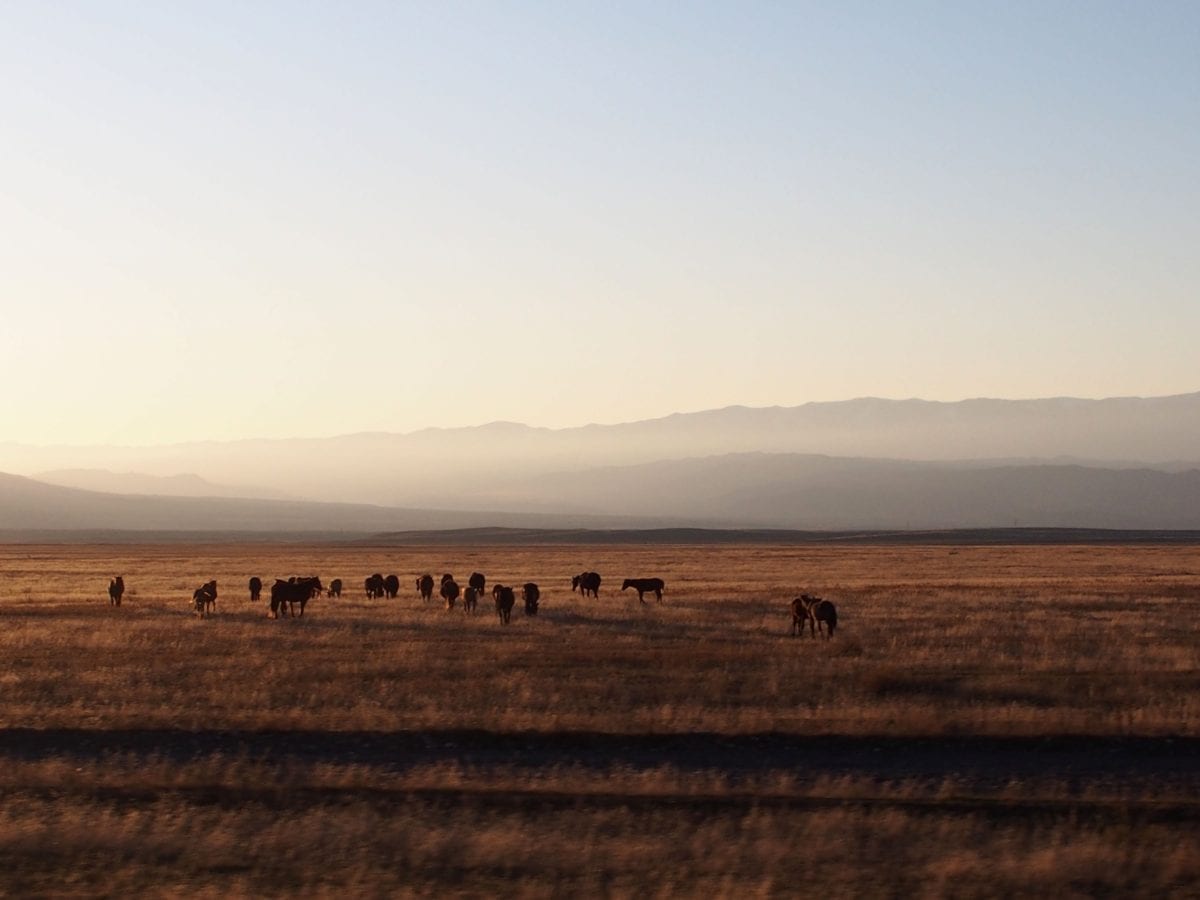
Once more with feeling: Kazakhstan
Lately I’ve been magically transporting myself back to my favourite countries.
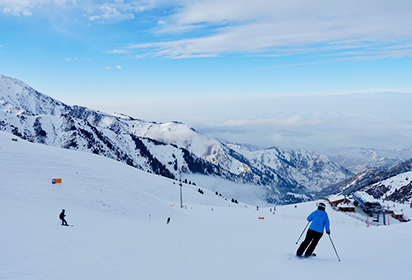
A guide to skiing in Almaty
Looking for an off-the-beaten-track ski holiday? Then this Kazakh resort is for you.
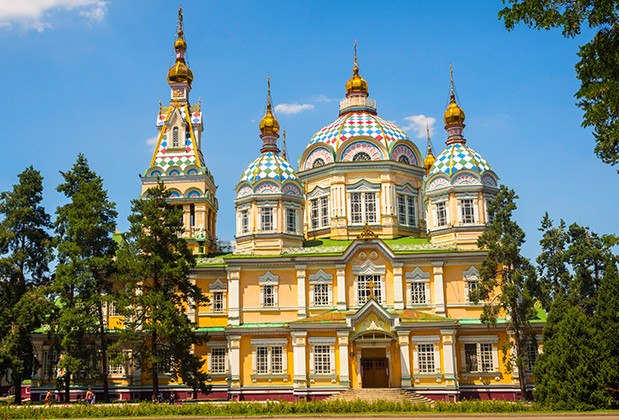
A walking tour of Almaty
Discover what not to miss on a visit to Almaty with our walking tour of the city.
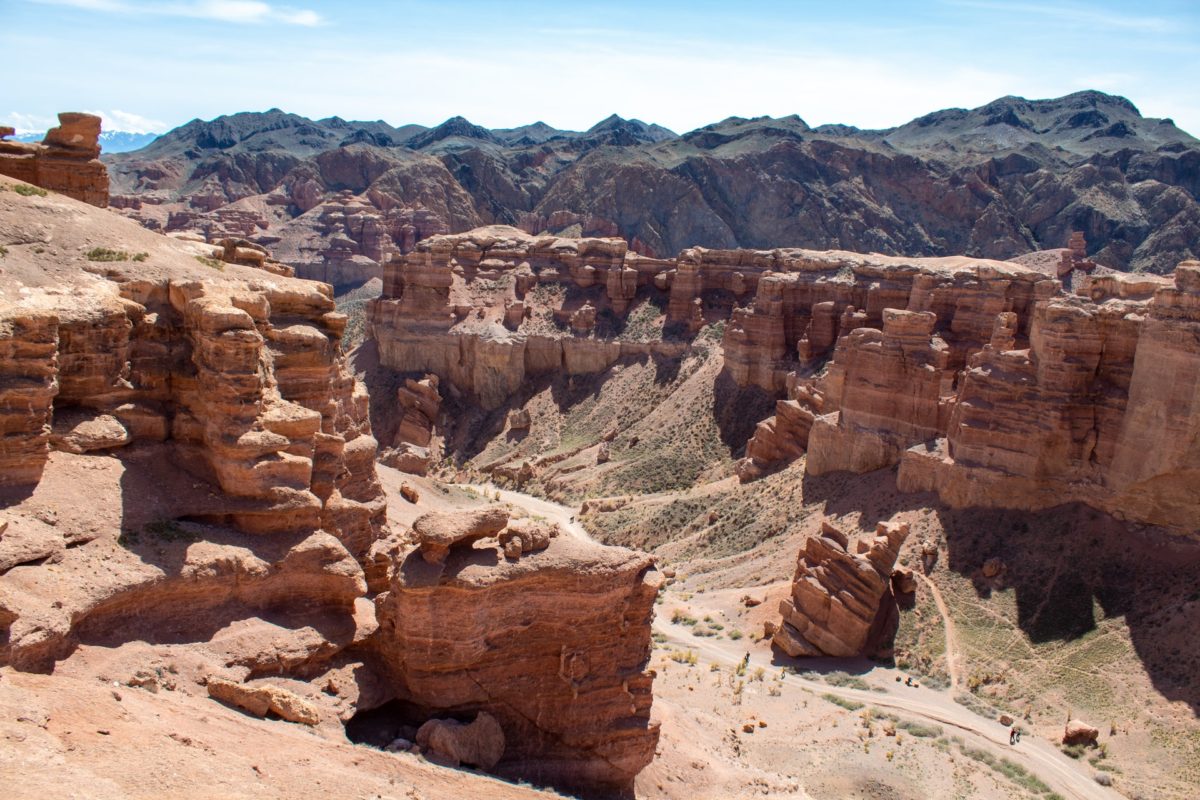
Six reasons to visit Kazakhstan
Stretching from Tian Shan’s snow-capped peaks across expanses of steppe to the Caspian Sea, Kazakhstan has much to offer.
35 Useful tips for traveling to Kazakhstan
By Joan Torres 1 Comments Last updated on August 27, 2024
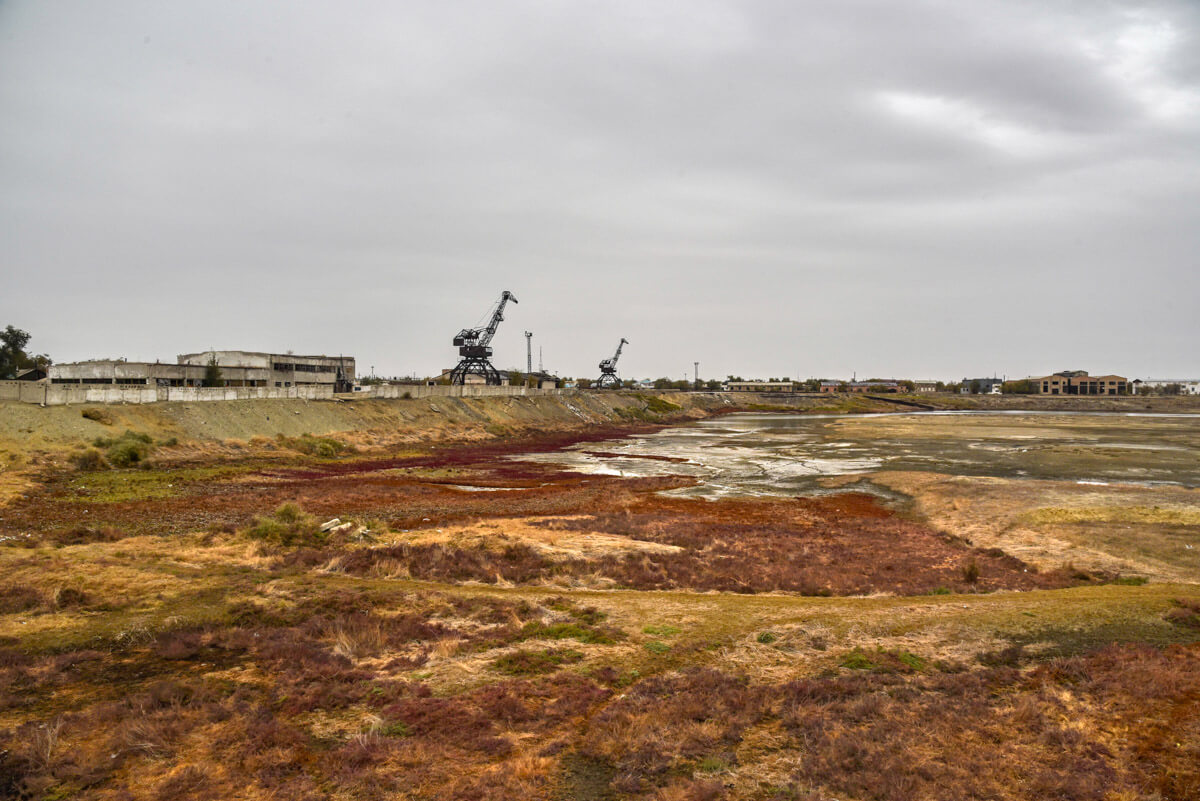
Kazakhstan is, by far, one of the strangest countries I have ever been to, along with Azerbaijan .
On the one hand, it is a surprisingly developed country, home to the most Westernized city in Asia, Almaty, whose inhabitants are very European-minded, as well as some striking mountains.
On the other hand, this oil-rich, barely populated country is also the 9th largest in the world and it is also home to some of the most bizarre places on Earth, like an old nuclear testing town, a drought sea, the Russian Cosmodrome and an extremely vast steppe with the occasional 2-humped hairy camel.
Kazakhstan has two faces and, for this reason, it can really have a place in everybody’s heart, both the traveler who likes to explore a cosmopolitan city and beautiful mountains and the avid traveler who likes to get deep into obscure places off the beaten track.
After traveling in Kazakhstan for a month, I have compiled this guide with all the travel tips you need to know.
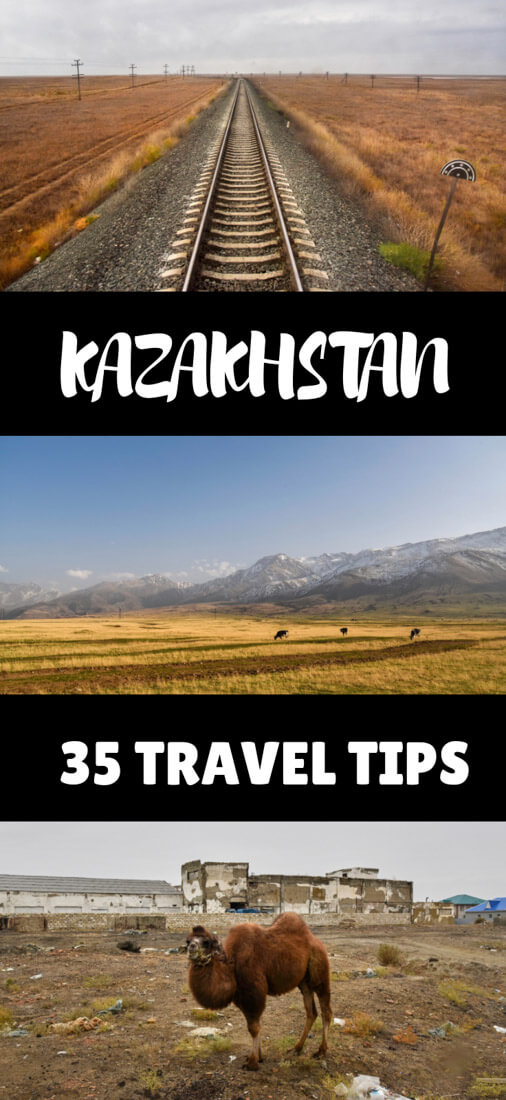
In this Kazakhstan travel blog you will find:
Table of Contents
- Travel insurance for Kazakhstan
- The country, people and their culture
- Tourism in Kazakhstan
- Food and alcohol
- Transportation
- Accommodation
- More resources
our recommended travel insurance for Kazakhstan
With its Backpacker plan, IATI Insurance is the best insurance for any kind of adventurous destination, like Kazakhstan.
🪪 Visa requirements for traveling to Kazakhstan
1 – Visa-free – Travelers from around 60 countries can travel to Kazakhstan without a visa and they can get it on the arrival at any international airport or land border. This includes EU passport holders, the USA, Canada, most Latin American countries, Australia, Japan, South Korea, and a large etcetera. The visa is valid for 30 days.
2 – Extending your visa – Like in the rest of Central Asia , extending your visa seems tricky but, if you leave the country and re-enter on the same day, you will automatically renew your visa for 30 more days. The easiest way would be going from Almaty to Bishkek, as Kyrgyzstan has even more liberal visa rules. However, I think the maximum you can stay is 90 days within a 180-day period.
3 – Registration – For people traveling in Kazakhstan, there is a very strange rule: basically, when you enter the country, they will give you an immigration form which you need to fill in. Once you get it, the authorities will stamp it twice and that second stamp is your police registration. If you lose your card, upon your exit you will have to pay a fine.
Moreover, in the unlikely event that you don’t have a second stamp, you will have to register at the migration police station within 5 days of your arrival. If you don’t register, you could get into some serious trouble.
If you aren’t sure about whether you are eligible for a free visa, check the Caravanistan site .
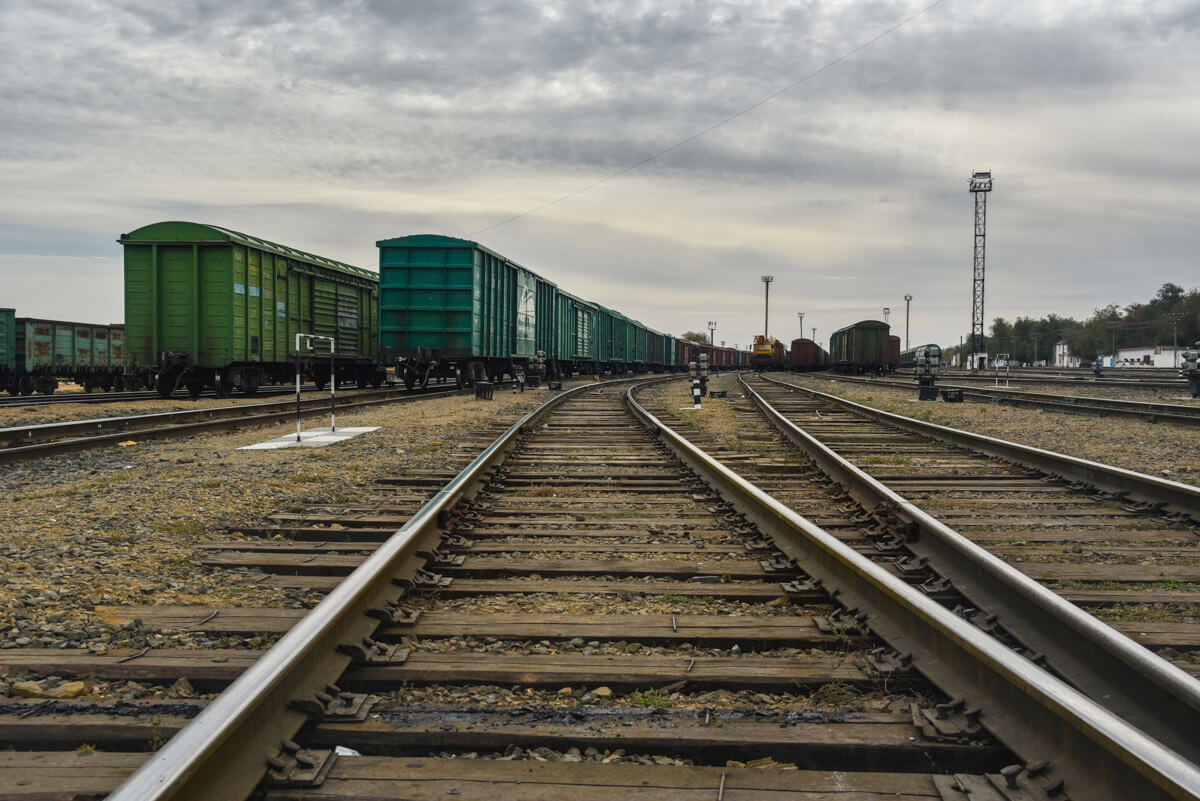
🚑 Travel Insurance for Kazakhstan
4 – Kazakhstan is an adventurous destination, so we recommend going there with proper travel insurance.
I recommend IATI Insurance because:
- Their backpacker plan covers all types of adventure activities, including trekking
- Very competitive prices
- Readers of this blog can get a 5% exclusive discount
💻 Internet when you travel in Kazakhstan
5 – Wi-Fi – It’s all right throughout the country. Nothing wow but I managed to work online without any problem.
6 – Sim Card and 3G – SIM Cards and 3G data are really cheap and work well. Plans may vary depending on specific promos but I paid 2,000TEN and they gave me 20GB of data for 1 month. Amazingly cheap.
eSIM for browsing, calling and traveling in Kazakhstan
Basically, an eSIM is a regular SIM card with a digital format that works like a normal physical SIM card, with the added benefit that you can buy it from home before the beginning of your trip, hence avoiding the hassle of buying it at your destination.
With Holafly , you can get a SIM Card for a wide range of destinations, including Kazakhstan .
Moreover, you can benefit from a 5% discount with the following code: AGAINSTTHECOMPASS
Get a VPN for traveling in Kazakhstan
You should always use a VPN when you travel, especially when you connect to public Wi-Fi networks.
Your connection will be much safer.
Moreover, you will be able to access content which is typically censored in Kazakhstan.
I recommend ExpressVPN – Extremely easy to use, fast and cheap.
If you want to learn more about VPN, check: Why you need a VPN for traveling .
💰 Money when you travel in Kazakhstan
7 – Currency – In Kazakhstan, they use the Kazakh Tenge and approximately
1 USD = 440.90 KZT
8 – Currency exchange – You can easily exchange Euros or American Dollars in many banks and offices across the country. Just remember that, except for Russian Rubles, they aren’t very big fans of their neighbors’ currency. I am not sure about Kyrgyz SOM but I was never able to exchange the Uzbek money I had left.
9 – ATMs – In the big cities, ATMs are plentiful and in Almaty, you can pay by card in many places. However, do have cash whenever you are in the countryside.
10 – How much does it cost to travel in Kazakhstan – Personally, I found Kazakhstan particularly expensive, as it was the last country from all the Stans I visited, after 5 months in Central Asia. It is, definitely, the most expensive one but, when I looked at its prices in absolute terms, it became very affordable. These are the prices of the most typical things:
- Dorms – 2,000 to 4,000KZT
- Private rooms – from 5,000KZT
- Meals in local restaurants – Mains from 1,000 to 2,200KZT
- Meals in international, cool places – Mains from 2,000KZT
- Trains – Atyrau to Aralsk, 20 hours, 1,400km, 2nd class (4,000KZT)
Read: Useful tips for traveling to Uzbekistan
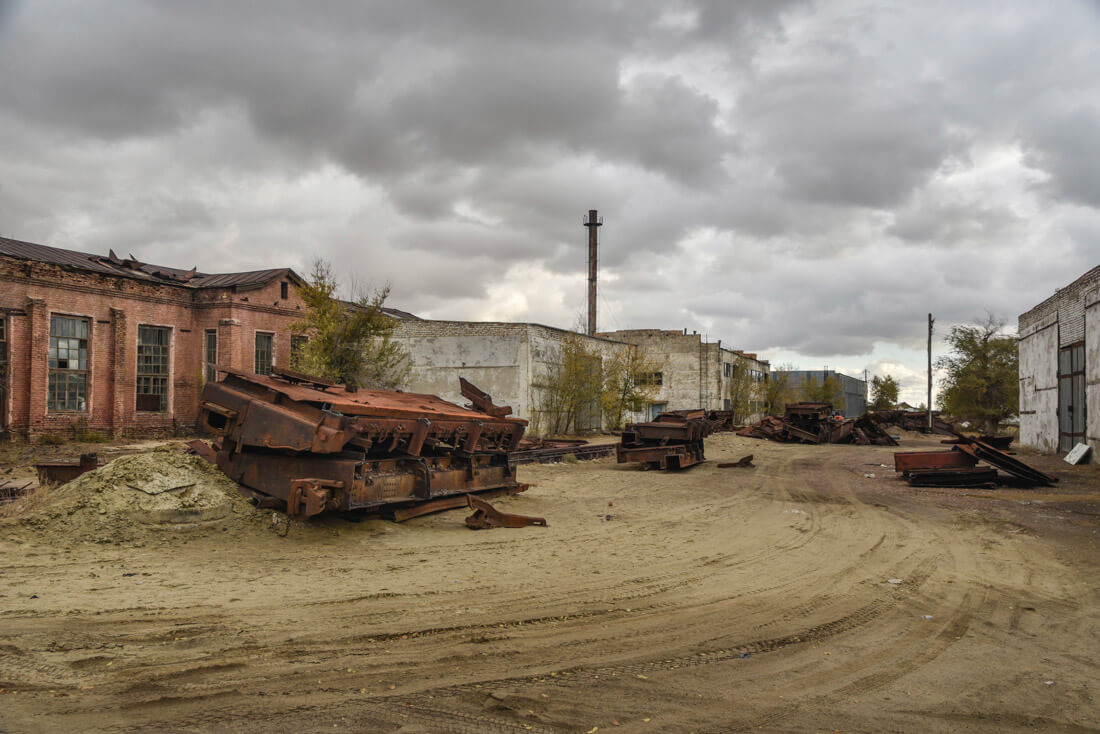
11 – Bribes – Would you believe when I tell you that a very common question I receive from travelers is about policemen asking for bribes in Central Asia ? Corruption in Kazakhstan and in the rest of the region is a well-known fact overseas. I personally didn’t have any problems but I heard from a traveler that the police asked him for money after checking his passport, claiming that there was something wrong with his visa.
Honestly, if you decide to pay them, not only are you really stupid but you will also be feeding their corrupt system. Because, seriously, how the hell is there going to be something wrong with your visa?
That guy didn’t pay obviously, basically because he told the policeman that, if there was something wrong, he preferred to be arrested and taken to the police station, so the policemen backed off.
Furthermore, a friend of me told me that he was arrested and taken into a room while he was smoking at the train station in Aktau, which was awful, as there were other people smoking as well. The policeman claimed that they had to pay a 100USD fine each. Smoking was technically allowed and if it wasn’t, no way would the fine be that expensive.
However, the policeman kept insisting, as he knew they were about to miss the train and they were going to Aralsk, which was 1,700km away, so it would have been a big deal to miss that train. They held the pressure, however, and, in the end, they agreed on paying around 20USD between the two of them, so they could catch the train.
Personally, I would have tried to hold a bit more, not because of the money but because I would hate that corrupt policeman to get away with it.
Read: Useful tips for traveling to Kyrgyzstan
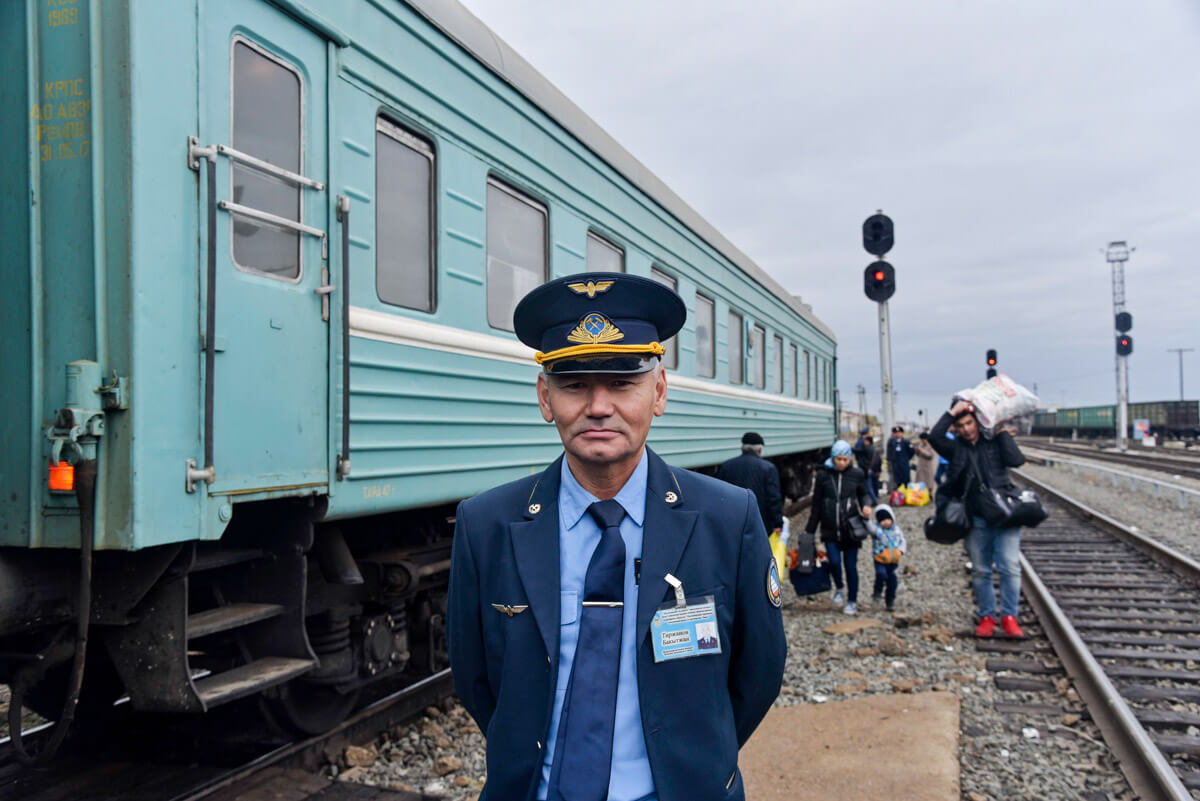
🛫 Getting to Kazakhstan
12 – By plane – I strongly recommend flying to Almaty, as there are very cheap flights from Europe operated by Pegasus. Alternatively, you could also fly to Bishkek, as it is very close to Almaty and has cheap flights as well. Flying to Astana (today called Nur-Sultan) would also be an option and, if you are in Iran or Azerbaijan , consider flying to Aktau, as there is a daily budget flight.
13 – Overland (bus or train) – There are open land borders with China, Kyrgyzstan, Russia and Uzbekistan . Practically, all of them are open and friendly, at least from the Kazakh site. I personally crossed by train from Uzbekistan .
14 – Overland (by boat) – Long-term overlanders like to take the ferry from Baku to Aktau, which takes 24 hours. I haven’t taken it but my friends from Journal of Nomads did. Check their report here .
Read: Kazakhstan 1-month itinerary
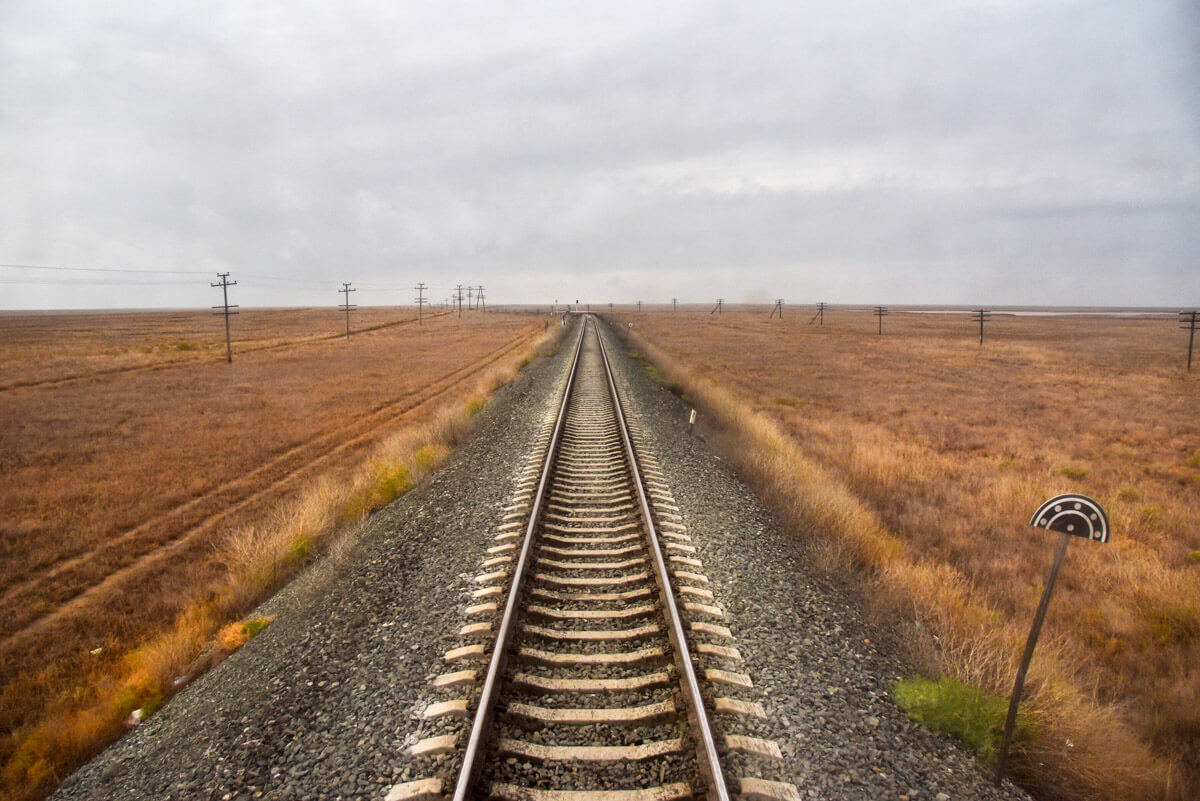
🕌 The country, people and their culture
15 – Welcome to the ex-Soviet Republic of Kazakhstan – Kazakhstan is a republic which, like most former Soviet republics, got its independence from Russia in 1991. It is, however, the country with the largest Russian influence in Central Asia, not only due to its buildings and remaining infrastructure but you can see it in their culture, and Kazakh people actually like Russia:
We like Russia because she takes cares of us’, a Kazakh friend of mine said. Kazakhstan is the only Stan that borders Russia, so it is obvious that their presence and influence is highly visible.
16 – Kazakhstan today – The development of Kazakhstan is explained by its abundance of natural resources, such as oil and gas. It has really major, rich cities which have been totally built with the help of oil and have become business hubs filled with expats, like Atyrau, the first city I visited in Kazakhstan.
Moreover, the Government has been investing a lot in terms of education, one of their most successful policies being the opportunity of giving loads of scholarships to students to study abroad in major worldwide universities, with the only condition that they must come back and work in Kazakhstan after X years. This has led to a highly educated work-force for Kazakhstan.
However, Kazakhs claim that, given its abundance of natural resources, the situation should be much better and they blame a very corrupt and human rights-abusive President named Nursultan Nazarbayev , the first and only President that Kazakhstan has ever had. Since he was elected president of Kazakhstan back in 1991, Kazakhstan has never celebrated fair elections.
17 – The Kazakhs – Kazakhs are descendants from Turkic and Mongolian tribes. They are very ethnically mixed but most of them have strong Mongolian features. The Kazakhs used to be a nomadic nation that moved across the steppe and their biggest contribution to the Silk Road trade was animal-related products, like fur.
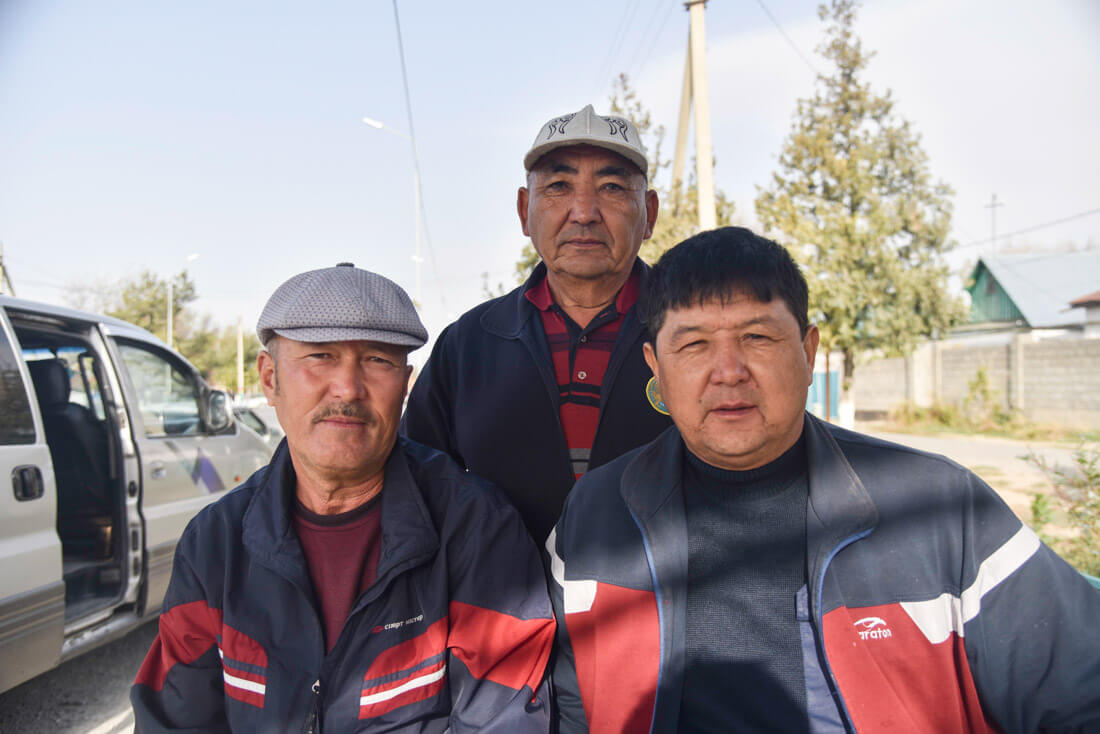
18 – Language – Kazakh, a Turkic language, is the official language in Kazakhstan. Russian, of course, is widely spoken, more than anywhere else in Central Asia and, in Almaty, it is the preferred language. Actually, many Kazakhs from Almaty claim that their Russian is better than their Kazakh.
As per English, most young well-educated people from the main cities can speak English but, other than that, you should try to learn some Russian words if you decide to visit Kazakhstan.
19 – Religion – Officially, Kazakh people are Muslim but, like in the rest of Central Asia, they are what I call Soviet Muslim , as their devotion to Islam was pretty much lost during the USSR .
Sure, you will see a few mosques with a couple of worshippers but most people are actually atheist and even those who do go to the mosque, also drink vodka whenever they have the chance. Saudi Arabia has actually invested millions in trying to reverse that.
Read: How to travel by train in Kazakhstan
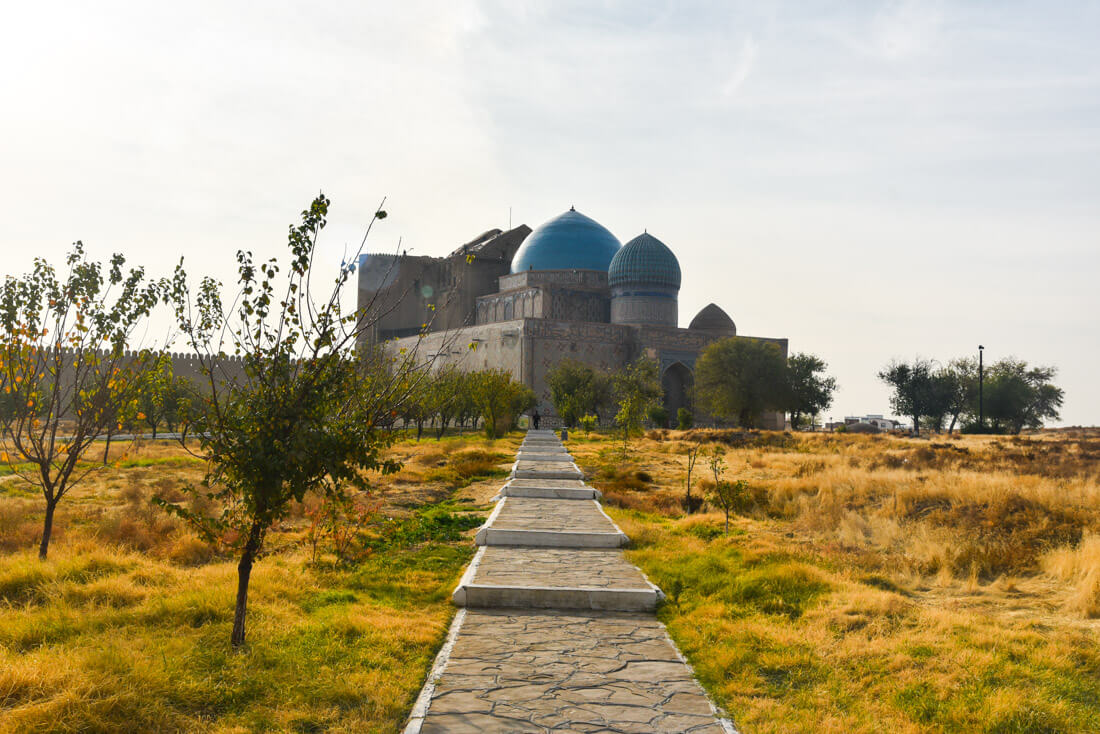
🚶♂️ Tourism in Kazakhstan
20 – The land of the weird stuff – Like I said in the introduction, tourism in Kazakhstan is about very strange, remote places, so it is the perfect place destination those people who really like to get off the beaten track.
On the one hand, you have those long journeys on a Soviet train through thousands of kilometers of boring steppe, yet, it is a great way to meet locals.
Then you have those dark tourism places, like the Aral Sea or Semipalatinsk, a nuclear testing site whose inhabitants are still suffering from its brutal consequences today.
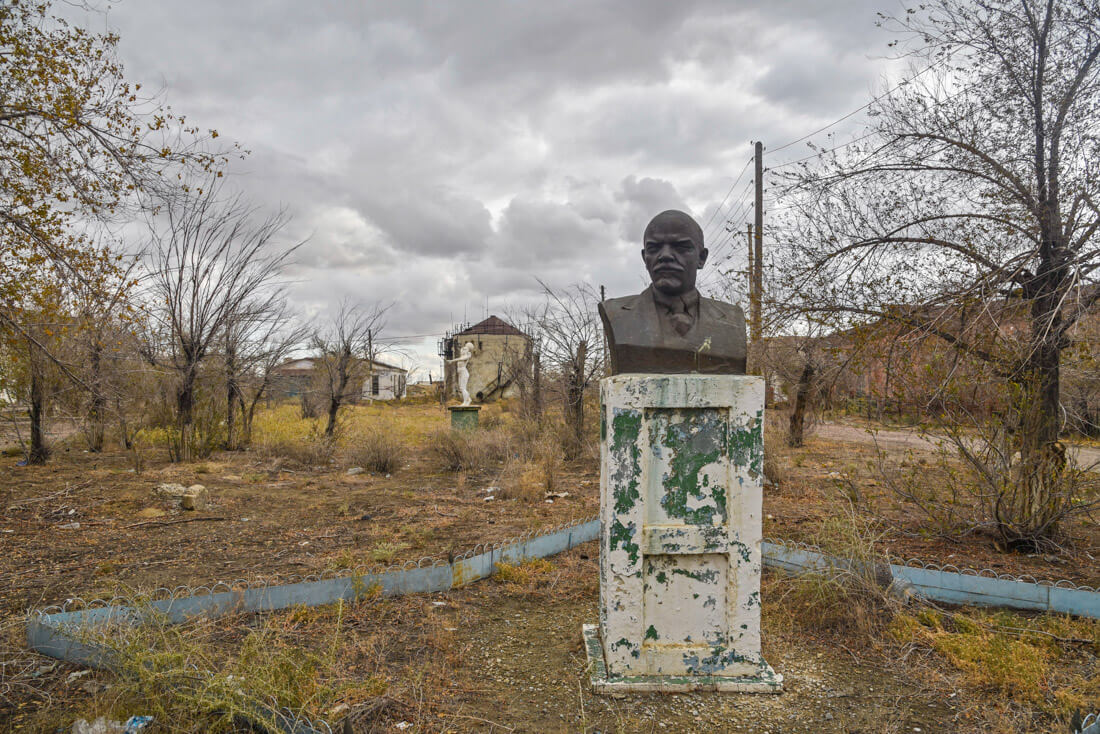
Moreover, there is also the forbidden Russian town where the Cosmodrome is (Baikonur), as well as extremely remote villages surrounded by nothing but steppe and hairy camels. Oh, and if that was not enough, you also have Astana (Nur-Sultan), one of those fake capitals built with the money from natural resources and composed of the most nonsensical buildings, sort of a Dubai concept I would say.
21 – Apart from weird stuff – I fully understand that there are many travelers out there who aren’t really into dark tourism nor visiting remote places just to see strange things, However, this shouldn’t stop you from visiting Kazakhstan, as I strongly believe that the city of Almaty and its surrounding mountains are a first-class touristic destination, as well the Silk Road city of Turkestan and the more traditional-oriented city of Shymkent.
For more information, don’t forget to check my 1-month itinerary to Kazakhstan
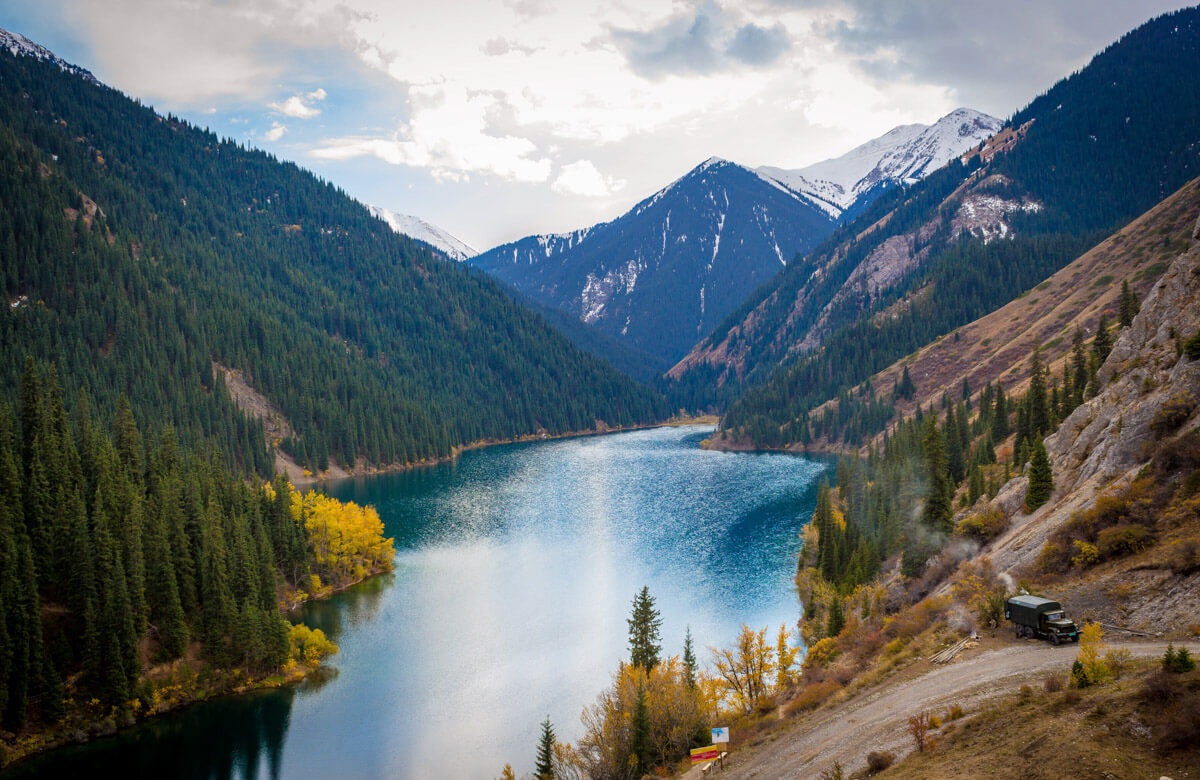
🍲 Food and alcohol when you visit Kazakhstan
22 – Food sucks – I traveled for 5 months in Central Asia and Kazakhstan was the last country I visited, so I am completely biased, but seriously, the food is the same across the region and let’s say that high-cuisine is not their strength, precisely. In Kazakhstan, pelmeni (dumpling soup) would be the most common option, so is lagman (noodles soup with terribly chewy and fatty beef).
23 – You must try beshbarmak when you visit Kazakhstan – A national dish which consists of pasta layers, vegetables, and the star-ingredient being horse meat, all served in a huge flat dish with a bit of broth. Usually, it is a sharing dish, so the few restaurants that serve it require a minimum order of a couple of people. Kazakhs reserve beshbarmak for special occasions.
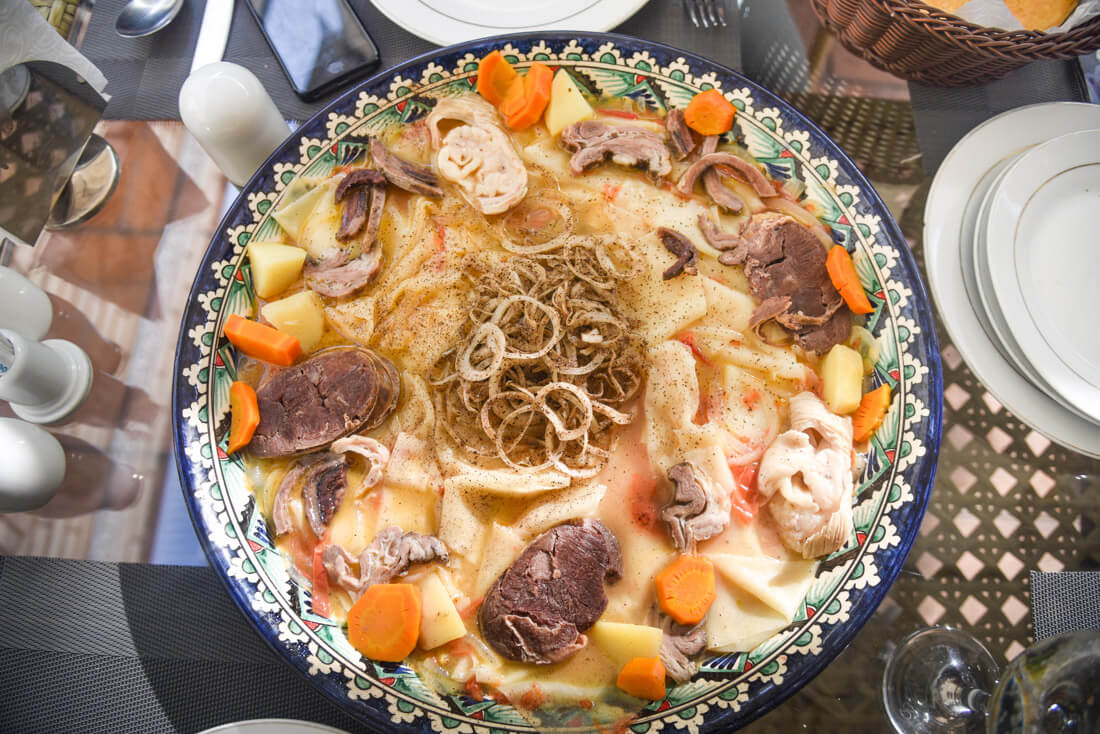
24 – Yes, horse meat is a thing – You can find horse meat in many countries from around the world but nowhere else like in Kazakhstan, where horse meat is the base of many of their dishes, so that’s why you can find farms all around the country.
I actually visited one horse-farm in Zhabagly, a mountain village around Shymkent. They had hundreds of horses and they told me that, when the horse gets into a certain age, they decide whether they keep it as a workforce or send it to the butchery. It was sad but this is life…
25 – Get drunk on vodka with the locals, at least once – In rural Kazakhstan, in places like Aralsk or even when you travel by train , you are likely to meet friendly locals who want to invite you to drink some vodka.
If you say yes, they will order a bottle and you can’t just drink one shot but you need to finish the bottle with them, otherwise, you will be considered a pussy. If you don’t feel like drinking more than a shot, then just say no from the beginning. Vodka is always served very cold and a bottle costs just a few dollars.

26 – In big cities you can find everything – I spent 8 days in Almaty and never ever ate any Kazakh food, like no way. It was my last destination in Central Asia before going back home, so I tried Japanese, Thai, Italian, and all sorts of international cuisine. You can seriously find everything. In Atyrau and Shymkent, I also found a few international options.
27 – Vegetarians are nearly fucked – Local cuisine is meat-based, even salads sometimes, and usually, this is the only options outside Astana (Nur-Sultan), Almaty, and Atyrau pretty much.
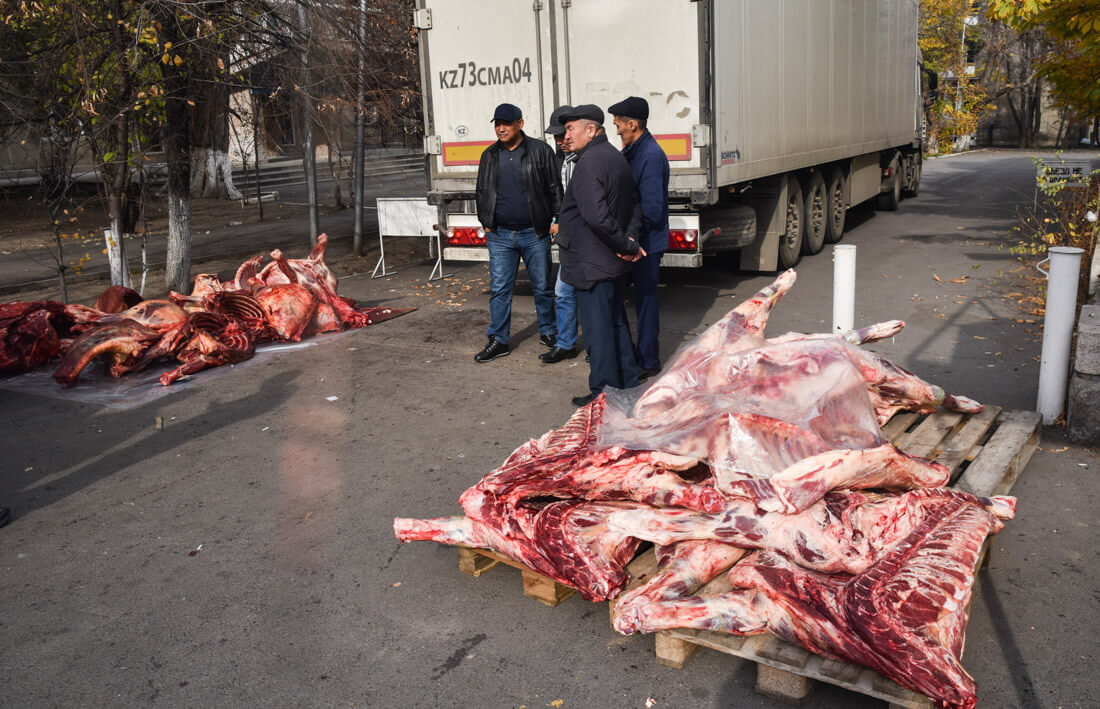
🛺 Kazakhstan travel guide – Transportation
28 – Train – Multi-day train journeys over the Kazakh steppe is an experience by itself and so much fun. For more information, I put together a train guide to Kazakhstan .
29 – Bus – I never got in any bus when I was traveling in Kazakhstan but I always took the train. However, I know that it is also an option to move around cities.
30 – Shared taxis – In some more remote places where trains don’t go, the locals move around in shared taxis. They are significantly more expensive than any other transportation.
31 – City taxis – To avoid any hassles, I recommend you download Yandex , which is like the Russian Uber.
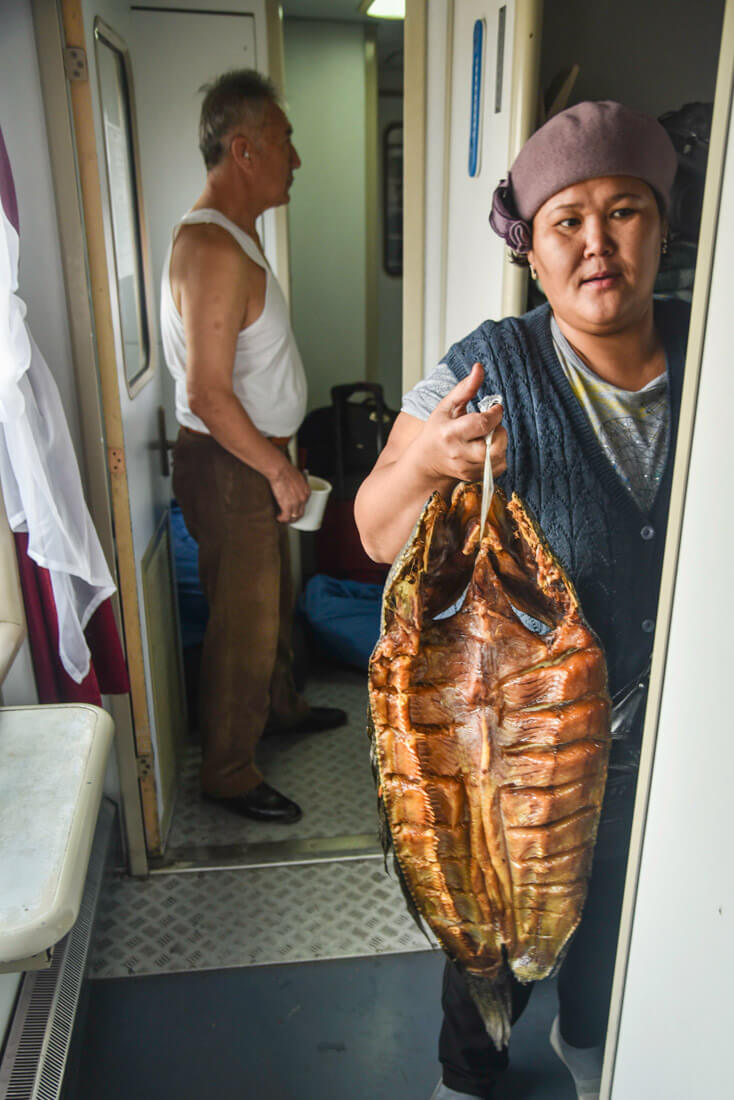
🏨 Accommodation
32 – There all of sorts of accommodation – From backpacking hostels to 5-star hotels, in Kazakhstan, you can find all sorts of accommodation. I always booked them through Booking.com .
In my Kazakhstan itinerary , you can find different accommodation options from each city I visited.
Here are the 3 most popular options but, if you want to get deeper into the region, here’s my list of the best books on Central Asia
33 – Kazakhstan travel guide by Bradt – Bradt just released the latest guide for traveling to Kazakhstan. You won’t find any more complete guide. Seriously, I have the Kindle version of all Bradt guides from all the countries I go because they are great.

34 – Central Asia Travel Guide by Lonely Planet – If you are traveling all around Central Asia, you may prefer to buy one book for the whole region. It’s all right but you will just get an overall picture.
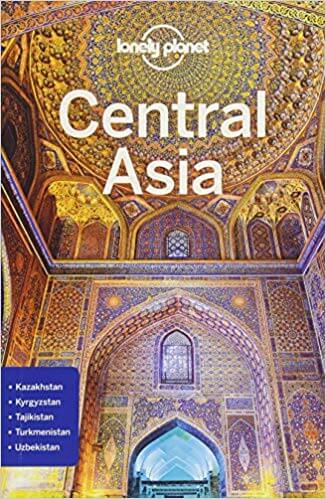
35 – Once in Kazakhstan – If you are looking for good literature and get some political context, this is the one I would recommend, as it tells the story of all the struggles of Kazakhstan when it became an independent country

❗ More resources for traveling to Kazakhstan
📢 In my Travel Resources Page you can find the list of all the sites and services I use to book hotels, tours, travel insurance and more.
All guides and articles for traveling in Kazakhstan destination
- Travel Guide to Astana
- Uzbekistan-Kazakhstan border crossing
- Train Guide in Kazakhstan
- Kazakhstan Itinerary
Travel guides to other countries in Central Asia
- Tajikistan Travel Guide
- Kyrgyzstan Travel Guide
- Travel Guide to Uzbekistan
- Pakistan Travel Guide
- Afghanistan Travel Guide
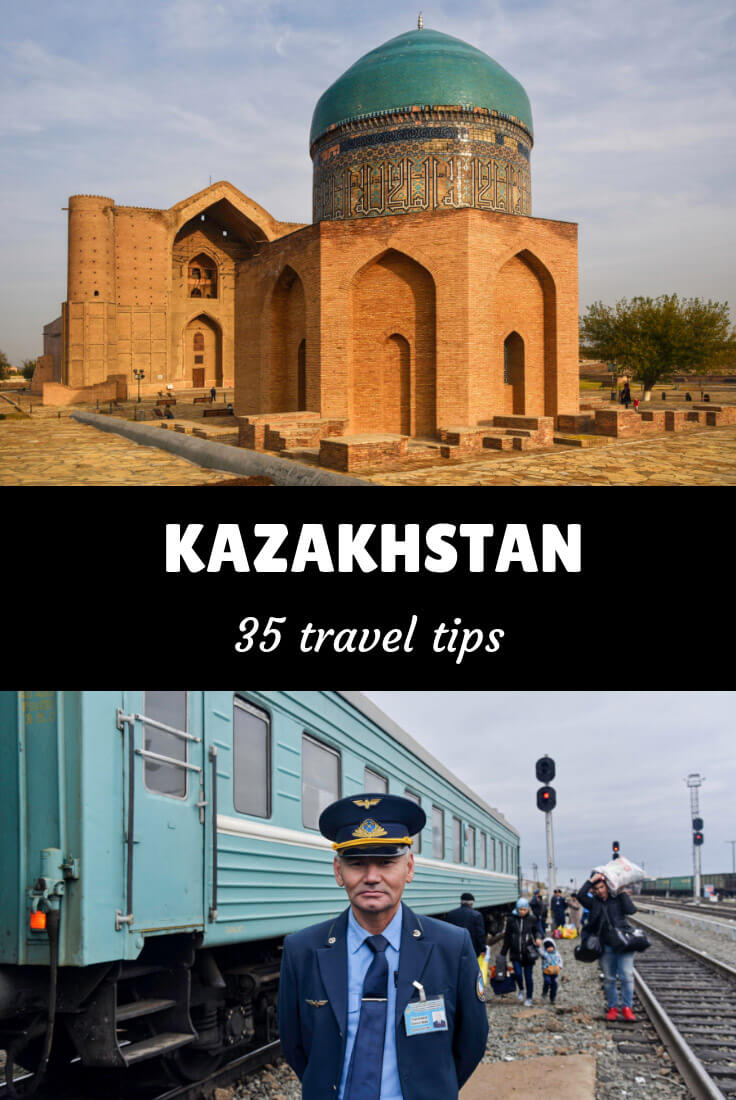
One reply on “35 Useful tips for traveling to Kazakhstan”
Hi. You did a great job writing those 35 tips based on your experience travelling to Kazakhstan. As a Kazakh woman who returned to the US and really misses the place she grew up in, may I ask you to update the information about: 1 – currency (it’s around 485 KZT) 2 – president 3 – prices in the 10th tip (I think it’s too cheap) 4 – yeah, most people are nominal muslims, but there are also many Christians (orthdox or protestants like me) 5 – food doesn’t suck. vodka is a cheap drink to drink. but we also have fancy bars with high quality cocktails, that won many competitions in Central Asia. Thanks!
Leave a Comment Cancel reply
Your email address will not be published. Required fields are marked *
Notify me when new comments are added.
Join our Expeditions
From Syria to Iraq in Pakistan, Against the Compass is finally running expeditions to the most epic and off-the-beaten-track countries.
We have scheduled expeditions for every month of the year.
Latest posts
- How to travel to Eritrea in 2024
- How to travel to Svalbard in 2024
- How to travel to Afghanistan during Taliban rule (2024)
- How to Travel to Libya in 2024
- Backpacking Venezuela Travel Guide (2024)
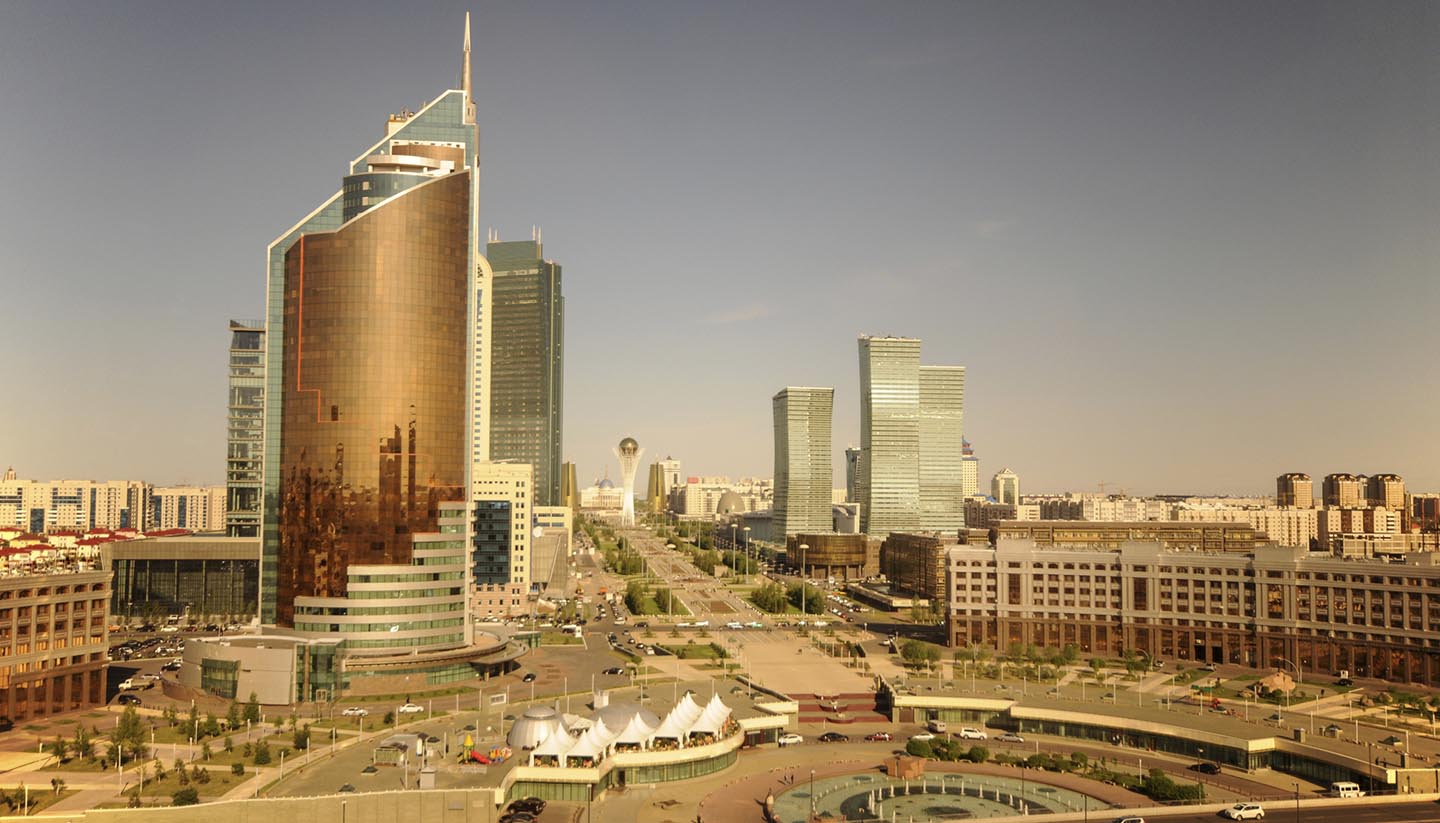
Introducing Kazakhstan
About kazakhstan.
- Images of Kazakhstan
- History, language & culture
- Weather & geography
- Doing business & staying in touch
Plan your trip
- Travel to Kazakhstan
- Where to stay
While you’re there
- Things to see & do
- Shopping & nightlife
- Food & drink
- Getting around
Before you go
- Passport & visa
- Public Holidays
- Money & duty free
Book your flights
- Almaty International Airport
Kazakhstan travel guide
Unexplored by many, Kazakhstan is a curious yet little-known land of vast plains, mountainous horizons and beautiful culture. Bordering Russia in Central Asia, it's truly massive in size – this is, after all, ranked as the world's ninth biggest country. It's also the most economically successful of those countries surrounding it, known fondly as the 'stans'. This is largely thanks to oil reserves, as well as other natural resources. The upshot? You can expect more modern, higher-quality hotels, restaurants and travel options compared to some of the country's poorer neighbours.
South Kazakhstan is a focus of Central Asian history, featuring many famous monuments. It is a scenically diverse region where the snow-capped peaks, lakes and glaciers of the Tian Shan range give way to steppe and desert. The desert is home to the Singing Barkhan - a sand dune 3.2km (2 miles) long, which, as it crumbles, produces a peculiar singing sound.
Almaty was until very recently the former capital of Kazakhstan and it enjoys a beautiful setting between mountains and plains. Still the country's biggest city, it is a hub of modern architecture, cool fountains, parks and spectacular mountain views. You can also expect irreverent nightspots, trendy cafes, and palatial malls there. The present capital of Nur-Sultan (Astana) is following in its predecessor's footsteps as a modern metropolis, with its space-age buildings clinging to the northern steppe.
The truth is, though, that travellers are more likely to be attracted to Kazakhstan's natural wonders. It's a beautiful country in its own haunting way, where intrepid travellers will enjoy hiking through the lofty mountains and down in the valleys of the Tian Shan. Its sparseness can seem mind-boggling, but you'll find plenty of wildlife if you look for it, especially in the lake-strewn steppe. It's also worth seeking out the underground mosques and villages that are scattered about the land. All in all, Kazakhstan is a special, unique country well worth discovering despite it being low on the radar of most tourists.
2,724,900 sq km (1,052,089 sq miles).
17,855,384 (UN estimate 2016).
6.7 per sq km.
President Kasymzhomart Tokayev since 2019.
Prime Minister Olzhas Bektenov since 2024.
Travel Advice
Before you travel.
No travel can be guaranteed safe. Read all the advice in this guide. You may also find it helpful to:
- see general advice for women travellers
- read our guide on disability and travel abroad
- see general advice for LGBT+ travellers
- read about safety for solo and independent travel
- see advice on volunteering and adventure travel abroad
Travel insurance
If you choose to travel, research your destinations and get appropriate travel insurance . Insurance should cover your itinerary, planned activities and expenses in an emergency.
About FCDO travel advice
The Foreign, Commonwealth & Development Office ( FCDO ) provides advice about risks of travel to help you make informed decisions. Find out more about FCDO travel advice .
Follow and contact FCDO travel on Twitter , Facebook and Instagram . You can also sign up to get email notifications when this advice is updated.
This information is for people travelling on a full ‘British citizen’ passport from the UK. It is based on the UK government’s understanding of Kazakhstan’s current rules for the most common types of travel.
The authorities in Kazakhstan set and enforce entry rules. If you’re not sure how these requirements apply to you, contact the Kazakh Embassy in the UK .
COVID-19 rules
There are no COVID-19 testing or vaccination requirements for travellers entering Kazakhstan.
Passport validity requirements
To enter Kazakhstan, your passport must be valid for at least 30 days from the date you arrive.
If you have a visa, your passport must have an ‘expiry date’ at least 3 months after your visa’s expiry date and at least one blank page
Check with your travel provider that your passport and other travel documents meet requirements. Renew your passport if you need to.
You will be denied entry if you do not have a valid travel document or try to use a passport that has been reported lost or stolen.
Kazakh-British dual nationality
Kazakhstan does not recognise dual nationality. If you are found to have a Kazakh passport and another passport, you will be fined and your Kazakh citizenship will be withdrawn.
Visa requirements
You can visit Kazakhstan without a visa for up to 30 days. You can make as many visa-free visits as you like, but you must not stay more than 90 days without a visa in any 180-day period.
To stay longer (to work or study, for business travel or for other reasons), you must meet the Kazakh Government’s entry requirements. Check which type of visa or work permit you need with the Kazakh Embassy in the UK . Also see visa information from Kazakhstan’s Ministry of Foreign Affairs .
Check the validity dates of your visa and any restrictions before you travel.
Applying for a visa
You can apply for a visa from the Kazakhstan government’s visa website .
From 1 January 2024, British nationals who apply for a visa or residency in Kazakhstan will be required to submit biometrics (fingerprints) as part of the application process.
Registering with the authorities
Your hotel or the person hosting you must register your arrival with the Kazakh authorities. They must do this within 3 working days of your arrival in Kazakhstan. They can register you online . The visa-migration portal has more details.
Travelling overland between Kazakhstan, Russia and Belarus
Kazakhstan, Russia and Belarus are in a single customs union. If you want to travel overland in your own vehicle between these countries, make sure your customs declaration and temporary import licence are valid for your whole stay in all 3 countries. You can extend the import licence for up to one year by contacting the customs authorities in any of the countries.
Vaccine requirements
To enter Kazakhstan, you must have a certificate to prove you’ve had a yellow fever vaccination if you’re coming from a country listed as a transmission risk .
For full details about medical entry requirements and recommended vaccinations, see TravelHealthPro’s Kazakhstan guide .
Customs rules
There are strict rules about goods you can take into or out of Kazakhstan . You must declare anything that may be prohibited or subject to tax or duty.
Taking money into Kazakhstan
There are limits on how much foreign currency you can bring to Kazakhstan or take with you when you leave. For further information visit the State Revenue Department if you have specific questions.
There is a high threat of terrorist attack globally affecting UK interests and British nationals, including from groups and individuals who view the UK and British nationals as targets. Stay aware of your surroundings at all times.
UK Counter Terrorism Policing has information and advice on staying safe abroad and what to do in the event of a terrorist attack. Find out how to reduce your risk from terrorism while abroad .
Terrorism in Kazakhstan
Terrorist attacks in Kazakhstan cannot be ruled out.
Attacks could be indiscriminate, including in places visited by foreign nationals. Be alert for any security related announcements by the Kazakh authorities.
Political situation
Public demonstrations are only permitted when authorised by the Kazakh authorities in advance. Occasional unauthorised small-scale public protests take place. This may put participants at risk of arrest. Avoid any demonstrations or political gatherings. If you become aware of any nearby violence or disturbance, leave the area immediately.
Robbery and violent crime
There have been violent thefts in expatriate communities in Atyrau and Aktau in western Kazakhstan and in Astana and Almaty. This happens mainly at night in and around local nightclubs and bars or when arriving home late at night. Robberies are uncommon in cities and rural areas but do happen.
Avoid walking alone and pre-arrange your transport. Do not use unofficial taxis or a taxi already occupied by a passenger. You should agree the price of your journey, or book the taxi via an app where you can see the price.
Protecting your belongings
Pickpocketing is very common in crowded places such as markets and on public transport. Criminals may target foreigners as they are assumed to be carrying valuable items. Keep valuables in a safe place and out of public view.
Thieves may target luggage on trains. Always lock your railway compartment on an overnight train.
Beware of internet scams. Scammers may target you on dating apps or on visa-related websites.
Make sure you know the arrangements for you being met at the airport, and make sure the person is who they say they are.
Drink and food spiking and sexual assault
Drink spiking can happen in nightclubs and bars. Alcohol and drugs can reduce your vigilance, making you less in control.
Attacks, including sexual assaults, do occur. Avoid splitting up from your friends, do not leave drinks unattended and do not go off with people you do not know. Save the location of your accommodation on your maps app, so it’s easy to find. See TravelAware ‘Stick with your mates’ for tips and advice.
Laws and cultural differences
Kazakhstan has a secular constitution, but you should respect local traditions, customs, laws and religions at all times.
Be careful how you use social media. Take care of the context in which you use images so that they do not offend. Take particular care with any images that show the Kazakh flag.
Personal ID
Carry original ID such as your driving licence or passport at all times. Police patrolling the streets may ask for your ID, and copies are not acceptable. You will be need to show your original ID to enter state buildings.
Ramadan
Ramadan is a holy month for Muslims. The dates vary by year and country. Cafés and restaurants may amend their menus, and be busy around fast-breaking (‘Iftar’). Areas around mosques are also likely to be busy around prayer times. Take particular care not to offend religious sensitivities at this time.
Alcohol laws and bans
Shops are not allowed to sell alcohol between 11pm and 8am. Alcoholic drinks which have an alcohol content level of more than 30% cannot be sold between 9pm and 12 noon. Bars, restaurants and cafés are not affected by this.
If you are found drunk on the street by the police, they can take you to the police station, check your ID, issue you with a fine or detain you in a police cell overnight.
Smoking and e-cigarette bans
Smoking including e-cigarettes is illegal in and near to:
- schools and playgrounds
- healthcare facilities
- public places - museums, libraries, cinemas, sport centres, public transport, nightclubs, airports, rail stations, underpasses
- cars with children travelling
The fine for smoking in an unauthorised place is around £90, and can be more if it’s a repeat offence.
Illegal drugs and prison sentences
The police conduct regular drug raids in bars and night clubs. Stay calm and follow instructions. If you do not possess and have not used illegal drugs you will likely be asked for identification and then allowed to leave.
If you possess or use illegal drugs, you could face a lengthy prison sentence, including:
- possession, manufacturing of drugs with distribution purposes – 5 to 10 years
- possession, manufacturing of drug with distribution purposes in large amounts – 6 to 12 years
- advertising drugs – fine or up to 3 years imprisonment
Prison conditions are basic.
Using cameras and sharing images
It is illegal to take photographs of or near military sites, border areas, airports and some official buildings. There may not be any signs warning about these restrictions. Some large shops and supermarkets do not allow photography.
Do not share or publish images that could be disrespectful to religion or culture, or national symbols. If you share or publish such images, you could get a fine or short detention depending on the situation.
LGBT+ travellers
Although same-sex relationships are not illegal, they are often not tolerated, especially outside of the major cities across the country.
Read more advice for LGBT+ travellers .
Wildlife, animal products and souvenirs
You are not allowed to export:
- art or antiques that have historical, cultural or scientific value
- gold, precious stones, rare minerals
- rare specimens of flora or animals
Take local expert advice.
Bringing drones into Kazakhstan
You can bring a drone to Kazakhstan without a licence. However, you must have a licence to use one. You risk a fine, detention and the confiscation of your drone if you do not have a licence. Apply for a drone licence from the Civil Aviation Committee. You should include technical characteristics of the drone and details of planned use (when, where and how long). See local regulations on drone licensing requirements (in Russian).
Transport risks
Road travel.
If you are planning to drive in Kazakhstan, see information on driving abroad and Kazakhstan’s rules of the road (in Russian).
You need a 1968 international driving permit ( IDP ) to drive in Kazakhstan. You cannot buy an IDP outside the UK, so get one before you travel.
The minimum legal age for driving is 16 for motorbikes and 18 for cars.
Hire car companies often have stricter requirements for their customers, such as a year of driving experience, a higher minimum age and holding an IDP .
Driving standards
Driving standards can be erratic. Many cars are not safely maintained and do not have rear seatbelts.
Many roads are poorly maintained. Roadworks and damaged roads are often not signposted. In remote rural areas, there are often stray animals on the roads. In winter, roads can be hazardous due to snow or ice.
Service stations are limited outside the main cities. Take all that you need for your journey, including water. Make sure your vehicle is properly maintained and in a good condition for long journeys.
Traffic police officers should provide you with official papers related to any alleged offence.
Closed areas
The following areas are closed to visitors unless you have received prior permission from the Foreign Ministry, the Interior Ministry and the Kazakh National Security Committee:
- Gvardeyskiy village in the Almaty region of south eastern Kazakhstan
- the town of Baikonur
- the districts of Karmakchi and Kazalinsk in the southern Kyzylorda region
Border crossings
Officials may close the border crossing points at short notice.
Extreme weather and natural disasters
Find out what you can do to prepare for and respond to extreme weather and natural hazards .
Since early April, severe flooding has affected Western and Northern Kazakhstan. A State of Emergency has been declared in Atyrau region. Infrastructure has been damaged and transport links within the region disrupted. Check with the local authorities if planning to travel within or to these regions and follow their advice.
Mudslides and landslides can occur in the mountain areas of south-east Kazakhstan.
Forest fires
Forest fires affected east Kazakhstan in 2023. Regions in the Kazakh steppe can also be affected by grass fires. Take local advice.
Earthquakes
Kazakhstan has several areas which are at high risk of earthquakes. Almaty is in an active seismic zone. The last major earthquake involving loss of life was in 1927. The US Federal Emergency Management Agency has advice about what to do before, during and after an earthquake .
Before you travel check that:
- your destination can provide the healthcare you may need
- you have appropriate travel insurance for local treatment or unexpected medical evacuation
This is particularly important if you have a health condition or are pregnant.
Emergency medical number
Dial 103 and ask for an ambulance. The operator answering may not speak English.
Contact your insurance company quickly if you’re referred to a medical facility for treatment.
Vaccine recommendations and health risks
At least 8 weeks before your trip:
- check the latest vaccine recommendations for Kazakhstan
- see where to get vaccines and whether you have to pay on the NHS travel vaccinations page
See what health risks you’ll face in Kazakhstan .
Altitude sickness is a risk in parts of Kazakhstan. Read more about altitude sickness on TravelHealthPro .
The legal status and regulation of some medicines prescribed or bought in the UK can be different in other countries.
Read best practice when travelling with medicines on TravelHealthPro .
Make sure you have enough medication to cover your trip.
Basic medications such as aspirin are available without a prescription. For prescription medication you will need a valid prescription either from a local doctor or your UK prescription translated into Kazakh or Russian. Medications often come under different brand names, so ask for the drug’s generic name. If they are not available locally, it may be possible to get drugs to be couriered through a private clinic, for example, International SOS clinic.
Healthcare in Kazakhstan
The medical facilities in Kazakhstan are not as advanced as in the UK. Make sure you have adequate travel health insurance and accessible funds to cover the cost of medical treatment or evacuation by air ambulance and repatriation. Medical personnel do not typically speak English.
FCDO has a list of medical providers in Kazakhstan where some staff will speak English.
There is also guidance on healthcare if you’re living in Kazakhstan .
Travel and mental health
Read FCDO guidance on travel and mental health . There is also mental health guidance on TravelHealthPro .
The Foreign, Commonwealth & Development Office ( FCDO ) cannot provide tailored advice for individual trips. Read this travel advice and carry out your own research before deciding whether to travel.
Emergency services in Kazakhstan
Ambulance: 103
Emergency and rescue service: 112
Contact your travel provider and insurer
Contact your travel provider and your insurer if you are involved in a serious incident or emergency abroad. They will tell you if they can help and what you need to do.
Refunds and changes to travel
For refunds or changes to travel, contact your travel provider. You may also be able to make a claim through insurance. However, insurers usually require you to talk to your travel provider first.
Find out more about changing or cancelling travel plans , including:
- where to get advice if you are in a dispute with a provider
- how to access previous versions of travel advice to support a claim
Support from FCDO
FCDO has guidance on staying safe and what to do if you need help or support abroad, including:
- finding English-speaking lawyers , funeral directors and translators and interpreters in Kazakhstan
- dealing with a death in Kazakhstan
- being arrested or imprisoned in Kazakhstan
- getting help if you’re a victim of crime
- what to do if you’re in hospital
- if you’re affected by a crisis , such as a terrorist attack
Contacting FCDO
Follow and contact FCDO travel on Twitter , Facebook and Instagram . You can also sign up to get email notifications when this travel advice is updated.
You can also contact FCDO online .
Help abroad in an emergency
If you’re in Kazakhstan and you need emergency help from the UK government, contact the British Embassy in Astana .
FCDO in London
You can call FCDO in London if you need urgent help because something has happened to a friend or relative abroad.
Telephone: 020 7008 5000 (24 hours)
Find out about call charges
Risk information for British companies
The Overseas Business Risk service offers information and advice for British companies operating in Kazakhstan on how to manage political, economic, and business security-related risks.

Book a Hotel
© Columbus Travel Media Ltd. All rights reserved 2024

Kazakhstan Vacations
A year-round vacation destination.

Handcrafted Journeys to our Most Popular Places in Kazakhstan.

A Tapestry of Culture and Nature
From natural beauty and modern marvels to UNESCO World Heritage Sites like Khoja Ahmed Yasawi , Kazakhstan beautifully blends tradition and nature with modernity. A vacation to Kazakhstan promises adventure, diversity, warmth, and unforgettable experiences.

The Culture
Kazakhstan embraces Nomadic traditions. Though modern influences have penetrated, still today elements of Nomadic traditions are visible. Even today, many locals live in Yurt, which is a Nomadic way of living. A yurt is a portable dwelling primarily used by locals in rural areas. Besides this, Nomadic hospitality is ingrained in their culture. When you enter the house of a Nomadic person, the person will treat you with great respect and generosity.
A trip to Kazakhstan is incomplete without trying the local traditional dresses. The men wear chapans, which is a gown with a belt. Along with this, they cover their heads with skullcaps. On the other hand, the women wear a white cotton or coloured silk dress with a velvet waistcoat and a skullcap. Try their traditional dresses and experience their culture firsthand.
Music is ingrained in Kazakhstan's culture. Kazakhs love the art of wordplay. In competitions, the poet improvises poetry accompanied by stringed musical instruments. When you are in Kazakhstan, make sure to pay a visit to these competitions to experience a unique side of their culture.
Along with Nomadic traditions, Kazakhs also embrace Soviet culture. Since it was part of the Soviet Union , Soviet influence is still prevalent in Kazakhstan's culture. Cities like Astana blend both modern and Soviet influences. To get a first-hand experience of Soviet architecture, visit Astana.
The Best Time to Visit
If you are interested in outdoor activities and being amidst nature, Spring (April to June) is the best time to visit Kazakhstan. The weather is mild, and the skies are clear, perfect for sightseeing. Plus, the landscapes and flowers come to life, making Spring the ideal time to enjoy nature and sightseeing.
For travellers who want to explore the mountainous region, summer (June to August) is the best time to visit Kazakhstan. During the summer, the cities experience hot and humid conditions. To escape the heat, travellers go to the mountainous region, which is pleasant all year round. That's not all. The steppes and mountain meadows come to life during this period, giving travellers a picturesque view of the landscapes.
If you enjoy winter sports, winter (November to March) is the time to visit ski resorts and experience a variety of adventure sports. Apart from this, cities like Astana hold festivals and events showcasing their culture and traditions.
In short, Kazakhstan is a year-round vacation destination.
Things to Know
When visiting any country, it's helpful to know certain aspects of that country's customs and practices. Here are a few things you should keep in mind when taking a Kazakhstan vacation :
Know the local language. It is important to learn a few basic words and phrases of the Khazak language. Knowing a bit of the language will help you get assistance from the locals. Other than the Khazak language, locals also speak Arabic, English, and Uzbek.
Check your visa requirements. Some nationalities may be required to obtain a visa in advance, while others are eligible for free visa entry.
Respect local customs. Khazaks expect travellers to respect their traditions and customs. When you visit a local home, make sure to carry a gift with you, which is a local tradition.
Be prepared to experience Nomadic hospitality. Nomadic people treat guests as gods. When you visit a local home, they will treat you to delicious local food. One thing you must remember is to remove your shoes when you enter a local's house.
Carry cash. Though credit cards are widely used in urban areas, it is advised to carry cash in rural areas.
Food & Drink
Food found in Kazakhstan is heavily influenced by its Nomadic culture and even by Russia, Turkey , and the Middle East . The single most popular dish in Kazakhstan is Beshbarmak. The name Beshbarmak means five fingers. It is made from layers of pasta, horse meat, onions, and broth. At a restaurant, if the server serves you with the best cuts, it means you are a very important person. So, watch out for that.
Another popular dish to have is Lagman, which is originally from the Xinjiang region. The dish consists of thick noodles spiced with pepper along with onions and tomatoes. Additionally, a spicy vinegar-based sauce is added. In short, the dish satisfies your hunger.
When it comes to drinks, Kazakhstan offers a variety of drinks. Shubat is a traditional drink made from fermented camel's milk. It is considered a refreshing drink in summer. If you want to end your meals with a drink that helps with digestion, try Ayran. The drink is a blend of yogurt with water and salt.
Explore the local cuisine and immerse yourself in the country's rich culinary traditions.
Get Inspired About Kazakhstan
The experts in tailor-made travel.
When working with Goway, you dream it, we plan it. Rely on the passion and expertise of our Destination Specialists to craft the trip that’s right for you.

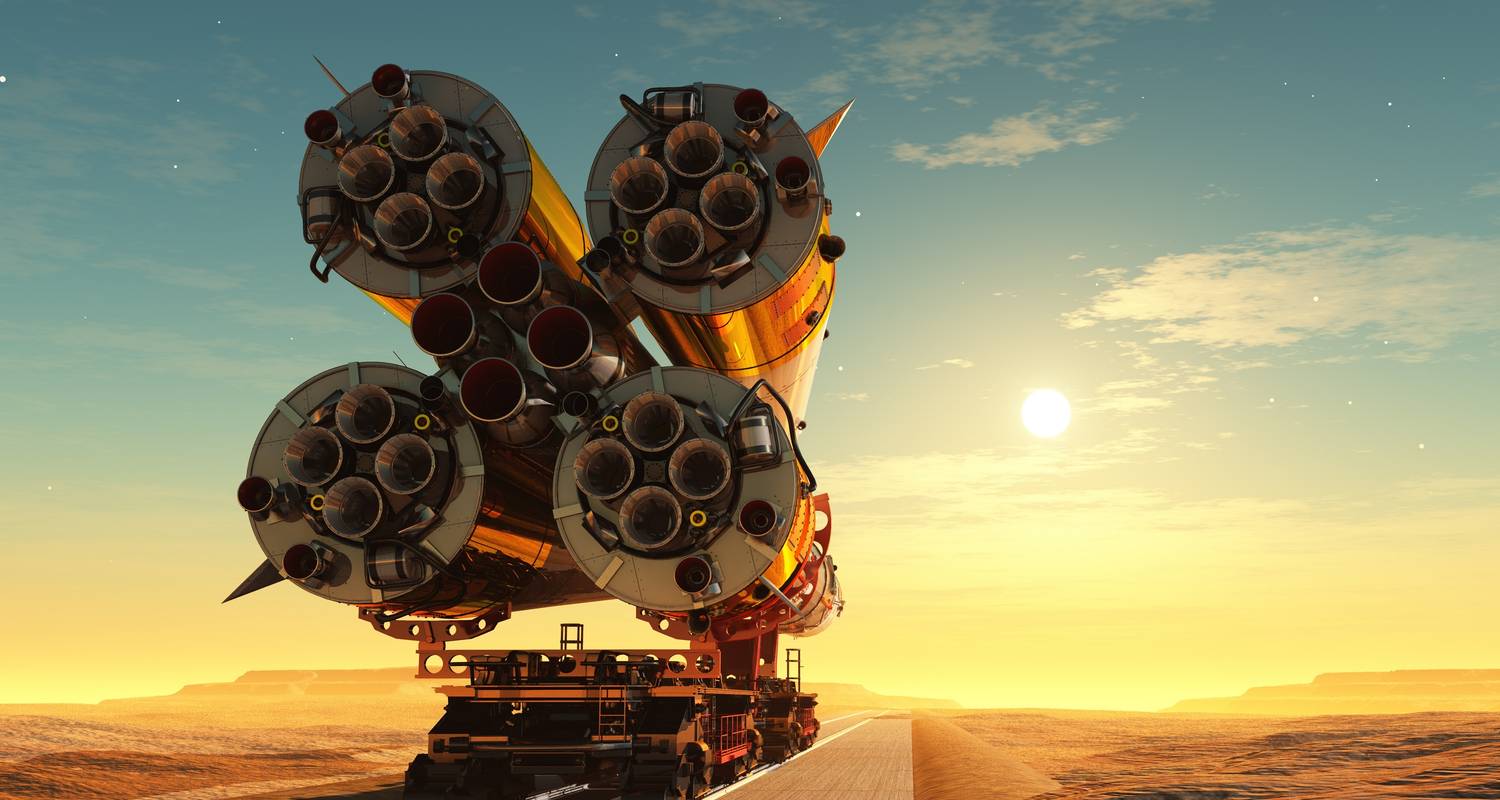
Kazakhstan Guided Tours & Trips
- Choose from 17 Kazakhstan tours
- 6 verified reviews from TourRadar travelers
- 24/7 customer support
10 best fully guided Kazakhstan tour packages
Compiled by

Melissa Kazakhstan travel expert at TourRadar
Kazakhstan Travel

Kazakhstan Travel brings you to the heart of Eurasia, a clash of time and cultures at the confluence of nomadic, Soviet and 21st-century history. Stand on the brink of the world’s largest steppe, an endless ocean of pasturelands marked by ripples of mountains, wildflowers and sleepy towns. Travel cross-country on the modern-day Orient Express, passing the fields where freedom-loving tribes once tamed the wild horse.
Straddling this vast expanse, stretching from the Caspian Sea to China, are cities layered with remnants of the past and bold displays of innovative architecture, while national parks the size of countries are cloaked in a myriad of natural colors which mirror each season.
Kazakhstan’s tenacious people, eager that their country and national values be known by the world, welcome visitors with open arms and traditional hospitality. This is a journey well worth taking!
Your Guide to Kazakhstan by a Local Travel Expert
- 1. Is Kazakhstan Worth Visiting?
- 2. Your Dream Vacation
- 3. Kazakhstan Visa Matters
- 4. Is Kazakhstan Safe for Travel?
- 5. Choose Your Transport
- 6. Kazakhstan Travel Seasons
- 7. Kazakhstan Travel Map
- 8. How Many Days Do You Need in Kazakhstan?
- 9. At Your Service
- 10. Holidays and Festivals
- 11. Curious about Kazakh Cuisine?
- 12. Dos and Don’ts in Kazakhstan
- 13. Speak the Language
- 14. Kazakhstan Gifts: Souvenirs From Your Journey
- 15. Virtual Kazakhstan Travel Guide: Further Reading
- 16. Did You Know That…
Is Kazakhstan Worth Visiting?
Central Asia’s largest and most influential nation has garnered worldwide recognition for its oil industry and progressive aspirations, and its tourist attractions deserve equal recognition. Just a few reasons to consider Kazakhstan for your next vacation:
- Almaty Region alone provides so much cultural and natural entertainment that many visitors never make it past this point. Former capital Almaty is filled with fun parks, bazaars, malls and museums, while surrounding mountains offer seasonal sports, cable car rides and endless hiking opportunities.
- Current capital Astana defies stereotypes right and left. Tour Hazrat Sultan, the largest mosque in Central Asia, before wiling away the time in Khan-Shatyr, the world’s most stylish tent. Take a boat tour and a national cooking class before heading out to popular nature reserves.
- Southern Kazakhstan is the destination of choice for history lovers. Ancient Turkestan, Otrar, Sayram and Arslanbob are replete with traces of Silk Road mystery , while local hub Shymkent impressively fuses traditional Central Asian culture with modernity.
Your Dream Vacation
Kazakhstan is brimming with both traditional and out-of-the-ordinary travel experiences. Wander the remains of Tamerlane-era towns, view cosmopolitan cities from the vantage of a cable car or leave your troubles behind amid the finely crafted peaks and canyons that dot the wild landscape.
Float down a river through the gleaming capital city or learn the local art of falcon hunting. Stand at one of the lowest points on the planet in an arid depression or do figure 8s on the highest ice rink in the world. Taste Kazakh, Russian, Uzbek and Uyghur cuisine as you bargain for authentic souvenirs and enjoy endless photo ops along the way.
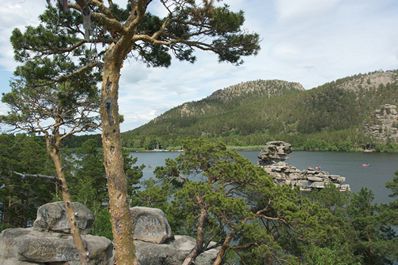
Visa Matters
Kazakhstan’s 30-day, visa-free entry policy extends to multiple nations, including Canada, the US and many Asian, European and CIS countries. If you don’t qualify for the visa-free option, there’s a good chance that you’re eligible for a simple e-visa , while anyone in need of a formal invitation can receive one through a number of agencies, including Advantour .
Is Kazakhstan Safe for Travel?
Kazakhstan remains a safe destination for visitors, and as of mid-2020, it maintained its Level 1 Category in the US Department of State’s travel advisory system, i.e. among the safer nations in the world to visit. Tourists from a variety of countries, including solo and female travelers, have reported a positive reception and an overall feeling of safety while in country. Additionally, tourism bureaus have opened in the larger cities and an increasing number of locals are able to communicate in English.
Choose Your Transport
Kazakhstan’s traditionally nomadic population has retained its love for mobility, and the country remains the most accessible destination in Central Asia today. Regular flights connect capital city Astana and Almaty, Kazakhstan’s largest city, with Istanbul, Frankfurt, London, Seoul, Dubai, Bangkok and other major hubs. Horses have been replaced by the capable Air Astana, which also provides onward connections to other Central Asian capitals.
Given its size, travel within Kazakhstan requires some time, yet by and large is reliable, comfortable and even fun. Options include in-country flights, overnight trains, private vehicles, shared taxis or, if you’re patient and really on a budget, the bus.
Kazakhstan Travel Seasons
Kazakhstan is at its most temperate in spring and autumn, yet thanks to its massive size, some corner of the country can be enjoyed year-round. Know what to expect in each of its distinct seasons:
Winter: The perfect time to go skiing, snowboarding and ice skating at Almaty’s Medeu and Shymbulak Ski Resort or to enjoy the museums, steamy bath houses and holiday decorations in Kazakhstan’s larger cities.
Autumn: There are ample things to do in Kazakhstan in autumn, as much of the country is cloaked in autumnal beauty and weather conditions are well-suited for hiking and city tours.
Spring: The season for canyon hikes, petroglyph discoveries, tours to southern Turkestan and Shymkent and cross-country train travel, where you’ll enjoy landscapes of snow-capped mountains and flowering meadows.
Summer: Hot in the south and moderate in the north, summer is the ideal season to visit the capital and Burabai National Park or head west to see Baikonur and the Caspian Sea near Aktau.
- Kazakhstan Climate and Weather
- When is the best time to visit Kazakhstan?
Kazakhstan Travel Map
Use the Kazakhstan map to locate the country’s major destinations and find out what each one has to offer:
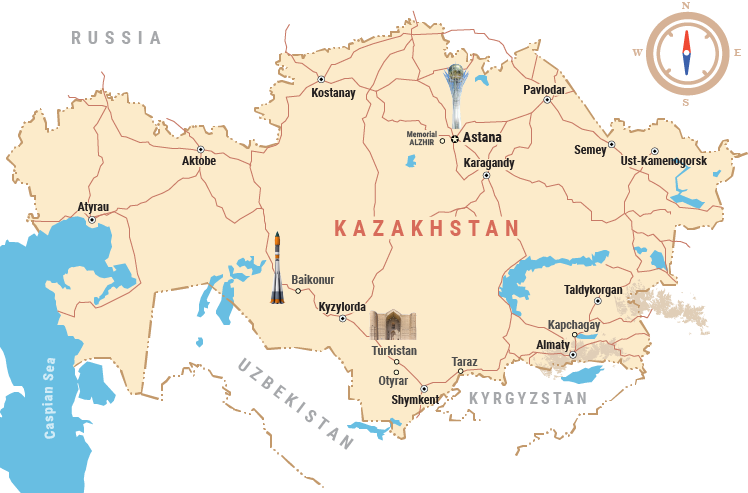
How Many Days Do You Need in Kazakhstan?
Major city hubs Almaty and Astana receive the bulk of Kazakhstan’s tourists, and while each provides plenty of worthy attractions, it’s a shame that the many national parks and historical outposts are all too easily bypassed by hurried travelers. If you’re looking to break the mold and step beyond city limits, use this guide to help you plan a more detailed travel route:
- Astana – Kazakhstan’s trendy and windy capital city defined by futuristic architecture. How long should I stay? 1-2 days Major Sites: Bayterek Tower, Khan-Shatyr Shopping Mall, Palace of Peace and Reconciliation How to get off the beaten path: Take a day trip to Burabai National Park or Korgalzhyn Nature Reserve.
- Almaty – Former capital and largest city by far, likeable Almaty impressively blends Soviet and modern styles. How long should I stay? 1-2 days Major Sites: Panfilov Park, Green Bazaar, Almaty Cable Car ride to Kok-Tobe How to get off the beaten path: Step back in time at Huns Ethno Village or enjoy the views at Medeo.
- Almaty Region – So many day trip destinations are within reach of Almaty that they deserve special attention. How long should I stay? 2 days (camping out along the way or taking day trips from Almaty) Major Sites: Charyn Canyon, Big Almaty Lake, Turgen Gorge and Waterfall How to get off the beaten path: Marvel at the Tamgaly Petroglyphs or camp out in Altyn-Emel Nature Reserve.
- Shymkent – Large southern city which has managed to retain a distinctly Central Asian atmosphere. How long should I stay? 1-2 days Major Sites: Kyluet Ethnography Museum, Memory Alley in Abay Park, Arbat Street How to get off the beaten path: Explore mausoleums and the produce bazaar in Sayram Village or go horseback riding in Aksu-Zhabagly Nature Reserve.
- Turkestan – Capital of South Kazakhstan, a small but ancient city and holy pilgrimage site. How long should I stay? 1 day Major Sites: Khoja Ahmed Yasawi Complex, with an underground mosque, museum, mausoleums and city wall How to get off the beaten path: Join religious pilgrims at Arystan Bab Mausoleum or wander the ruins of Otrar.
- Aktau – Far western town known for its oil, Caspian Sea coastline and proximity to the Caucasus. How long should I stay? 1 day Major Sites: Republic Square, Aktau City Quay and Seaport, Kashagan Kurzhimanuly Monument How to get off the beaten path: Descend to Karagiye Depression or stand in awe of Mount Sherkala in Mangyshlak.
- Baikonur – Inconspicuous town dwarfed by nearby Baikonur Cosmodrome, site of the Soviet space program. How long should I stay? 1-2 days Major Sites: Soyuz Rocket Model, Cosmodrome History Museum, Yuri Gagarin Statue How to get off the beaten path: Spend the day at Baikonur Cosmodrome (advance permission needed) or take a weekend trip to the Aral Sea’s Kokaral Dam and Karateren village.
At Your Service
Advantour has extensive experience with arranging tours, transportation, bookings and Invitation Letters (LOIs) as we remain up-to-date on Kazakhstan news. Check out our available services and let us know how we can best help you to plan your upcoming trip.
Kazakhstan Holidays and Festivals
Kazakhs enjoy a good celebration, as evidenced by the fact that they have a dozen public holidays and counting, several of which span multiple days. Celebrations range from the religious Orthodox New Year and Islamic Feast of Sacrifice to the political Capital Day and First President’s Day, from the internationally recognized Women’s Day and New Year to the Soviet Friendship and Victory Days.
If you’d like to join the party, we suggest planning your trip around one of these major holidays:
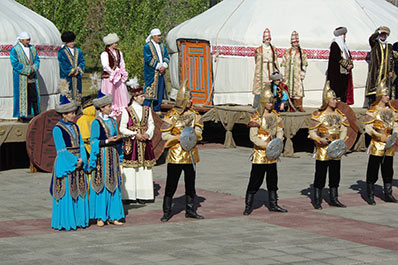
New Year Season (mid-December to early January) – New Year itself is greeted with a grand fireworks show, yet the weeks leading up to it are equally fun, with city streets elaborately decorated and holiday markets filled with New Year trees, souvenirs, tasty foods and appearances by Santa Claus and his sidekick Snow Girl. Best place to celebrate: Almaty
International Women’s Day (March 8) – Arguably this holiday may be more interesting for one gender than the other, yet it is a great day to experience the decorations, exhibitions, special concerts and gatherings of friends and families in local parks and cafes. Best place to celebrate: Astana or Almaty
Nauryz (March 21-22) – Nowhere is traditional Kazakh culture more beautifully celebrated than at Navruz festivals, where horse races, national song and dance, festive costumes, seasonal foods and yurt displays will transport you to another world. Best place to celebrate: Shymkent
Capital City Day (July 6) – Kazakhstan’s capital city is showcased through diverse concerts, art exhibitions, circuses, festivals with activities geared for all ages and a spectacular fireworks show. Best place to celebrate: capital city Astana, of course!
Independence Day (December 16) – Kazakhstan first experienced national sovereignty after gaining independence from the USSR, an event commemorated with parades, speeches, concerts and fireworks. Best place to celebrate: Astana
Curious about Kazakh Cuisine?
It’s said that only the wolves eat more meat than the Kazakhs, so their savory, meat-heavy cuisine should come as no surprise. That being said, vegetarians can still find some tasty options. Our pick of top local tastes:

Classic nomadic dish of homemade noodles, potatoes, and beef or horse meat.

A one-plate wonder of meat, potatoes, onions and spices.

Dungan cold soup packed with noodles, meat and veggies.

Puffy fried dough balls sure to test your willpower.

Salted and delivered from the waters of Issyk-Kul to a roadside stand near you.

Swirls of delicate, homemade noodles stuffed with meat or potatoes.

A mouth-watering combo of steamed beef and fresh vegetables.

Sour, salty milk balls offered in flavors ranging from basil to hot pepper.

Grain-based sour drinks unique to Kazakhstan, a must-try cultural experience.
- Beshparmak – National dish of meat and thinly-rolled noodles, flavored with broth and eaten by hand
- Shashlyk – Melt-in-your-mouth kebabs of beef chunks, ground beef, lamb, chicken and even liver
- Laghman – Fresh noodles, meat and vegetables are fried, boiled or served in a soup in this Uyghur classic
- Baursak – Homemade balls of dough, fried and often paired with jam, are a true treat
- Shelpek – Delicious tortilla-like fried patties, they may be eaten as is or stuffed with meat and onions
- Kazi – Slices of horsemeat sausage are a true taste of Kazakhstan
- Koje – Special dish for the Navruz holiday, it consists of seven ingredients including sour milk, cereals, horsemeat and salt
- Kumys – A cold bowl of fermented mare’s milk in summer is just the way to cool off Kazakh-style
- Shek-Shek (Chak-Chak) – Sweet and sticky Tatar dessert of fried dough balls flavored with honey, raisins or nuts
Read on for a more in-depth look into Kazakhstan cuisine.
- Kazakhstan’s National Dishes
Dos and Don’ts in Kazakhstan
Kazakhstan’s Almaty and Astana, heavily influenced by Russia and the West, can leave you second-guessing if you really are in Central Asia. Smaller towns and villages, meanwhile, have retained a more traditional take on life. Our personal Kazakhstan travel advice:
- Be cautious of open ditches, loose tiles and erratic drivers when walking or crossing the streets.
- Travel beyond Almaty and Astana if you want to get a true feel for the country.
- Barter when shopping at the bazaars, as given prices will often be inflated, especially for foreigners.
- Be prepared for a cash-only system outside of Western shops and restaurants in Almaty and Astana.
- Ask for people’s input and stories along the way, which can give you valuable insights into the culture.
- Underestimate the country’s size and the sheer distances between many cities and sites.
- Forget to check that you receive two stamps in your passport upon arrival; if you have only one, you will need to register with the local Immigration Office (OVIR).
- Read strangers’ stares or failure to smile back at you as a sign of hostility, as these are cultural norms. Most people are friendly and helpful once you approach them.
- Snack in front of others without offering a bite to those around you.
- Be surprised if people stop you to practice their English or ask your impressions of their country. It’s a great chance to make friends along the way!
Speak the Language
Kazakh and Russian are both widely spoken, with Russian dominating in the cities, northern regions and academic realms and Kazakh more prevalent in the villages and in western Kazakhstan. Almaty and Astana are populated with many younger people who speak English, yet these phrases may come in handy as you travel:
Virtual Travel Guide to Kazakhstan: Further Reading
- Kazakhstan Travel Advice
- Kazakhstan Tours Pages
Did You Know That...
- Kazakhstan is the ninth largest nation in the world, the largest in Central Asia and the largest landlocked nation on earth.
- The first man in space, Yuri Gagarin, was launched from Baikonur in Kazakhstan.
- It is believed that both apples and tulips originated in Kazakhstan.
- Kazakhstan has the world’s highest ice skating rink, located at Medeu Sports Complex near Almaty.
- Kazakhstan and Russia share the longest continual land border in the world.
Kazakhstan GUIDE
- Attractions
- Kazakh People
- UNESCO World Heritage Sites
- Exhibitions & Events
Kazakhstan TRAVEL
- Travel Restrictions - Covid-19
- Kazakhstan Tourism
- Kazakhstan Trip Planner
- Best Time to Visit
- Things to Do in Kazakhstan
- Solo Traveler Guide
- Kazakhstan Embassies
- Embassies in Kazakhstan
- Crossing Borders
Kazakhstan SERVICES
- Group Tours
- Private Tours
- Travel Agency
Premium Kazakhstan and Kyrgyzstan
9 days | travel off the beaten path and onto the old silk route for the spectacular landscapes of central asia.

Explore the old Silk Route in Kazakhstan and Kyrgyzstan with this eight-day adventure full of stunning natural landscapes, chances to connect to local people and traditional cuisine. With a knowledgeable local leader by your side, you’ll visit Sharyn Canyon, Skazka Canyon and Jety Oguz Valley and go on hikes to soak up the scenery. Spend a night in a traditional yurt camp, after learning about how these are still manufactured without electric tools, alongside the massive alpine lake of Issky-Kul. See the monuments, learn the histories and dive into the local cultures of main cities like Bishkek and Almaty. Visit a family-owned winery for a tasting, head to a small local village for a traditional lunch and enjoy a masterclass of local cuisine from a Dungan family. With all this and more, what’s holding you back from your next adventure?
Trip overview
Our best 4-star accommodation and the highest level of service
All must-see locations plus authentic experiences exclusive to Premium
Trips led by our most experienced and highest-rated local leaders
- Head off the tourist track and see some incredible natural landscapes – on this trip, you’ll visit Sharyn Canyon (nicknamed the little brother of the Grand Canyon), Jety Oguz, Skazka Canyon and Lake Isky-Kul.
- Soak up some of the layered history and diverse architecture of two former Silk Route cities – Almaty in Kazakhstan and Bishkek in Kyrgyzstan.
- Spend a memorable night in a comfortable yurt camp for an authentic local experience. You’ll have dinner around the campfire with the locals and wake up in the morning beside Lake Issyk-Kul – the second largest alpine lake in the world!
- Meet local artisans keeping traditional craftsmanship alive – meet with a local yurt maker and learn how they make these tents without electric tools, see how felt rugs are made and visit a leather workshop.
- Feast on delicious local cuisine with visits to a family-owned winery in Almaty, a family home of local Dungan people for dinner and a traditional lunch in a remote Kyzyl Tuu Village.
- This trip involves some long journeys by road, but you will stop at many interesting places along the way to stretch your legs.
- Accommodation may not always live up to western expectations and may lack some amenities you would expect from other Premium accommodation. The accommodation chosen will be among the best available, it will be well-located and comfortable.
- Your yurt accommodation is comfortable, but relatively basic. We think this is an essential part of visiting the region, and worth sacrificing some amenities for a memorable night in a spectacular place. Because these are sacred dwellings, there are no bathrooms within the yurt. Shared facilities will be available.
- A single supplement is not available on Day 5 at the yurt camp.
Salemetsiz be! Welcome to Kzazkhstan. Your adventure begins in Almaty – this former capital features wide, tree-lined streets, numerous parks and views of snow-capped mountains. You’ll have a welcome meeting at 6 pm tonight to meet your local leader and fellow travellers. If you arrive early, you may want to visit the State Museum of Arts, the State History Museum or the Kasteev House Museum – the most famous Kazakh artist from Soviet times. After your meeting, you’ll have dinner with your group at a traditional Kazakh restaurant.
- Renion Park Hotel or similar (1 night)
- Almaty - Welcome Dinner
It’s very important that you attend the welcome meeting as we will be collecting insurance and emergency contact details at this time. If you are going to be late, please let your travel agent or hotel reception know. Ask reception or look for a note in the lobby for more information on where the meeting will take place.
Today, you’ll head out with a local guide for a city tour of downtown Almaty. Visit Central Square and the colourful Zenkoff Cathedral (also the second tallest wooden building in the world) in historic Panfilov Park, dedicated to the 28 guardsmen who died defending Moscow against German tanks in WWII. Check out the fascinating Museum of Kazakh Musical Instruments, which features a great collection of ancient relics. This afternoon, head to a local, family-owned and ran winery just outside the city for a delicious lunch and wine tasting. Meet the owners and learn more about wine production in Kazakhstan. Return to Almaty in the late afternoon, where your evening is free to explore at your own pace.
- Almaty - City tour with local guide
- Almaty - Winery Visit, Tasting and dinner
After breakfast this morning, you’ll leave Kazakhstan for Kyrgyzstan. Along the way, stop at the UNESCO World Heritage site of Tamgaly Tas, which features some amazing Bronze Age petroglyphs. Enjoy a picnic lunch here, then carry on to Bishkek – the capital of Kyrgyzstan that borders Central Asia's Tian Shan range. Arriving in the late afternoon, you’ll head straight out for an orientation walk with your leader to get your bearings, then you can enjoy a free evening.
- Park Hotel or similar (1 night)
- Bishkek Orientation Walk
- Bishkek - Tamgaly Tas - petroglyphs
Your travel time today will be approximately 4 hours.
The overland border crossing may be busy, so some patience may be required.
Embark on a half-day city tour of downtown Bishkek today. Meet with a local Bishkek guide and head out to see Ala-Too Square and the statue of Manas – the hero of heroes for the local Kyrgyz people. See the Russian Orthodox church, one of the only few Lenin statues left in all the ex-USSR countries, Oak Park (the oldest park in the country), the Opera house and Victory Square, with its eternal flame dedicated to WW2. After some free time to rest and recharge, head out to meet a local designer, craftsman and design historian to learn about Central Asian textile design and manufacturing. Tonight, you’re free to find the best spot for dinner – your leader will always have some great recommendations!
- Bishkek - City walking tour
- Bishkek - Central Asian Textile Visit
After a relaxed breakfast today, you’ll start the drive to Lake Issyk-Kul – one of the largest lakes in the world, 178 km long and 60 km wide. Along the way, stop at Burana Tower – a large minaret in the Chuy Valley – and visit the monument and museum. You’ll then be welcomed into the home of a local farming family nearby for a homemade lunch. Chat with the locals, then continue to Kyzyk Tuu village. When you arrive, meet with a local craftsman who keeps the ancient tradition of yurt making alive. Head to a workshop where the craftsman will show you how they’re made with no electrical tools and gain an insight into how these iconic structures are built, including the process of making Kiiz (the felt layers that cover the yurt). Maybe even have a go at assembling your own! Tonight, you’ll test your nomadic skills with a night in a traditional yurt camp – these yurts were made by the craftsmen in the local village, so you know you’re getting the authentic experience. After a walk with your group to admire the landscape, gather around the campfire for dinner under the stars.
- Barbulak Yurt Camp (Feature Stay) or similar (1 night)
- Issky Kul - Kyzyl Tuu - Yurt Making Workshop
- Bishkek - Burana Tower
Your travel time today will be approximately 5 hours.
The yurt camp will be basic, but comfortable. These camps are not up to the usual Premium accommodation standard, but all yurts will have electric heaters. As sacred dwellings, they don't have their own bathrooms, so you’ll have shared facilities tonight. A night in a yurt is an essential part of visiting Kyrgyzstan and worth sacrificing the usual levels of comfort and amenities.
Depart the yurt camp after breakfast this morning and head to Karakol – the furthest eastern outpost of former Tsarist Russia and, later, of the USSR. On the way, visit Skazka Canyon (which translates to Fairytale Canyon) to soak in the rugged stone peaks that contrast the meadows and alpine lakes that make so much of Kyrgyzstan’s landscape. After lunch, continue to Jety Oguz Valley – its name means 'seven bulls,' which refers to the seven red-brown cliffs here. Walk through the gorgeous valley and carry on to Karakol – this town was founded as a Russian military outpost and still has a few ‘Gingerbread houses’ along its scenic streets.
- Green Yard Hotel or similar (1 night)
- Karakol - Skazka Canyon Visit
- Karakol - Jety Oguz Visit
Your travel time today will be approximately 4 hours. Because of the nature of the terrain, the visit to Skazka Canyon relies on dry weather.
Today you’ll embark on a tour of the city with your local leader. First, visit the Prezhevalsky Museum and learn about a Russian explorer who made discoveries in China and Mongolia. hen, walk along the scenic streets of Karakol to see the ‘Gingerbread Cottage’ houses. Visit a lively local market to browse for souvenirs, then see the Dungan Mosque and the Holy Trinity Cathedral. Your afternoon is free to explore at your own pace. Tonight, you’ll be welcomed into the family home of a Dungan local for a masterclass on local cuisine – the Dungan or Hui people are a local ethnic group of Chinese Muslims who escaped China after the defeat of the Hui revolt in 1877. Today, they have a large community all over Central Asia, especially in Karakol. Enjoy dinner with your hosts, then head back to your accommodation for a relaxing evening.
- Karakol - City Tour
- Karakol - Dungan Family Visit and Cooking Masterclass
Today is a long travel day, including a border crossing back into Kazakhstan. Wake up early this morning and grab a window seat if you can – the scenery is entertainment in itself! You’ll make a few stops along the way for photos and to stretch your legs, including at Sharyn Canyon – often referred as the little brother of the Grand Canyon in the Unites States, wind and water have shaped this spectacular canyon with different shapes and colours. Go on a short hike to the bottom of the canyon, seeing some incredible viewpoints along the way. After, continue to Almaty. When you arrive, freshen up at the hotel then head out for a traditional dinner with your group to toast to an amazing adventure.
- Almaty - Charyn Canyon Hike
Your travel time today will be approximately 6 hours.
With no further activities planned, your trip comes to an end after breakfast this morning. If you want to continue your trip in Central Asia and discover more along the Silk Routes, then why not check out our Premium Uzbekistan trip. If you need to organise additional accommodation, just get in touch with your booking agent ahead of time.
8 breakfasts, 4 lunches, 4 dinners
Private vehicle
Hotel (7 nights), Yurt Feature Stay (1 night)
- Arrival airport transfer
- Tipping for accommodation, activities and transport
- Luggage transfer
- Daily breakfast and signature local meal experiences
- 24/7 on-ground support
Dates and availability
Important notes.
A complimentary airport arrival transfer is included; valid if you are arriving on Day 1 or if you have booked pre-tour accommodation through us. You must provide your flight details to your booking agent at least 14 days prior to travel.
A single supplement is available if you'd prefer not to share a room on this trip. [The single supplement applies to all nights of your trip and is subject to availability.] Please speak to your booking agent for further information.
Want an in-depth insight into this trip? Essential Trip Information provides a detailed itinerary, visa info, how to get to your hotel, what's included - pretty much everything you need to know about this adventure and more.
Check back later or explore reviews for similar trips.
Select language
Top searched pages
- Ok to board
- Manage booking
- Flight status
- Claim miles
- Visit our Frequently Asked Questions (FAQs)
- Book a flight
- Meet and greet
- Home check-in
- Book with a promo code
- Book a Flight + Hotel
- Manage your booking
- Upgrade to Business Class
- Online check-in
- Add baggage
- Select seat
- Add travel insurance
- Additional services
- Select an extra legroom seat
- Book a hotel
- Airport Parking at DXB T2 New
- UAE chauffeur service New
Quick links
- Fare types and rules
- Visas and passports
- Visa requirements by country
- Ways to pay
- Business Class
- Economy Class
- Accessibility and assistance services
- Boeing 737 MAX
- Onboard experience
- Hand baggage
- Checked baggage
- Forbidden items
- Delayed or damaged baggage
- Sporting equipment
- Special baggage
- Airport baggage rates
- Belt pick-up and delivery
- Terminal 3 (DXB) operations
- Umrah/Hajj season flights
- Flying while pregnant
- Wheelchair and mobility assistance
- Interline baggage allowance and rules
Flying with us
- All destinations
- Central Asia
- Indian subcontinent
- Middle East
- Southeast Asia
- Flights to Tbilisi
- Flights to Pattaya
- Flights to Milan
- Flights to Istanbul
- Flights to Colombo
- Flights to Budapest
- Visa-on-arrival destinations
- Holidays by flydubai
- Lowest fares
- Travel ideas
- Connecting flights
Where we fly
Popular getaways, new destinations.
- Earning Miles
- Spending Miles
- Membership tiers
- Skywards FAQs
- Contact Skywards
- Skywards T&Cs
- Member login
- Join Skywards
- Add Skywards number
Emirates Skywards
Discover more.
- Operational updates
- Payment partners
- Voucher partners
- Corporate travel
- Group travel
- Partner with flydubai
- Travel agents login
- Tax invoice

IMAGES
VIDEO
COMMENTS
2. Do I need a visit to travel in Kazakhstan? 2.1 Kazakhstan visa requirements. There is a list of the countries eligible to visit Kazakhstan without a visa. If your country is on the list, you'll get a free visa (in the form of a stamp and a registration card) on arrival at the airport or at any land border.. If your country is on this list, you'll have to apply for a visa at the embassy ...
Kazakhstan Travel Guide. Updated March 2024, The Kazakhstan Travel Guide was originally written in February 2020 No matter what type of traveler you are Kazakhstan probably has something for you, from awesome city breaks (especially so with new direct flights to Almaty and Astana from Europe), treks ranging from an hour to several days deep into the Tien Shan, the world's largest cosmodrome ...
Thanks to abundant natural resources Kazakhstan is probably the best developed of the "stans". You're more likely to get a good coffee on the leafy streets of Almaty than anywhere else on the Central Asian steppe, and the country's new capital, Astana, is a 21st-century showcase of modern architecture and futuristic design. Not what you'd expect from a country where few travelers have ...
Kazakhstan. Asia. The world's ninth-biggest country is the most economically advanced of the 'stans', thanks to its abundant reserves of oil and most other valuable minerals. That money has transformed the capital Nur-Sultan, on the windswept northern steppe, into a 21st-century showpiece with a profusion of bold futuristic architecture.
Kazakhstan's landscapes are beautiful year-round. In winter, the steppe is covered in a light dusting of snow. Spring brings a brief flush of tulips and green grass, summer a scorching sun and the sound of crickets. In autumn, the golden foliage of mountain trees serves as a final reminder of the fading heat.
Table of Contents. One Week in Kazakhstan: A Sample Itinerary. Day 0: Arrive in Almaty. Day 1: Almaty City Tour. Day 2: Hiking in Medeu and Shymbulak (Chimbulak) Day 3: Day Trip to Big Almaty Lake. Day 4: Charyn Canyon. Day 5: Kaindy Lake. Day 6: Kolsai Lakes National Park.
The cost of travel in Kazakhstan varies depending on the type of traveler. Budget: For budget travelers, daily expenses can range from $15 to $30 per day. This includes accommodations, food, transportation, and sightseeing. Midrange: Midrange travelers can expect to spend around $50 to $70 per day.
Budgeting Accommodation. Budget - You can stay in budget hotels for around $21 a night in Kazakhstan.These often include free breakfast, internet access, and a TV. Mid-Range - Mid-range hotels will cost you around $79 a night in Kazakhstan and may include a restaurant, airport transfers, and free parking, WI-FI, and a gym. High End - High-end hotels start at around $118 per night and may ...
If you're looking for an off-the-beaten-path destination, then make sure to add Kazakhstan to your travel bucket list. Whether you're hiking through the lunar landscapes of canyons, visiting the ornate century-old mosques, or exploring the high-tech capital city, Kazakhstan is guaranteed to be a memorable place you won't soon forget. ...
Religion:Muslim 67%, Russian Orthodox 24%, Protestant 2%, other 7%. Electricity: 220V, 50Hz, European plug. 7 January, Orthodox Christmas. 8 March, International Women's Day. 21-23 March, Naur. Comprehensive destination guide to Kazakhstan with tips and advice on things to see and do, ways to save money and help to plan your trip.
Day 3: Hike to the Kolsai Lakes. On the third day of your Kazakhstan itinerary you will explore the beautiful Kolsai Lakes. A series of lakes near the border with Kyrgyzstan. Only the first lake is reachable by car, but the second lake is an 8 kilometer hike. Walking up and down the second lake takes about 6 - 7 hours.
About Kazakhstan. National tourism portal. Book the best tours, hotels, cars, and campsites. Module "Commercial Platform" 750th anniversary of the Golden Horde
From Kazakhstan. There are frequent services between Almaty and Bishkek by share taxi (2,500 Kazakh tenge) and marshrutka (1,500 Kazakh tenge) taking about five hours. The border is open 24 hours a day. From Taraz (Dzhambul) there are regular minibuses that connect with Talas in Kyrgyzstan's northwest.
Kazakhstan Tourism: Tripadvisor has 87,732 reviews of Kazakhstan Hotels, Attractions, and Restaurants making it your best Kazakhstan resource. ... Hotels Kazakhstan Bed and Breakfast Kazakhstan Vacation Rentals Flights to Kazakhstan Kazakhstan Restaurants Things to Do in Kazakhstan Kazakhstan Travel Forum Kazakhstan Photos Kazakhstan Map.
1 - Visa-free - Travelers from around 60 countries can travel to Kazakhstan without a visa and they can get it on the arrival at any international airport or land border. This includes EU passport holders, the USA, Canada, most Latin American countries, Australia, Japan, South Korea, and a large etcetera. The visa is valid for 30 days.
Read this travel advice and carry out your own research before deciding whether to travel. Emergency services in Kazakhstan. Ambulance: 103. Fire: 101. Police:102. Emergency and rescue service: 112 Contact your travel provider and insurer. Contact your travel provider and your insurer if you are involved in a serious incident or emergency abroad.
7-Days Kazakhstan Itinerary. Day 01 : Arrive at Almaty : See Kok Tobe. Day 02 : Explore Almaty city. Day 03 : Kolsai Lake 1 and 2 & Sat evening at Sati. Day 04 : Visit Kandai lake. Head to canyon and drive to Zharkent. Day 05 : Altyn Amyl National Park. Day 06 : Drive to Almaty with a Dip in the Beach.
Golden ring of Zhetysu tour. Сaptivating Turkestan. Kyrgyzstan and Kazakhstan 12 days tour. Kazakhstan Adventure. Mountain Biking Kazakhstan and Kyrgyzstan. Mongolia's Golden Eagle Festival & Kazakhstan. 6 day trip around Mangystau. Altyn Emel national park and Charyn canyon. Charyn canyon and Kolsay and Kaindy lakes.
A Year-round Vacation Destination. Kazakhstan, the world's largest landlocked country, is a vast and diverse country with bustling cities, majestic canyons, seamless deserts, colossal glaciers, and ancient structures. Though the cities are major tourist attractions, beyond the cities is where adventure lies.
Mongolia's Golden Eagle Festival & Kazakhstan. In-depth Cultural. Historical. Explore Ulaanbaatar and enjoy a folklore concert. Witness the Golden Eagle Festival in Altai. Visit Gandan Monastery and its giant Buddha. Duration. 16 days. Destinations.
Kazakhstan Travel
Affordable travel packages and the experience of a lifetime. Book an Intrepid tour today. My Wishlist My Booking 1 800 970 7299 Destinations ... Explore the old Silk Route in Kazakhstan and Kyrgyzstan with this eight-day adventure full of stunning natural landscapes, chances to connect to local people and traditional cuisine. ...
Kazakhstan travel guide. Kazakhstan is Central Asia's most economically advanced nation. Its largest city Almaty is reminiscent of Europe with its avenues, many cafes and modern shopping centres. Visit Zenkov Cathedral, an architectural marvel constructed from wood. Kazakhstan also enjoys stunning landscapes of lakes and mountain ranges.